
Thursday 14 February 2025
Eskişehir, Türkiye
Where does one find love?
Perhaps Rome?

Above: Roma (Rome), Italia
The Basilica di Santa Maria in Cosmedin is a minor basilican church in Rome, dedicated to the Virgin Mary.
Located in the rione (neighborhood) of Ripa and constructed first in the 6th century as a diaconia (deaconry) in an area of the city populated by Greek immigrants, it celebrated Eastern rites and currently serves the Melkite Greek Catholic community of Rome.
The Church was expanded in the 8th century and renovated in the 12th century, when a campanile (bell tower) was added.
A Baroque facade and interior refurbishment of 1718 were removed in 1899.
The exterior was restored to 12th century form, while the architecture of the interior recalls the 8th century with 12th century furnishings.
The narthex of the church contains the famous Bocca della Verità sculpture.
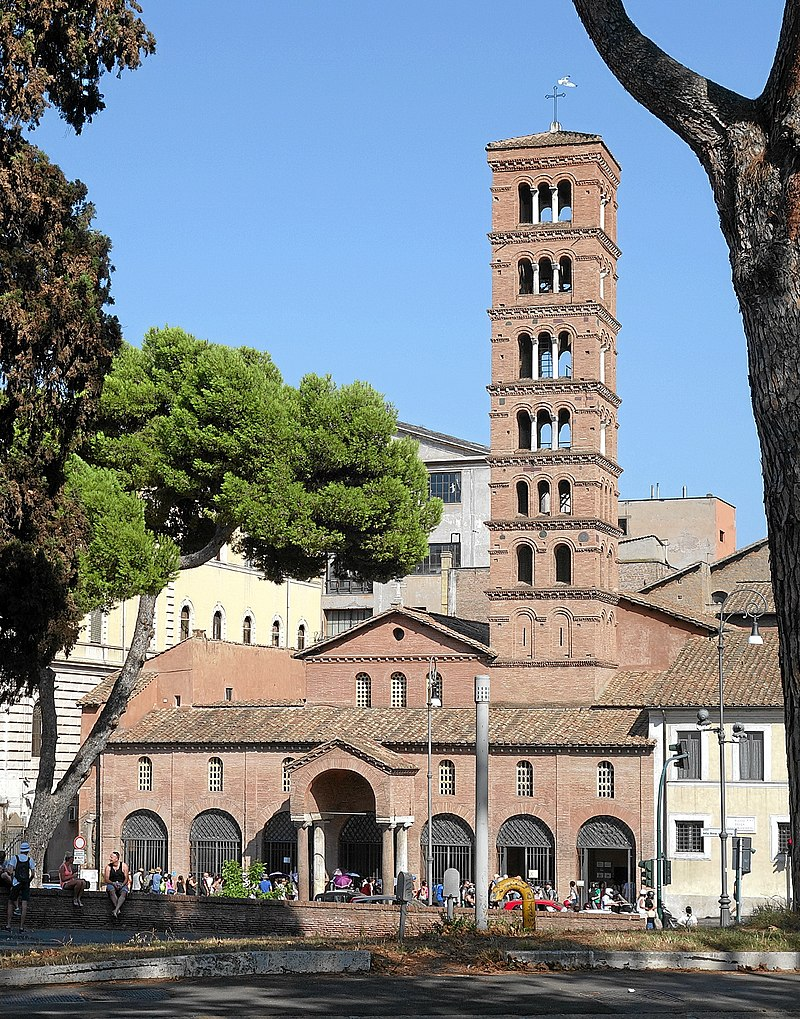
Above: Basilica di Santa Maria in Cosmedin, Ripa, Roma, Italia
The Basilica of Santa Maria in Cosmedin is in an area of Rome along the Tiber River that once housed the Forum Boarium, the ancient cattle market, and a complex of temples and shrines to Hercules.
Archaeologists discovered a platform of ancient tufa under the crypt of the church, which they have tentatively identified as part of the Great Altar of Unconquered Hercules (Latin: Herculis Invicti Ara Maxima), possibly dating from the 6th century BC.
A later building on the site had a colonnaded loggia, probably constructed in the 4th century.
This is thought by some to have been a statio annone, one of the government-run food distribution centers of ancient Rome, but other scholars believe it was one of the buildings dedicated to Hercules.
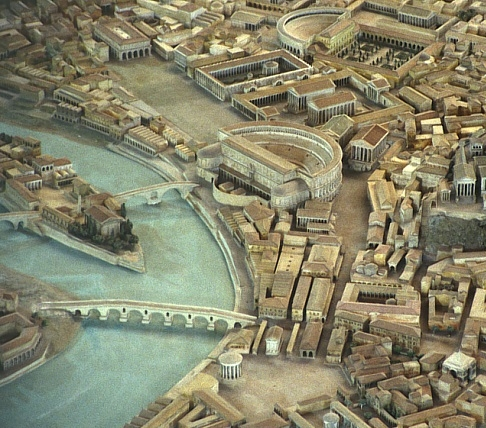
Above: The Forum Boarium and Temple of Hercules Victor scale model of Imperial Rome, Museum of Roman Civilization
In the 6th and early 7th centuries, this area of Rome developed into a Greek quarter (schola graeca), a compound initially populated by Greek, Syrian, and Egyptian merchants and by functionaries of the imperial government in Constantinople during the Byzantine Papacy of 537 – 752, when the Popes were approved by and subject to the Byzantine Emperors.
Several waves of eastern refugees added to the population as they fled from wars and persecution, the encroachment of Islam, and the violence of the Iconoclastic Controversy – two periods (726 – 787 / 814 – 842) in the history of the Byzantine Empire when the use of religious images or icons was opposed by religious and imperial authorities within the Ecumenical Patriarchate (at the time still comprising the Roman-Latin and the Eastern-Orthodox traditions) and the temporal imperial hierarchy – in the Christian East.
The quarter became an important economic sector of the city and was allowed to govern itself with little interference from Roman authorities.

Above: Basilica of San Vitale (b. 547), Ravenna, Italia, combines Western and Byzantine elements.
Around 550, a hall was built on the site, incorporating some of the loggia columns of the previous building in its west and north walls.
This was identified as a diaconia, an early Christian welfare center, where charitable distributions were given to the poor.
The brick masonry of the building was not typical of Rome at this time but was common in Naples (Napoli) in the 6th century, suggesting the work was done by Greek or South Italian builders, perhaps immigrants residing in the schola graeca.
The hall itself was probably a gathering place and place of worship.
Two-story aisles on each side contained chambers on the ground floors, perhaps for the functions of the diaconia, and galleries above with six windows on each side, opening onto the main hall.

Above: Napoli, Italia
Diaconiae were funded by wealthy individuals.
A mid-8th century inscription displayed in the narthex records a gift of extensive properties to the Church’s ministry to the poor by Eustathius (or Eustachius), a Byzantine Duke of Rome who had administered the territory of Ravenna for the papacy.
The same inscription also mentions a donation by a “vir gloriossimus (most noble) Georgios” and his brother, David.
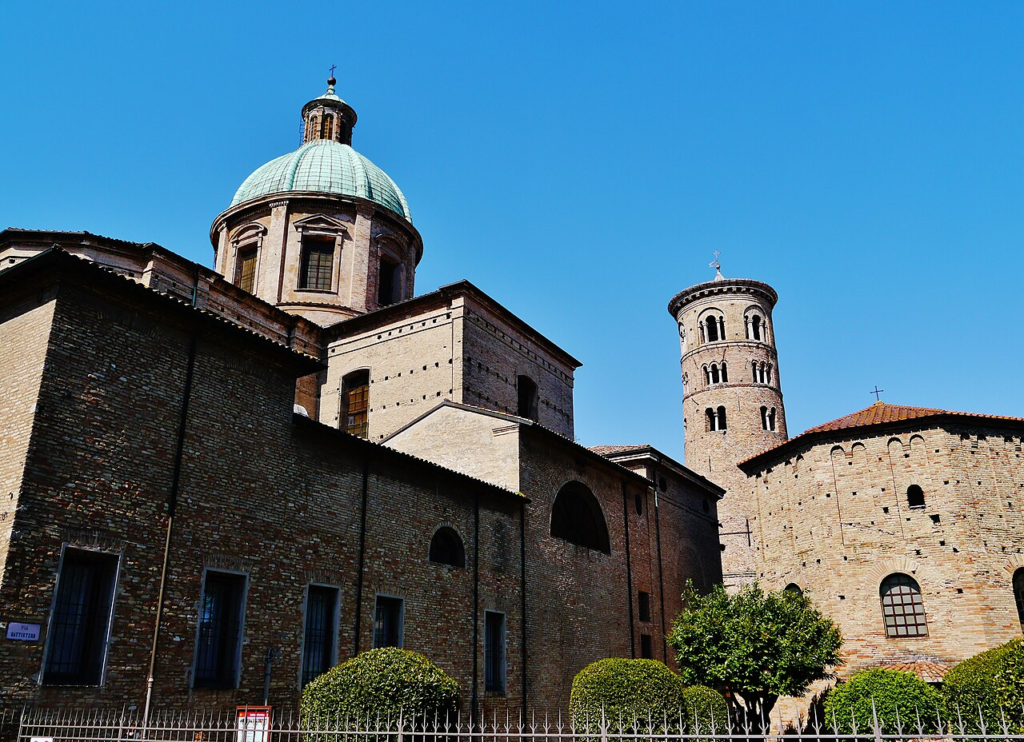
Above: Ravenna Cathedral
Pope Hadrian I (r.772 – 795) rebuilt and extended the diaconia around 780, demolishing a large ruined temple to make way for this construction.
The result was a basilica dedicated to the Virgin Mary, at that time called Santa Maria de Schola Graeca or the ecclesia graecorum (Greek church) because of its location and a community of Greek monks there.

Above: “Charlemagne and the Pope“. The Frankish king Charlemagne (748 – 814) was a devout Catholic who maintained a close relationship with the papacy throughout his life.
In 772, when Pope Adrian I (700 – 795) was threatened by invaders, the King rushed to Rome to provide assistance.
Shown here, the Pope asks Charlemagne for help at a meeting near Rome.
The Church was built with a nave and two aisles, but it culminated at the east end with three full apses, an eastern feature unusual for a Roman church, but one that had reached the West by the sixth century.
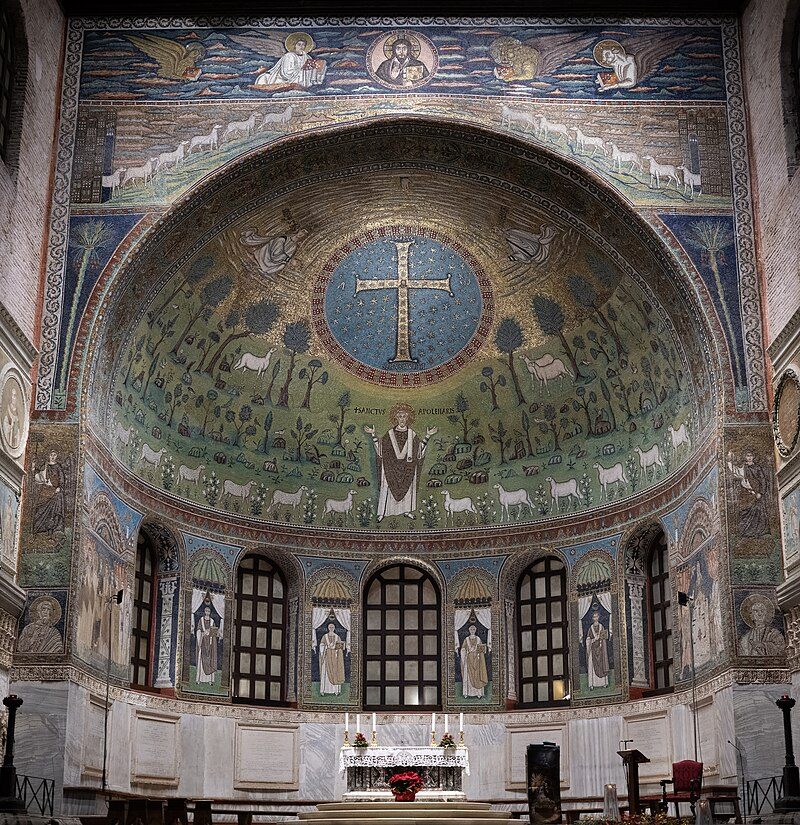
Above: An example of an apse – a semicircular recess covered with a hemispherical vault or semi-dome – Basilica of Sant’Apollinare, Classe, Ravenna, Italia
In the rebuilding, the tall columns from the structure that preceded the diaconia were retained and were visible (and still are) in the entrance wall and embedded in the side walls at the western end of the Church.
In the center apse was an altar made from a Roman red granite basin, and the floor was a simple opus sectile pattern.
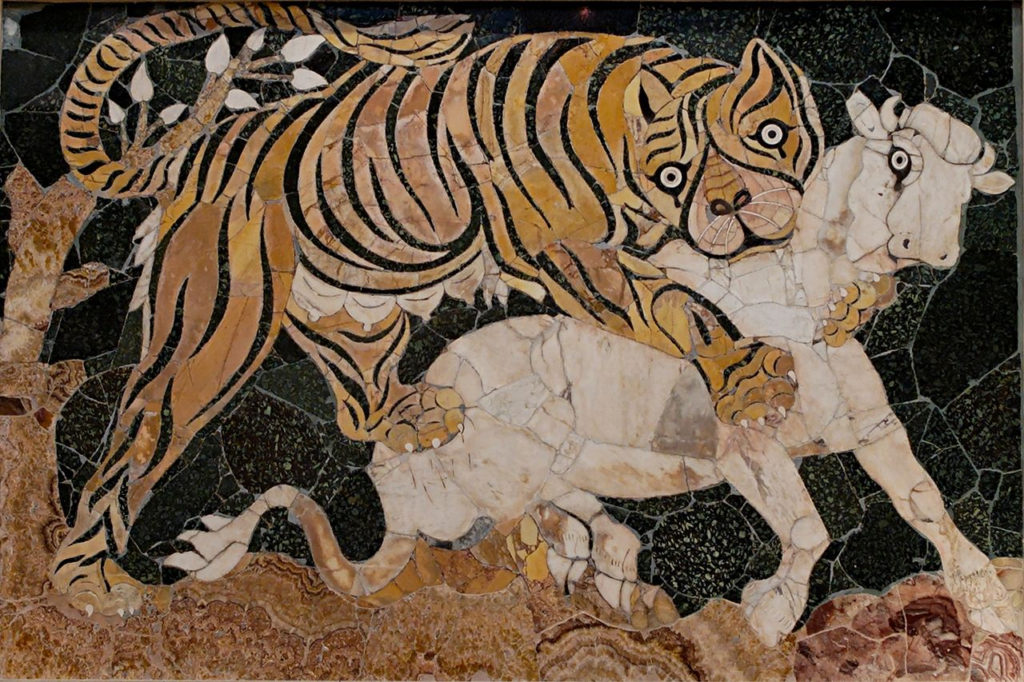
Above: An example of opus sectile – a form of pietra dura (the inlay technique of using cut and fitted, highly polished colored stones to create images) popularized in the ancient and medieval Roman world where materials were cut and inlaid into walls and floors to make a picture or pattern.
Common materials were marble, mother of pearl, and glass.
The materials were cut in thin pieces, polished, then trimmed further according to a chosen pattern. – Basilica of Junius Bassus, Esquiline Hill, Roma, Italia
The nave was separated from the aisles by alternating groups of columns and piers.
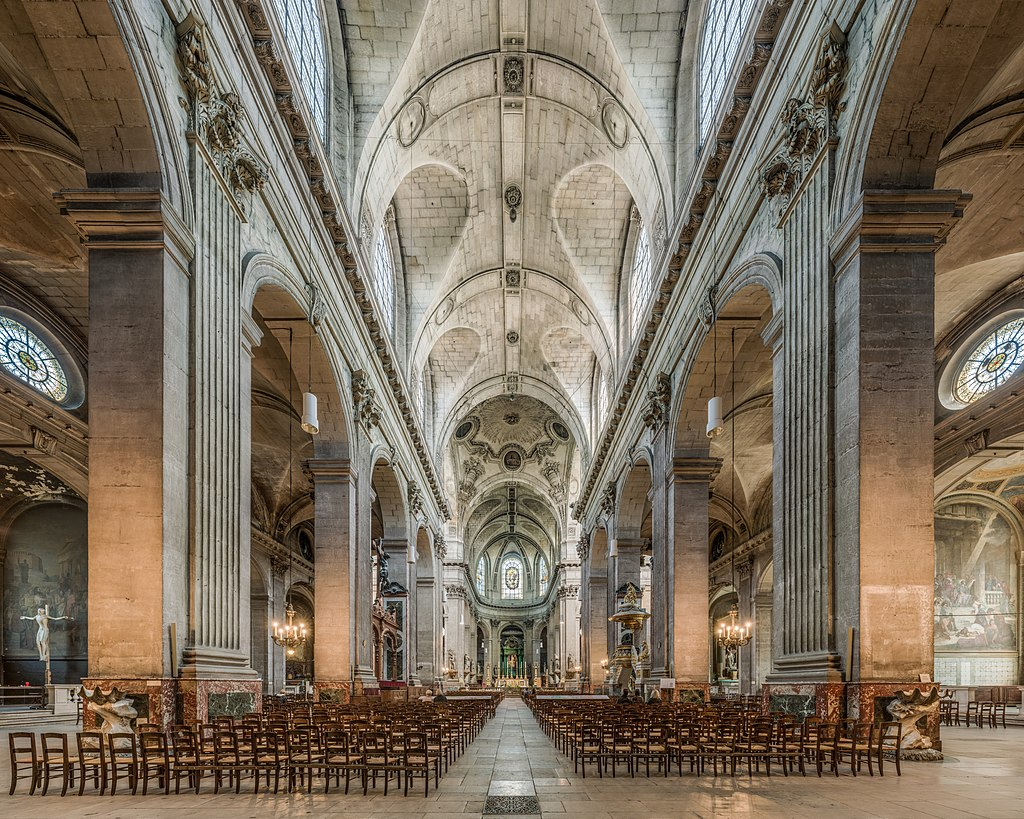
Above: An example of a nave – the central part of a Church, stretching from the (normally western) main entrance or rear wall, to the transepts (the hall that forms a cross), or in a church without transepts, to the chancel (the space around the altar) – Saint Sulpice Church, Paris, France
The unmatched columns were spolia (spoils) from older Roman buildings.
Some scholars believe that the columns supported a trabeation (lintel) at this time and not arches.

Above: An example of a trabeation (lintel), Stonehenge, England
On the upper level of the outer walls, rows of clerestory windows repeated the motif of the arches in the diaconia that had opened into galleries.

An example of a clerestory – the level between the two green roofs, reinforced here by flying buttresses – Church of St. Nicholas, Straslund, Deutschland (Germany)
By the 9th century, the Church was known as Santa Maria in Cosmedin, probably the Latinization of κοσμίδιον (kosmidion), derived from the Greek word κόσμος, meaning “ornament, decoration“.
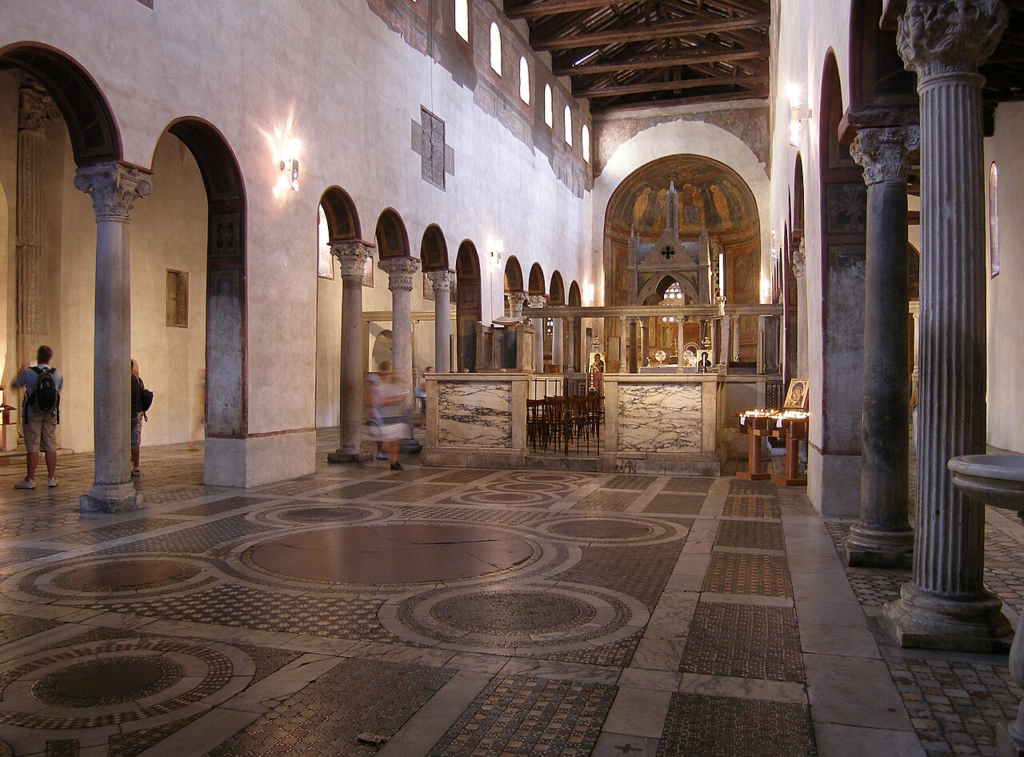
Above: The interior of Santa Maria in Cosmedin, restored to the appearance of the 8th-century Church
At the same time, Pope Hadrian had a crypt dug from the volcanic tufa slab under the east end of the Church, possibly the podium of the Great Altar to Hercules.
It took the form of a miniature basilica with a small apse and altar and a nave and two aisles separated by columns, probably based on a prototype under Old Saint Peter’s Basilica.
The six spolia columns were too tall for the crypt and had to be sunk several feet into the floor.
Carved crosses on the columns may have been inset with bronze.
On the side walls were niches containing shelves for the display of relics given by Pope Hadrian to the Church.
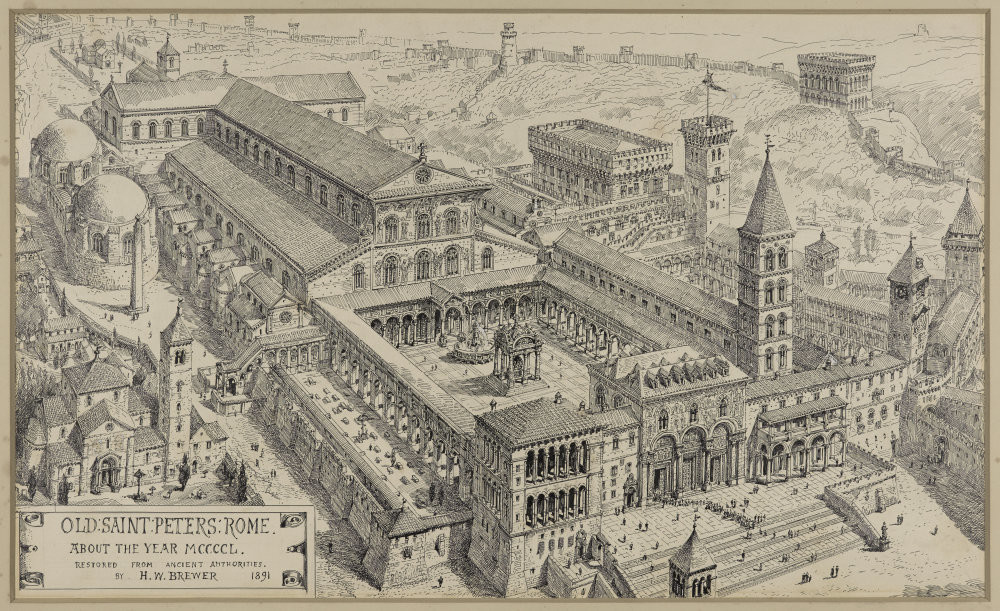
A sacristy and an oratory later dedicated to St. Nicholas of Bari, as well as a series of rooms for a papal residence, were added on the south side of the Church by Pope Nicholas I (r. 858 – 867).

Above: An example of a sacristy – a vestry or preparation room, is a room in Christian churches for the keeping of vestments and other church furnishings, sacred vessels, and parish records – St. Martins Church, Gennep, Netherlands

Above: An example of an oratory – a place set aside for divine worship – Cathedral Church of Saint Matthew, Dallas, Texas, USA

Above: Nicholas of Bari (270 – 343)(aka Santa Claus)

Above: Stained glass image of Pope Nicholas I (800 – 867)
This area was burned in the sack of Rome by the Norman troops of Robert Guiscard in 1084.
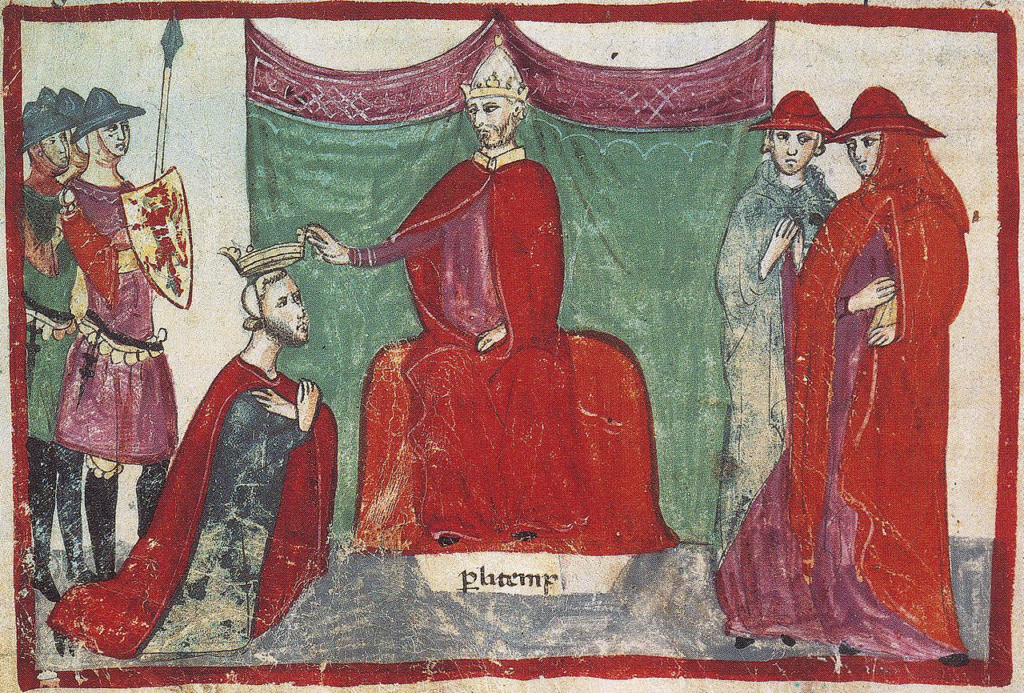
Above: Robert Guiscard (1015 – 1085) is claimed by Pope Nicholas II (990 – 1061) as a Duke
In the early 12th century, Pope Gelasius II (r. 1118 – 1119), who had served as cardinal-deacon of Santa Maria in Cosmedin, and his successor, Pope Callixtus II (r. 1119 – 1124), undertook a renovation of the church, probably in 1123.

Above: Pope Gelasius II (1060 – 1119)

Above: Pope Calixtus II (1065 – 1124)
Although the plan remained the same, many changes were carried out:
The galleries at the west end, remaining from the diaconia, were walled up.
Frescoes were painted in the nave and apses.
A new floor was laid in the nave.
Many new church furnishings were added, including a ciborium, Bishop’s throne, Paschal candlestick, and a schola cantorum, a walled enclosure at the front of the nave for clergy and monks, containing the pulpit and lectern.
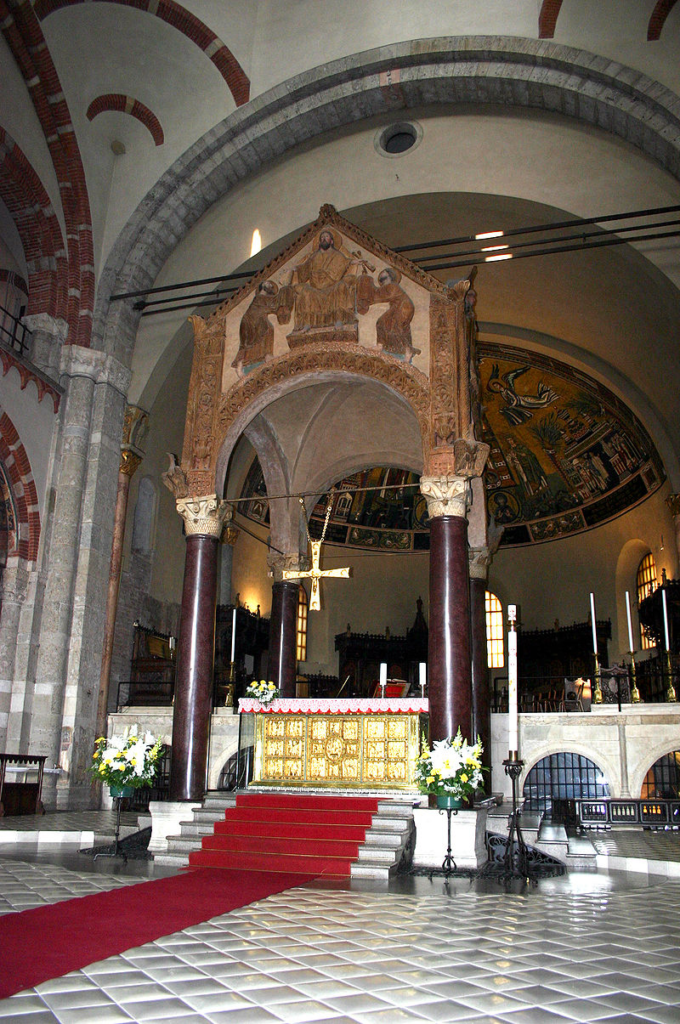
Above: An example of a ciborium – a canopy or covering supported by columns, freestanding in the sanctuary, that stands over and covers the altar in a Church – Sant’Ambrogio, Milano, Italia
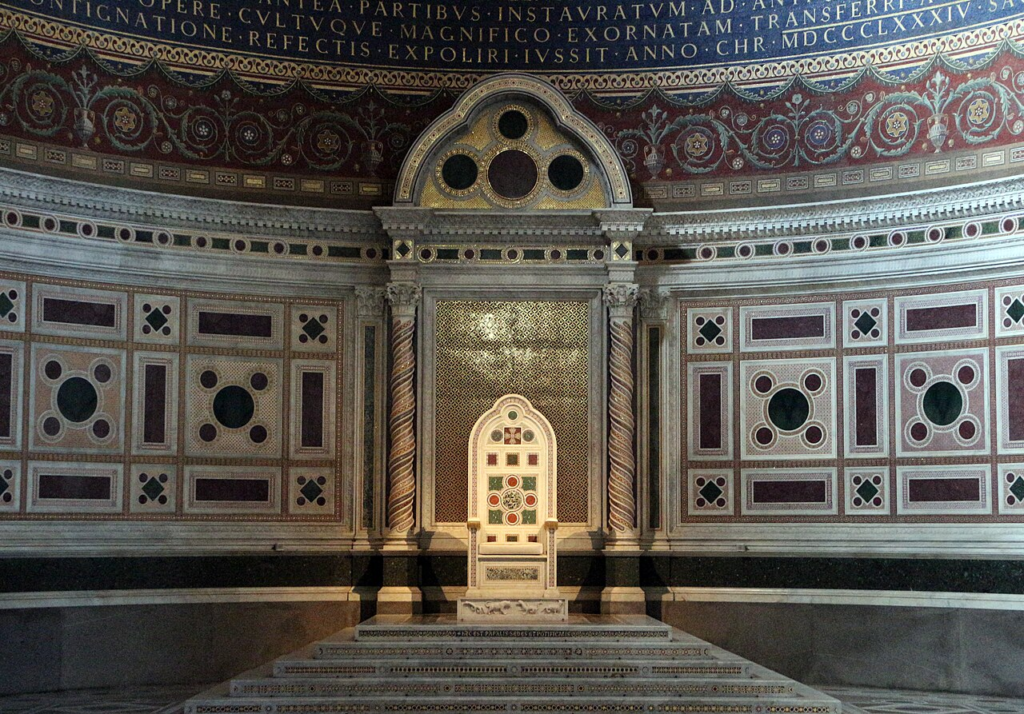
Above: An example of a Bishop’s throne (cathedra), Rome Cathedral
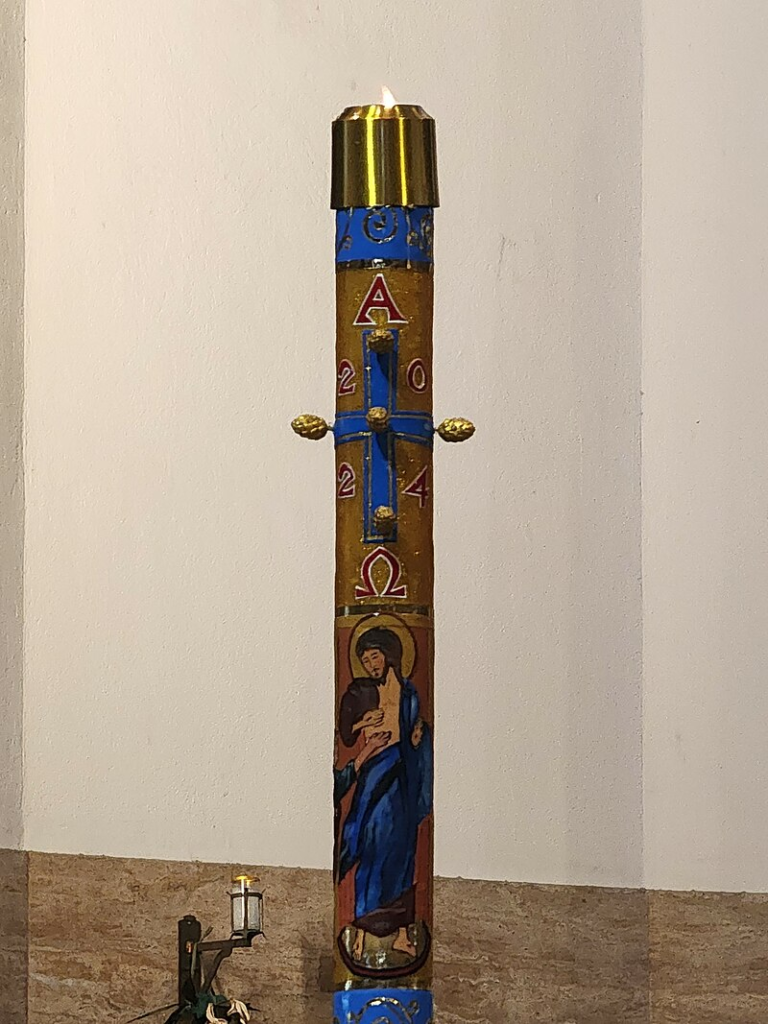
Above: An example of a Paschal candle, Manila Cathedral, Philippines
At this time, the trabeation supposed by some scholars to have carried by the columns in the nave would have been changed to arches.
A campanile was then built into the right side of the church and, finally, a two-story narthex (the lower floor was open to the street) and a portico were added.
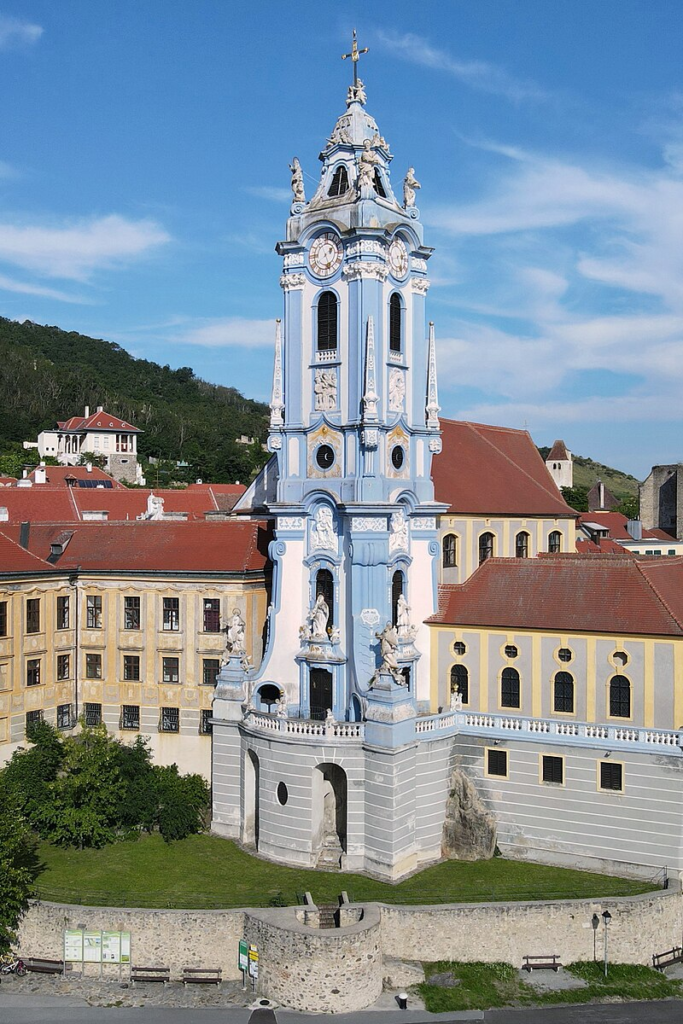
Above: An example of a campanile (bell tower), Dürnstein, Österreich (Austria)

Above: An example of a portico (a porch leading to the entrance of a building, or extended as a colonnade, with a roof structure over a walkway, supported by columns or enclosed by walls), Croome Court, Croomes d’Abitot, England
Callixtus II reconsecrated the church in May of 1123.
A number of inscriptions state that the renovations were paid for by Alfanus, a wealthy layman or cleric who served as papal chamberlain (Latin: camerarius) to Callixtus.
On the Bishop’s throne is carved “ALFANUS FIER TIBI FECIT VIRGO MARIA” (“Alfanus had this made for you, Virgin Mary“).
The open narthex of the renovated church contains the tomb of Alfanus, partly decorated with a damaged mosaic depicting the Virgin Mary between Popes Gelasius II and Callixtus II.
On the walls are several panels of inscriptions recording monetary gifts to the Church.
The inscriptions found in Santa Maria in Cosmedin, a valuable source for the history of the Basilica, have been collected and published by Vincenzo Forcella.
There are three doors leading from the new narthex into the Church.
The center door is created of marble elements from older Roman buildings, with medieval carvings signed by a “Giovanni of Venice” (IOHANNIS DE VENETIA ME FECIT).
Scholars differ on whether it is from the 11th or 12th century, so it is possible this was the door to the Church before the narthex was added.
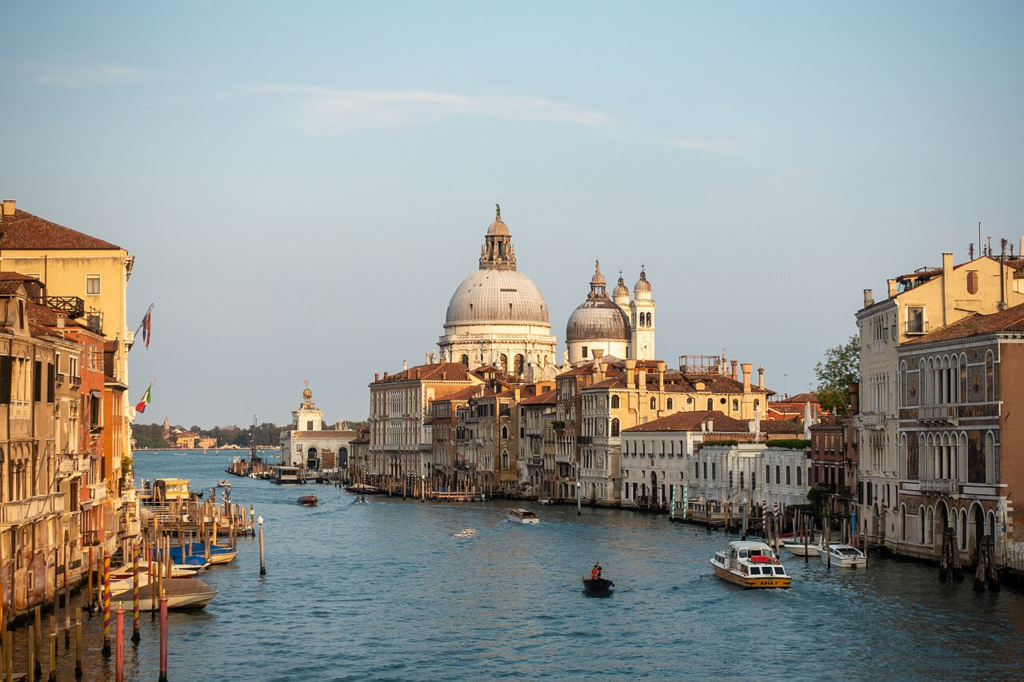
Above: Santa Maria della Salute, Canal Grande, Venezia, Italia
The nave floor in the renovated church was a creation of the Cosmati family, Roman architects, sculptors, and decorators, who specialized in pavements formed of slabs of marble and semi-precious stones set in gold and colored mosaics, called opus Alexandrinum.
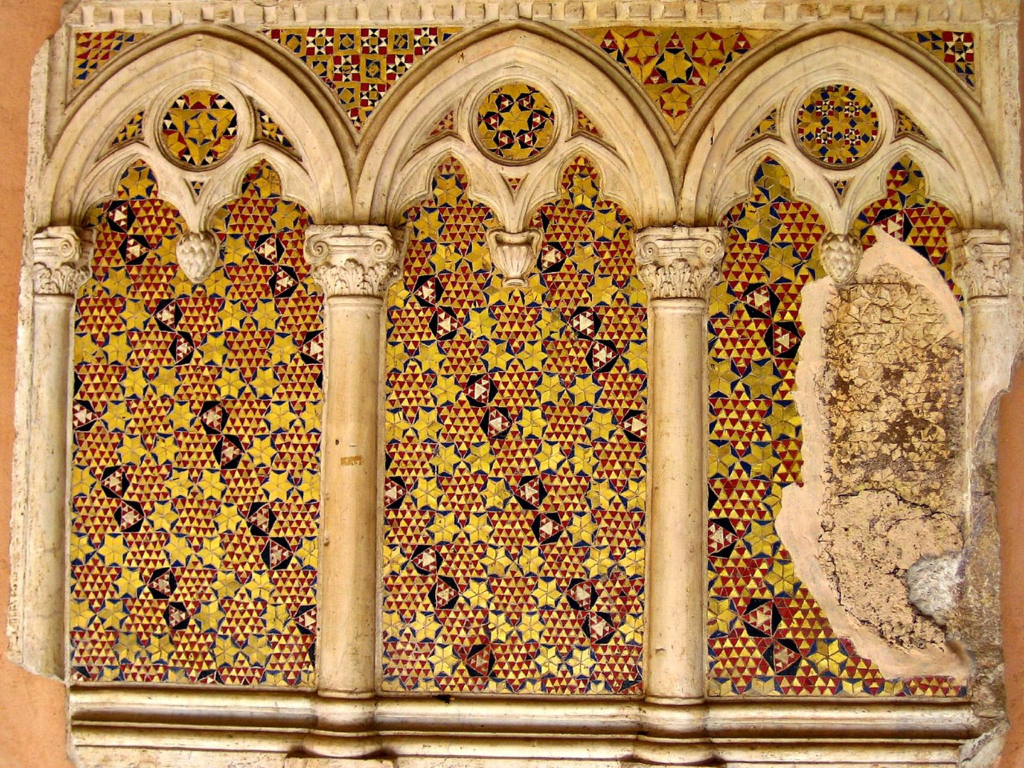
Above: An example of a Cosmatesque – a style of geometric decorative inlay stonework typical of the architecture of Medieval Italy, and especially of Rome and its surroundings. It was used most extensively for the decoration of church floors, but was also used to decorate church walls, pulpits, and Bishop’s thrones. The name derives from the Cosmati, the leading family workshop of craftsmen in Rome who created such geometrical marble decorations – screen, Basilica di San Giovanni, Laterano, Roma, Italia
Santa Maria in Cosmedin is thought to have a particularly beautiful floor with a large central disc of porphyry, a costly purple stone highly prized by Roman emperors.
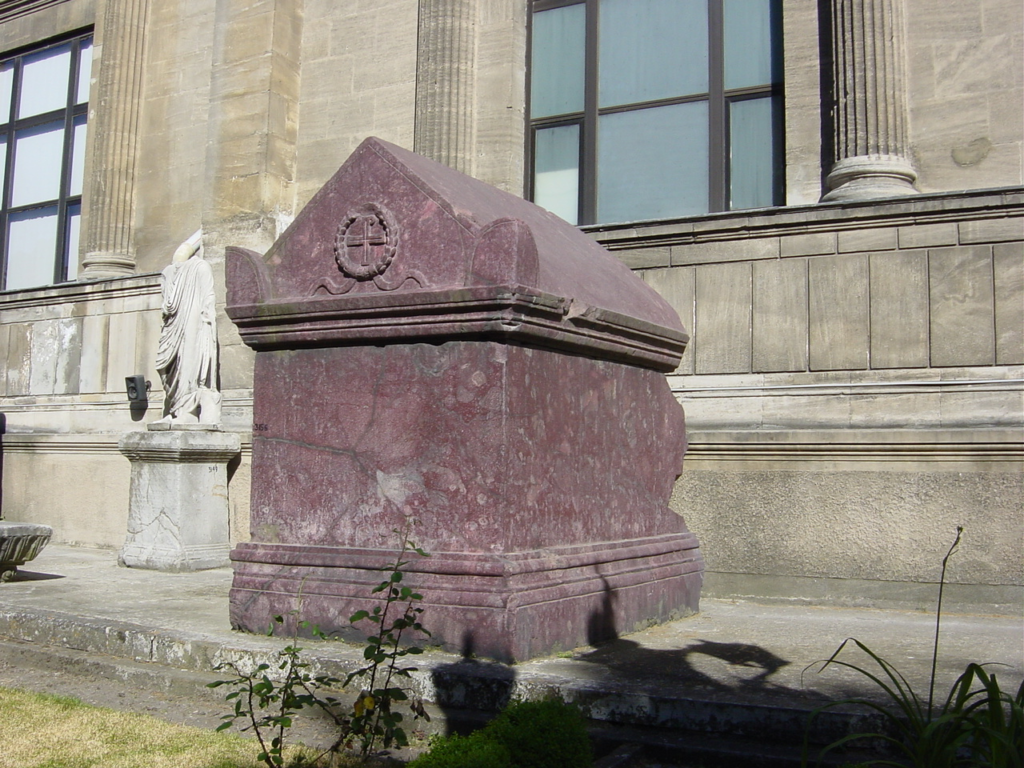
Above: Byzantine imperial porphyry sarcophagus, Istanbul Archaeological Museum, Türkiye
The Cosmati also provided and decorated the Bishop’s throne and the pulpits and candlestick inside the schola cantorum.
The current ciborium, the canopy over the altar, was designed by Deodato of the Cosmati.
It was installed in 1294 and is in a Gothic style not common in Rome.
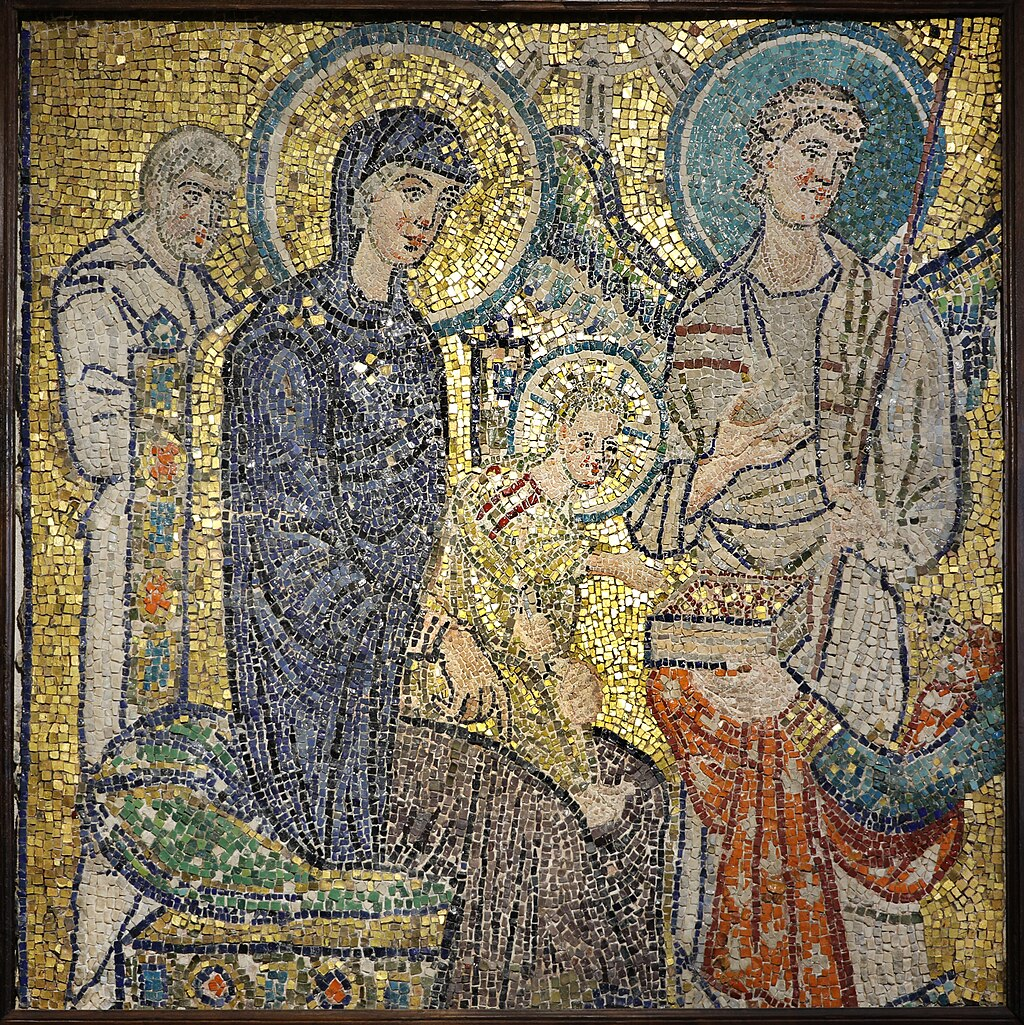
Above: Mosaic fragment of an Adoration of the Magi (Epiphany) (706), formerly in the chapel of Pope John VII in Old St. Peter’s Basilica, Santa Maria in Cosmedin, Roma, Italia
At the time of Pope Callixtus’s renovation, an extensive fresco cycle was painted on the nave walls and the arch leading to the altar area; the decoration probably extended to the three apses as well, but no traces remain in those areas.
All the paintings were whitewashed about 1660 and were badly damaged.
Only the uppermost row between the clerestory windows survives intact and depicts scenes from the lives of the prophets Daniel and Ezekiel, warning against the evils of idolatry.
The subjects are very unusual in medieval art.
The images are faint but were photographed and sketched during the 19th century restoration.
There are enough fragments to suggest that there were scenes from the New Testament on two lower rows of the nave wall and that the scene over the arch into the central apse showed Jesus enthroned amid a host of angels.
Running along the very top of the nave wall is an undated frieze in which are painted fauns’ heads and other ornaments in ancient Roman style.
The frescoes now in the three apses were painted in 1899 but based on styles and themes of 12th century church decoration.

Above: Remains of frescoes on the left side of the nave. The paintings between the windows are scenes from the lives of Daniel and Ezekiel.
The campanile of Santa Maria in Cosmedin is a beautiful seven-story bell tower that has stood without repair or restoration since its 12th century construction.
Drawings and engravings from later centuries show a superstructure above and behind the portico and narthex of the church, consisting of a wall with a small rose window.
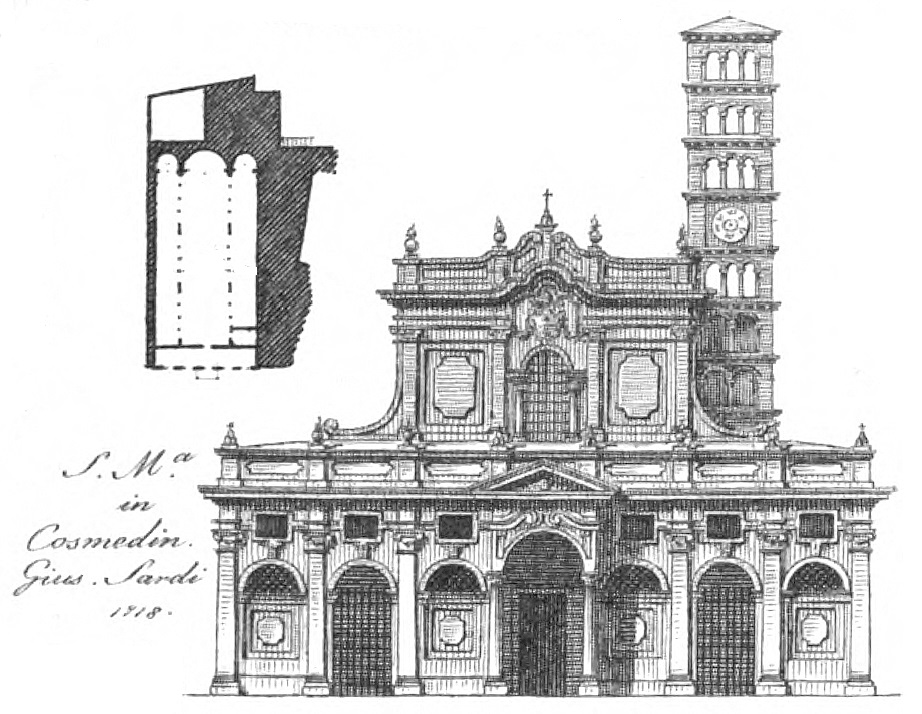
Pope Eugenius IV (r. 1431 – 1447) gave Santa Maria in Cosmedin in 1435 to the Benedictine community of San Paolo.
After the monks’ departure in 1513, the Church began to fall into disrepair.
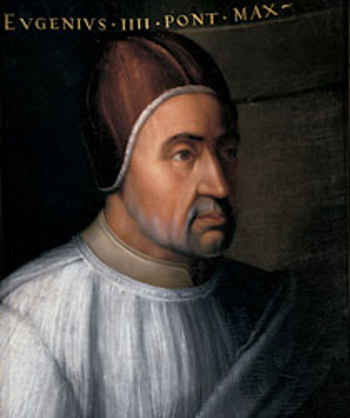
Above: Pope Eugene IV (1383 – 1447)
In 1718, Cardinal Annibale Albani commissioned a new stucco facade and other refurbishments designed in the late Baroque style of the time by Giuseppe Sardi.
This facade and all of the post-medieval changes to the church inside and out were removed in a restoration of 1894–99 by architect Giovanni Battista Giovenale.
The facade was returned to its early 12th century form, with a rebuilt portico and open narthex, and the interior was restored to its 8th century design but with the retention of its 12th century decoration and furnishings.
Only two sections of the interior – the Chapel of the Crucifix in the left apse and the baptistery – retain some furnishings from 1727.
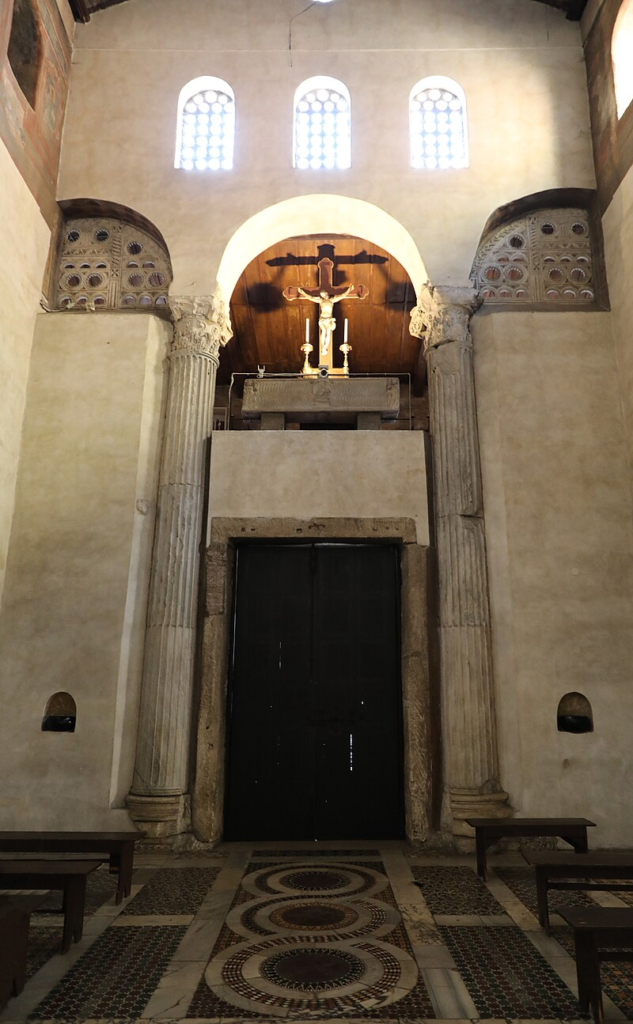
Santa Maria in Cosmedin, Roma, Italia
Santa Maria in Cosmedin was the titular Church not only of Pope Gelasius II but also of Celestine III (r 1191 – 1198) and Antipope Benedict XIII (r. 1394 – 1423).

Above: Pope Celestine III (1105 – 1198)

Above: Antipope Benedict XIII (1328 – 1423)
Among the former cardinal-priests of the Church was Reginald Pole (1500 – 1558), the last Roman Catholic Archbishop of Canterbury.
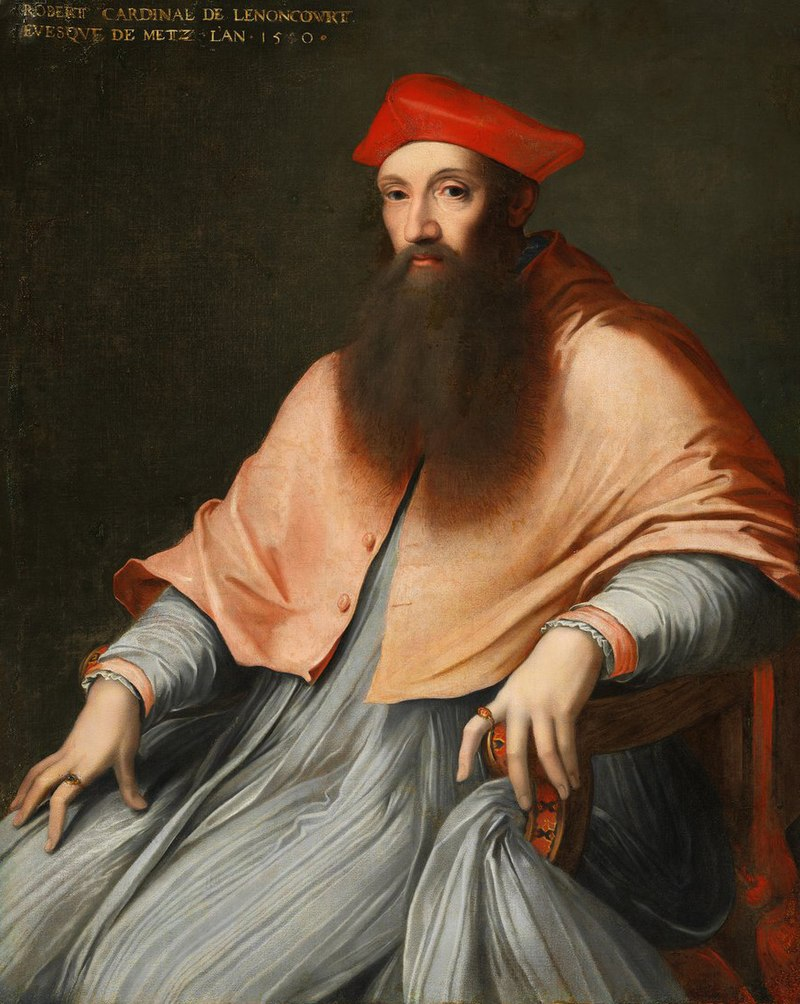
Above: Cardinal Reginald Pole (1500 – 1558)
In the open narthex of the church, on the north side, can be found the Bocca della Verità (Mouth of Truth), a massive ancient Roman marble mask thought to be a drain covering depicting the Greco-Roman god Oceanus.
It was moved to the Church in the 12th century.
A medieval legend states that if a person places a hand inside the mouth (“bocca“) and then swears falsely, the mouth will close and sever the hand.
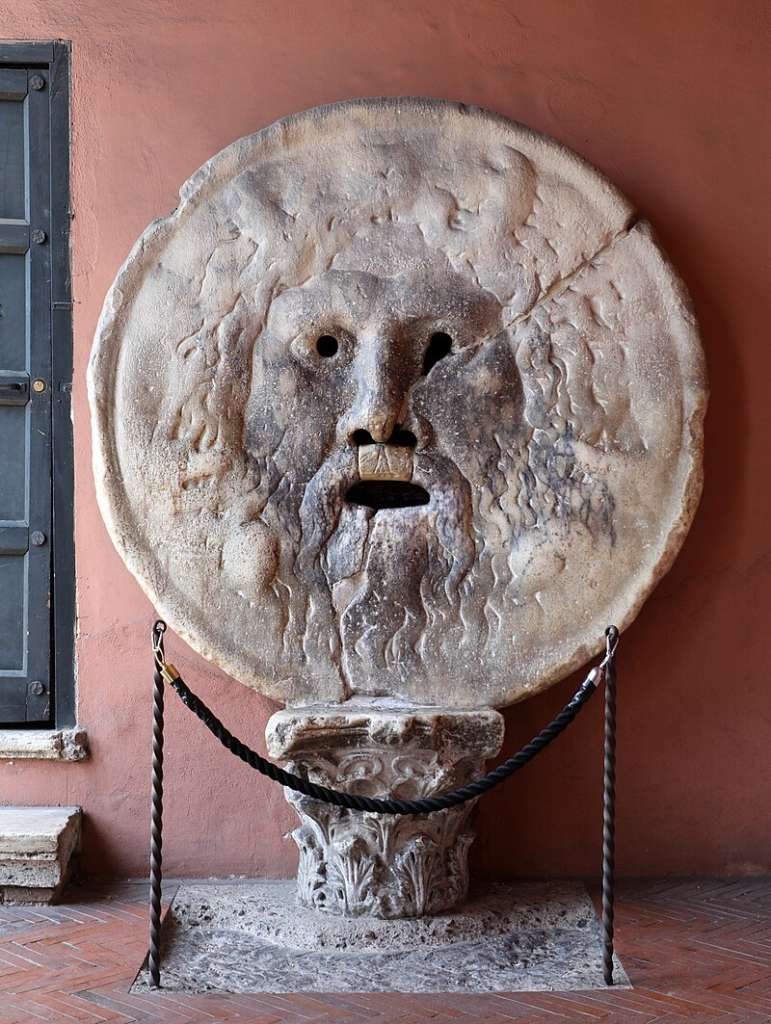
Above: La Bocca della Verità, the “mouth of truth“, Santa Maria in Cosmedin, Roma, Italia
The sacristy houses an important mosaic fragment of an Adoration of the Magi from 707.
It was once in the oratory of Pope John VII in Old Saint Peter’s Basilica.
It was donated to the church in 1639 by order of Pope Urban VIII.
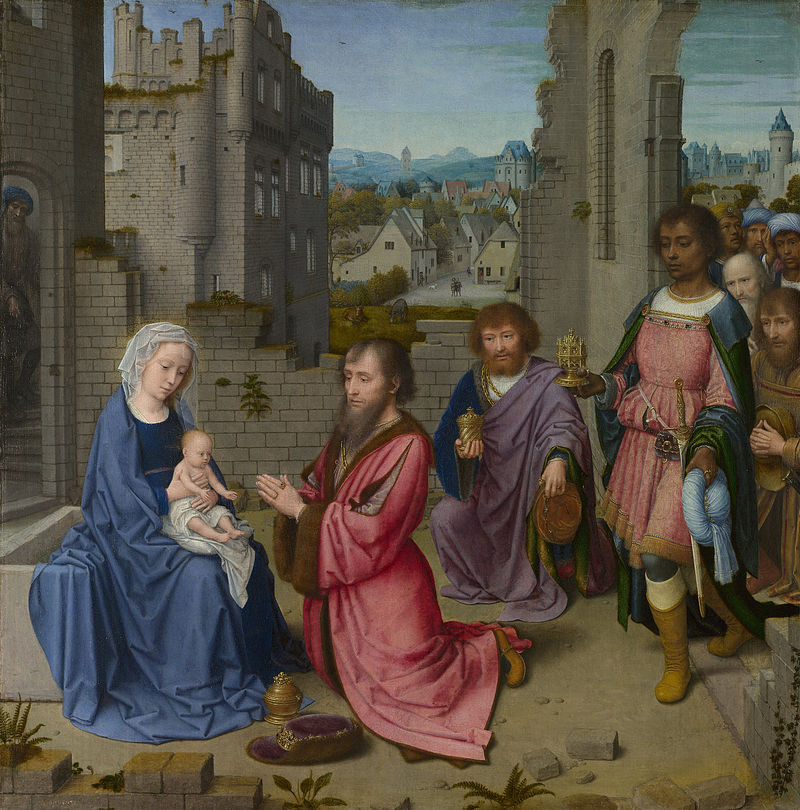
Above: Adoration of the Magi, Gerald David (1515)
Among the relics of several dozen saints in Santa Maria in Cosmedin, in a side altar on the north side is a flower-crowned skull alleged to be Saint Valentine, a 3rd century Roman cleric martyred on February 14.
There are, however, two other Valentines with commemorations on that day, so the specific identity is not certain.

Above: Reliquary of the alleged skull of St. Valentine, Santa Maria in Cosmedin, Roma, Italia
A scene from the 1953 romantic comedy Roman Holiday was filmed in Santa Maria in Cosmedin.
In the scene, Joe (played by Gregory Peck) shocks Princess Ann (played by Audrey Hepburn) by pretending to lose his hand in the Bocca della Verità.

Saint Valentine (Italian: San Valentino; Latin: Valentinus) was a 3rd-century Roman saint, commemorated in Western Christianity on February 14 and in Eastern Orthodoxy on July 6.
From the High Middle Ages, his feast day has been associated with a tradition of courtly love.
He is also a patron saint of Terni, epilepsy, and beekeepers.
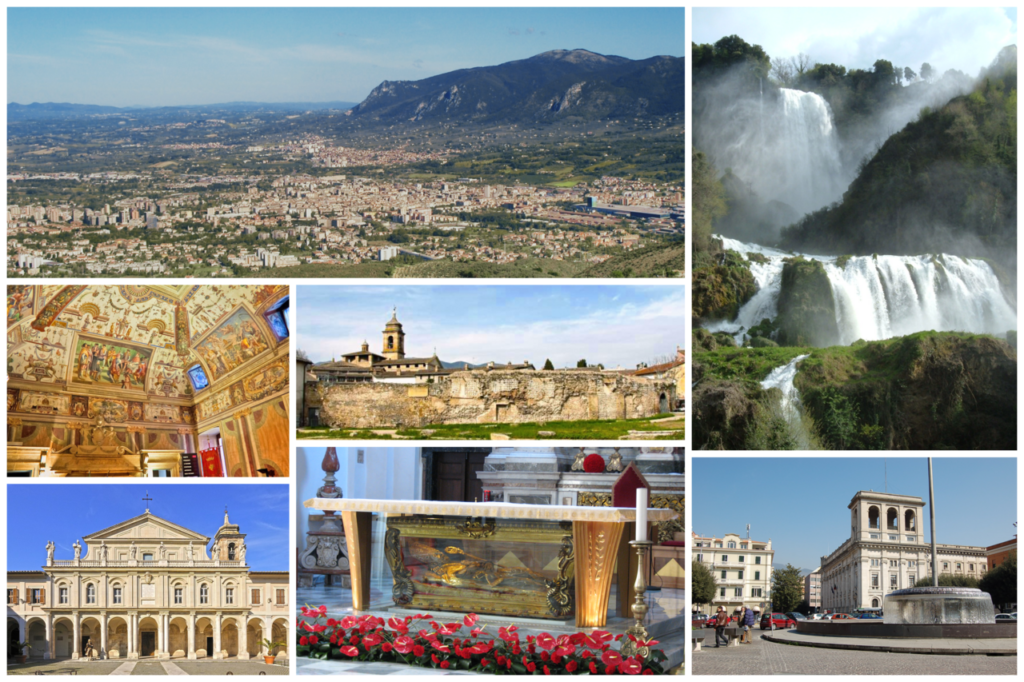
Above: Images of Terni, Italia

Above: Saint Valentine healing an epileptic
Saint Valentine was a clergyman – either a priest or a Bishop – in the Roman Empire who ministered to persecuted Christians.
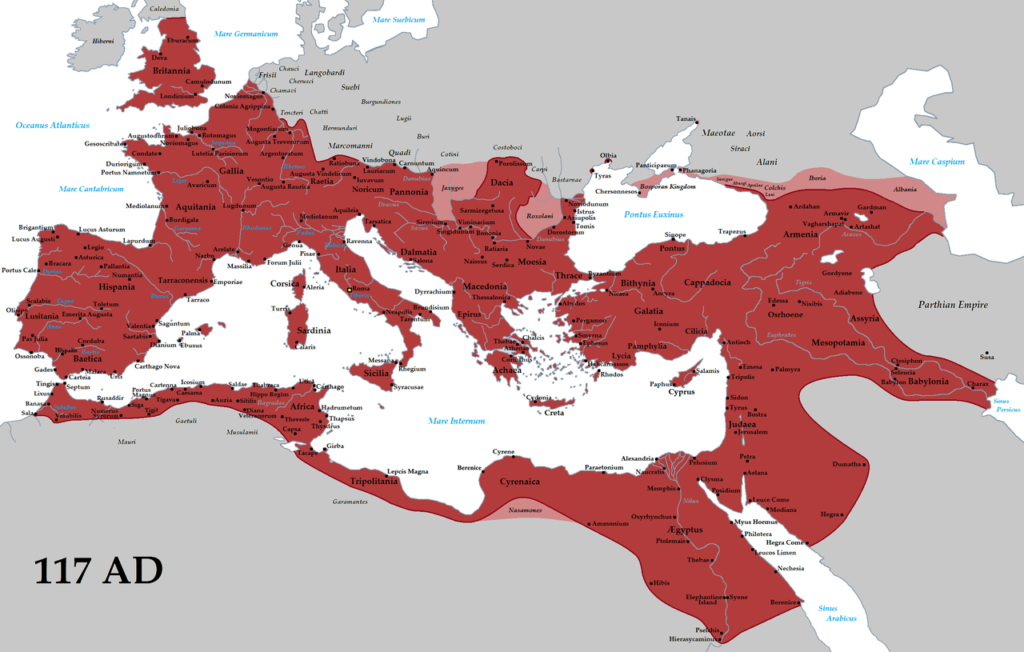
Above: The Roman Empire (27 BC – 395) at its greatest extent
He was martyred and his body buried on the Via Flaminia on February 14, which has been observed as the Feast of Saint Valentine (Saint Valentine’s Day) since at least the 8th century.

Above: Arch of San Damiano, Via Flaminia, Carsulae, Italia
The Via Flaminia (‘Flaminian Way‘) was an ancient Roman road leading from Rome over the Apennine Mountains to Ariminum (Rimini) on the coast of the Adriatic Sea, and due to the ruggedness of the mountains was the major option the Romans had for travel between Etruria, Latium, Campania, and the Po Valley.
The section running through northern Rome is where Constantine the Great, allegedly, had his famous vision of the Chi Rho, leading to his conversion to Christianity and the Christianization of the Roman Empire.
Today the same route, still called by the same name for much of its distance, is paralleled or overlaid by Strada Statale (SS) 3, also called Strada Regionale (SR) 3 in Lazio and Umbria, and Strada Provinciale (SP) 3 in Marche.
It leaves Rome, goes up the Val Tevere (“Valley of the Tiber“) and into the mountains at Castello delle Formiche, ascends to Gualdo Tadino, continuing over the divide at Scheggia Pass, 575 m (1,886 ft) to Cagli.
From there it descends the eastern slope waterways between the Tuscan-Emilian Apennines and the Umbrian Apennines to Fano on the coast and goes north, parallel to Highway A14 to Rimini.
This route, once convenient to Roman citizens and other travelers, is now congested by heavy traffic between north Italy and the capital at Rome.
It remains a country road, while the traffic crosses by railway and autostrada through dozens of tunnels between Firenze and Bologna, a shorter, more direct route under the ridges and nearly inaccessible passes.
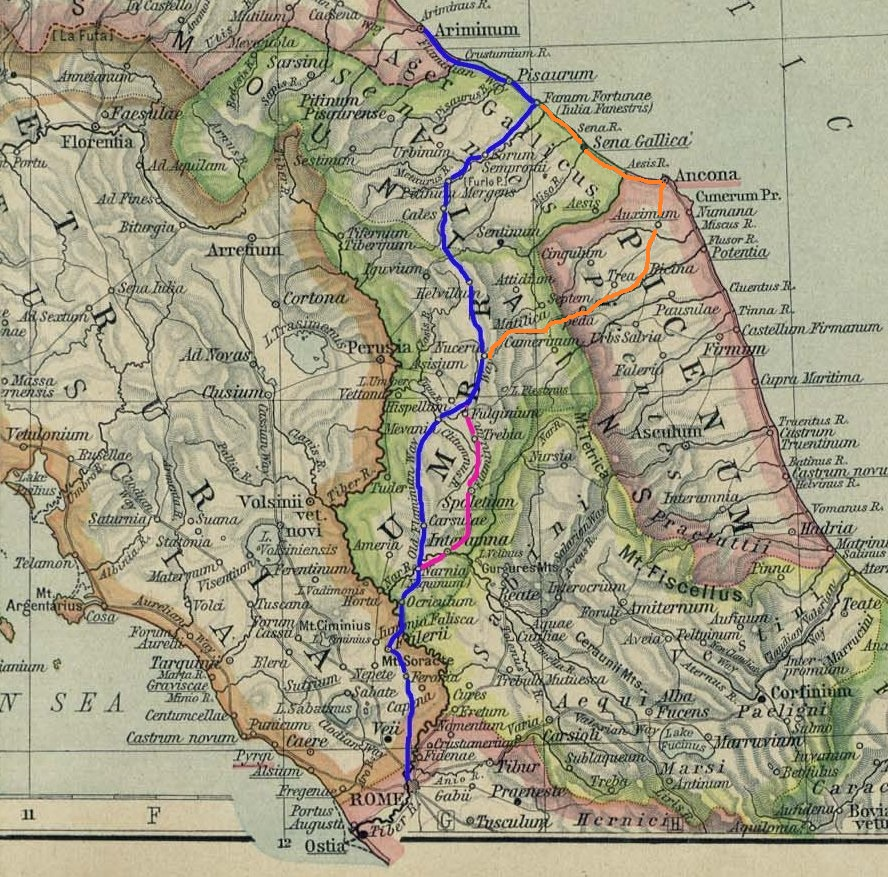
Above: Route of the Via Flaminia; the purple route indicates the Via Flaminia Nova. The orange route indicates the variant that crosses the central part of the Marches and reaches the Adriatic in Ancona.
Relics of him were kept in the Church and Catacombs of San Valentino in Rome, which remained an important pilgrim site throughout the Middle Ages until the relics of St. Valentine were transferred to the Church of Santa Prassede during the pontificate of Nicholas IV.
His skull, crowned with flowers, is exhibited in the Basilica of Santa Maria in Cosmedin, Rome.

Above: Fresco, Catacombi di San Valentino, Roma, Italia
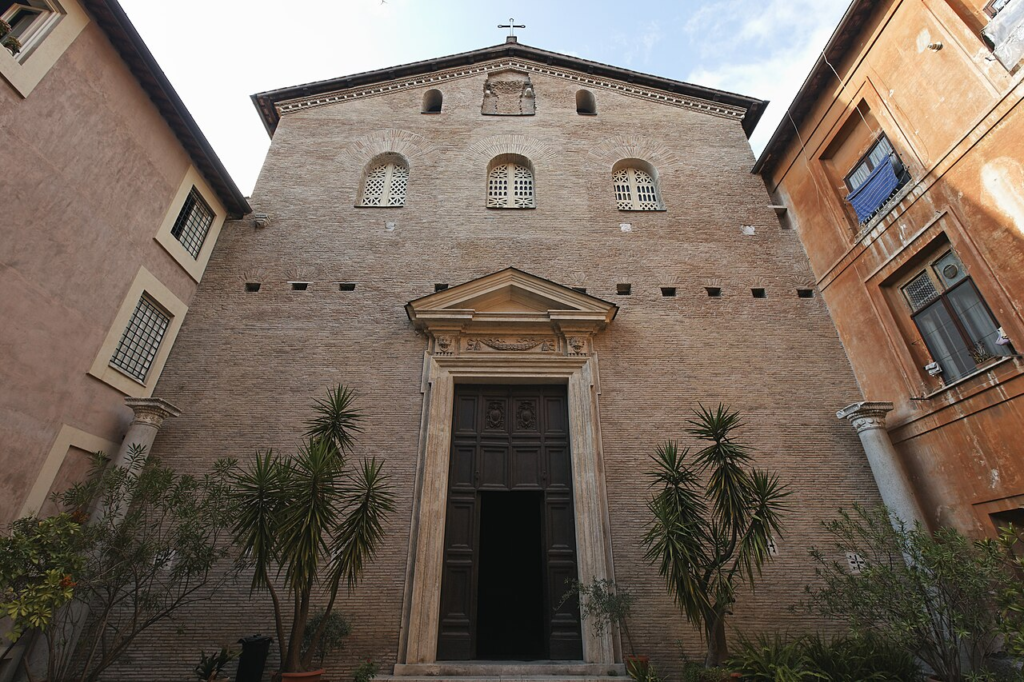
Above: Basilica di Santa Prassede all’Esquillino, Roma, Italia
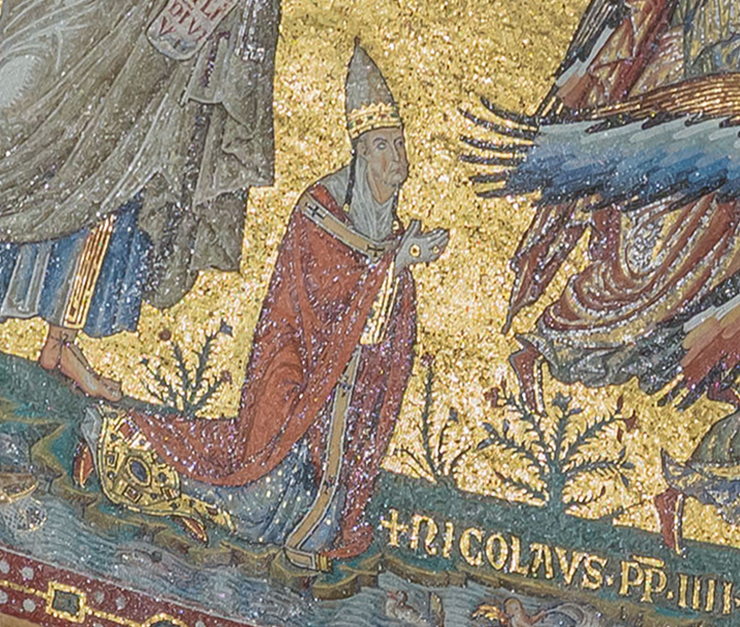
Above: Pope Nicholas IV (1227 – 1292)
Other relics of him are in Whitefriar Street Carmelite Church, Dublin, Ireland, a popular place of pilgrimage, especially on Saint Valentine’s Day, for those seeking love.
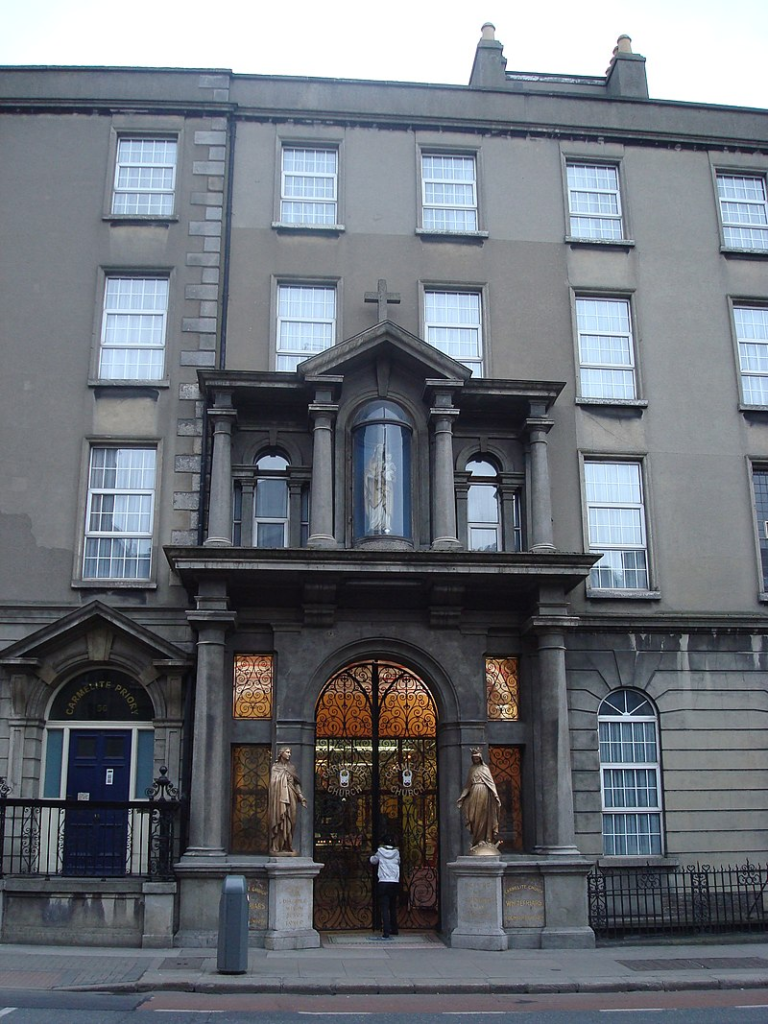
Above: Whitefriar Street Carmelite Church, Dublin, Ireland
At least two different Saint Valentines are mentioned in the early martyrologies.
For Saint Valentine of Rome, along with Saint Valentine of Terni, “abstracts of the acts of the two saints were in nearly every church and monastery of Europe“, according to Professor Jack B. Oruch of the University of Kansas.

Above: Seal of the University of Kansas, Lawrence, Kansas, USA
Saint Valentine does not occur in the earliest list of Roman martyrs, the Chronography of 354, although the patron of the Chronography‘s compilation was a wealthy Roman Christian named Valentinus.
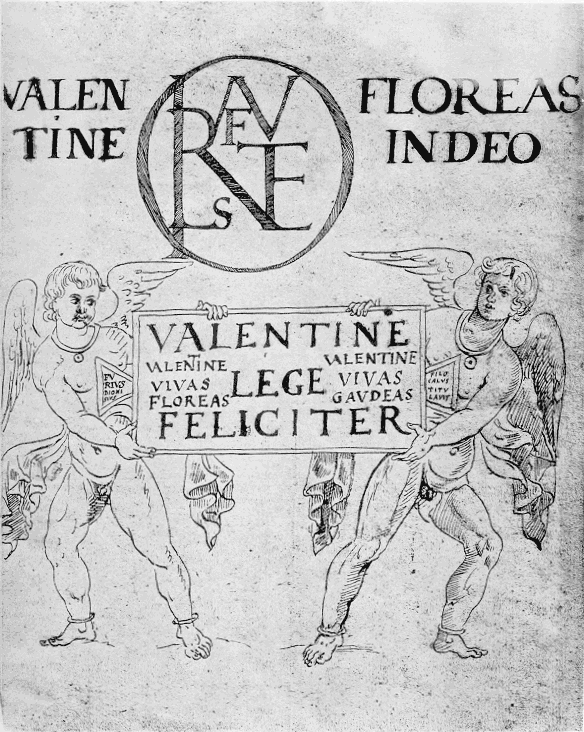
Above: The title page and Dedication from the Barberini MS. The texts read: “Valentinus, may you flourish in God” (top), “Furius Dionysius Filocalus illustrated this work” (in triangles), “Valentinus, enjoy reading this” (main in placard), on the left “Valentinus, may you live long and flourish“, on the right “Valentinus, may you live long and rejoice“.
There is a reference to his feast day on 14 February in one of the 9th century copies of the Martyrologium Hieronymianum, which may have been compiled originally between 460 and 544 from earlier local sources, but the entry may be much later.

Above: A page from an early 9th-century copy of the Martyrologium Hieronymianum made at the Abbey of Lorsch, Deutschland
The widespread modern legend that the feast of St. Valentine on February 14 was first established in 496 by Pope Gelasius I, who included Valentine among all those “whose names are justly reverenced among men, but whose acts are known only to God” is in fact based upon a statement in the Gelasian Decree which mentions St George but not St Valentine, and is not in fact by Gelasius.
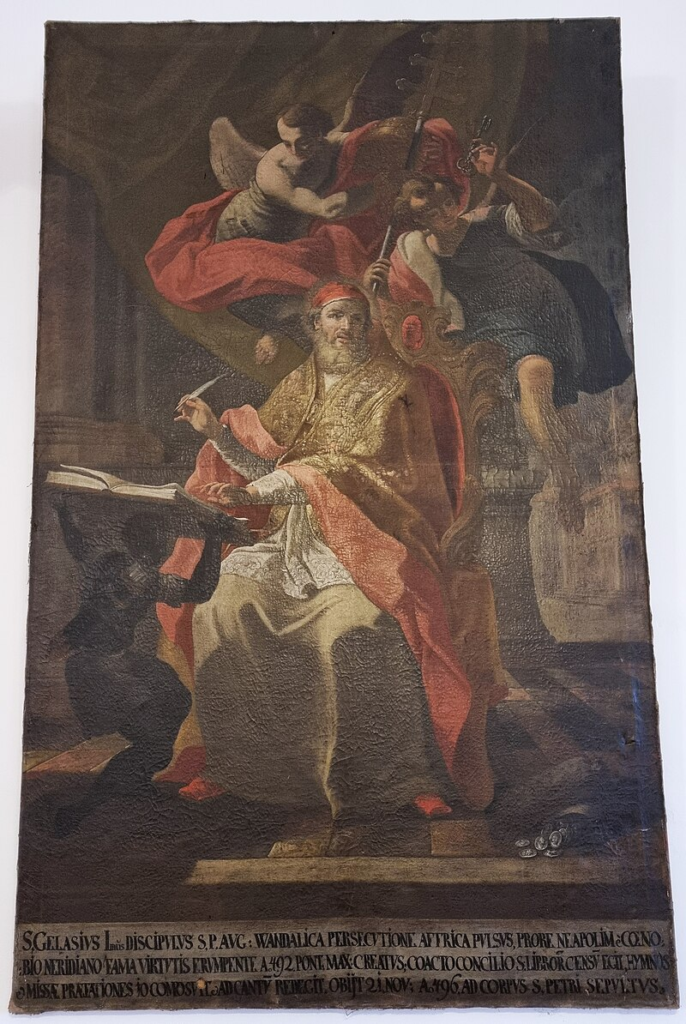
Above: Pope Gelasius I (r. 492 – 496) in St Thomas Abbey, Brno, Czech Republic
The Catholic Encyclopedia and other hagiographical sources speak of three Saints Valentine that appear in connection with February 14.

Above: The Catholic Encyclopedia: an international work of reference on the constitution, doctrine, discipline, and history of the Catholic Church
One was a Roman priest, another the Vishop of Interamna (modern Terni, Italy) both buried along the Via Flaminia outside Rome, at different distances from the city.
The third was said to be a saint who suffered on the same day with a number of companions in the Roman province of Africa, of whom nothing else is known.
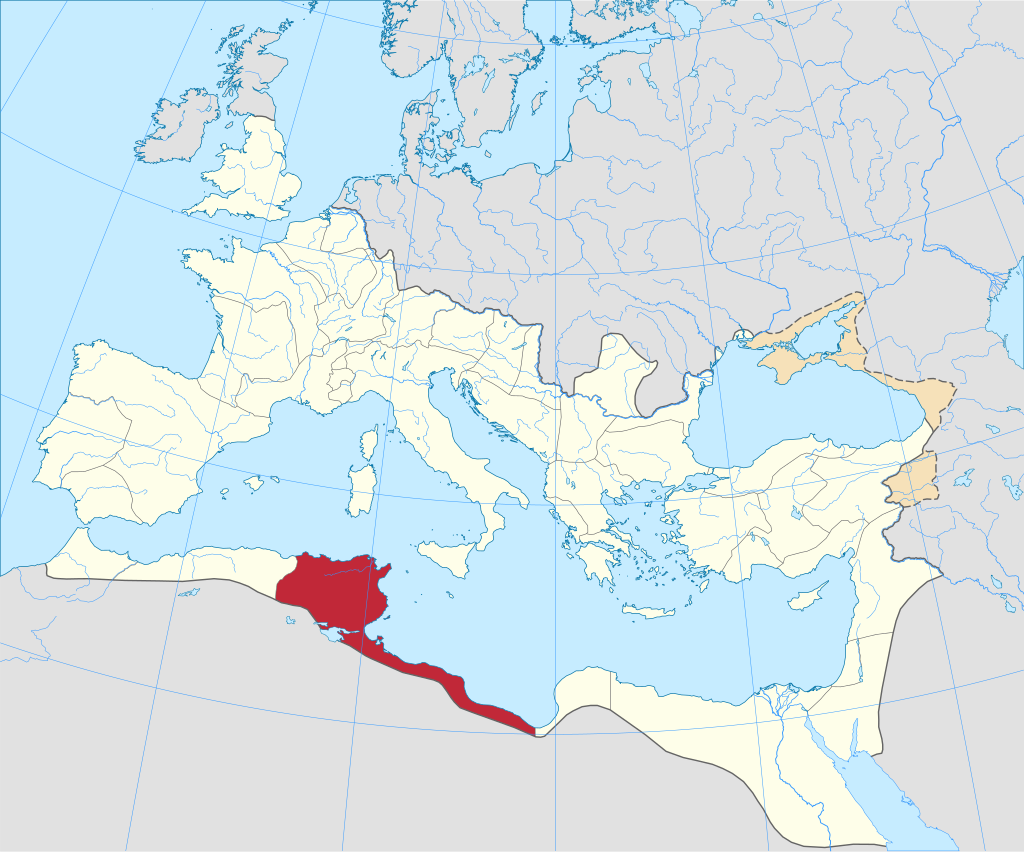
Above: (in red) Roman Province of Africa (146 BC – 698)
Though the extant accounts of the martyrdoms of the first two listed saints are of a late date and contain legendary elements, “a common nucleus of fact” may underlie the two accounts and they may refer to “a single person“.
According to the official biography of the Diocese of Terni, Bishop Valentine was born and lived in Interamna and while on a temporary stay in Rome he was imprisoned, tortured, and martyred there on February 14, 269.
His body was hastily buried at a nearby cemetery and a few nights later his disciples retrieved his body and returned him home.
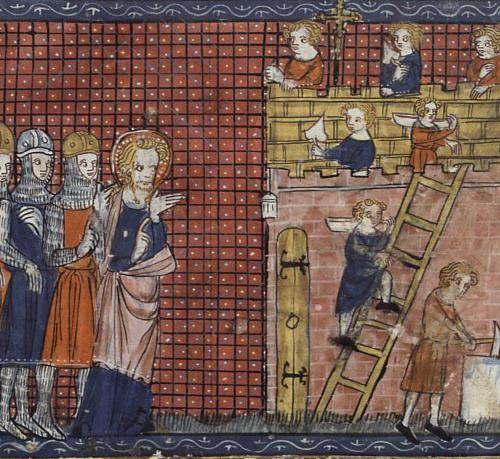
Above: Saint Valentine of Terni oversees the construction of his basilica at Terni, Italia
The Roman Martyrology, the Catholic Church’s official list of recognized saints, for February 14 gives only one Saint Valentine:
A martyr who died on the Via Flaminia.
The name “Valentine“, derived from valens (worthy, strong, powerful), was popular in Late Antiquity.
About 11 other saints with the name Valentine are commemorated in the Catholic Church.
Some Eastern Churches of the Western rite may provide still other different lists of Saint Valentines.
The Roman martyrology lists only seven who died on days other than February 14:
- a priest from Viterbo (November 3)
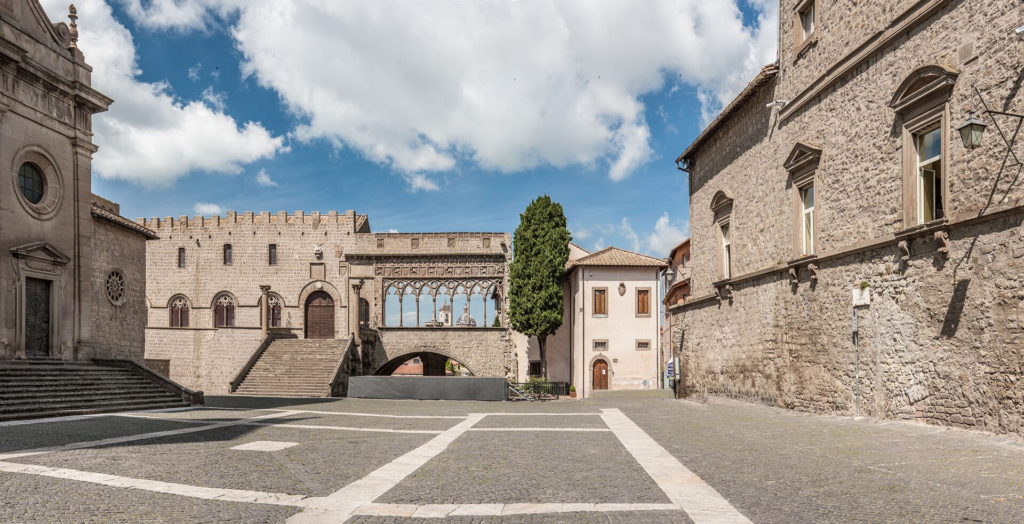
Above: Piazza di San Lorenzo and the loggia of the Papal Palace, Viterbo, Italia
- Valentine of Passau, papal missionary Bishop to Raetia, among first patrons of Passau, and later hermit in Zenoburg, near Mais, South Tyrol, Italy, where he died in 475 (January 7)
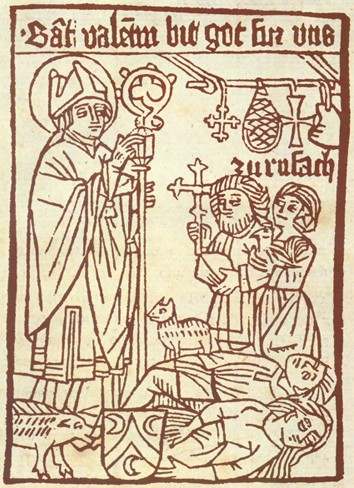
Above: Valentin von Raetien (d. 475)
- a 5th-century priest and hermit (July 4)
- a Spanish hermit who died c. 715 (October 25)
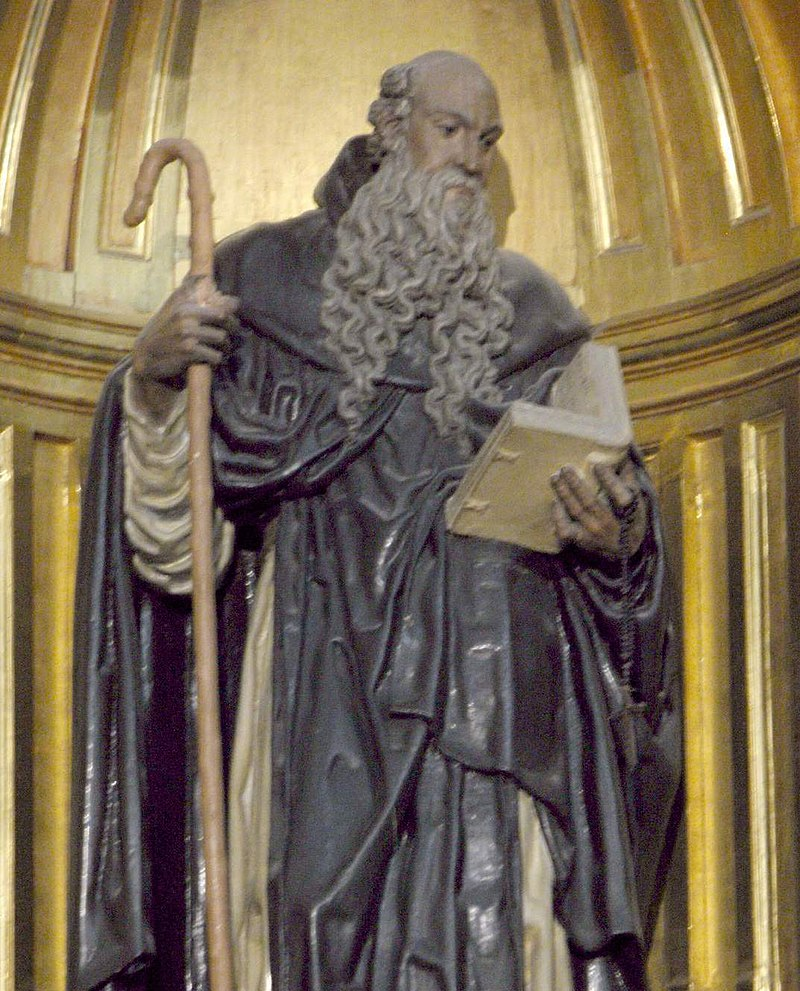
Above: San Frutos, Catedral, Capilla de San Frutos, San Valentin y Santa Engracia, Segovia, España
- Valentine Berrio Ochoa, martyred in 1861 (November 24)
- Valentine Jaunzarás Gómez, martyred in 1936 (September 18).
It also lists a virgin, Saint Valentina, who was martyred in 308 (July 25) in Caesarea, Palestine.
The inconsistency in the identification of the saint is replicated in the various vitae that are ascribed to him.
A common hagiography describes Saint Valentine as a priest of Rome or as the former Bishop of Terni, an important town of Umbria, in central Italy.
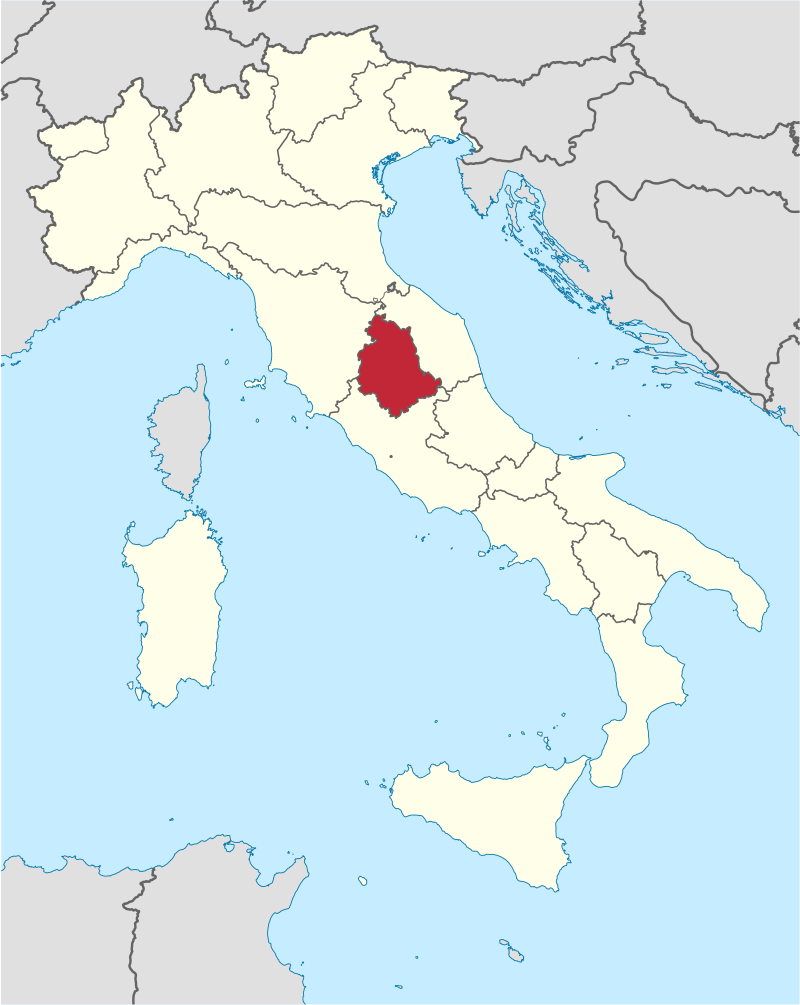
Above: (in red) Umbria, Italia
While under house arrest of Judge Asterius, and discussing his faith with him, Valentinus (the Latin version of his name) was discussing the validity of Jesus.
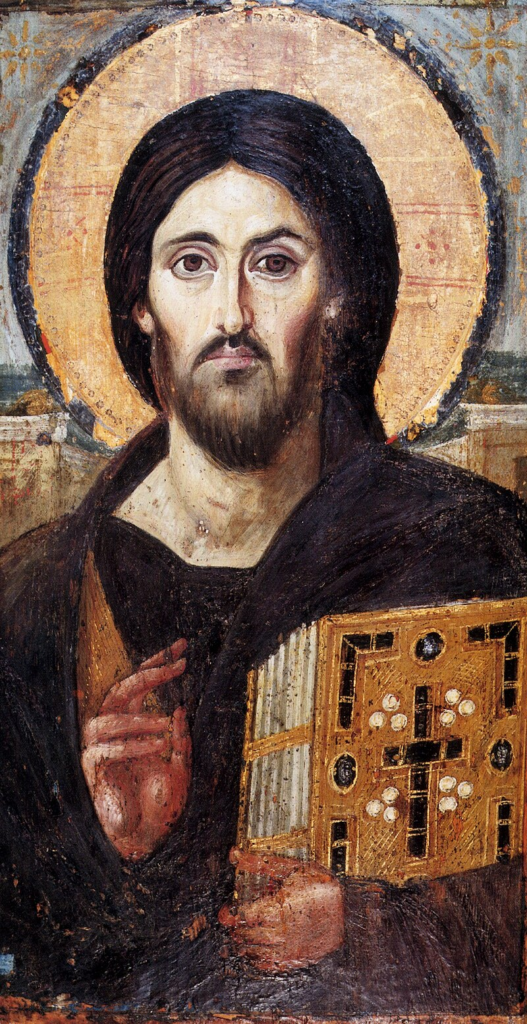
Above: The Christ Pantocrator of St. Catherine’s Monastery at Sinai, a 6th-century encaustic icon
The judge put Valentinus to the test and brought to him the judge’s adopted blind daughter.
If Valentinus succeeded in restoring the girl’s sight, Asterius would do whatever he asked.
Valentinus, praying to God, laid his hands on her eyes and the child’s vision was restored.
Immediately humbled, the judge asked Valentinus what he should do.
Valentinus replied that all of the idols around the judge’s house should be broken, and that the judge should fast for three days and then undergo the Christian sacrament of baptism.
The judge obeyed and, as a result of his fasting and prayer, freed all the Christian inmates under his authority.
The judge, his family, and his forty-four member household of adult family members and servants were baptized.
Valentinus was later arrested again for continuing to evangelize.
He was sent to the Prefect of Rome, to the Emperor Claudius Gothicus (Claudius II) himself.
Claudius took a liking to him until Valentinus tried to convince Claudius to embrace Christianity.
Claudius refused and condemned Valentinus to death, commanding that Valentinus either renounce his faith or he would be beaten with clubs and beheaded.
Valentinus refused and was executed outside the Flaminian Gate on February 14, 269.
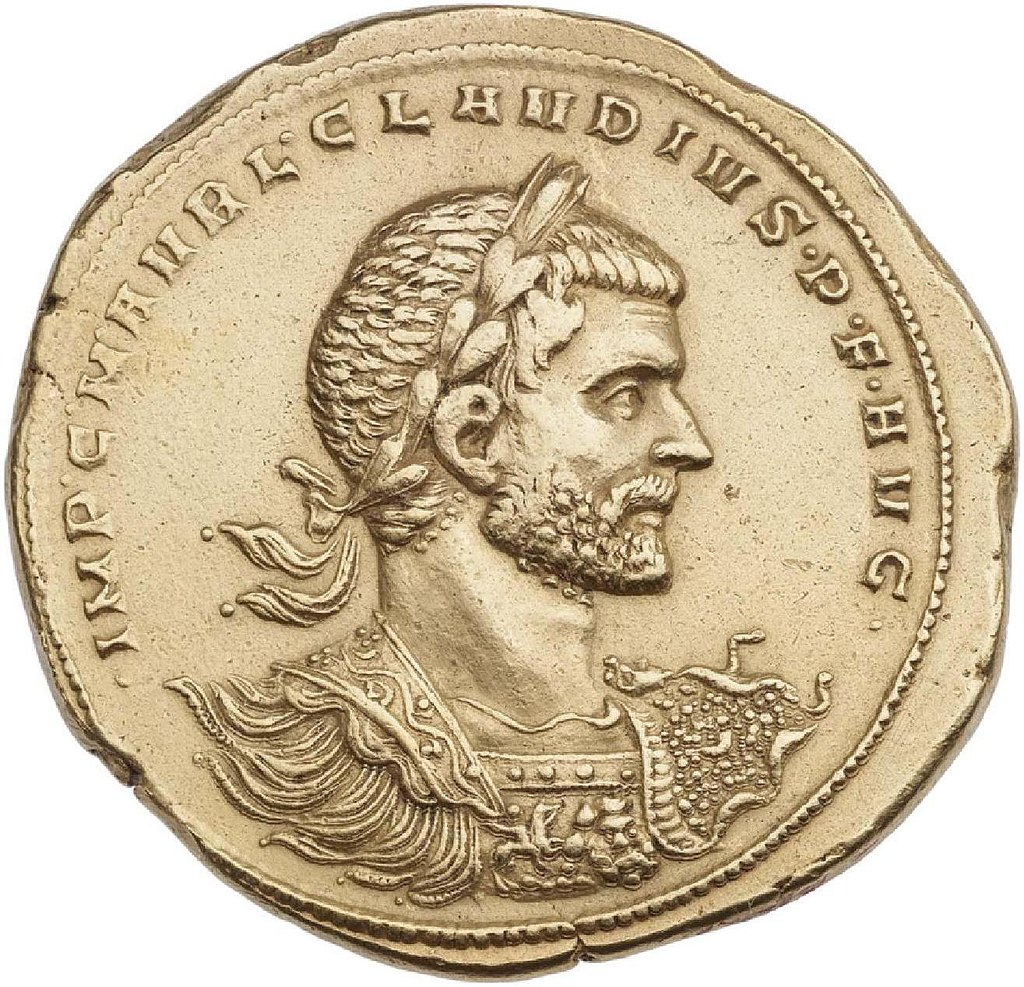
Above: Claudius Gothicus (214 – 270)
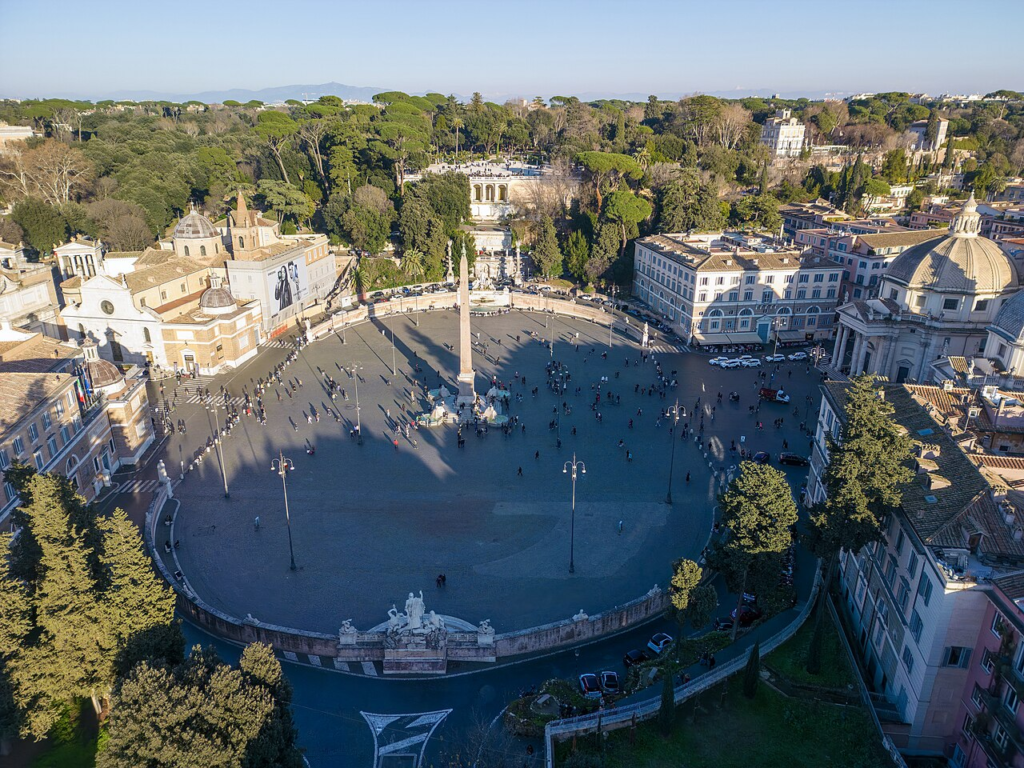
Above: Piazza del Popolo – The piazza lies inside the northern gate in the Aurelian Walls, once the Porta Flaminia of ancient Rome, and now called the Porta del Popolo.
This was the starting point of the Via Flaminia, the road to Ariminum (modern-day Rimini) and the most important route to the north.
At the same time, before the age of railroads, it was the traveller’s first view of Rome upon arrival.
For centuries, the Piazza del Popolo was a place for public executions, the last of which took place in 1826.
An embellishment to this account states that before his execution, Saint Valentine wrote a note to Asterius’s daughter signed “from your Valentine“, which is said to have inspired today’s romantic missives.
The Legenda Aurea (Golden Legend) of Jacobus de Voragine, compiled c. 1260 and one of the most-read books of the High Middle Ages, gives sufficient details of the saints for each day of the liturgical year to inspire a homily on each occasion.
The very brief vita of St Valentine states that he was executed for refusing to deny Christ by the order of the Emperor Claudius in the year 269.
Before his head was cut off, this Valentine restored sight and hearing to the daughter of his jailer.
Jacobus makes a play with the etymology of “Valentine“, “as containing valor“.
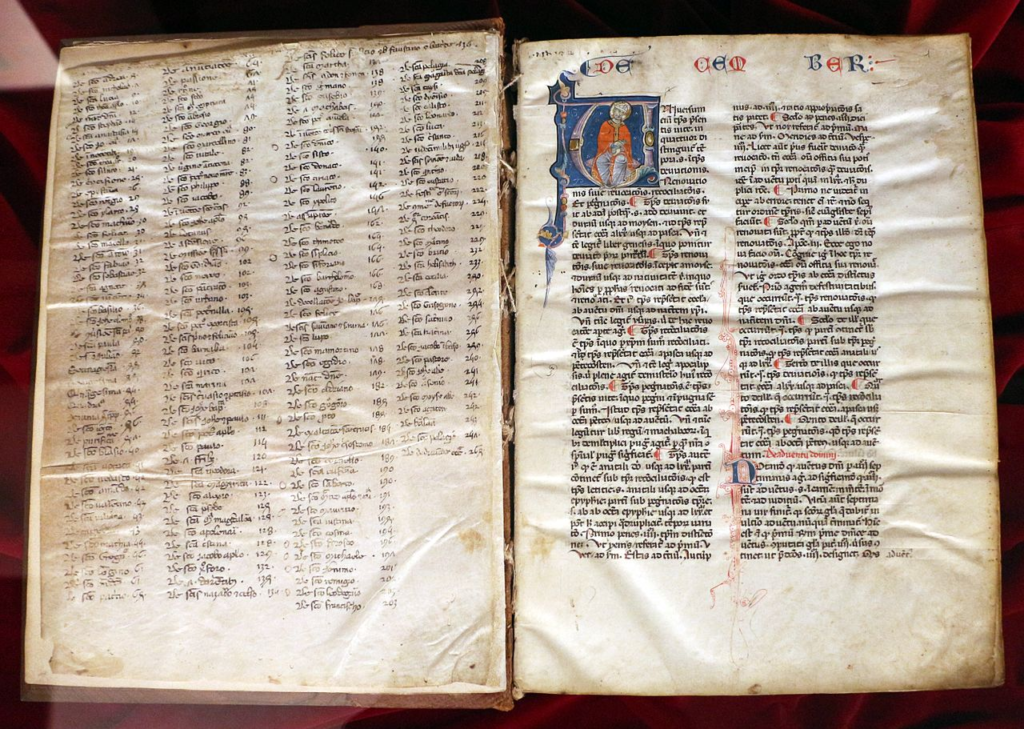
Above: Biblioteca Medicea Laurenziana manuscripts
A popularly ascribed hagiographical identity appears in the Nuremberg Chronicle (1493).
Alongside a woodcut portrait of Valentine, the text states that he was a Roman priest of exceptional learning who converted the daughter of Asterius and 49 others to Christianity before being martyred during the reign of Claudius Gothicus.
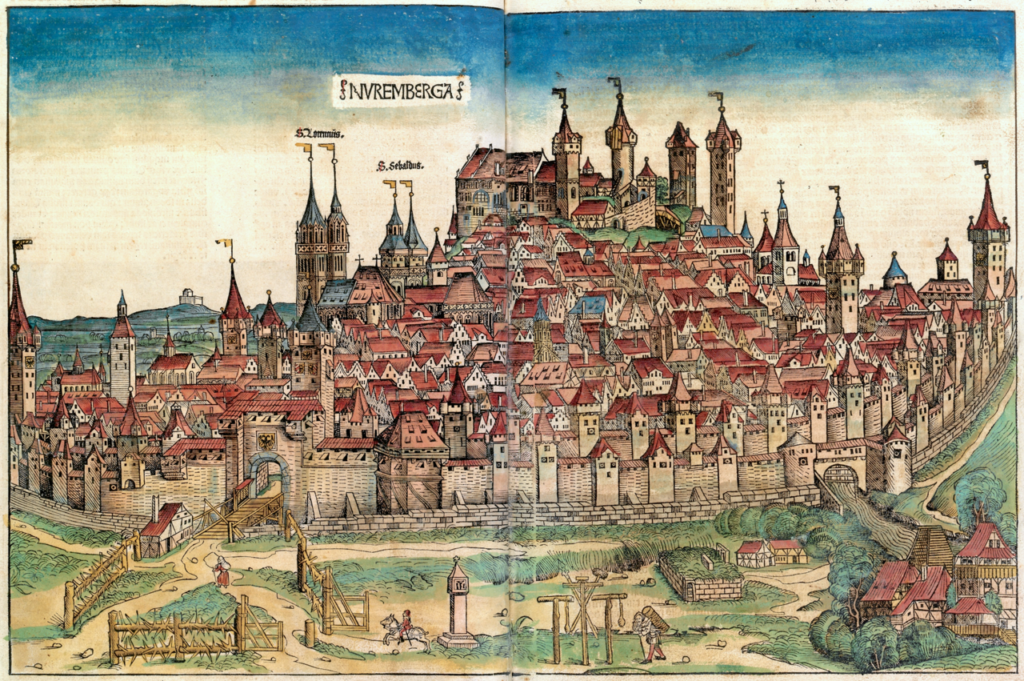
Above: Woodcut of Nuremberg from the Nuremberg Chronicle
There are many other legends behind Saint Valentine.
One is that the priest Valentine defied the order of the Emperor and secretly performed Christian weddings for couples, allowing the husbands involved to escape conscription into the Roman army.
This legend claims that soldiers were sparse at this time so this was a great inconvenience to the Emperor.

The account mentions that in order “to remind these men of their vows and God’s love, Saint Valentine is said to have cut hearts from parchment“, giving them to these persecuted Christians, a possible origin of the widespread use of hearts on St. Valentine’s Day.
The flower-crowned alleged skull of St. Valentine is exhibited in the Basilica of Santa Maria in Cosmedin, Rome.
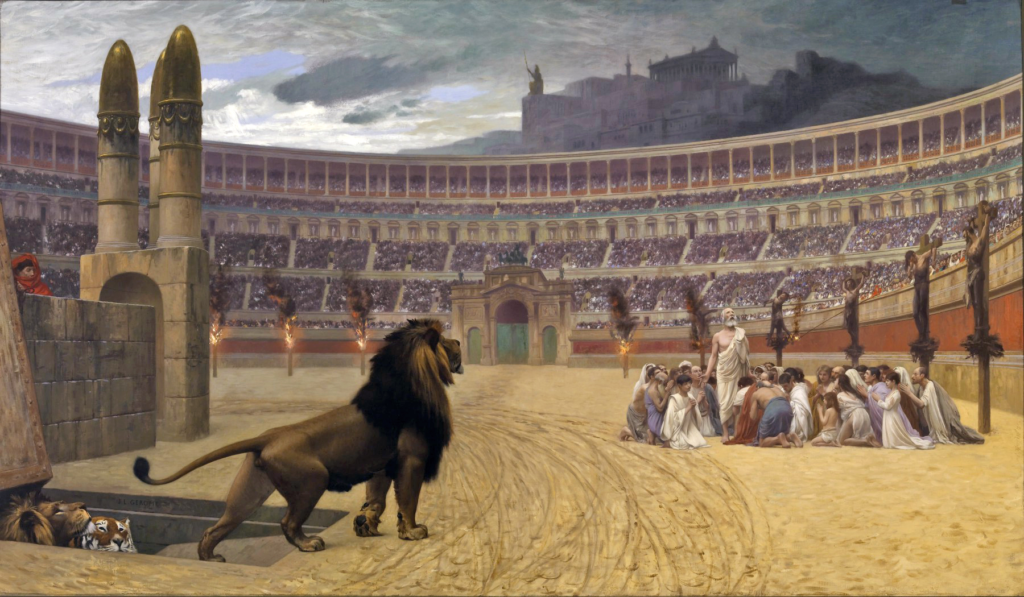
Above: Saint Valentine is said to have ministered to the faithful amidst the persecution of Christians in the Roman Empire.
St. Valentine’s remains are deposited in St Anton’s Church, Madrid, where they have lain since the late 1700s.
They were a present from the Pope to King Carlos IV, who entrusted them to the Order of Poor Clerics Regular of the Mother of God of the Pious Schools (Piarists).
The relics have been displayed publicly since 1984, in a foundation open to the public at all times in order to help people in need.
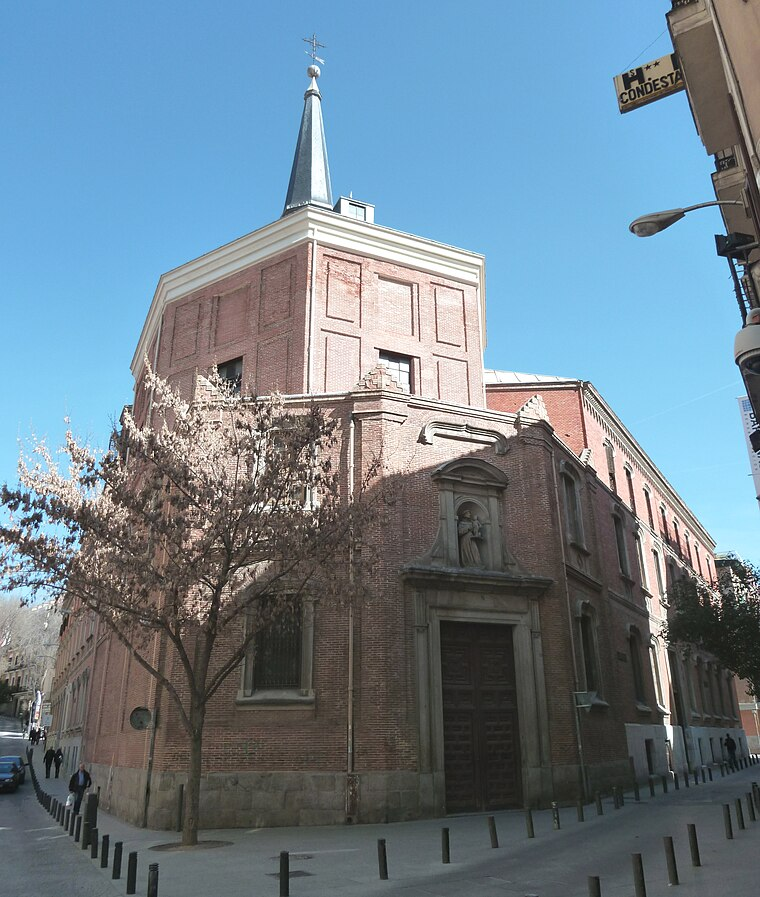
Above: St. Anthony’s Church, Madrid, España
Whitefriar Street Carmelite Church, Dublin, also houses some relics of St Valentine.
On 27 December 1835, the Very Reverend Father John Spratt, Master of Sacred Theology to the Carmelite order in Dublin, was sent the partial remains of St Valentine by Cardinal Carlo Odescalchi, under the auspices of Pope Gregory XVI.
The relics and the accompanying letter from Cardinal Odescalchi have remained in the Church ever since.
The remains, which include “a small vessel tinged with his blood“, were sent as a token of esteem following an eloquent sermon Friar Spratt had delivered in Rome.
On Saint Valentine’s Day in Ireland, many individuals who seek true love make a Christian pilgrimage to the Shrine of St. Valentine in Whitefriar Street Carmelite Church in Dublin, which is said to house relics of Saint Valentine of Rome.
They pray at the shrine in hope of finding romance.
Therein lies a book in which foreigners and locals have written their prayer requests for love.

Above: Whitefriar Street Carmelite Church, Dublin, Ireland
Another relic was found in 2003 in Prague in the Basilica of St. Peter and St. Paul at Vyšehrad.

Above: Bazilika svatého Petra a Pavla, Vyšehrad, Praha, Czech Republic
Saint Valentine’s relics can also be found in Slovakia in two cities.
The first is Košice, where the relic is placed in the Immaculate Conception (placed in 1720).
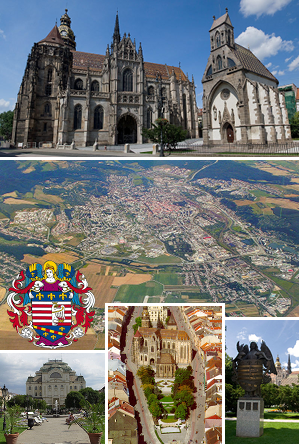
Above: Images of Košice, Slovakia
The second is Nováky, which they had in the church of St. Nicholas and the rare statue of Saint Valentine, which was stolen in the 1990s (according to one saved original part of the statue – the head, a new copy was created, which was ceremoniously placed in the church in 2000.)
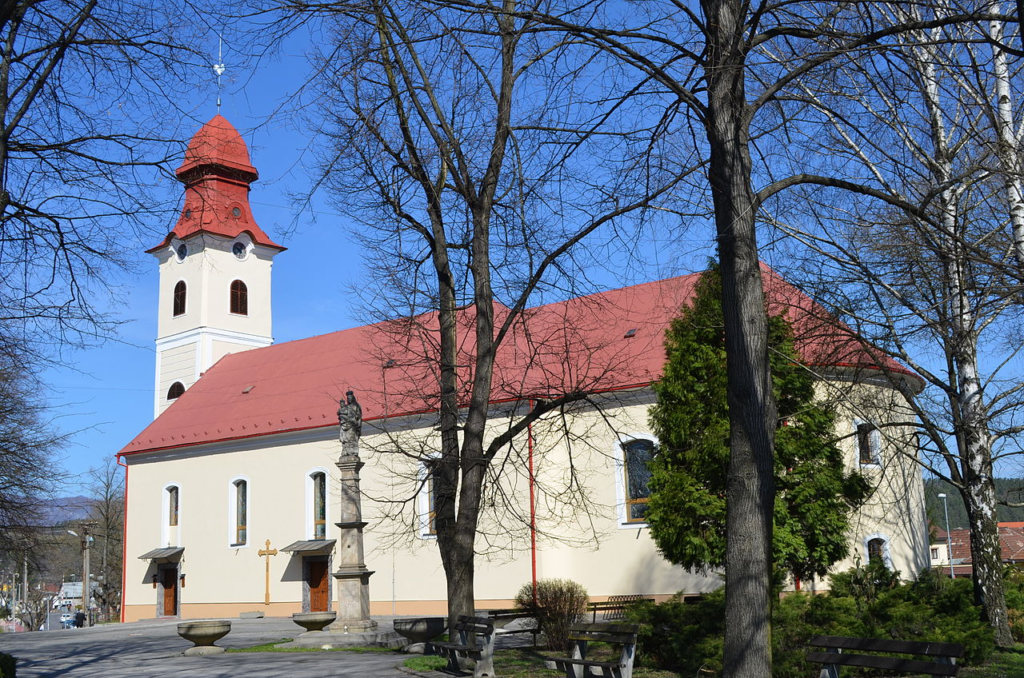
Above: St. Nicholas Church, Nováky, Slovakia
A silver reliquary containing a fragment of St. Valentine’s skull is found in the parish church of St. Mary’s Assumption in Chełmno, Poland.

Above: Kościół Wniebowzięcia Najświętszej Maryi Panny, Chełmno, Poland
Relics can also be found in Mytilene on the Greek island of Lesbos.
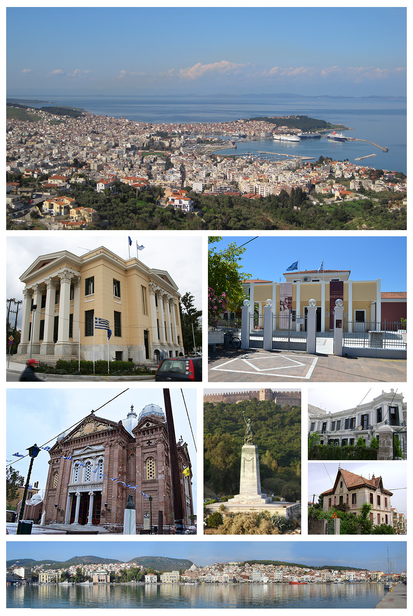
Above: Images of Mytilene, Lesbos, Greece
Another set of relics can also be found in Savona, in the Cathedral of Santa Maria Assunta.

Above: Savona, Italia
Alleged relics of St. Valentine also lie:
- at the reliquary of Roquemaure, Gard, France

Above: The church of Roquemaure, France
- in St. Stephen’s Cathedral, Vienna
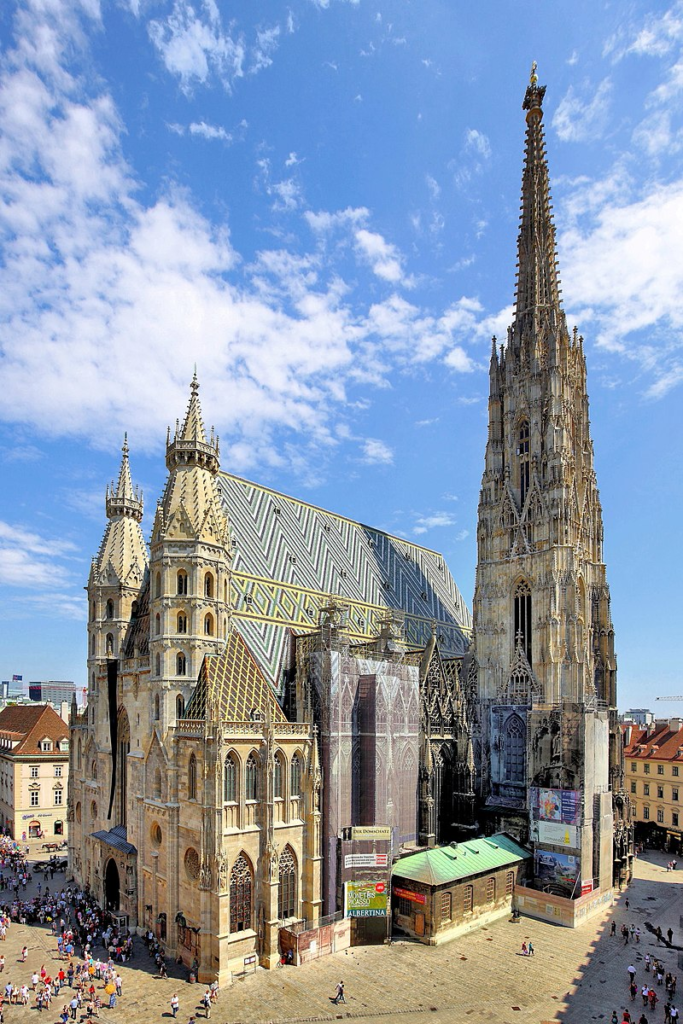
Above: Stephansdom, Wien, Österreich
- in Balzan in Malta
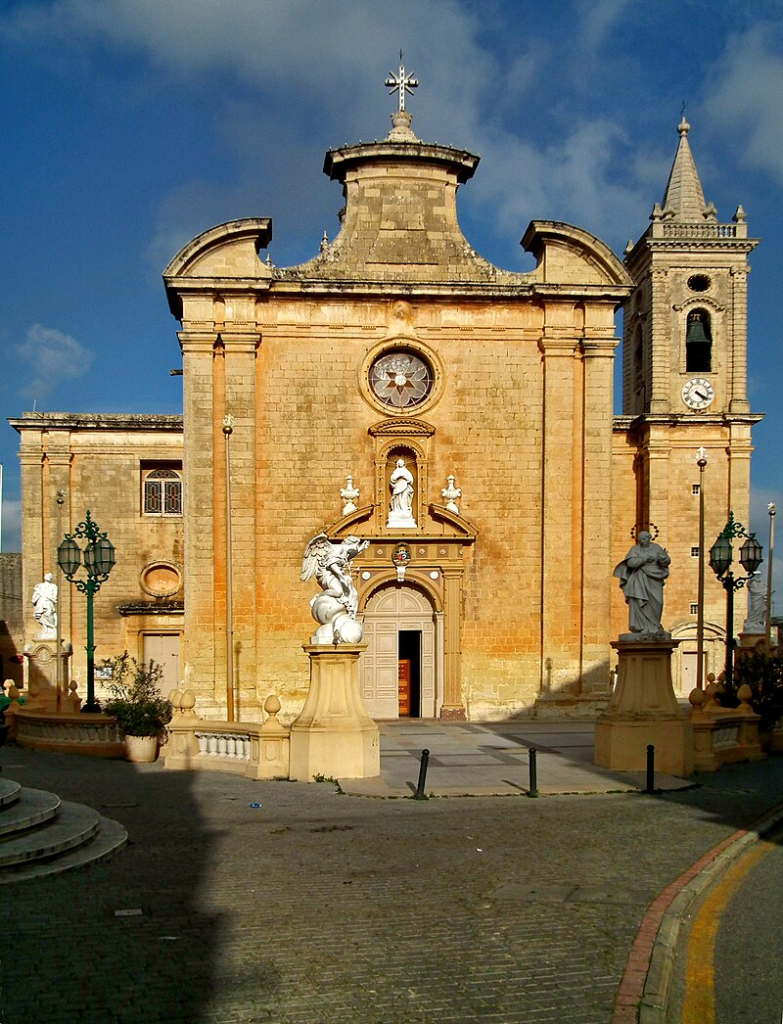
Abpve: Chiesa di Balzan, Malta
- Blessed John Duns Scotus Church in the Gorbals area of Glasgow, Scotland.

Above: Blessed John Duns Scotus Church, Glasgow, Scotland
There is also a gold reliquary bearing the words “Corpus St. Valentin, M” (Body of St. Valentine, Martyr) at Birmingham Oratory, UK, in one of the side altars in the main church.
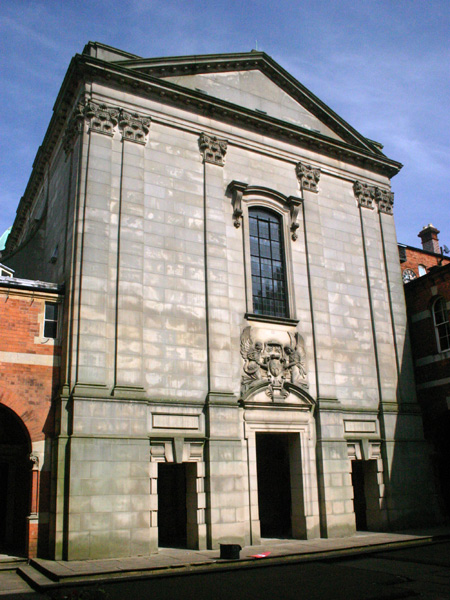
Above: Cardinal Newman Memorial Church, Birmingham Oratory, England
So, if Rome does not suffice, must the would-be romantic search further afield?
But where to go?
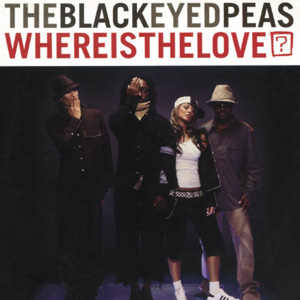
Madrid?

Above: Madrid, España
Prague?
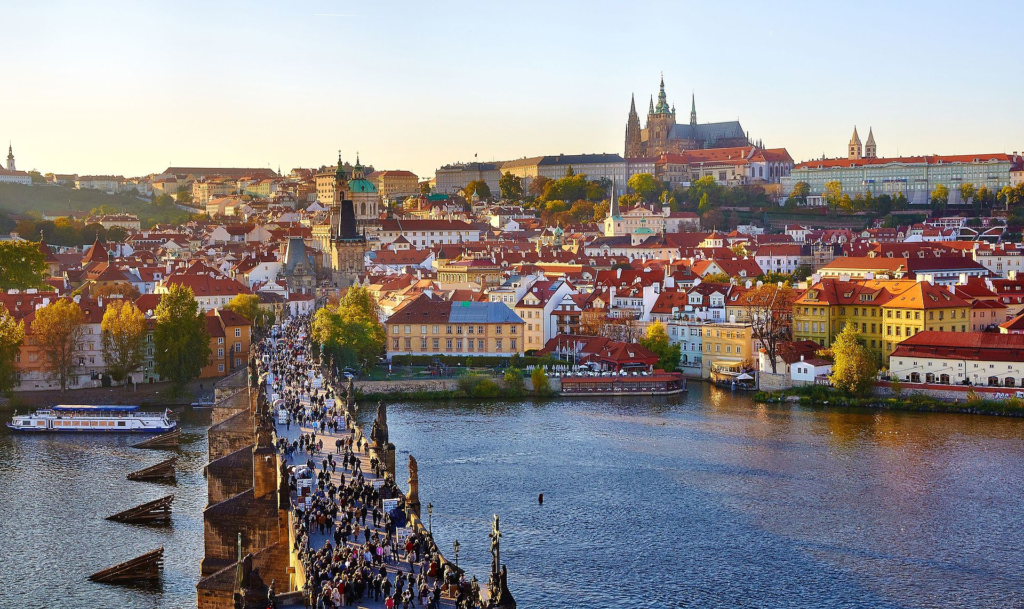
Above: Praha, Česká Republika
Košice?
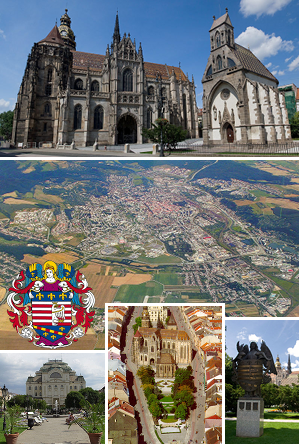
Above: Images of Košice, Slovenská Republika
Nováky?
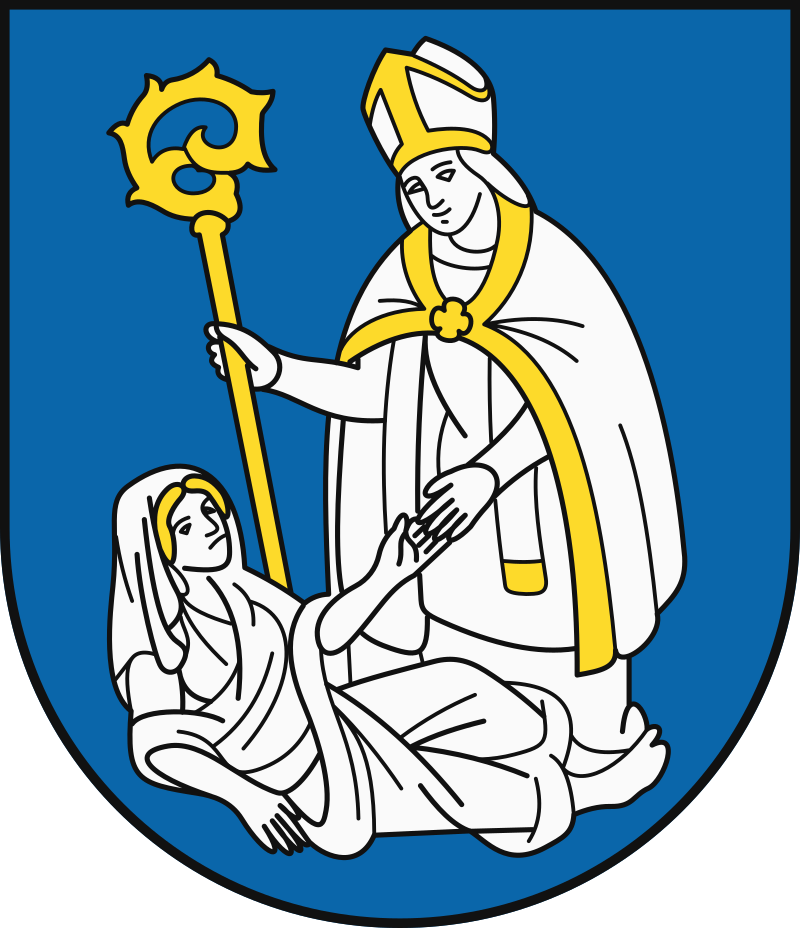
Above: Coat of arms of Nováky, Slovenská Republika
Chełmno?
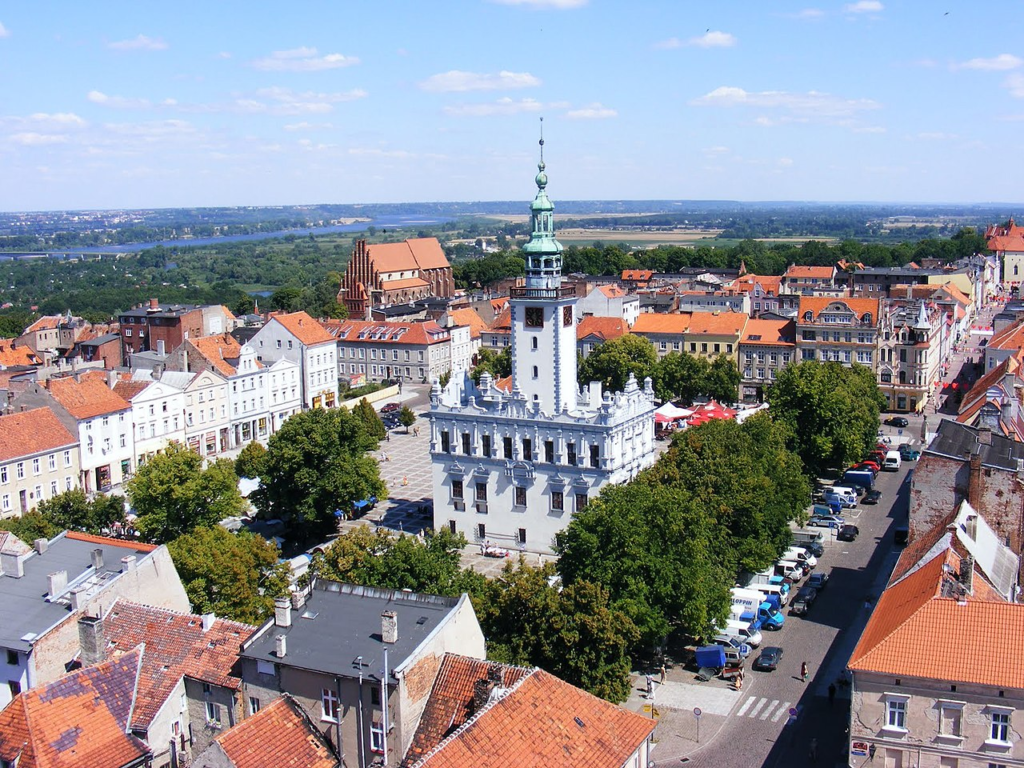
Above: Chełmno, Rzeczpospolita Polska
Mytilene?
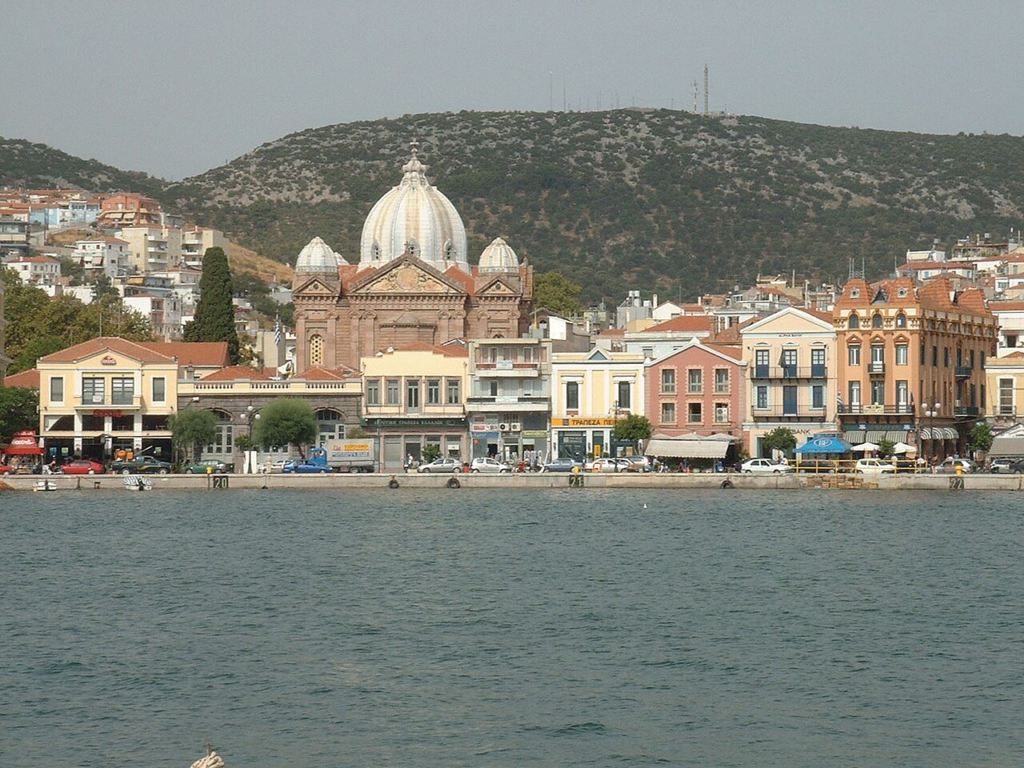
Above: Mytilene, Lesbos, Greece
Savona?
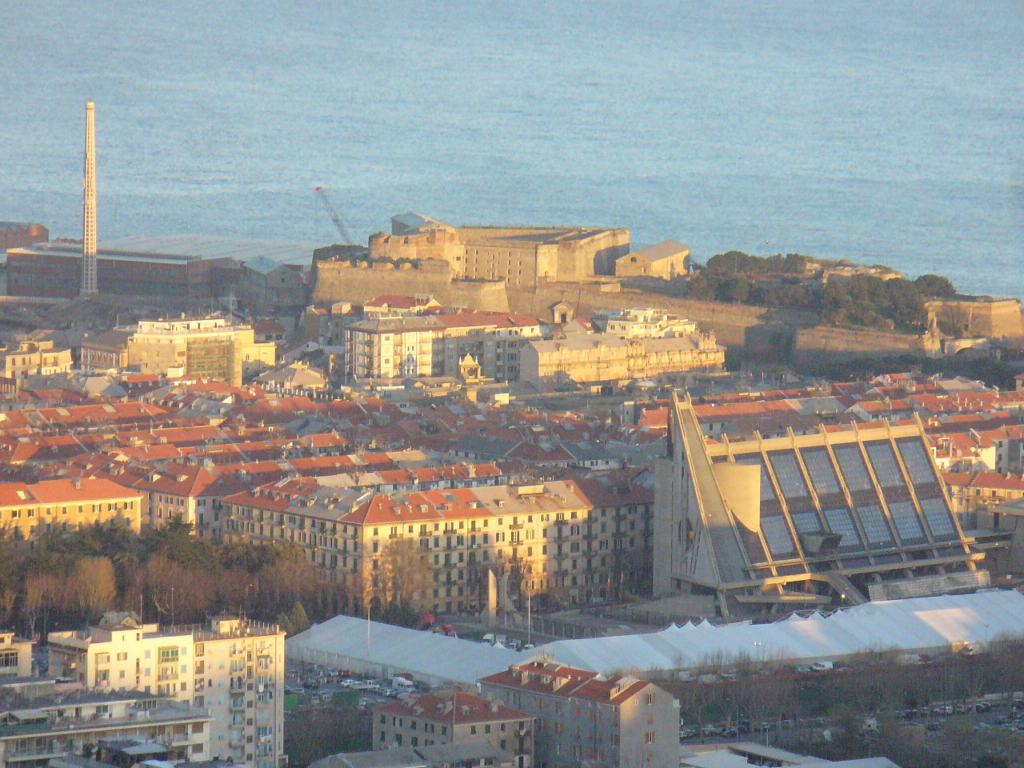
Above: Savona, Italia
Roquemaure?

Above: Ruins of the royal castle, Roquemare, France
Vienna?

Above: Wien, Österreich
Balzan?

Above: Balzan, Malta
Glasgow?

Above: Glasgow, Scotland
Birmingham?

Above: Birmingham, England
Where can love be found?
Is love limited to a place?
Is love limited to the relics of a saint?
Do the remains of a saint deliver love to us?

Valentine’s Day, also called Saint Valentine’s Day or the Feast of Saint Valentine, is celebrated annually on February 14.
It originated as a Christian feast day honoring a martyr named Valentine.
Through later folk traditions it has also become a significant cultural, religious and commercial celebration of romance and love in many regions of the world.

Above: St Valentine Kneeling in Supplication, David Teniers III (1676)
The 8th-century Gelasian Sacramentary recorded the celebration of the Feast of Saint Valentine on February 14.
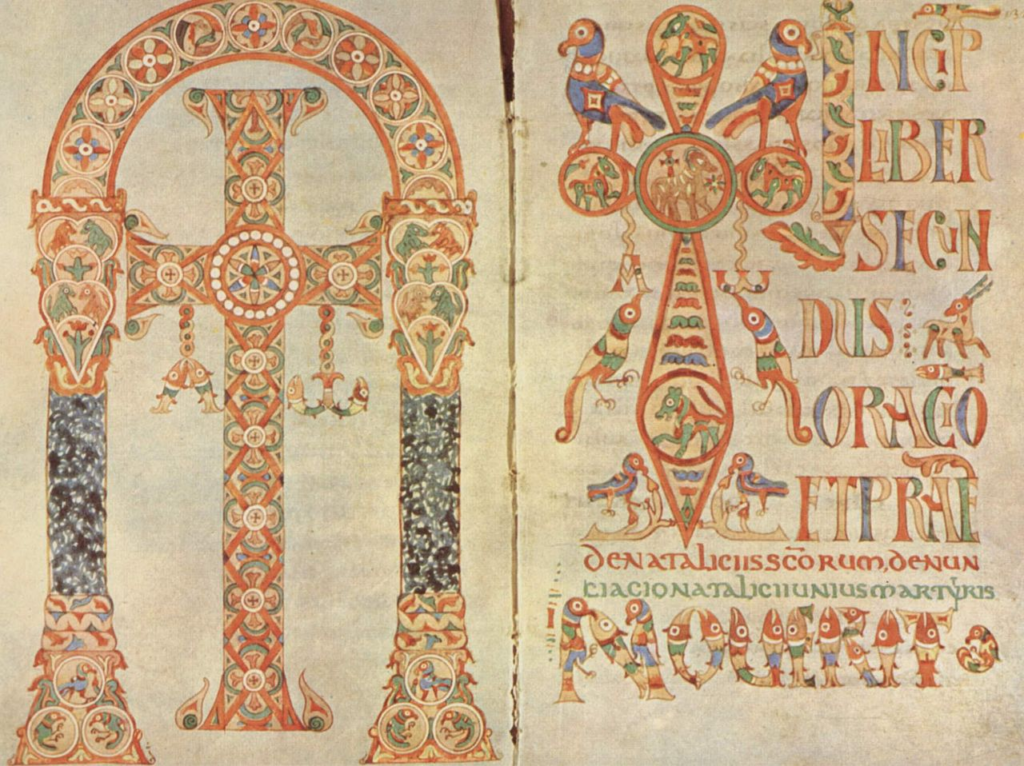
Above: Frontispiece and incipit from the Vatican manuscript
The day became associated with romantic love in the 14th and 15th centuries, when notions of courtly love flourished, apparently by association with the “lovebirds” of early spring.

Above: Male greater frigate bird displaying, Genovesa Island (El Barranco) in the Galapagos Islands, Ecuador
In 18th-century England, it grew into an occasion for couples to express their love for each other by presenting flowers, offering confectionery, and sending greeting cards (known as “valentines“).
Valentine’s Day symbols that are used today include the heart-shaped outline, doves, and the figure of the winged Cupid.
In the 19th century, handmade cards gave way to mass-produced greetings.
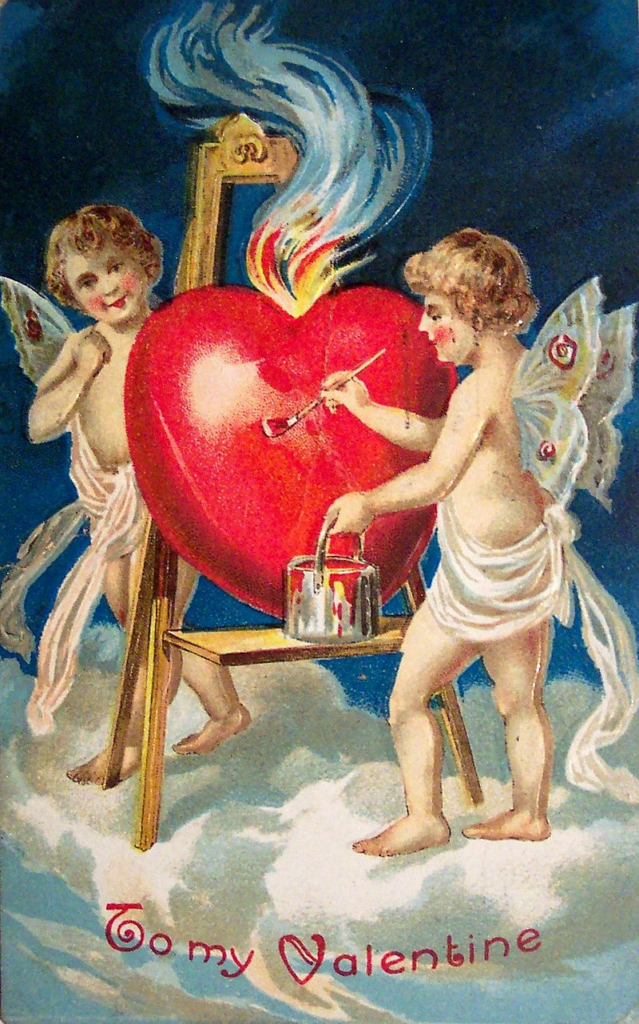
In Italy, Saint Valentine’s keys are given to lovers “as a romantic symbol and an invitation to unlock the giver’s heart“, as well as to children to ward off epilepsy (called Saint Valentine’s Malady).

While the European folk traditions connected with Saint Valentine and Saint Valentine’s Day have become marginalized by modern customs connecting the day with romantic love, there are still some connections with the advent of spring.
While the custom of sending cards, flowers, chocolates and other gifts originated in the UK, Valentine’s Day still remains connected with various regional customs in England.

In Norfolk, a character called “Jack” Valentine knocks on the rear door of houses, leaving sweets and presents for children.
Although he was leaving treats, many children were scared of this mystical person.
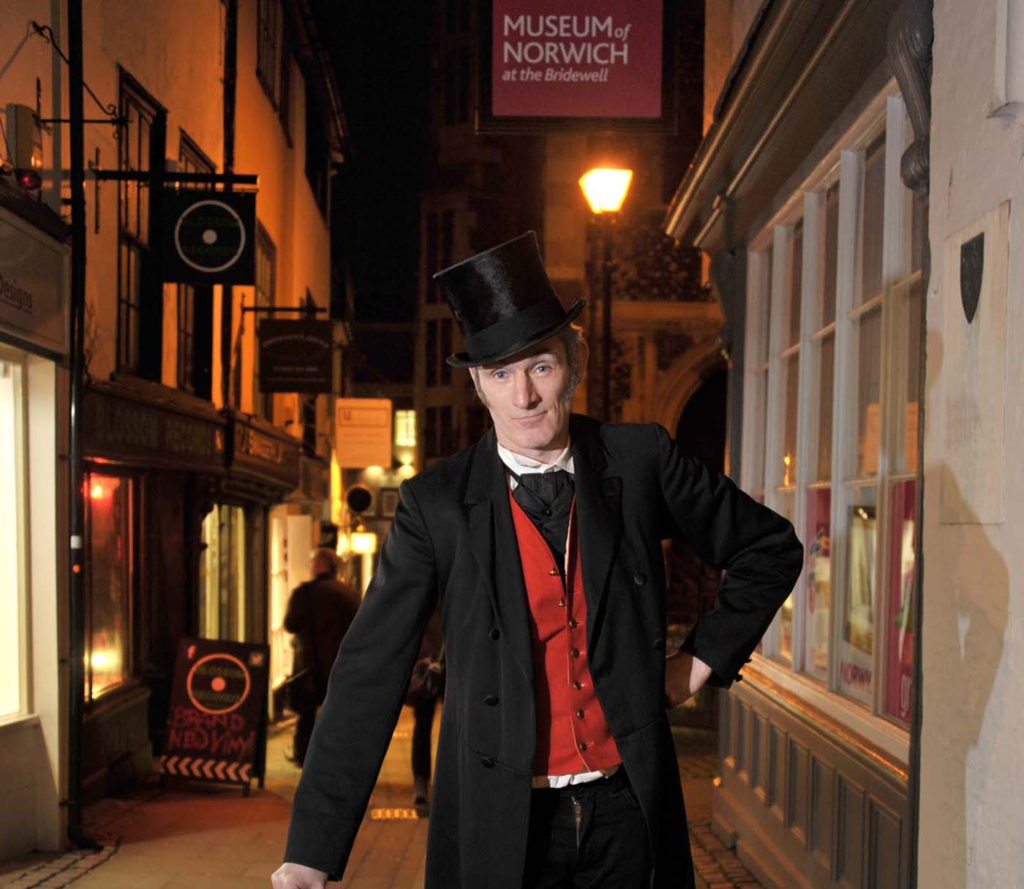
Above: Jack Valentine, Norfolk County, England
In Slovenia, Saint Valentine or Zdravko was one of the saints of spring, the saint of good health and the patron of beekeepers and pilgrims.
A proverb says that “Saint Valentine brings the keys of roots“.
Plants and flowers start to grow on this day.
It has been celebrated as the day when the first work in the vineyards and in the fields commences.
It is also said that birds propose to each other or marry on that day.
Another proverb says “Valentin – prvi spomladin“ (‘Valentine – the first spring saint‘), as in some places (especially White Carniola), Saint Valentine marks the beginning of spring.
Valentine’s Day has only recently been celebrated as the day of love.
The day of love was traditionally March 12, Saint Gregory’s Day, or February 22, Saint Vincent’s Day.
The patron of love was Saint Anthony, whose day has been celebrated on June 13.
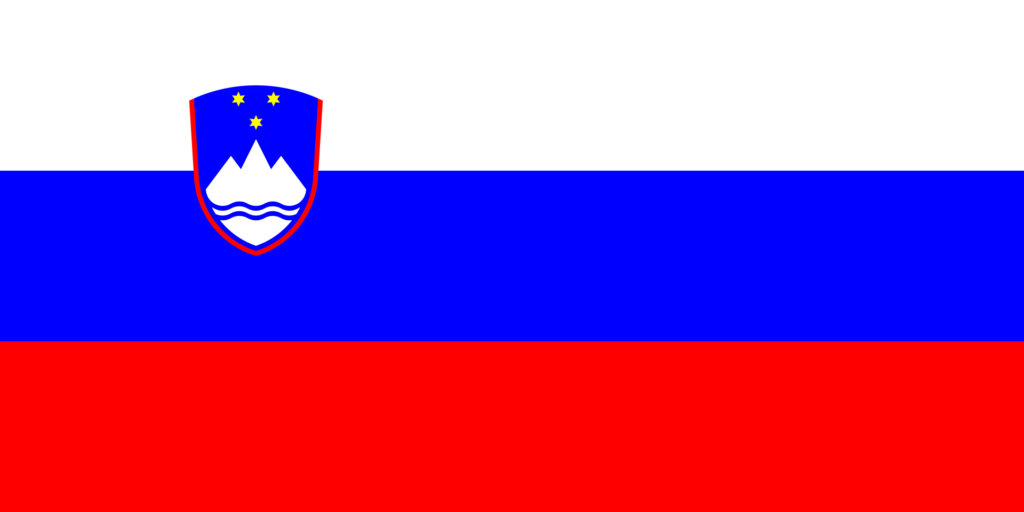
Above: Flag of Slovenia
The “Feast” (Latin: in natali, lit. ’on the birthday‘) of Saint Valentine originated in Christendom and has been marked by the Western Church of Christendom in honor of one of the Christian martyrs named Valentine, as recorded in the 8th-century Gelasian Sacramentary.
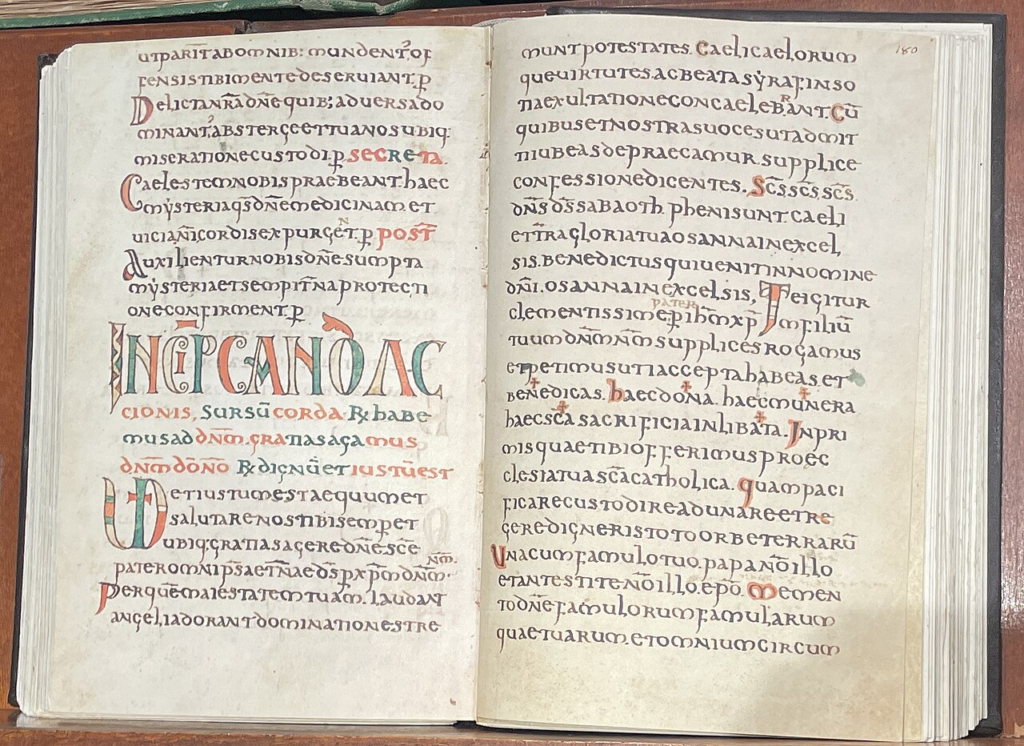
Above: Gelasian Sacramentary
In Ancient Rome, Lupercalia was observed February 13–15 on behalf of Pan and Juno, pagan gods of love, marriage and fertility.
It was a rite connected to purification and health, and had only slight connection to fertility (as a part of health) and none to love.
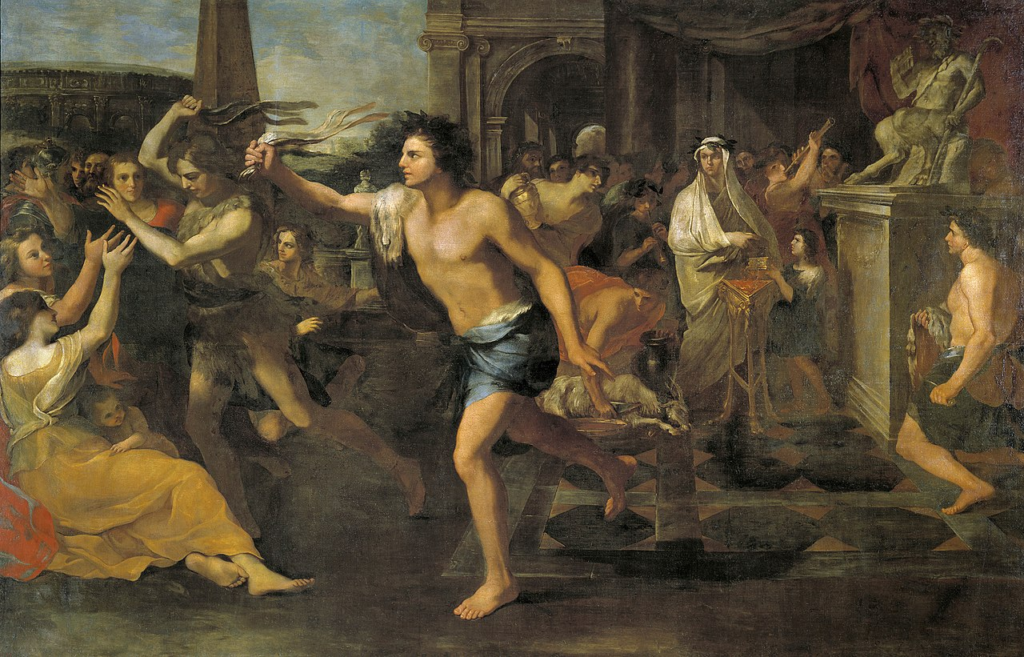
Above: Lupercalia, Andrea Camassei (1635)
The celebration of Saint Valentine is not known to have had any romantic connotations until Chaucer’s poetry about “Valentine’s Day” in the 14th century, some 700 years after celebration of Lupercalia is believed to have ceased.
Lupercalia was a festival local to the city of Rome.
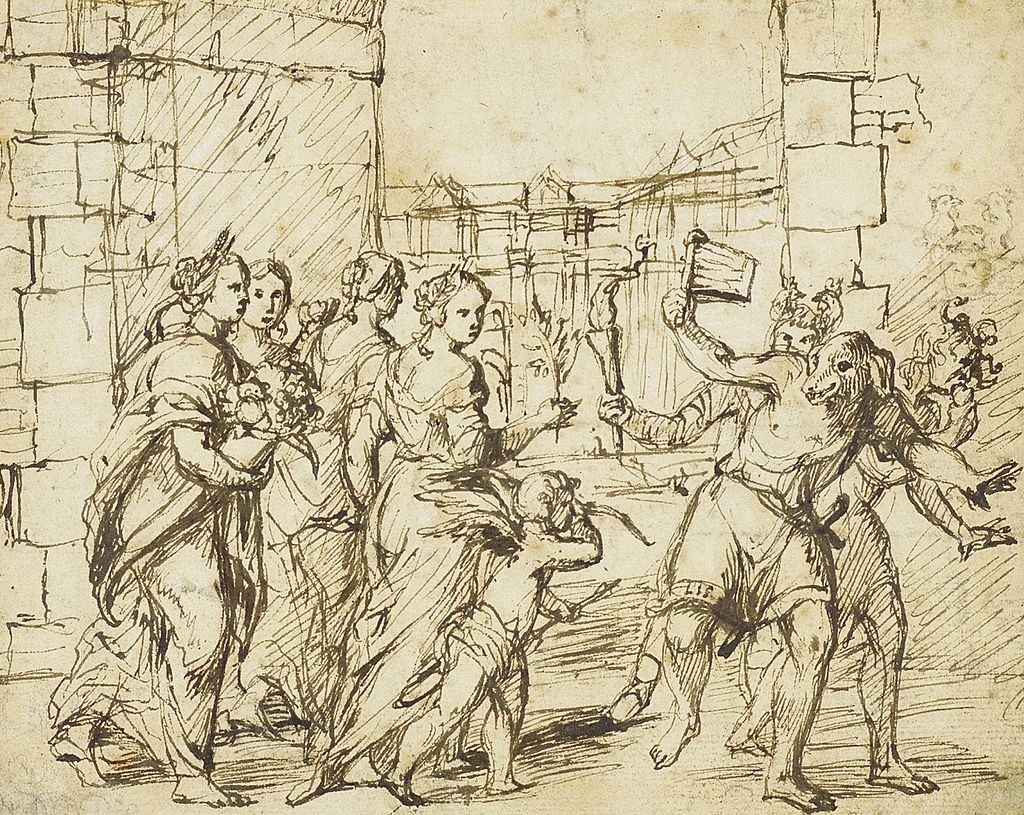
Above: The Lupercalian Festival in Rome, showing the Luperci dressed as dogs and goats, with Cupid and personifications of fertility
The more general Festival of Juno Februa, meaning “Juno the purifier” or “the chaste Juno“, was celebrated on February 13–14.
“During a great art of the month of February in honor of Pan and Juno, on this occasion, amidst a variety of ceremonies, the names of young women were put into a box, from which they were drawn by the men as chance directed.
As the festival of the Lupercalia had commenced about the middle of February, Christians appear to have chosen Saint Valentine’s day for celebrating the new feast, because it occurred nearly at the same time.“
Francis Douce, Illustrations of Shakespeare and of Ancient Manners
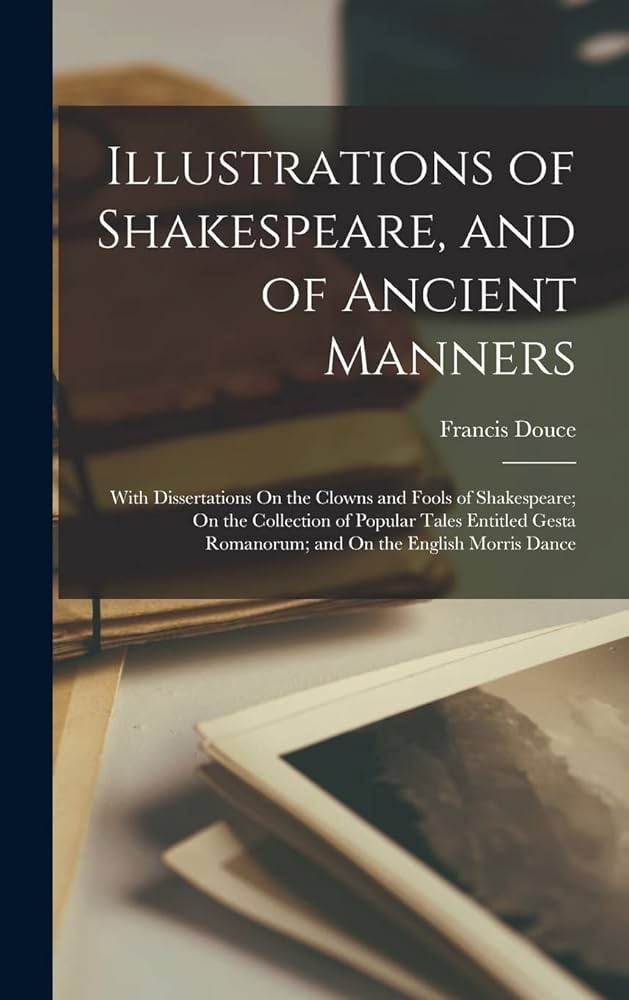
Although the Pope Gelasius I (r. 492 – 496) article in the Catholic Encyclopedia says that he abolished Lupercalia, theologian and Methodist minister Bruce Forbes wrote that “no evidence” has been demonstrated to link Saint Valentine’s Day and the rites of the ancient Roman purification festival of Lupercalia, despite claims by many authors to the contrary.
Some researchers have theorized that Gelasius I replaced Lupercalia with the celebration of the Purification of the Blessed Virgin Mary and claim a connection to the 14th century’s connotations of romantic love, but there is no historical indication that he ever intended such a thing.
Also, the dates do not fit because at the time of Gelasius I, the feast was only celebrated in Jerusalem, and it was on February 14 only because Jerusalem placed the Nativity of Jesus (Christmas) on January 6.
Although it was called “Purification of the Blessed Virgin Mary“, it also dealt with the presentation of Jesus at the temple.
Jerusalem’s Purification of the Blessed Virgin Mary on February 14 became the Presentation of Jesus at the Temple on February 2 as it was introduced to Rome and other places in the 6th century, after Gelasius I’s time.
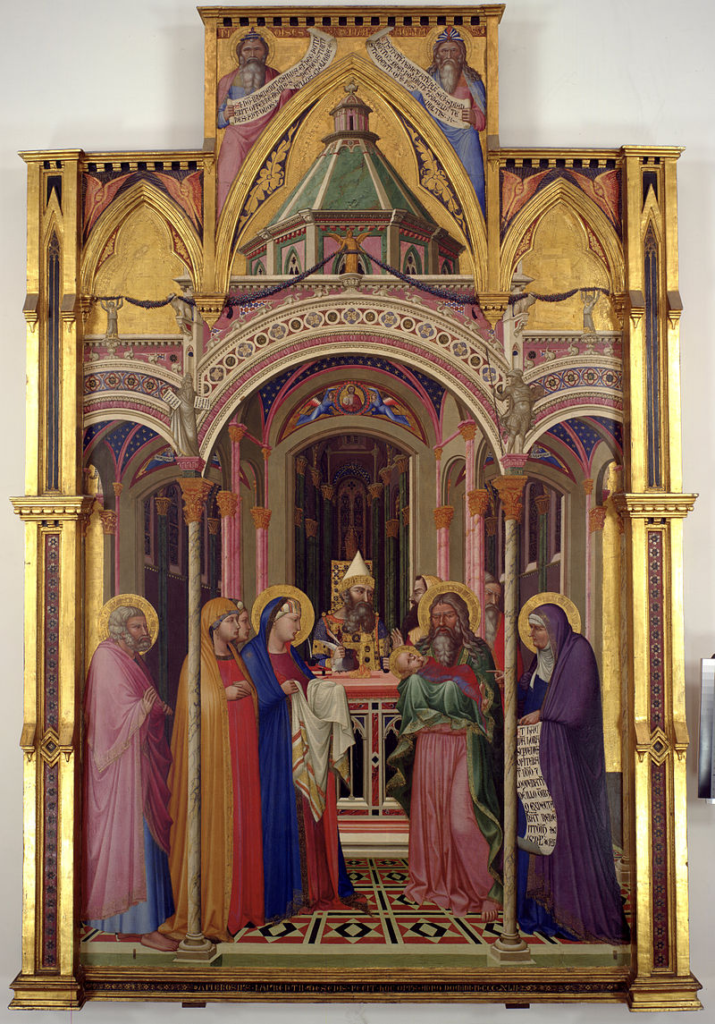
Above: Presentation at the Temple, Ambrogio Lorenzetti (1342)
While sometimes repeated uncritically by modern sources that men or boys drew names of women or girls from a jar to couple for the duration of Lupercalia, there is no ancient evidence for any kind of lottery or sortition scheme pairing couples for sex.
The first descriptions of this fictitious lottery appeared in the 15th century in relation to Valentine’s Day, with a connection to the Lupercalia first asserted in 18th century antiquarian works, such as those by Alban Butler (The Lives of the Fathers, Martyrs, and Other Principal Saints) (1759) and Francis Douce.
These modern sources claimed that the fictional Lupercalia was the source of the practice of sending valentines.
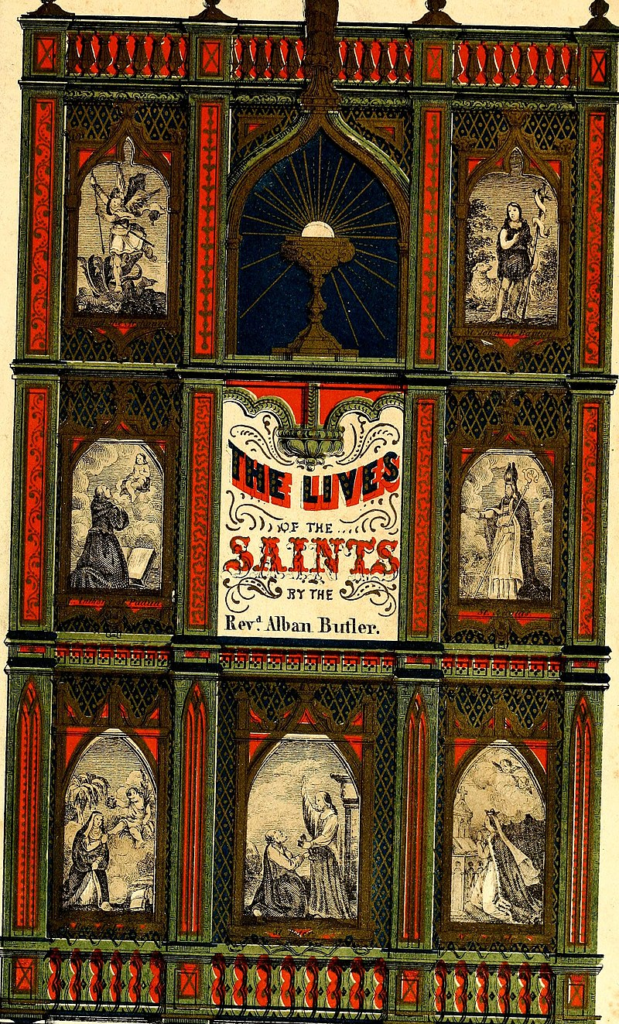
The practice of sending valentines originated in the Middle Ages, with no link to Lupercalia, with boys drawing the names of girls at random.
This custom was combated by priests, for example by Frances de Sales around 1600, apparently by replacing it with a religious custom of girls drawing the names of apostles from the altar.

Above: French Bishop François de Sales (1567 – 1622)
However, this religious custom is recorded as early as the 13th century in the life of Saint Elizabeth, so it could have a different origin.
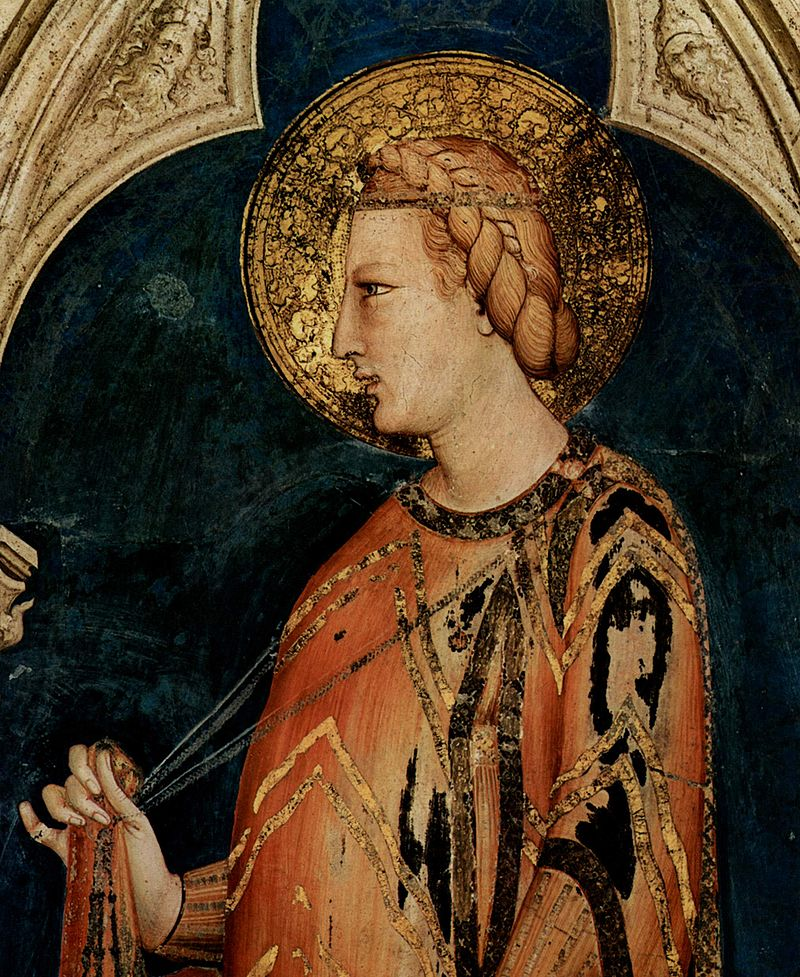
Above: Princess Elizabeth of Hungary (1207 – 1231)
The first recorded association of Saint Valentine’s Day with romantic love is believed to be in the Parliament of Fowls (1382) by Geoffrey Chaucer, a dream vision portraying a parliament for birds to choose their mates.
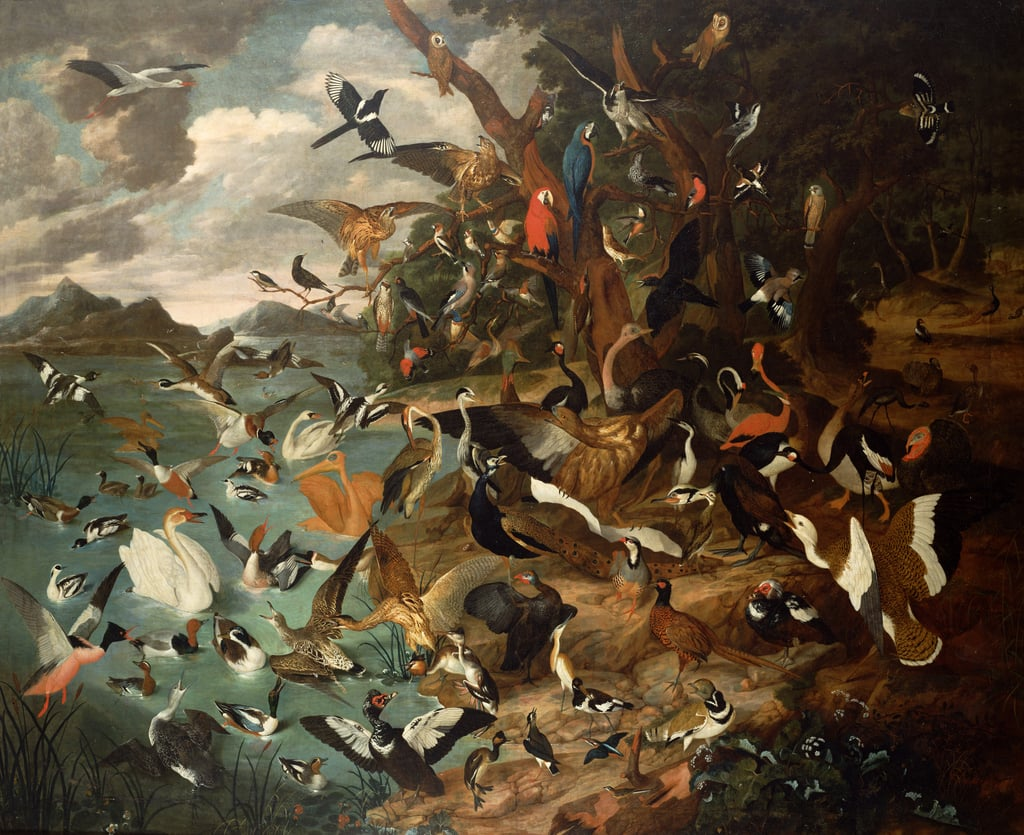
Above: The Parliament of Birds, Karl Wilhelm de Hamilton (1750)
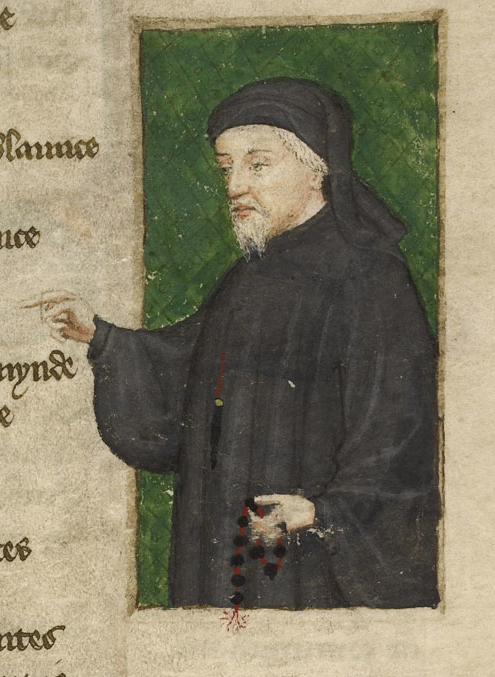
Above: English writer Geoffrey Chaucer (1343 – 1400)
Honoring the first anniversary of the engagement of 15-year-old King Richard II of England to 15-year-old Anne of Bohemia, Chaucer wrote:
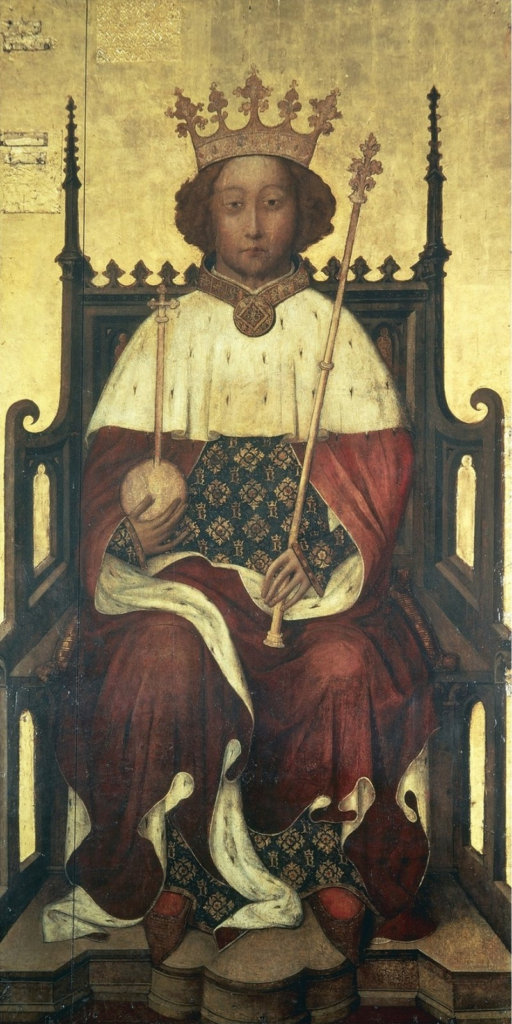
Above: English King Richard II (1367 – 1400)

Above: English Queen Anne of Bohemia (1366 – 1394)
“For this was on Saint Valentine’s Day
When every fowl comes there to choose his match
Of every kind that men may think of
And that so huge a noise they began to make
That earth and air and tree and every lake
Was so full, that not easily was there space
For me to stand — so full was all the place.”
Readers have uncritically assumed that Chaucer was referring to February 14 as Saint Valentine’s Day.
Henry Ansgar Kelly has observed that Chaucer might have had in mind the feast day of St. Valentine of Genoa, an early Bishop of Genoa who died around 307.
It was probably celebrated on May 3.

Above: Cathedral of San Lorenzo, Genova, Italia
A treaty providing for Richard II and Anne’s marriage, the subject of the poem, was signed on May 2, 1381.
Jack B. Oruch notes that the date on which spring begins has changed since Chaucer’s time because of the precession of the equinoxes and the introduction of the more accurate Gregorian calendar only in 1582.
On the Julian calendar in use in Chaucer’s time, February 14 would have fallen on the date now called February 23, a time when some birds have started mating and nesting in England.
Chaucer’s Parliament of Fowls refers to a supposedly established tradition, but there is no record of such a tradition before Chaucer.
The speculative derivation of sentimental customs from the distant past began with 18th-century antiquaries, notably Alban Butler, the author of Butler’s Lives of Saints, and have been perpetuated even by respectable modern scholars.
Most notably, the idea that Valentine’s Day customs perpetuated those of the Roman Lupercalia has been accepted uncritically and repeated, in various forms, up to the present.
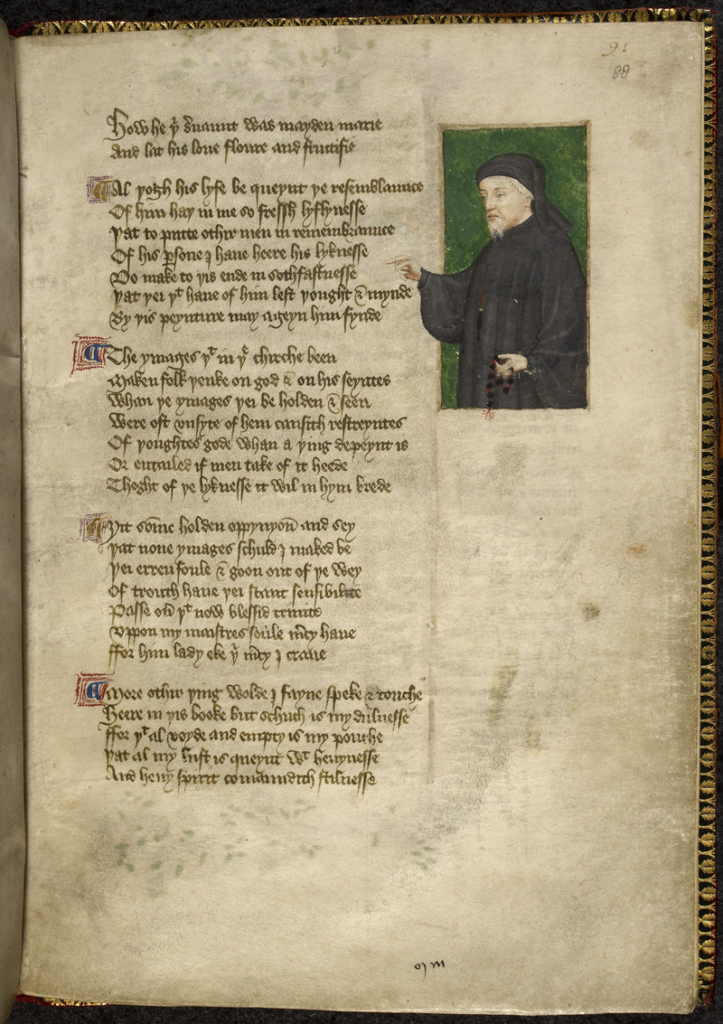
Above: Parliament of Fowls, Geoffrey Chaucer
Three other authors who made poems about birds mating on St. Valentine’s Day around the same years:
- Otton de Grandson from Savoy

Above: French knight Otto de Grandson (1238 – 1328)
- John Gower from England
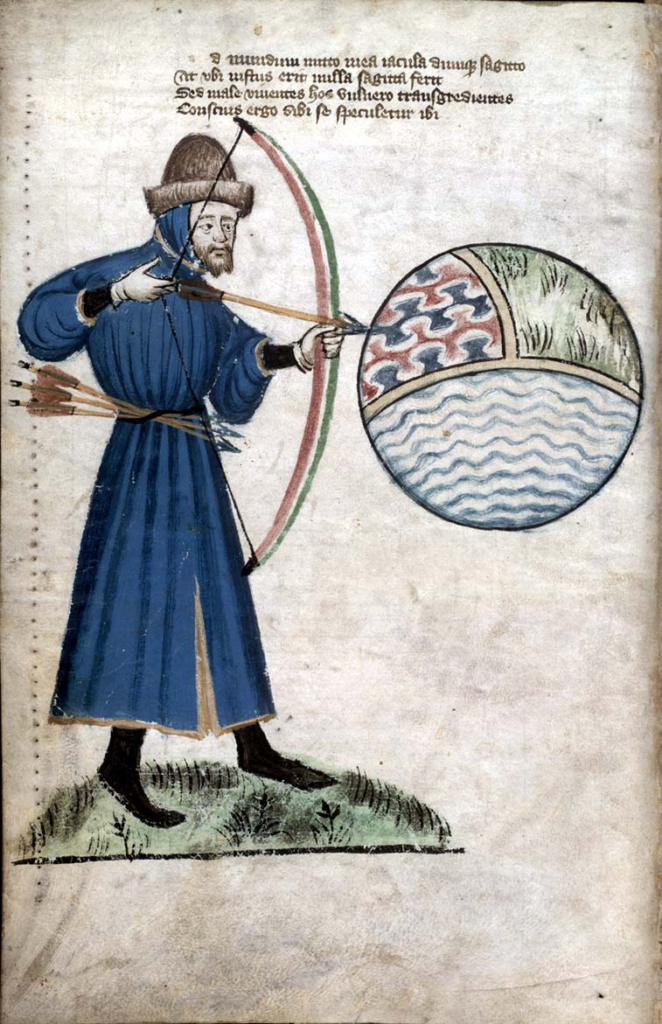
Above: English poet John Gower (1330 – 1408) in a portrait from a book with his Vox Clamantis / Chronica Tripertita (1400) – Gower is depicted as an archer with a bow and arrow. Gower prepares to shoot the world, a sphere with compartments representing earth, air and water. The Vox Clamantis reads “I hurl my darts at the world and I shoot my arrows; Yet where there is a just man, no arrow strikes. But I wound those transgressors who live evilly; Therefore, let him who is conscious of being in the wrong look to himself in that respect.“
- a knight called Pardo from Valencia.
Chaucer most probably predated all of them, but due to the difficulty of dating medieval works, it is not possible to ascertain which of the four may have influenced the others.

Above: Valencia, España
The earliest description of February 14 as an annual celebration of love appears in the Charter of the Court of Love.
The Charter, allegedly issued by Charles VI of France at Mantes-la-Jolie in 1400, describes lavish festivities to be attended by several members of the Royal Court, including a feast, amorous song and poetry competitions, jousting and dancing.
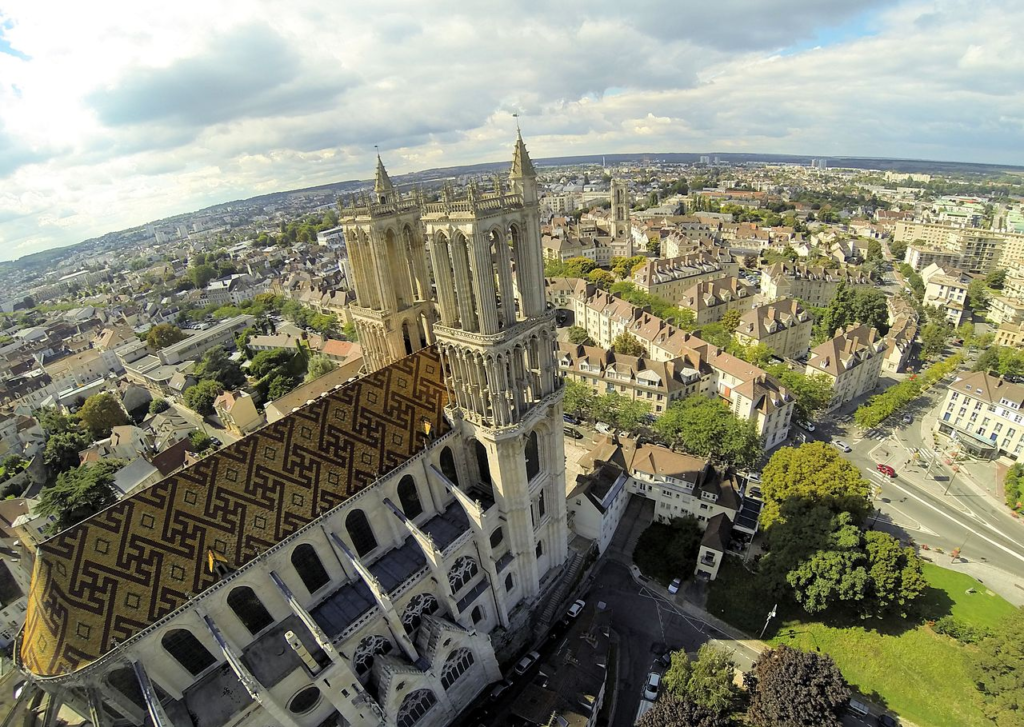
Above: Mantes la Jolie, France
Amid these festivities, the attending ladies would hear and rule on disputes from lovers.
No other record of the Court exists.

Above: French King Charles VI (1368 – 1422)
None of those named in the Charter were present at Mantes except Charles’s Queen, Isabeau of Bavaria, who may well have imagined it all while waiting out a plague.
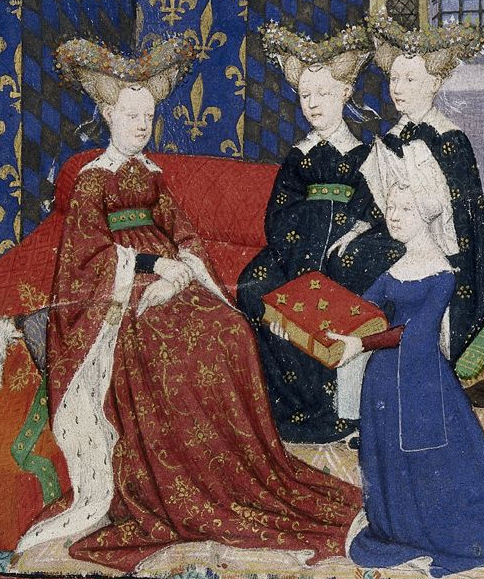
Above: Italian writer Christine de Pisan (1364 – 1430) presenting her book to French Queen Isabeau of Bavaria (1370 – 1435)
The earliest surviving valentine is a 15th-century rondeau written by Charles, Duke of Orléans to his wife, which commences.
“Je suis desja d’amour tanné
Ma tres doulce Valentinée…”Charles d’Orléans, Rondeau VI, lines 1–2

Above: French Duke Charles I of Orléans (1394 – 1465)
At the time, the Duke was being held in the Tower of London following his capture at the Battle of Agincourt, 1415.

Above: Tower of London, England
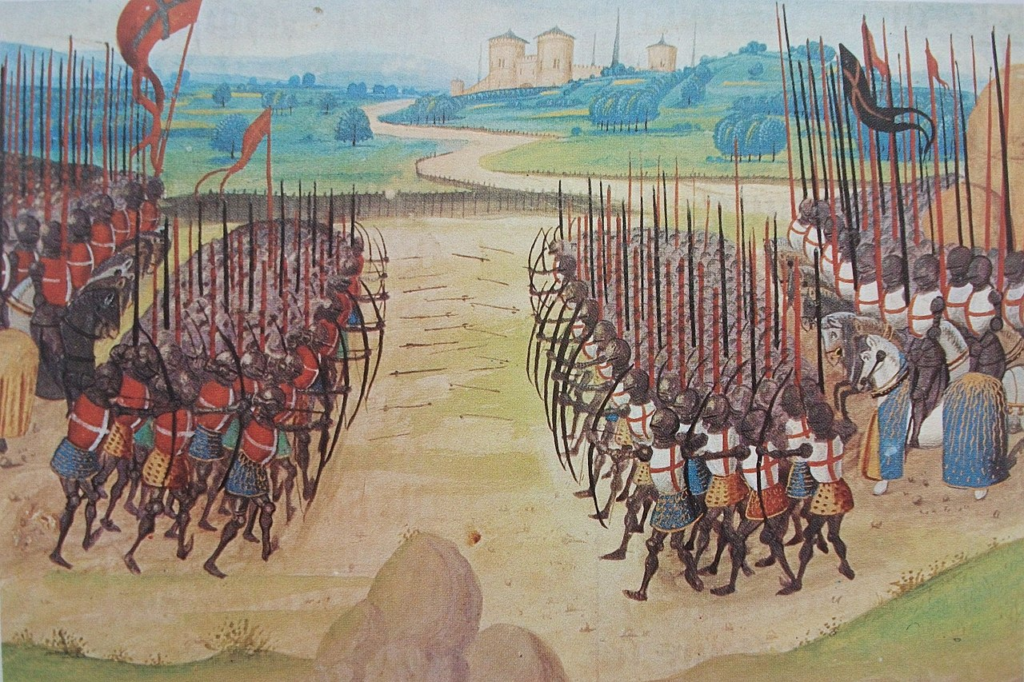
Above: Battle of Agincourt, France, 25 October 1415
The earliest surviving valentines in English appear to be those in the Paston Letters, written in 1477 by Margery Brewes to her future husband John Paston “my right well-beloved Valentine“.
(The Paston Letters are a collection of correspondence between members of the Paston family of Norfolk gentry and others connected with them in England between the years 1422 and 1509.
The collection also includes state papers and other important documents.
The letters are a noted primary source for information about life in England during the Wars of the Roses (1455 – 1487) and the early Tudor period (1485 – 1603).
They are also of interest to linguists and historians of the English language, being written during the Great Vowel Shift (a series of pronunciation changes in the vowels of the English language that took place primarily between the 1400s and 1600s, beginning in southern England and today having influenced effectively all dialects of English) and documenting the transition from Late Middle English to Early Modern English.)
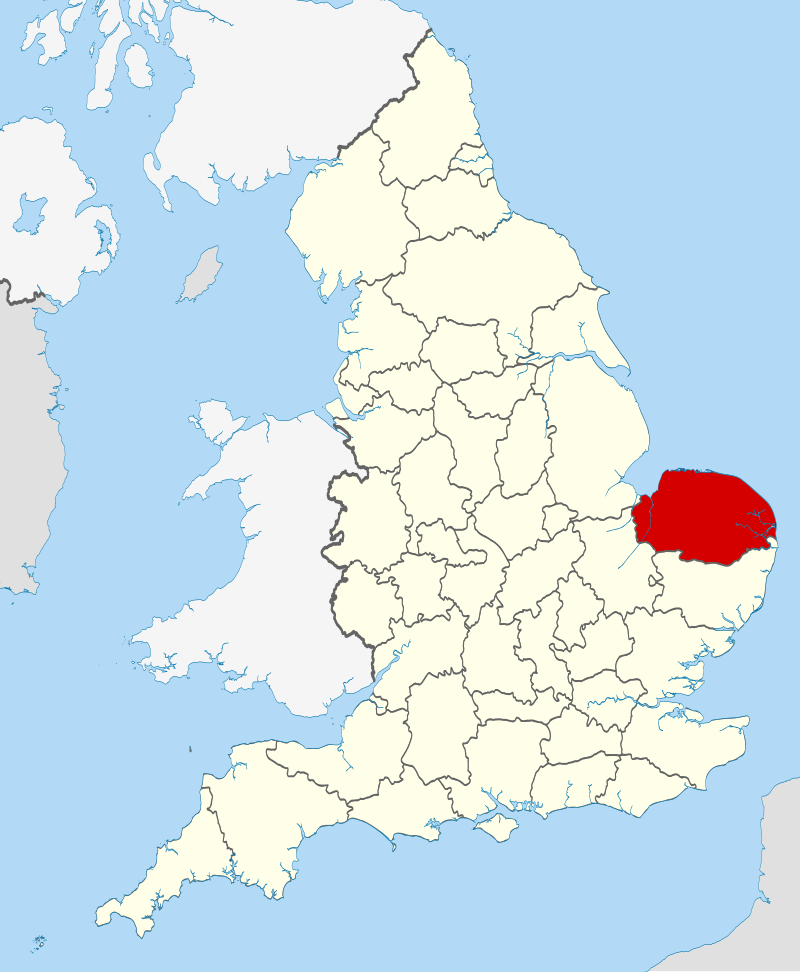
Above: (in red) Norfolk County, England
Saint Valentine’s Day is mentioned ruefully by Ophelia in William Shakespeare’s Hamlet (1601):
“Tomorrow is Saint Valentine’s Day,
All in the morning betime,
And I a maid at your window,
To be your Valentine.
Then up he rose, and donn’d his clothes,
And dupp’d the chamber-door;
Let in the maid, that out a maid
Never departed more.”William Shakespeare, Hamlet, Act IV, Scene 5

Above: English writer William Shakespeare (1564 – 1616)
John Donne used the legend of the marriage of the birds as the starting point for his epithalamion celebrating the marriage of Elizabeth, daughter of James I of England, and Frederick V, Elector Palatine, on Valentine’s Day:
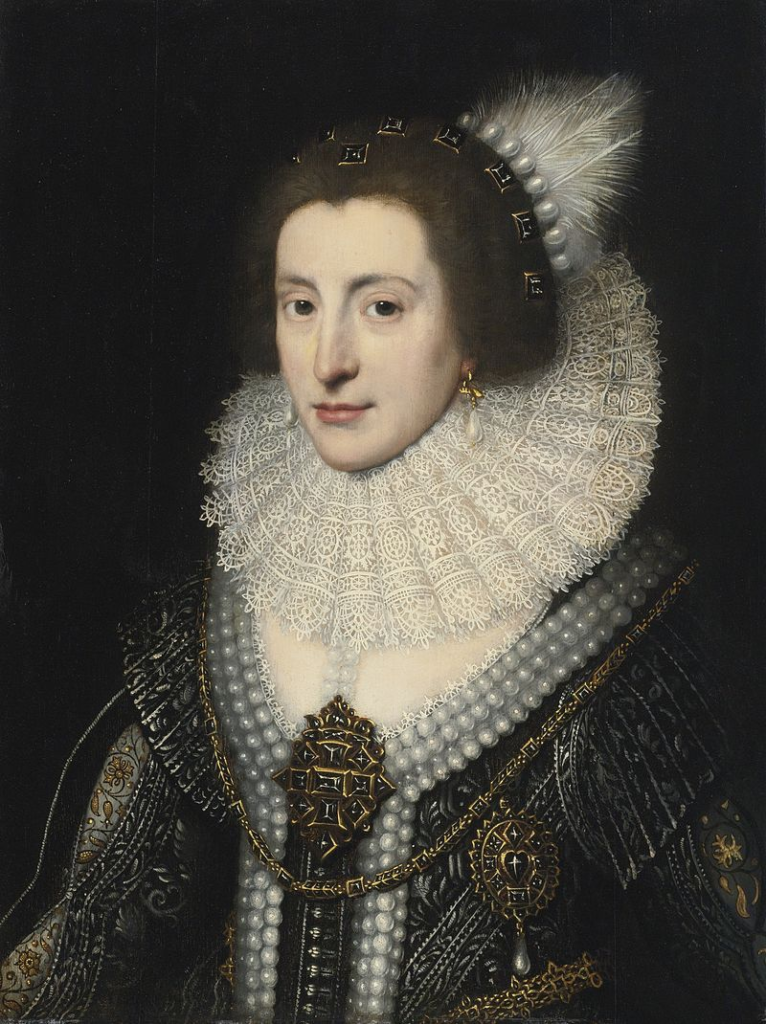
Above: Bohemian Queen Elizabeth Stuart (1596 – 1662)
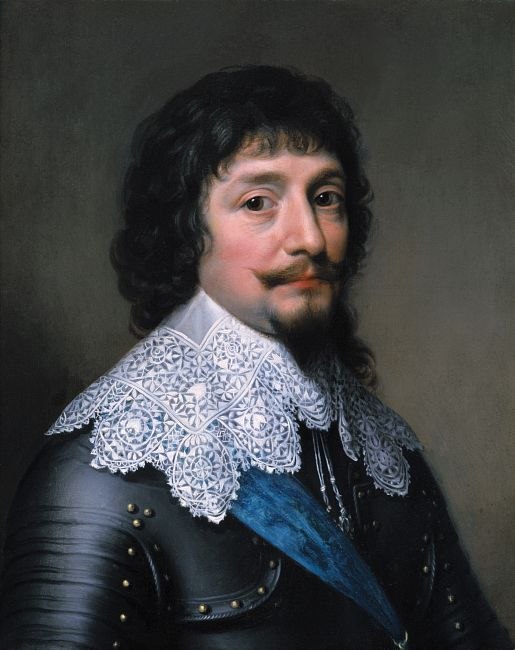
Above: Bohemian King Frederick V (1596 – 1632)
“Hail Bishop Valentine whose day this is
All the air is thy Diocese
And all the chirping choristers
And other birds are thy parishioners
Thou marries every year
The lyric Lark and the gray whispering Dove,
The Sparrow that neglects his life for love,
The household bird with the red stomach
Thou makes the Blackbird speed as soon,
As doth the Goldfinch, or the Halcyon
The Husband Cock looks out and soon is sped
And meets his wife, which brings her feather-bed.
This day more cheerfully than ever shineThis day which might inflame thy self old Valentine.”
John Donne, Epithalamion Upon Frederick Count Palatine and the Lady Elizabeth married on St. Valentines day
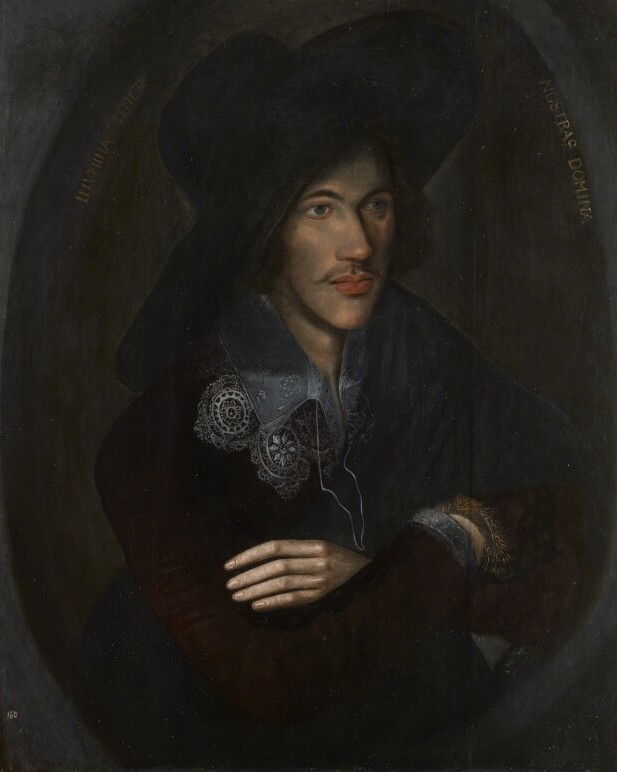
Above: English poet John Donne (1571 – 1631)
The verse “Roses are red” echoes conventions traceable as far back as Edmund Spenser’s epic The Faerie Queene (1590):
“She bathed with roses red, and violets blew,
And all the sweetest flowers, that in the forest grew.”

Above: English poet Edmund Spenser (1552 – 1599)
The modern cliché Valentine’s Day poem can be found in Gammer Gurton’s Garland (1784), a collection of English nursery rhymes published in London by Joseph Johnson:
“The rose is red, the violet’s blue,
The honey’s sweet, and so are you.
Thou art my love and I am thine;
I drew thee to my Valentine:
The lot was cast and then I drew,And Fortune said it should be you.”

Above: London publisher Joseph Johnson (1738 – 1809)
In 1797, a British publisher issued The Young Man’s Valentine Writer, which contained scores of suggested sentimental verses for the young lover unable to compose his own.
Printers had already begun producing a limited number of cards with verses and sketches, called “mechanical valentines“.
Paper Valentines became so popular in England in the early 19th century that they were assembled in factories.
Fancy Valentines were made with real lace and ribbons, with paper lace introduced in the mid-19th century.
In 1835, 60,000 Valentine cards were sent by post in the United Kingdom, despite postage being expensive.
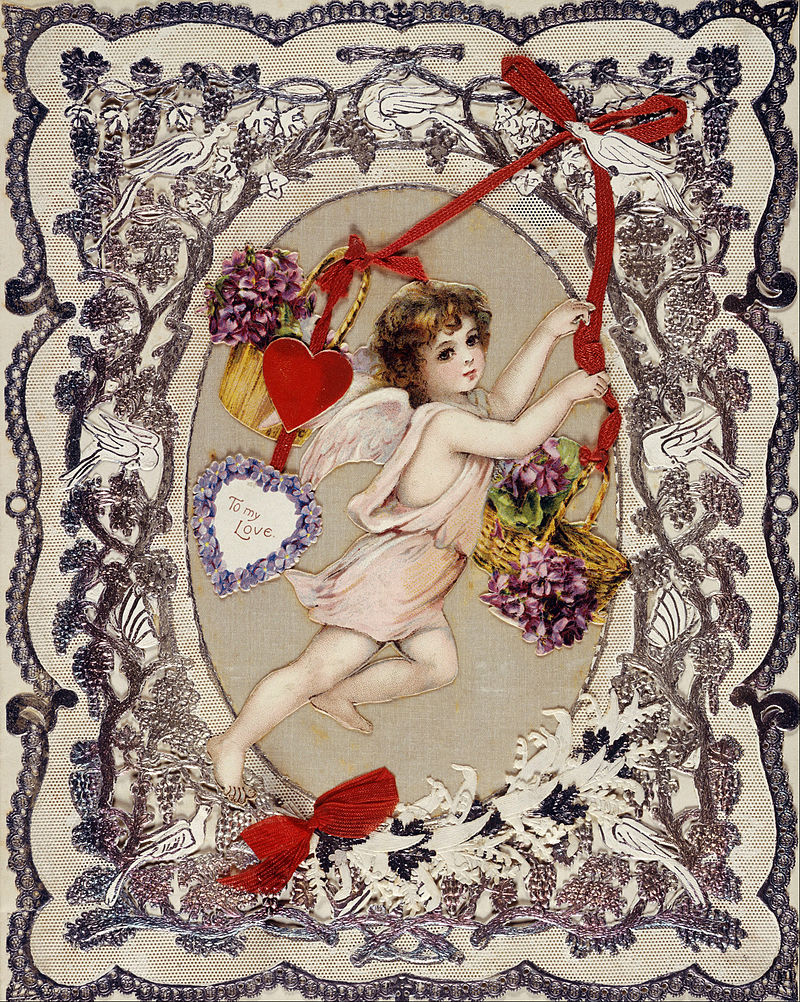
A reduction in postal rates following Sir Rowland Hill’s postal reforms with the 1840 invention of the postage stamp (Penny Black) saw the number of Valentines posted increase, with 400,000 sent just one year after its introduction, and ushered in the less personal but easier practice of mailing Valentines.
That made it possible for the first time to exchange cards anonymously, which is taken as the reason for the sudden appearance of racy verse in an era otherwise prudishly Victorian.
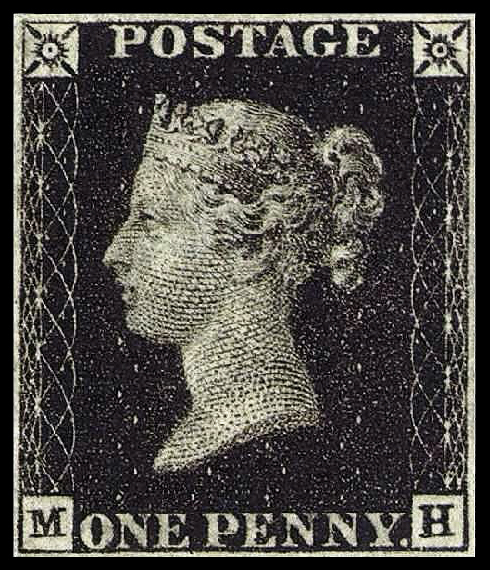
Above: Penny black postage stamp
Production increased, “Cupid’s Manufactory” as Charles Dickens termed it, with over 3,000 women employed in manufacturing.
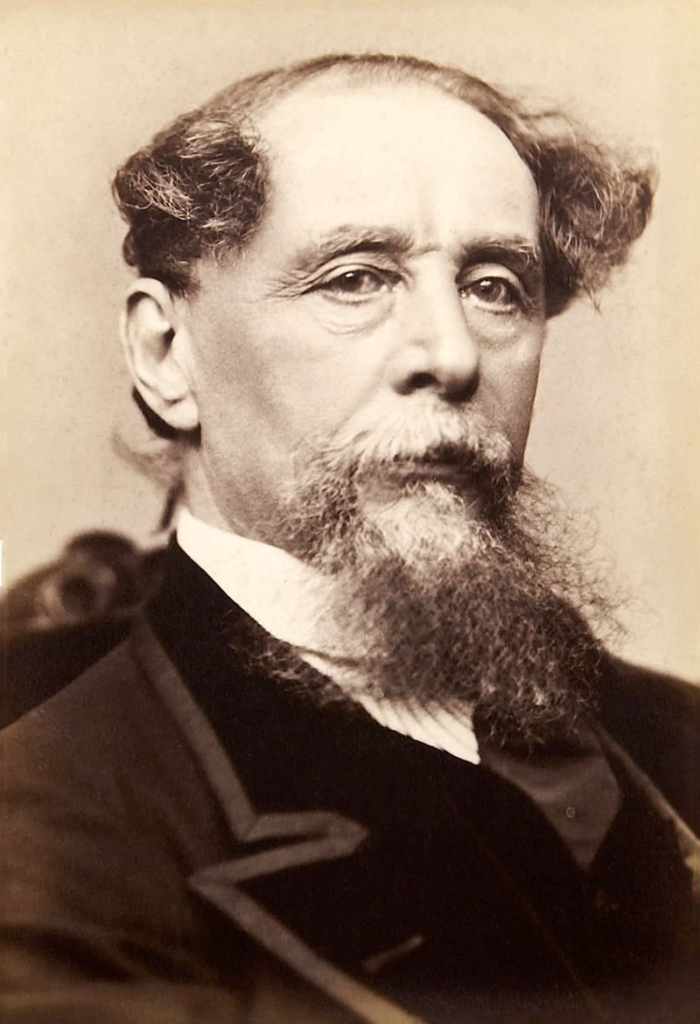
Above: English writer Charles Dickens (1812 – 1870)
The Laura Seddon Greeting Card Collection at Manchester Metropolitan University gathers 450 Valentine’s Day cards dating from early 19th century Britain, printed by the major publishers of the day.
The collection appears in Seddon’s book Victorian Valentines (1996).

In the US, the first mass-produced Valentines of embossed paper lace were produced and sold shortly after 1847 by Esther Howland (1828 – 1904) of Worcester, Massachusetts.
Her father operated a large book and stationery store, but Howland took her inspiration from an English Valentine she had received from a business associate of her father.
Intrigued with the idea of making similar Valentines, Howland began her business by importing paper lace and floral decorations from England.
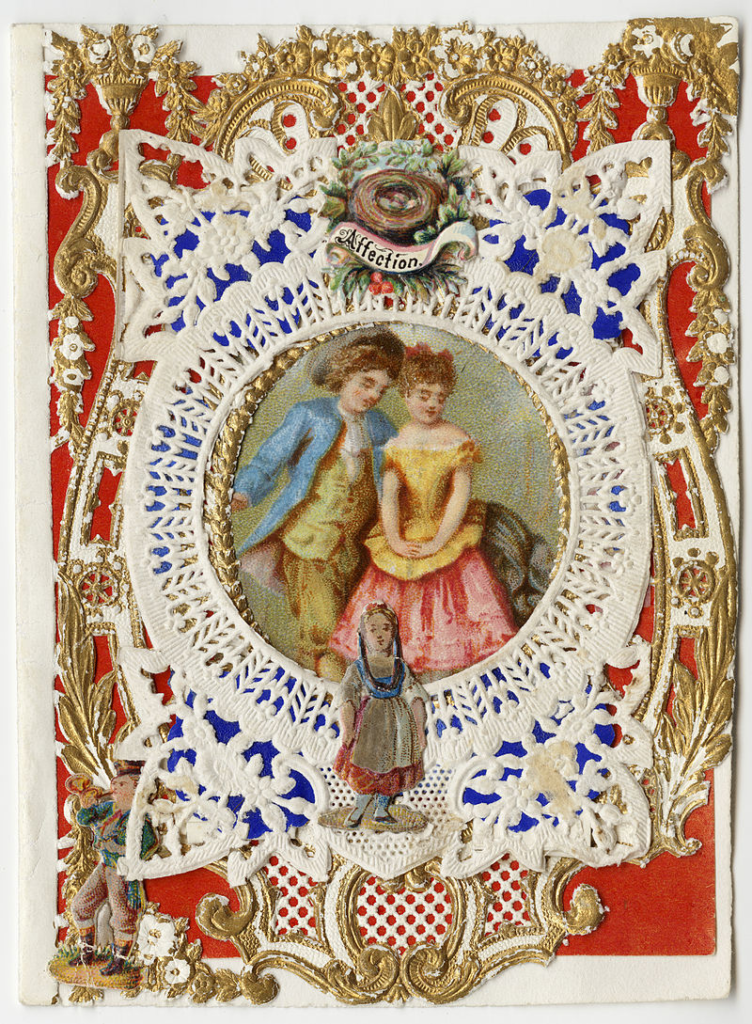
A writer in Graham’s American Monthly observed in 1849:
“Saint Valentine’s Day is becoming, nay it has become, a national holyday.”
The English practice of sending Valentine’s cards was established enough to feature as a plot device in Elizabeth Gaskell’s Mr. Harrison’s Confessions (1851):
“I burst in with my explanations:
‘The valentine I know nothing about.’
‘It is in your handwriting‘, said he coldly.”
Since 2001, the Greeting Card Association has been giving an annual “Esther Howland Award for a Greeting Card Visionary“.
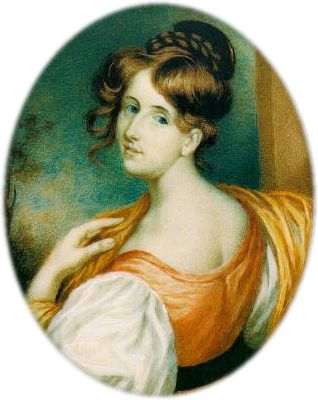
Above: English writer Elizabeth Gaskell (1810 – 1865)
Since the 19th century, handmade cards have given way to mass-produced greeting cards.
In the UK, just under half of the population spend money on their Valentines.
Around £1.9 billion was spent in 2015 on cards, flowers, chocolates, and other gifts.
The mid-19th century Valentine’s Day trade was a harbinger of further commercialized holidays in the US to follow.

In 1868, the British chocolate company Cadbury created Fancy Boxes – a decorated box of chocolates – in the shape of a heart for Valentine’s Day.

Boxes of filled chocolates quickly became associated with the holiday.

In the second half of the 20th century, the practice of exchanging cards was extended to all manner of gifts, such as giving jewelry.
The US Greeting Card Association estimates that approximately 190 million valentines are sent each year in the US.
Half of those valentines are given to family members other than husband or wife, usually to children.
When the valentine-exchange cards made in school activities are included the figure goes up to 1 billion, teachers become the people receiving the most valentines.

The increase in use of the Internet around the turn of the millennium is creating new traditions.
Every year, millions of people use digital means of creating and sending Valentine’s Day greeting messages such as e-cards, love coupons and printable greeting cards.

Valentine’s Day is considered by some to be a Hallmark holiday due to its commercialization.

In 2016, the Catholic Bishops of England and Wales established a novena prayer “to support single people seeking a spouse ahead of St Valentine’s Day“.

Above: Coat of arms of the Catholic Bishops Conference of England and Wales
Valentine’s Day customs — sending greeting cards (known as “valentines“), offering confectionery and presenting flowers —developed in early modern England and spread throughout the English-speaking world in the 19th century.
In the later 20th and early 21st centuries, these customs spread to other countries, like those of Halloween, and aspects of Christmas (such as Santa Claus).

Valentine’s Day is celebrated in many East Asian countries, with Singaporeans, Chinese, and South Koreans spending the most money on Valentine’s gifts.
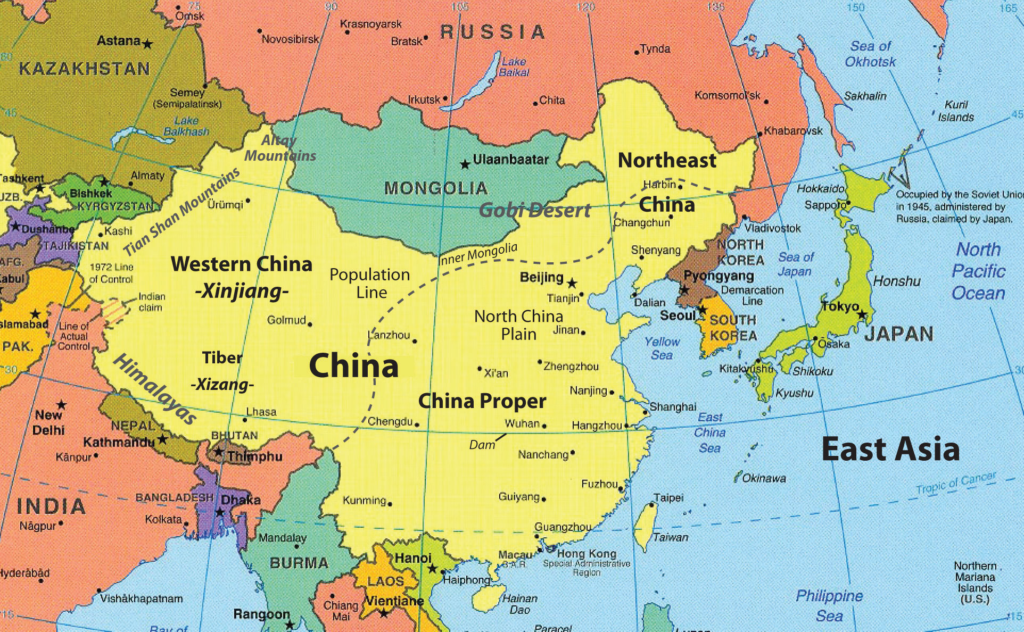
Above: Map of East Asia
In most Latin American countries — for example, Costa Rica, Mexico, and the US territory of Puerto Rico — Saint Valentine’s Day is known as Día de los Enamorados (‘Lovers’ Day‘) or as Día del Amor y la Amistad (‘Love and Friendship Day‘).
It is also common to see people perform “acts of appreciation” for their friends.

Above: (in green) Latin America
In Guatemala it is known as Día del Cariño (‘Affection Day‘).

Above: Flag of Guatemala
Some countries, in particular the Dominican Republic and El Salvador, have a tradition called Amigo secreto (‘secret friend’), which is a game similar to the Christmas tradition of Secret Santa.

Above: Flag of the Dominican Republic

Above: Flag of El Salvador
In Brazil, the Dia dos Namorados (‘Lovers’ Day‘, or ‘Boyfriends/Girlfriends Day‘) is celebrated on June 12, probably because that is the day before Saint Anthony’s Day — a saint recognized for blessing young couples with happy and prosperous marriages — when traditionally many single women perform popular rituals called simpatias in order to find a good husband or boyfriend.
Couples exchange gifts, chocolates, cards and flower bouquets.
The February 14 Valentine’s Day is not celebrated at all because it is usually too close to Brazilian Carnival, which can fall anywhere from early February to early March and lasts almost a week.

Above: Flag of Brazil
Colombia celebrates Día del amor y la amistad (‘Love and Friendship Day‘) on the 3rd Saturday in September instead.
Amigo Secreto is also popular there.

Above: Flag of Colombia
On the United States mainland, about 190 million Valentine’s Day cards are sent each year, not including the hundreds of millions of cards school children exchange.
Valentine’s Day is a major source of economic activity, with total expenditure topping $18.2 billion in 2017, or over $136 per person.
This was an increase from $108 per person in 2010.
Purchases include jewelery, flowers, chocolates, candy, and greeting cards.

Roses, especially red roses, are the most popular flower.
In the US, roses are generally imported via refrigerated airplanes from Colombia and Ecuador.
The most popular locally grown and seasonally compatible flowers are early spring tulips.
In 2019, a survey by the National Retail Federation found that over the previous decade, the percentage of people who celebrate Valentine’s Day had declined steadily.

From their survey results, they found three primary reasons:
- over-commercialization of the holiday
- not having a spouse or significant other to celebrate it with
- not being interested in celebrating it.

Above: Flag of the United States of America
In pre-Taliban years, Koch-e-Gul-Faroushi (‘Flower Street’) in downtown Kabul used to be adorned with innovative flower arrangements, to attract the Valentine’s Day-celebrating youth.
In the Afghan tradition, love is often expressed through poetry.
A new generation of budding poets, such as Ramin Mazhar and Mahtab Sahel, express themselves through poetry, using Valentine’s Day as a theme to voice concerns about the erosion of freedoms.
In their political commentary, they defy fear by saying:
“I kiss you amid the Taliban.”

Above: Flag of Afghanistan
Valentine’s Day was first celebrated in Bangladesh by Shafik Rehman, a journalist and editor of the newspaper Jaijaidin, in 1993.
He was acquainted with Western culture from studying in London.
He highlighted Valentine’s Day to the Bangladeshi people through Jaijaidin.
Rehman is called the “father of Valentine’s Day in Bangladesh“.
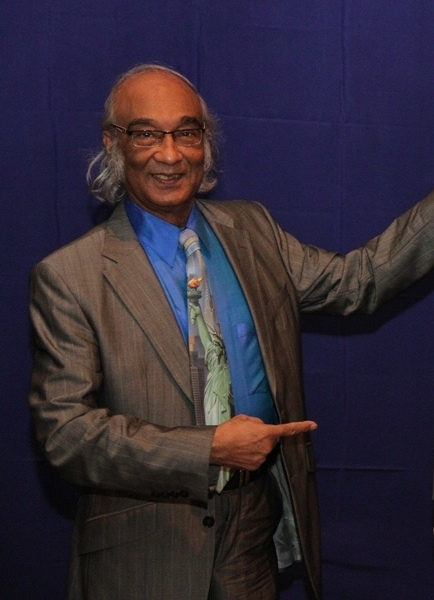
Above: Bangladesh writer Shafik Rehman
On this day, people in various types of relationship, including lovers, friends, husbands and wives, mothers and children, students and teachers, express their love for each other with flowers, chocolates, cards and other gifts.
On this day, various parks and recreation centers of the country are full of people of love.
No public holiday, however, is declared on this day in Bangladesh.
Some in Bangladesh feel that celebrating this day is not acceptable from a cultural and Islamic point of view.
Before the celebration of Valentine’s Day, February 14 was celebrated as the anti-authoritarian day in Bangladesh.
However, that day has been disregarded by people to celebrate Valentine’s Day.

Above: Flag of Bangladesh
In Chinese, Valentine’s Day is called “lovers’ festival“.
The “Chinese Valentine’s Day” is the Qixi Festival (meaning “The Night of Sevens“), celebrated on the 7th day of the 7th month of the lunar calendar.

Above: Flag of China
According to the legend, the Cowherd star and the Weaver Maid star are normally separated by the Milky Way (silvery river) but are allowed to meet by crossing it on the 7th day of the 7th month of the Chinese calendar.
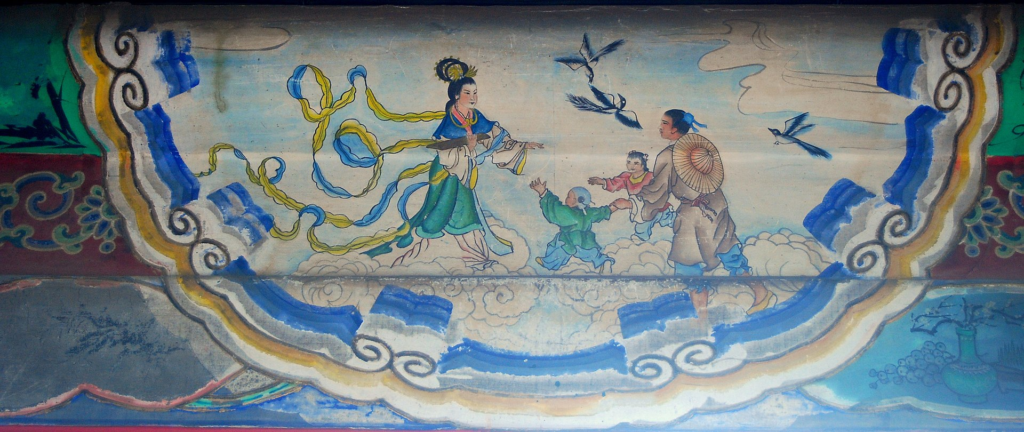
Above: The Weaver Girl and the Cowherd
In recent years, celebrating White Day has also become fashionable among some young people.
White Day is celebrated annually on March 14, one month after Valentine’s Day, when men give reciprocal gifts to women who gave them gifts on Valentine’s Day.
It began in Japan in 1978.
Its observance has spread to several other East Asian nations like China, Taiwan, South Korea and countries worldwide.

Above: White Day cake
In ancient India, there was a tradition of adoring Kamadeva, the lord of love – exemplified by the erotic carvings in the Khajuraho Group of Monuments and by the writing of the Kama Sutra.

Above: Khajuraho Group of Monuments, India
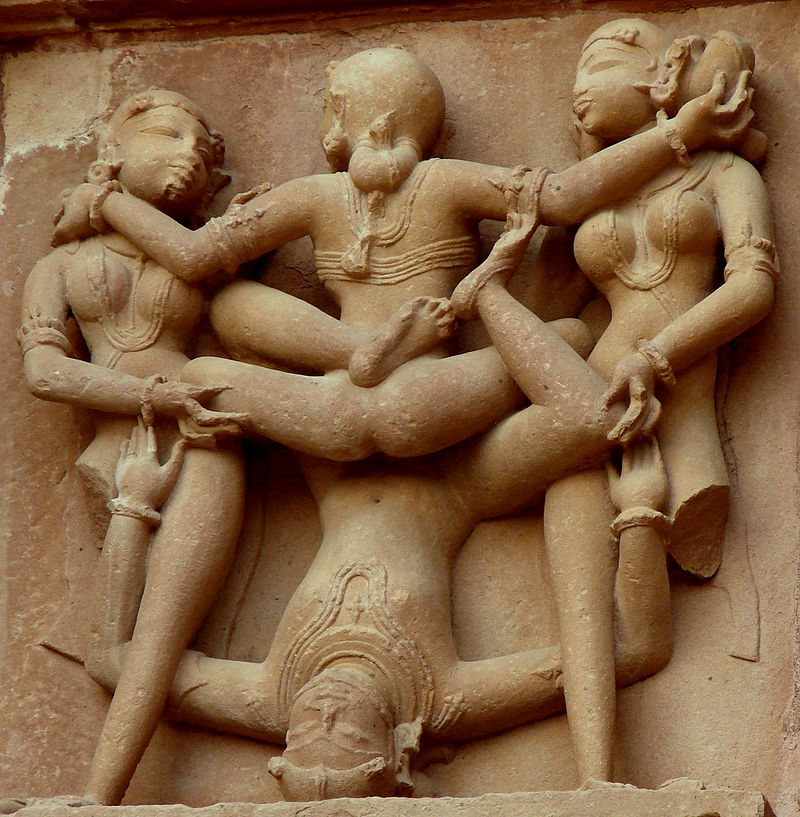
Above: Kama Sutra 106
This tradition was lost around the Middle Ages, when Kamadeva was no longer celebrated, and public displays of sexual affection became frowned upon.
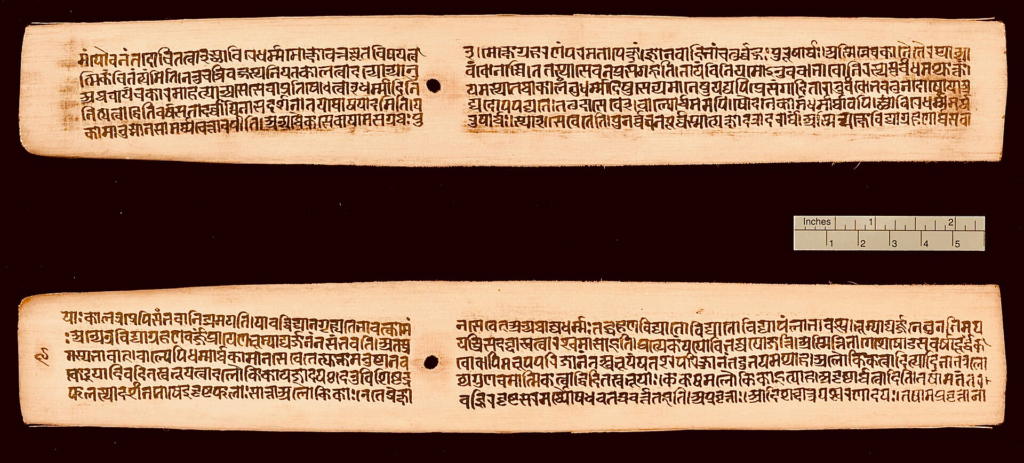
Above: The Kama Sutra is a Hindu text, whose title literally means “a treatise on desire / emotional pleasure / love / sex“.
It is likely a 3rd century text according to scholars, but some estimates place it centuries before or after that range.
It is a Sanskrit text by Vatsyayana Mallanaga.
Vatsyayana mentions in the Kama Sutra that his work relies on earlier Kama sastra texts.
He cites them, but these older texts have not survived into the modern era.
The Kamasutra exists in many Indic scripts.
Being a sutra, it is terse and distilled.
The text has attracted scholarly studies since the ancient times, and these are called bhasya (commentaries that include interpretation, citations and views of the scholar).
It is one of many popular Hindu text that has attracted translations in and outside India over the centuries.
One of the most important and well-known commentaries on the Kama Sutra is by Yashodhara, named Jayamangala (13th century).
The manuscript above is a commentary copied in Nepal possibly in 13th century, but not the main (mula) text.

This repression of public affections began to loosen in the 1990s.
Valentine’s Day celebrations did not catch on in India until around 1992.

Above: Flag of India
It was spread due to the programs in commercial TV channels, such as MTV, dedicated radio programs, and love letter competitions, in addition to an economical liberalization that allowed the explosion of the valentine card industry.

The celebration has caused a sharp change on how people have been displaying their affection in public since the Middle Ages.
On a 2018 online survey, it was found that 68% of the respondents did not wish to celebrate Valentine’s Day.
It can be also observed that different religious groups, including Hindu, Muslim and Christian people of India do not support Valentine’s Day.
In modern times, Hindu and Islamic traditionalists have considered the holiday to be cultural contamination from the West, a result of globalization in India.
Shiv Sena and the Sangh Parivar have asked their followers to shun the holiday and the “public admission of love” because of them being “alien to Indian culture“.

Above: Bow and arrow logo of the Shiv Sena Party
The celebration of Valentine’s Day in India began to become popular following the economic liberalization.
There have been protests against the celebrations by groups who consider it a Western influence.
The groups who disrupt Valentine’s Day celebrations have been described as Hindu hardliners, extremists and militants.
Almost every year, law and order problems occur on 14 February in many cities in India due to mobocracy and protests.
Although these protests are organized by political elites, the protesters themselves are middle-class Hindu men who fear that the globalization will destroy the traditions in their society: arranged marriages, Hindu joint families, full-time mothers, etc.

Despite these obstacles, Valentine’s Day is becoming increasingly popular in India.
Valentine’s Day has been strongly criticized from a postcolonial perspective by intellectuals from the Indian left.
The holiday is regarded as a front for “Western imperialism“, “neocolonialism“, and “the exploitation of working classes through commercialism by multinational corporations“.
It is claimed that as a result of Valentine’s Day, the working classes and rural poor become more disconnected socially, politically, and geographically from the hegemonic capitalist power structure.
They also criticize mainstream media attacks on Indians opposed to Valentine’s Day as a form of demonization that is designed and derived to further the Valentine’s Day agenda.
Right wing Hindu nationalists are also hostile.
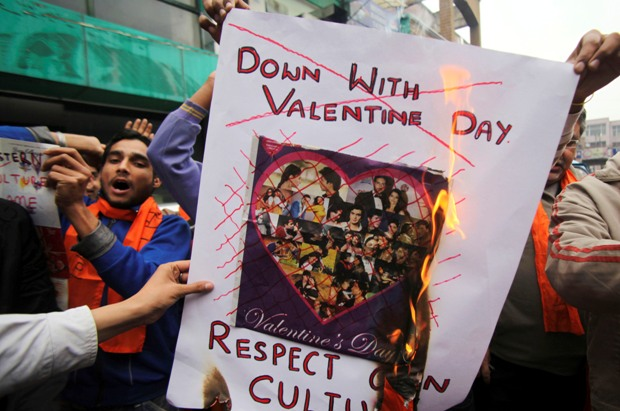
In February 2012, Subash Chouhan of the Bajrang Dal warned couples:
“They cannot kiss or hug in public places.
Our activists will beat them up.”
He said:
“We are not against love, but we criticize vulgar exhibition of love at public places.“
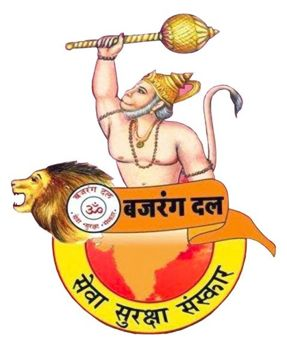
Above: Logo of the Bajrang Dal
According to The Hindu in February 2023, the Animal Welfare Board of India appealed to Indians to celebrate February 14 as “Cow Hug Day” for “emotional richness” and to increase “individual and collective happiness“.

The newspaper referenced the sacredness of cows as being equivalent to one’s mother in Indian culture, and further rued:

Above: Hindu god Krishna shown with cows listening to his music
“Vedic traditions are almost on the verge of extinction due to the progress of Western culture over time.
The dazzle of Western civilization has made our physical culture and heritage almost forgotten.“

According to Rhea Mogul of CNN, a 2017 photo series Indian women sporting cow masks by activist Sujatro Ghosh portrays a society in which cows are more valued than women.

Above: Logo of the Cable New Network
Mogul says authorities had advanced the idea to rebrand Valentine’s Day as “Cow Hug Day“.
Mogul says:
“But the move seems to have failed and later retracted after it prompted a rush of Internet memes, cartoons and jokes by TV hosts about the importance of consent.”
Media outlets like NDTV mocked the government’s plan by underlining the importance of the consent of cows before hugging them.
Mogul says critics say cow worship has been politically manipulated by cow vigilantes and motivated by conservative BJP’s majoritarian politics to harass minorities with allegations of disrespect of cows or cow slaughter.
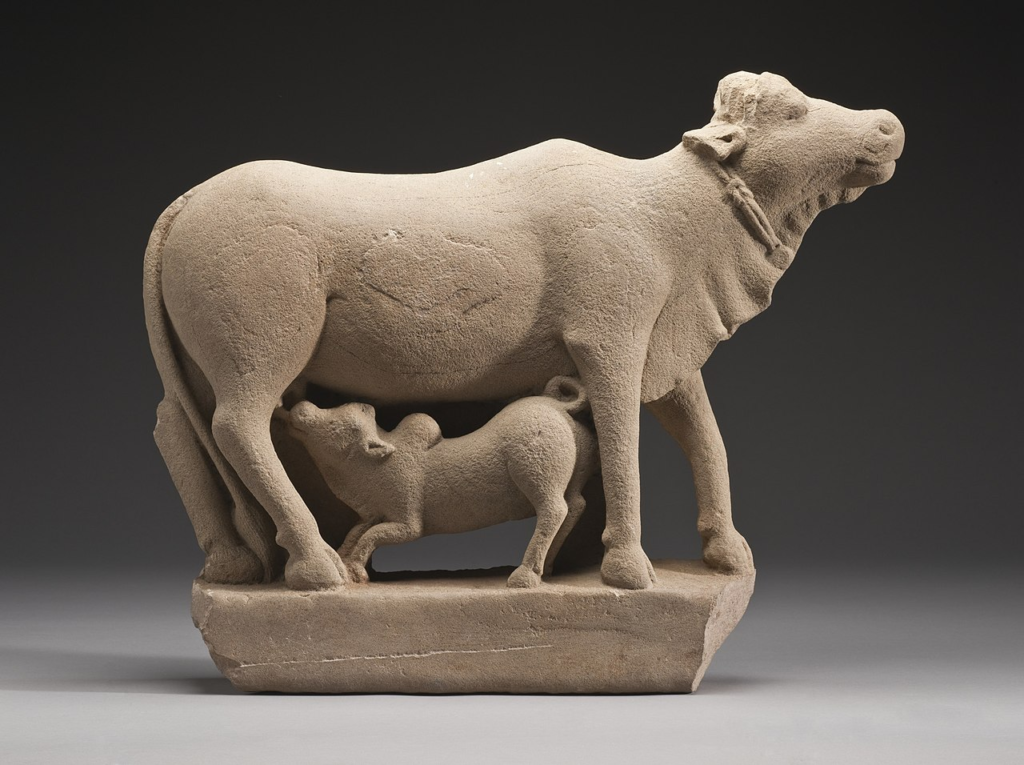
The history of Valentine’s Day in Iran dates back to the Qajar era of the latter half of the 19th century.

Above: Flag of Iran
Naser al-Din Shah Qajar did not take his wife with him during his trip to Europe and he sent her a greeting card from distance on Valentine’s Day.
This greeting card is available in Iranian museums.
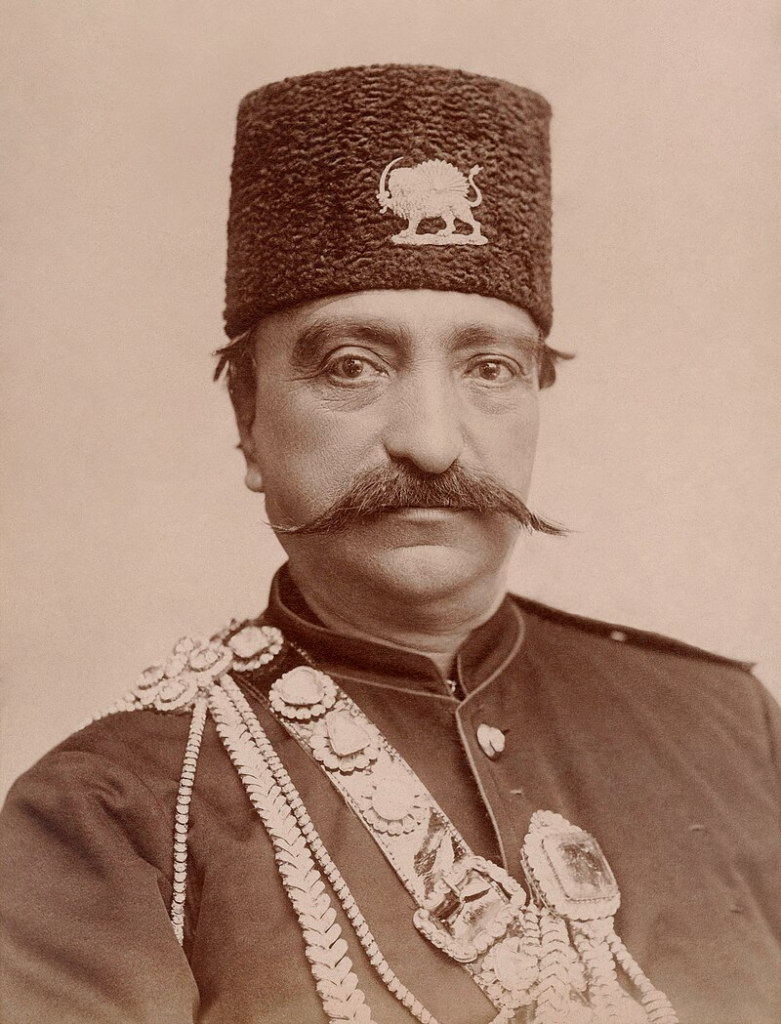
Above: Iranian Shah Naser al-Din Qajar (1831 – 1896)
Since the mid-2000s, Valentine’s Day has become increasingly popular in Iran, especially among young people.
However, it has also been the subject of heavy criticism from Iranian conservatives, who see it as part of the spread of “decadent” Western culture.
Since 2011, authorities have attempted to discourage celebrations and impose restrictions on the sale and production of Valentine’s Day-related goods, although the holiday remains popular as of 2018.
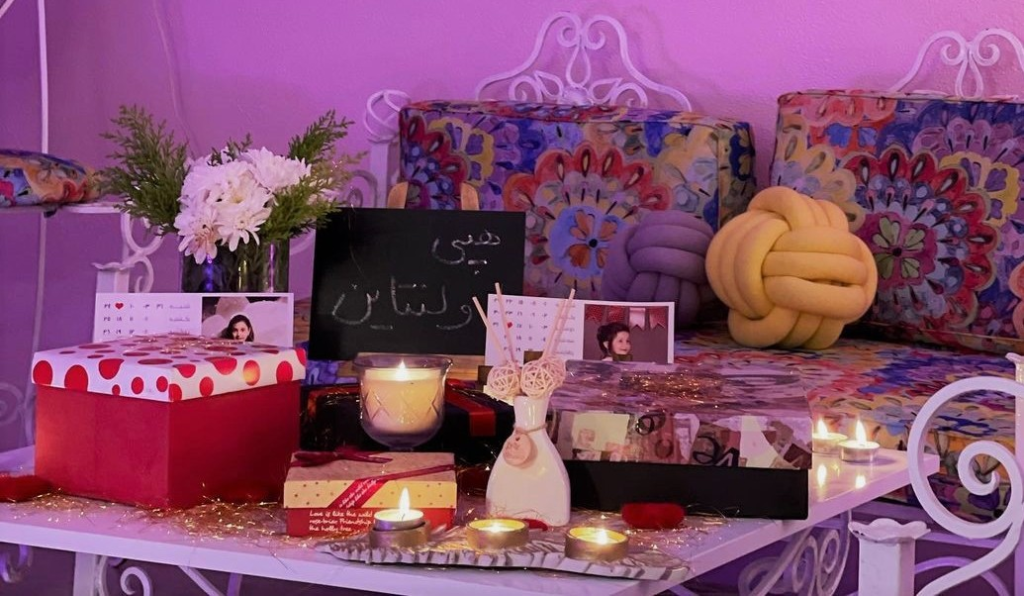
Above: Valentine’s Day, Teheran, Iran
Since 2009, certain practices pertaining to Valentine’s Day (such as giving flowers, cards, or other gifts suggestive of Valentine’s Day) are banned in Iran.
Iran’s Law Enforcement Force prosecutes distributors of goods with symbols associated with Valentine’s Day.
In 2021, the Prosecutor’s Office of Qom, Iran, stated that it would prosecute those who disseminate and provide anti-cultural symbols like those of Valentine’s Day.
Although Valentine’s Day is not accepted or approved by any institution in Iran and has no official status, it is highly accepted among a large part of the population.
One of the reasons for Valentine’s Day acceptance since the 2000s by the general population is the change in relations between the sexes, and because sexual relationships are no longer strictly limited to be within marriage.
Additionally, there have been efforts to revive the ancient Persian festival of Sepandārmazgān, which takes place around the same time, to replace Valentine’s Day.
However, as of 2016, this has also been largely unsuccessful.
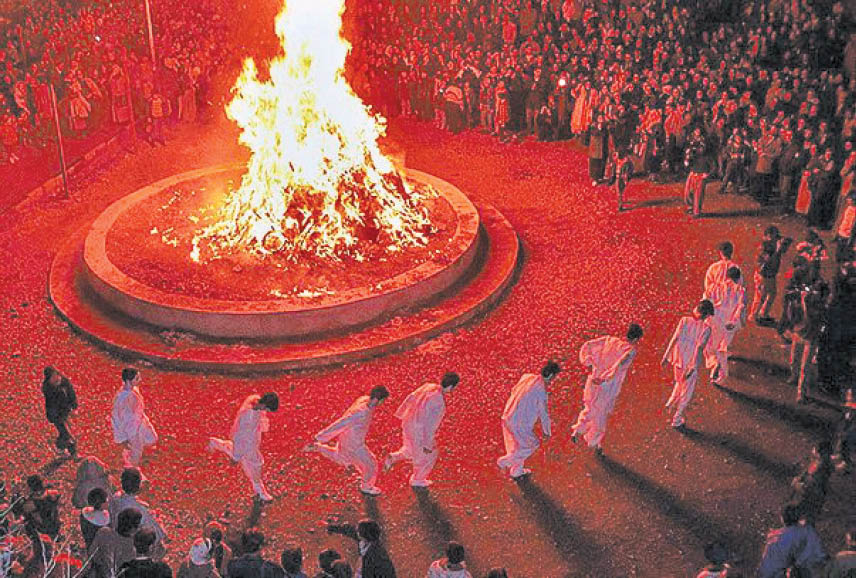
Above: Jashn-e Barzegarán (festival of agriculturists) on the 5th day of Spandarmad month
People pray for good harvest, honor the deity of Earth Spandārmad, and put signs on doors to destroy evil spirits.
It was a day where women rested and men had to bring them gifts.
In the section about the Persian calendar, Biruni writes in The Remaining Signs of Past Centuries that:
On the 5th day or Isfahdmah-Roz (day of Isfand), there is a feast on account of the identity of the names of the month and the day.
Isfandarmah is charged with the care of the Earth and with that the good, chaste and beneficient wife who loves her husband.
In the past times, this was a special feast of the women, when the men used to make them liberal presents.
This custom is still flourishing in Isfahan, Teheran and in other districts of Pahla.
In Persian it is called Mardgiran.”
Furthermore, Biruni notes that on this day, commoners ate raisins and pomegranate seeds.

Above: Iranian polymath Al-Biruni (973 – 1050) on Soviet stamp
According to Gardizi, this celebration was special for women, and they called this day also mard-giran (Persian: مردگیران, literally “possessing of men“).
The observation of this festival has been revived in modern Iran, corresponding to 24 February.
The modern festival is a celebration day of love towards mothers and wives.
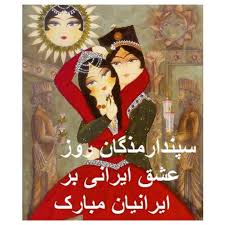
In Israel, the Jewish tradition of Tu B’Av has been revived and transformed into the Jewish equivalent of Valentine’s Day.

Above: Flag of Israel
It is celebrated on the 15th day of the month of Av (usually in late August).
In ancient times girls would wear white dresses and dance in the vineyards, where the boys would be waiting for them (Mishna Taanith).
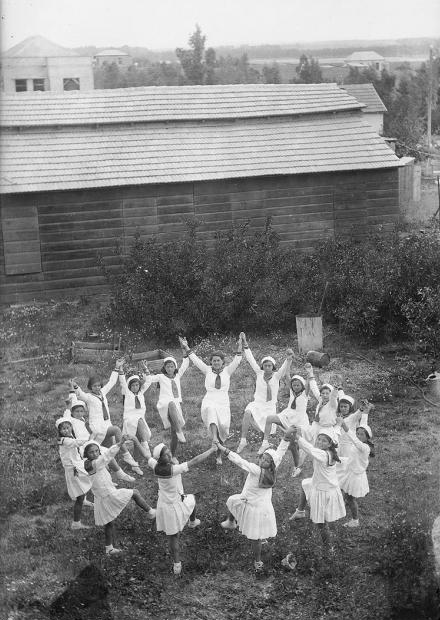
Above: Dancing girls on Tu B’Av
Today, Tu B’Av is celebrated as a second holiday of love by secular people (along with Valentine’s Day).
It shares many of the customs associated with Saint Valentine’s Day in Western societies.
In modern Israeli culture Tu B’Av is a popular day to proclaim love, propose marriage, and give gifts like cards or flowers.
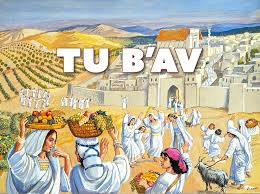
In Japan, Morozoff Ltd. introduced the holiday for the first time in 1936, when it ran an advertisement aimed at foreigners.
Later, in 1953, it began promoting the giving of heart-shaped chocolates.
Other Japanese confectionery companies followed suit thereafter.

In 1958, the Isetan department store ran a “Valentine sale“.
Further campaigns during the 1960s popularized the custom.

The custom that only women give chocolates to men may have originated from the translation error of a chocolate-company executive during the initial campaigns.
In particular, office ladies give chocolate to their co-workers.
Unlike Western countries, gifts such as greeting cards, candies, flowers, or dinner dates are uncommon, and most of the gifts-related activity is about giving the right amount of chocolate to each person.
Japanese chocolate companies make half their annual sales during this time of the year.
Many women feel obliged to give chocolates to all male co-workers, except when the day falls on a Sunday, a holiday.
This is known as giri-choko, from giri (‘obligation’) and choko, (‘chocolate‘), with unpopular co-workers receiving only “ultra-obligatory” (chō-giri choko) cheap chocolate.
This contrasts with honmei-choko (“true feeling chocolate“), chocolate given to a loved one.
Friends, especially girls, may exchange chocolate referred to as tomo-choko (from ‘tomo’ meaning “friend“).

In the 1980s, the Japanese National Confectionery Industry Association launched a successful campaign to make March 14 a “reply day“, on which men are expected to return the favor to those who gave them chocolates on Valentine’s Day, calling it White Day for the color of the chocolates being offered.
A previous failed attempt to popularize this celebration had been done by a marshmallow manufacturer who wanted men to return marshmallows to women.

In Japan, the romantic “date night” associated with Valentine’s Day is celebrated on Christmas Eve.

Above: Flag of Japan
Islamic officials in West Malaysia warned Muslims against celebrating Valentine’s Day, linking it with vice activities.
Deputy Prime Minister Muhyiddin Yassin said the celebration of romantic love was “not suitable” for Muslims.

Above: Malaysian Prime Minister Muhyiddin Yassin
Wan Mohamad Sheikh Abdul Aziz, head of the Malaysian Islamic Development Department (Jakim), which oversees the country’s Islamic policies said that a fatwa (ruling) issued by the country’s top clerics in 2005 noted that the day “is associated with elements of Christianity” and “We just cannot get involved with other religions’ worshipping rituals.”
Jakim officials planned to carry out a nationwide campaign called “Awas Jerat Valentine’s Day” (“Mind the Valentine’s Day Trap“), aimed at preventing Muslims from celebrating the day on February 14, 2011.
Activities included conducting raids in hotels to stop young couples from having unlawful sex and distributing leaflets to Muslim university students warning them against the day.
On Valentine’s Day 2011, West Malaysian religious authorities arrested more than 100 Muslim couples concerning the celebration ban.
Some of them would be charged in the Shariah Court for defying the department’s ban against the celebration of Valentine’s Day.

In East Malaysia, the celebrations are much more tolerated among young Muslim couples, although some Islamic officials and Muslim activists from the West side have told younger generations to refrain from such celebration by organizing da’wah and tried to spread their ban into the East.
In both the states of Sabah and Sarawak, the celebration is usually common with flowers.

Above: Flag of Malaysia
The concept of Valentine’s Day was introduced into Pakistan during the late 1990s with special TV and radio programs.
The Jamaat-e-Islami political party has called for the banning of Valentine’s Day celebration.

Above: Jamaat-e-Islami Pakistan logo
The socio-religio-political Islamist antagonism and judicial overreach in Pakistan towards love and Valentine’s Day in Pakistan is difficult for outsiders to comprehend.

Technically, love is not haram (forbidden) in Islam, but gender segregation and gender mixing prohibitions stifle the freedom of Muslim women.
Access to public spaces for women is severely constrained and conservative, rigid interpretations of Islam create limits on women’s behavior.
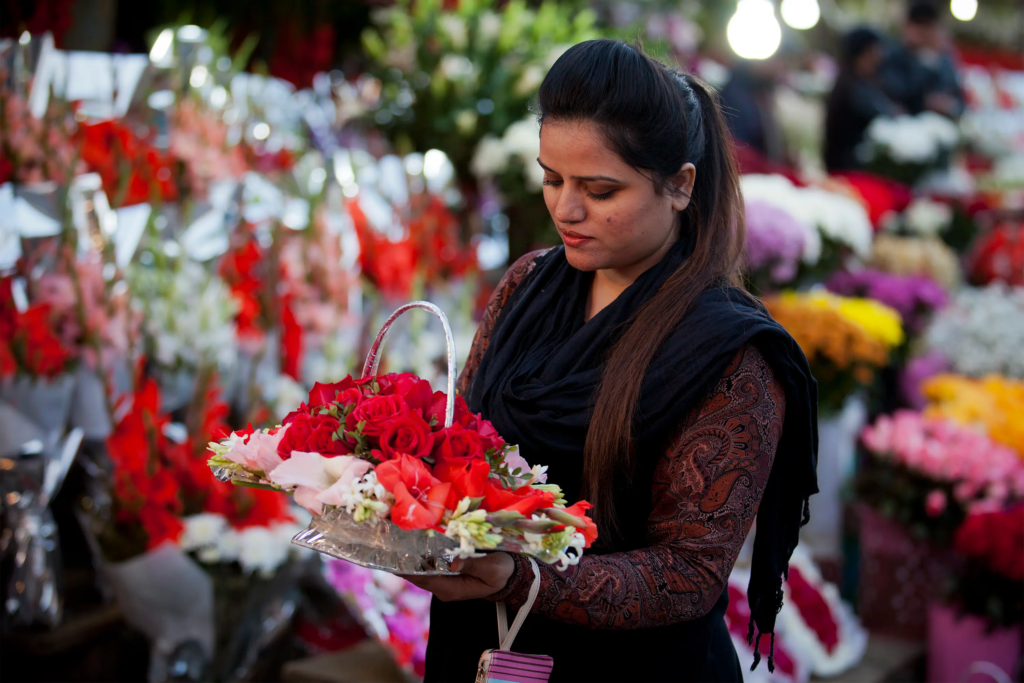
In the conservative view, women are not allowed to show their faces, not allowed to talk to unrelated men unless the communication is essential, and despite Islam offering the freedom to choose one’s life partner, in most cases, Pakistani women are unable to choose their life partner, as that is a decision made by the head of the family.
Women’s freedom is scorned by conservatives and extremist institutions in Pakistani society.
The focus is not simply to restrict women’s free expression on a particular day but to subjugate women to strengthen male dominance through their seclusion from public life.

The complex rules of purdah (seclusion) which reinforce purity and family honor, have led to socio-cultural disparities, in every aspect of women’s lives.
Lacking an understanding of their civil, legal and political rights, women’s opportunities for participation in society are limited and they are left vulnerable to exploitation, oppression, and abusive control by others without adequate recourse.
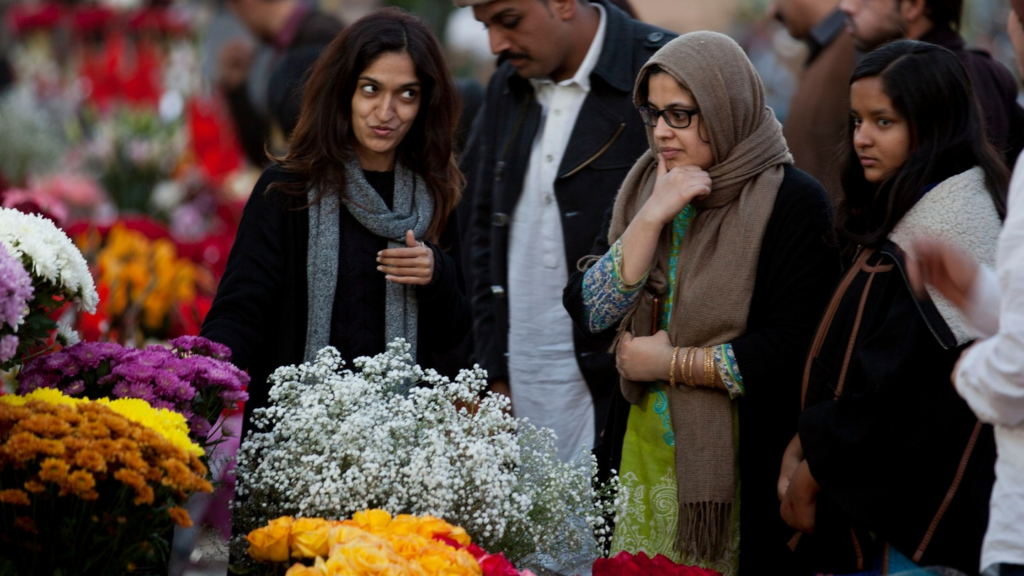
In theory, under Islamic law in Pakistan, the marriage parties must consent to marriage, women must be 16 years old, and a contract must be drawn, but few women are aware of these rights unless a male relative has informed them.
Lack of enforcement and non-compliance with the law is fairly widespread.
Though love marriages are on the rise, arranged marriage, forced marriage, and illegal marriages, such as Haq Bakshish, a practice where a woman is married to the Qur’an, those where the dowry is withheld, or those where age or polygamy restrictions are ignored still occur in various regions.
Theoretically out of wedlock love affairs are unsurprising to Muslims.
Even forced religious conversion and marriage of young non-Muslim women are cast as love matches.
A significant population of Pakistan is younger and many do date, but the Pakistani cultural approach is:
‘Do but don’t tell.’
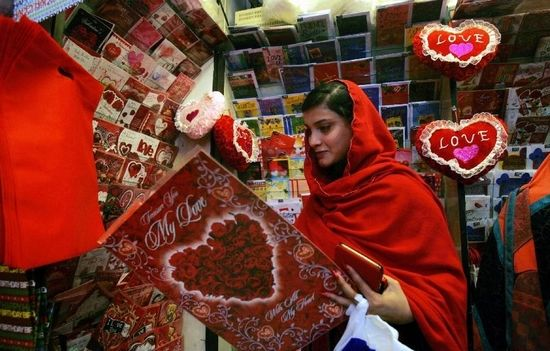
Most of Pakistan’s popular poets write about the lips, eyes, hair, and much more of their beloveds, traditions celebrate and sings folklores about love.
Hence, celebration of Valentine’s Day cannot be only blamed solely on Western culture.

Society accepts aged men to marry girls even fifty years younger than them, but the Islamic Republic of Pakistan forbids the free expression of love.
In practice, however, even a minor hint of a pre-marital or extra-marital relationship might result in an acid attack or honor killing upon a Muslim woman.
In this climate, Valentine’s Day is depicted by conservatives as a celebration of loose morals and sexual promiscuity.

For years, Valentine’s Day has drawn protests from several religious organizations claiming celebrations of the day violate Islamic sensibilities and traditions.

As with many public spaces in which officials and conservative Muslim youth groups morally police, university couples are asked to produce proof of being married and administration officials have suggested that women be gifted hijabs for modesty.
Those having financial means and access to private spaces can anyway find ways to continue celebrating Valentine’s Day, but those relatively disadvantaged middle or lower class get held up in the appeal of morality, culture and tradition.
Rather than a healthier and more effective approach of trusting and enabling youngster’s confidence to make informed wise and right choices about their romantic life themselves, contrarian attempts of clergy and state to stop dynamic cultural change through appeals to religion and culture and shaming the people, are unlikely to succeed.
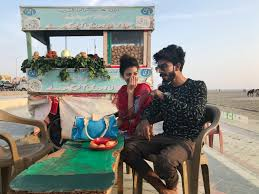
In 2016, the local governing body of Peshwar officially banned the celebration of Valentine’s Day in the city.
The ban was also implemented in other cities such as Kohat by the local governments.
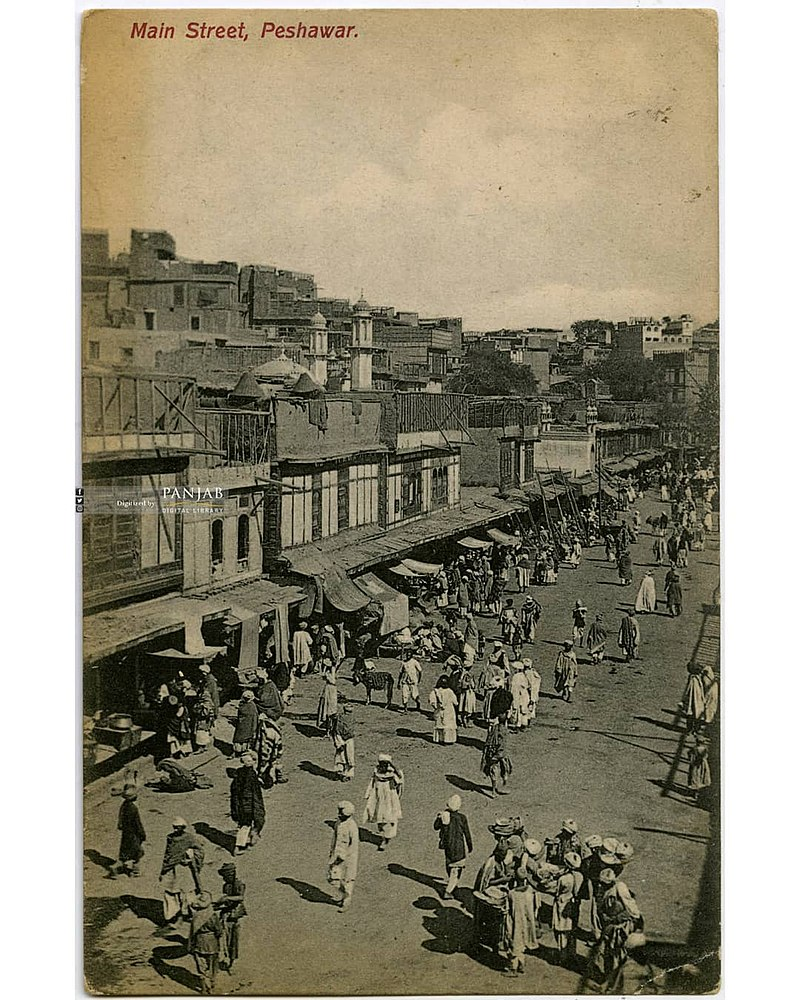
In 2017, the Islamabad High Court banned Valentine’s Day celebrations in public places in Pakistan.

More than 80% of newspaper Dawn readers polled on its website agreed with this decision.

In 2018, because of a petition by a citizen, Abdul Waheed, the Pakistan Electronic Media Regulatory Authority (PEMRA) advised broadcasters and newspapers against airing any Valentine’s Day celebrations.

Though Valentine’s Day in Pakistan is officially banned, and the Islamist orthodoxy has taken steps to obstruct celebrations, many Pakistanis celebrate the day’s festivities.
In recent years, youth and commercial establishments in Pakistan have supported Valentine’s Day festivities and celebrating love and romantic friendships.
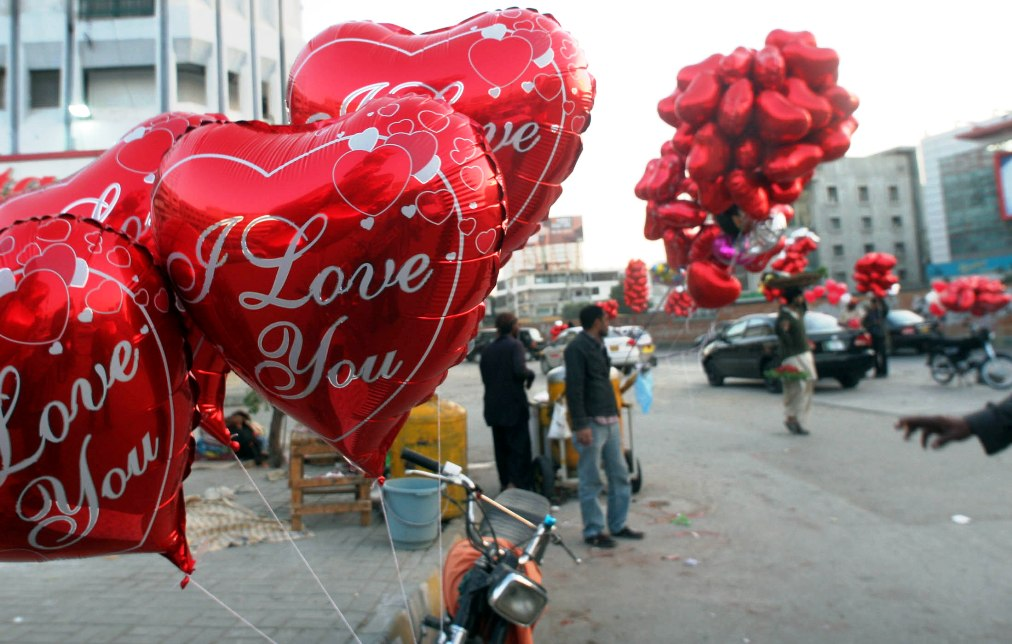
Pakistan is the world’s 5th most populous country and in a population 60% of which is below age 30 and half below 18, many are influenced more by global trends than traditions.
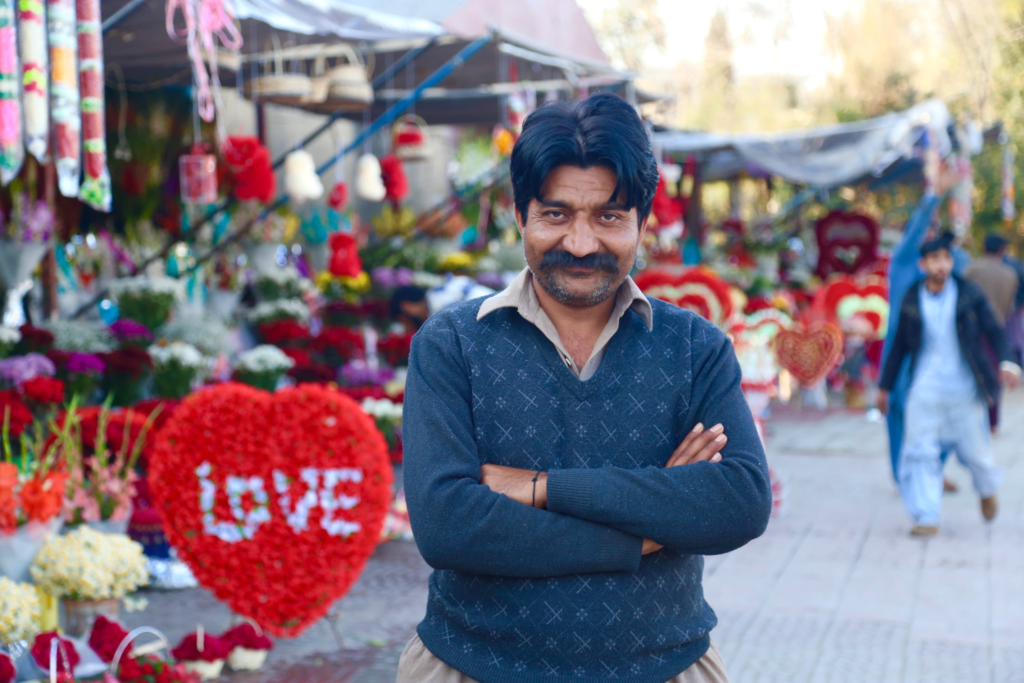
Valentine’s Day serves annually as a flash point of the culture war in Pakistan as it is a cause célèbre for religious hard-liners, affording conservatives a chance assert themselves as the caretakers of Islamic identity.
On the other hand, with or without the moral policing, couples are finding ways to defy the ban and celebrate the event.
Acceptance of the celebrations over the years is seen as a generational change indicating new cultural norms and a move toward love marriages.
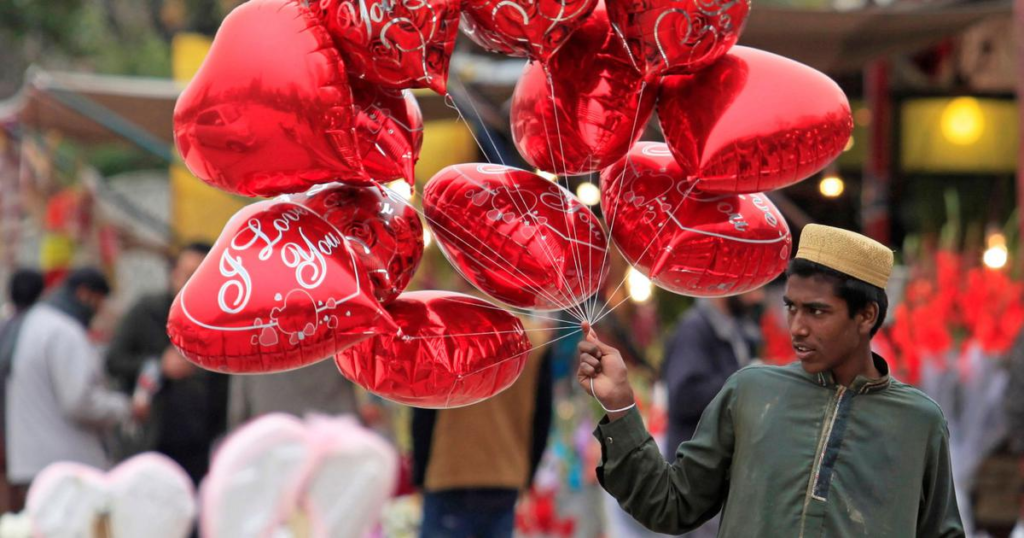
The Valentine’s Day celebration is becoming popular among urban youth and the florists expect to sell a great number of flowers, especially red roses.
The case is the same with card publishers.

Above: Flag of Pakistan
In the Philippines, Valentine’s Day is called Araw ng mga Puso in much the same manner as in the West.
It is usually marked by a steep increase in the price of flowers, particularly red roses.
It is the most popular day for weddings, with some localities offering mass ceremonies for no charge.

Above: Flag of the Philippines
In Saudi Arabia, in 2002 and 2008, religious police banned the sale of all Valentine’s Day items, telling shop workers to remove any red items, because the day is considered a Christian holiday.
This ban has created a black market for roses and wrapping paper.

Above: Flag of Saudi Arabia
In 2012, the religious police arrested more than 140 Muslims for celebrating the holiday, and confiscated all red roses from flower shops.
Muslims are not allowed to celebrate the holiday.
Non-Muslims can celebrate only behind closed doors.
Saudi cleric Sheikh Muhammad Al-‘Arifi said on Valentine’s Day Eve that celebrating this holiday constitutes bid’a – a forbidden innovation and deviation from religious law and custom – and mimicry of the West.
However, in 2017 and 2018, after a fatwah was widely circulated, the religious police did not prevent Muslims from celebrating the day.
In 2018, Sheikh Ahmed Qasim Al-Ghamdi, a Saudi cleric and former president of the Committee for the Promotion of Virtue and Prevention of Vice, said that Valentine’s Day is not haram and is compatible with Islamic values.

According to findings, Singaporeans are among the biggest spenders on Valentine’s Day, with 60% of Singaporeans indicating that they would spend between $100 and $500 during the season leading up to the holiday.

Above: Flag of Singapore
In South Korea, women give chocolate to men on February 14, and men give non-chocolate candy to women on March 14 (White Day).
On April 14 (Black Day), those who did not receive anything on February or March 14 go to a Chinese-Korean restaurant to eat black noodles ( jajangmyeon) and lament their “single life“.

Above: Jajangmyeon – a Korean black bean noodle dish
Koreans also celebrate Pepero Day on November 11, when young couples give each other pepero cookies.
The date “11/11” is intended to resemble the long shape of the cookie.

Above: Pepero almond sticks
The 14th of every month marks a love-related day in Korea, although most of them are obscure.
From January to December, the sequence of these days is:
- Candle Day
- Valentine’s Day
- White Day
- Black Day
- Rose Day
- Kiss Day
- Silver Day
- Green Day
- Music Day
- Wine Day
- Movie Day
- Hug Day.
Korean women give a much higher amount of chocolate than Japanese women.

Above: Flag of South Korea
In Taiwan, the traditional Qixi Festival, Valentine’s Day and White Day are all celebrated.
However, the situation is the reverse of Japan’s.
Men give gifts to women on Valentine’s Day and women return them on White Day.

Above: Flag of Taiwan
In Finland, Valentine’s Day is called ystävänpäivä (‘Friend’s Day‘).
As the name indicates, this day is more about remembering friends, not significant others.

Above: Flag of Finland
In Estonia, Valentine’s Day was originally called valentinipäev and later also sõbrapäev (‘Friend’s Day‘) as a calque of the Finnish term.

Above: Flag of Estonia
In France, a traditionally Catholic country, Valentine’s Day is known simply as “Saint Valentin“, and is celebrated in much the same way as other Western countries.

Above: Flag of France
The relics of Saint Valentin de Terni, the patron of the St Valentine’s Day, are in the Catholic church of Saint-Jean-Baptiste and Saint-Jean-l’Evangéliste, located in the southern France town of Roquemaure, Gard.
The celebrations of “Fête des Amoureux“ takes place every two years on the Sunday closest to February 14.
The village gets dressed in its 19th-century costume and put on the program with over 800 people.
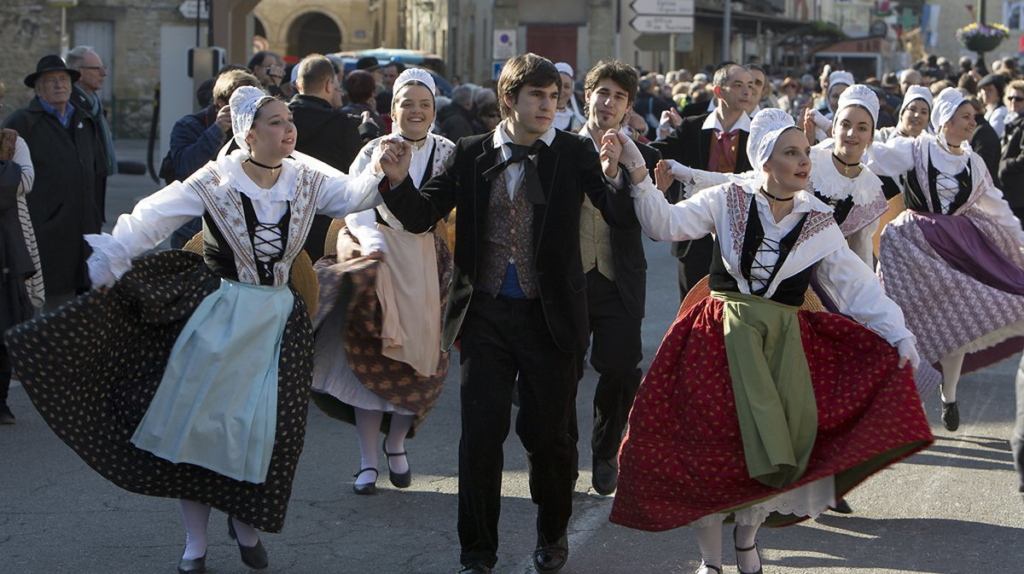
Above: Fête des Amoureux, Roquemaure, France
Saint Valentine’s Day (Ημέρα του Αγίου Βαλεντίνου) in Greek tradition, was not associated with romantic love.
In the Eastern Orthodox church there is another saint who protects people who are in love, Hyacinth of Caesarea (96 – 108) (feast day July 3), but this was not widely known until the late 1990s.
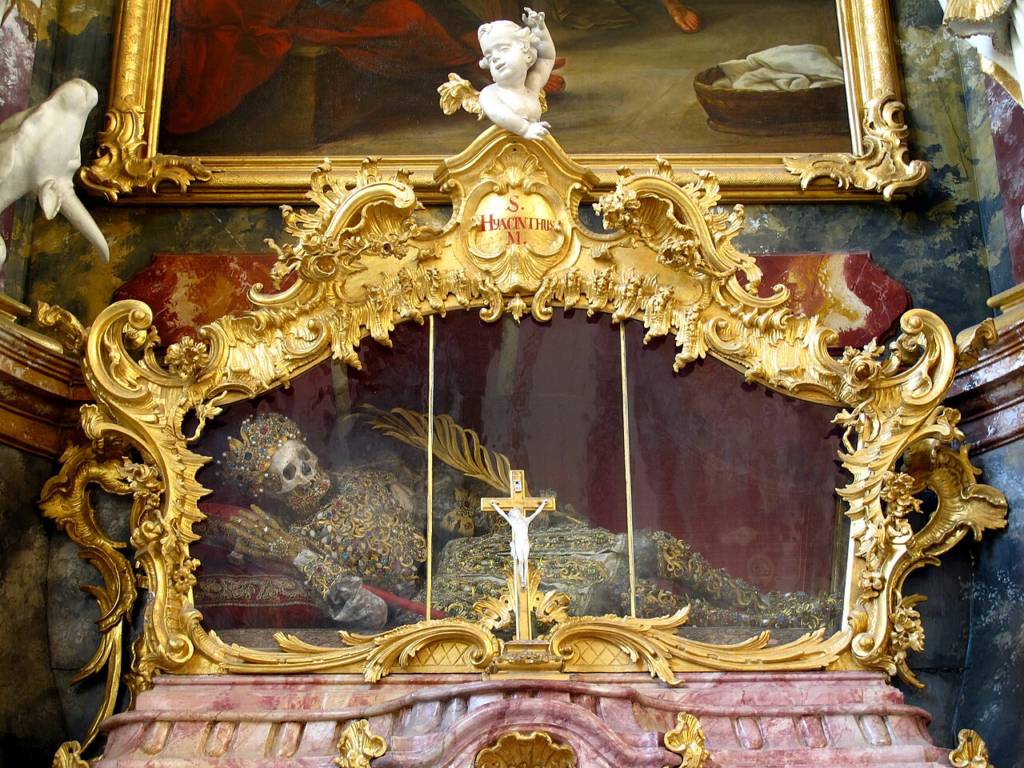
Above: Jewel-encrusted human skeleton in a gilded glass case labeled “S. HYACINTHUS M.” (Saint Hyacinth, Martyr) in the Roman Catholic Church of the Assumption, the church of the former Cistercian Fürstenfeld Abbey in Bayern, Deutschland
In contemporary Greece, Valentine’s Day is generally celebrated as in the common Western tradition.

Above: Flag of Greece
On Saint Valentine’s Day in Ireland, many individuals who seek true love make a Christian pilgrimage to the Shrine of St. Valentine in Whitefriar Street Carmelite Church in Dublin, which is said to house relics of Saint Valentine of Rome.
They pray at the shrine in hope of finding romance.
There lies a book in which foreigners and locals have written their prayer requests for love.

Above: Flag of Ireland
Saint Valentine’s Day was introduced to Poland together with the cult of Saint Valentine via Bavaria and Tyrol.
However, it rose in popularity in the 1990s.
The only public celebration in Poland is held annually from 2002 in Chełmno under the name “Walentynki Chełmińskie“ (Chełmno Valentine’s).
Because Chełmno’s parish church of the Assumption of the Blessed Virgin Mary has been holding the relic of Saint Valentine since the Middle Ages, the local cult of the saint has been combined with the Anglo-Saxon tradition.

Above: Flag of Poland
In Portugal, the holiday is known as “Dia dos Namorados“ (Lovers’ Day / Day of the Enamored).
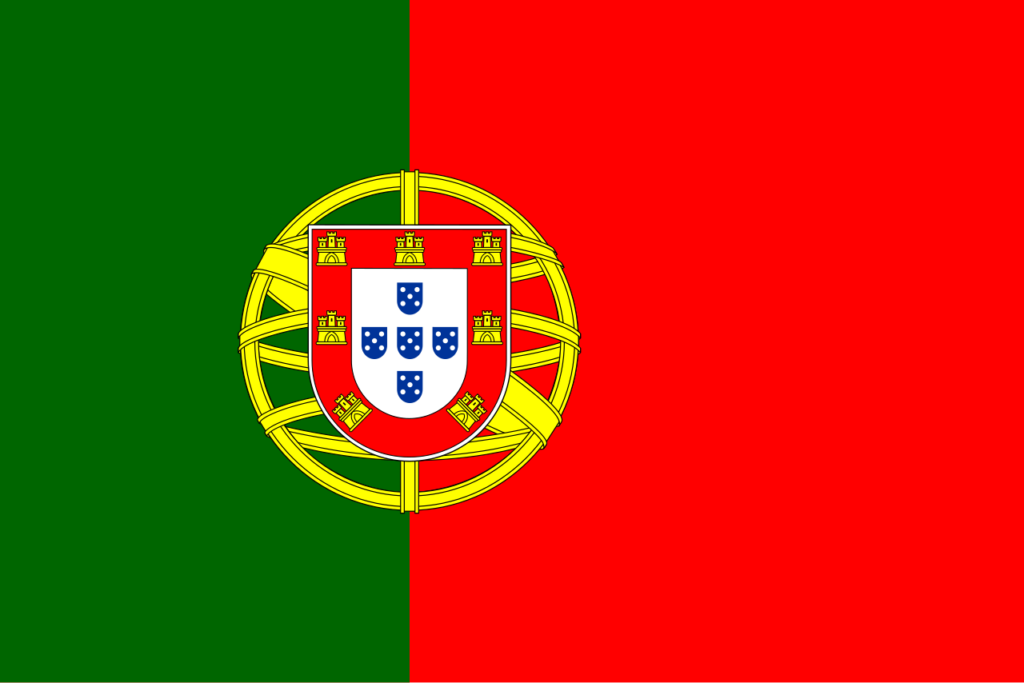
Above: Flag of Portugal
As elsewhere, couples exchange gifts, but in some regions, women give a lenço de namorados (“lovers’ handkerchief“), which is usually embroidered with love motifs.
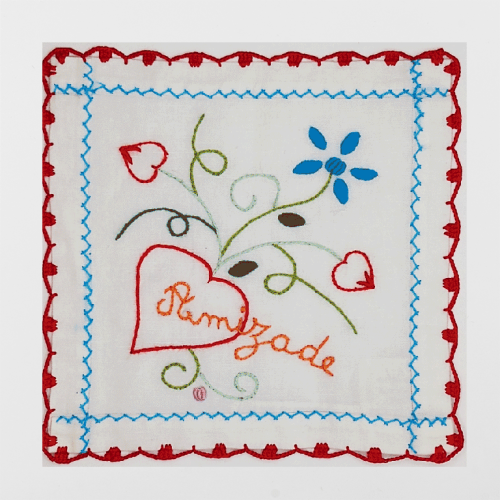
In recent years, Romania has also started celebrating Valentine’s Day.

Above: Flag of Romania
This has drawn backlash from several groups, institutions, and nationalist organizations like Noua Dreaptă, who condemn Valentine’s Day for being superficial, commercialist, and imported Western kitsch.

Above: Noua Dreaptă (“the New Right“) Party logo – an ultranationalist, far-right organization in Romania and Moldova, Proclaiming itself as “radical, militant, nationalist and Christian Orthodox“, Noua Dreaptă supports a merger of Romania and Moldova.
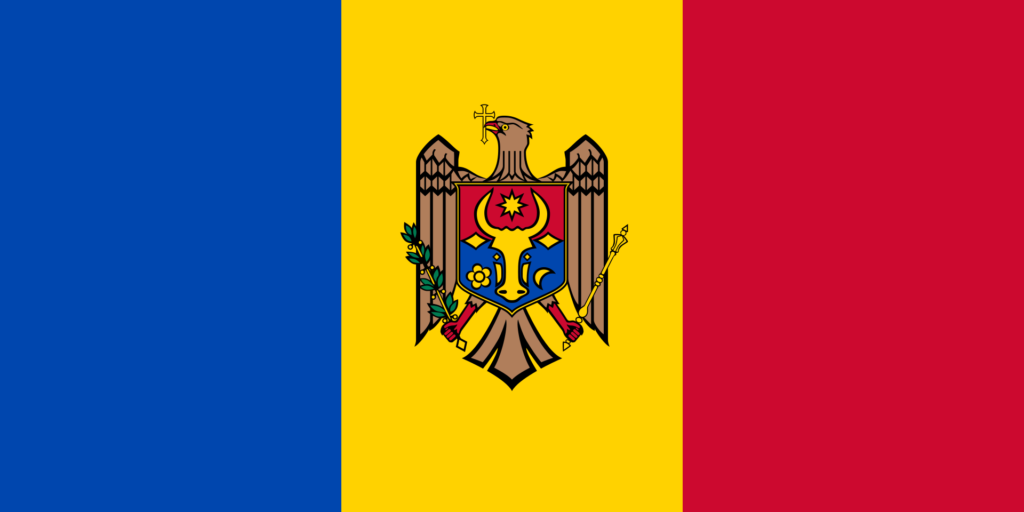
Above: Flag of Moldovia
In order to counter the perceived denaturation of national culture, Dragobete, a spring festival celebrated in parts of Southern Romania, has been rekindled after having been ignored during the Communist years as the traditional Romanian holiday for lovers.
The holiday is named after a character from Romanian folklore who was supposed to be the son of Baba Dochia.
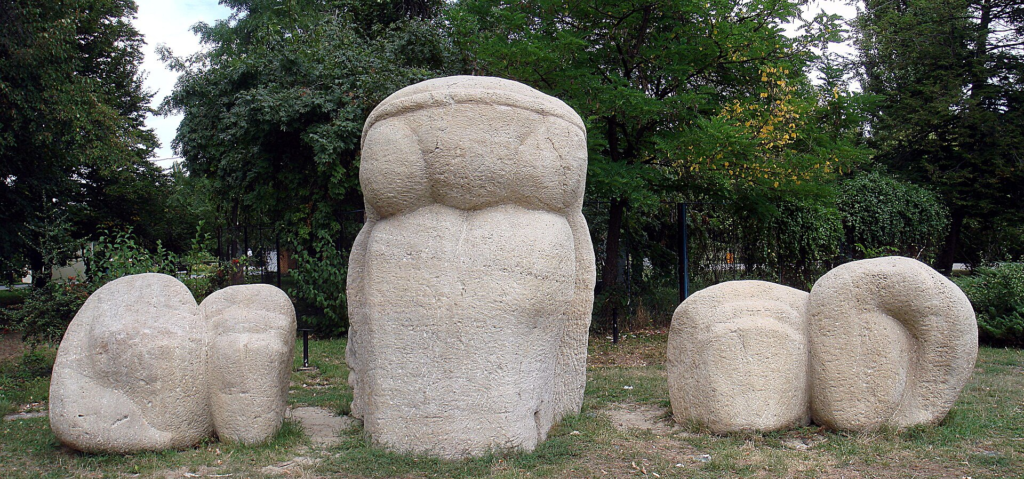
Above: Baba Dochia’s Legend, Bucharest, Romania
In Romanian mythology, Baba Dochia, or The Old Dokia, is a figure identified with the return of spring.
She is sometimes imagined as “an old woman who insults the month of March when she goes out with a herd of sheep or goats“
The Romanian Dokia personifies mankind’s impatience in waiting for the return of spring.
Baba Dochia has a son, called Dragomir, who is married.
Dochia ill-treats her daughter-in-law by sending her to pick up berries in the forest at the end of February.
God appears to the girl as an old man and helps her in her task.
When Dochia sees the berries, she thinks that spring has come back and leaves for the mountains with her son and her goats.
She is dressed in 12 lambskins, but it rains on the mountain and the skins get soaked and heavy.
Dochia has to get rid of the skins and when frost comes, she perishes from the cold with her goats.
Her son freezes to death with a piece of ice in his mouth as he was playing the flute.
Dragobete’s date used to vary depending on the geographical area, however nowadays it is commonly observed on February 24.
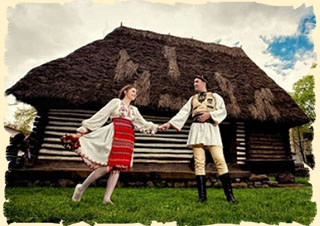
Above: Dragobete celebration, Romania
In Denmark and Norway, February 14 is known as Valentinsdag, and is celebrated in much the same manner as in the United Kingdom.

Above: Flag of Denmark

Above: Flag of Norway
In Sweden it is called Alla hjärtans dag (“All Hearts’ Day”) but is not widely celebrated.
A 2016 survey revealed that fewer than 50% of men and women were planning to buy presents for their partners.
The holiday has only been observed since the 1960s.

Above: Flag of Sweden
The holiday was first introduced in Spain through a 1948 advertisement campaign by the department store chain Galerías Preciados, and had become widespread by the 1970s.

Known as “San Valentín“, the holiday is celebrated the same way as in the rest of the West.
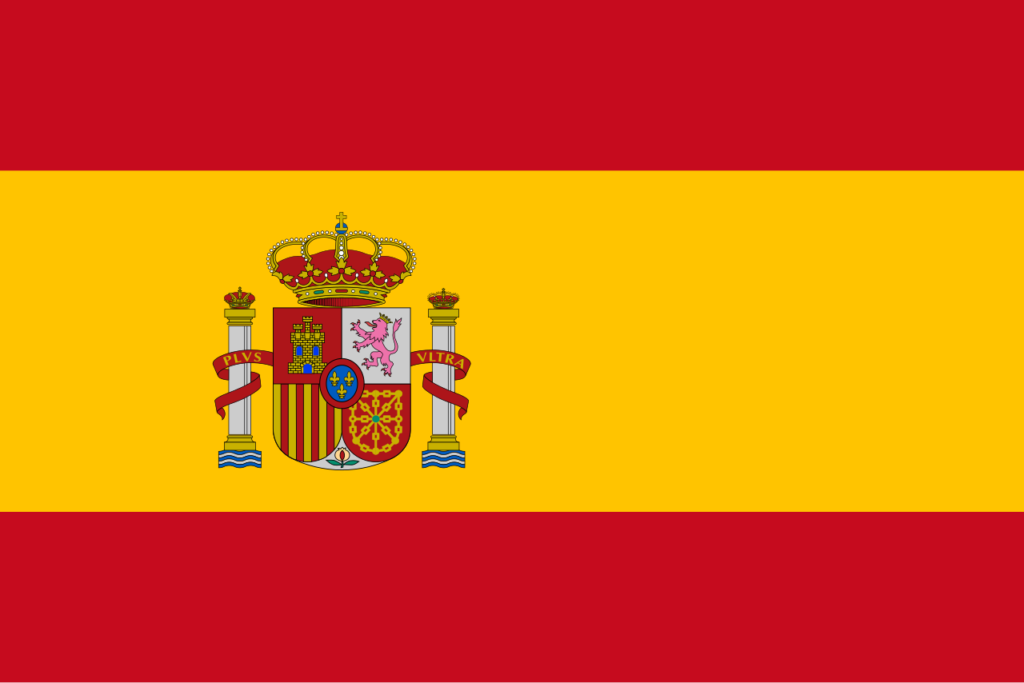
Above: Flag of España (Spain)
In the UK, just under half of the population spends money on their valentines.
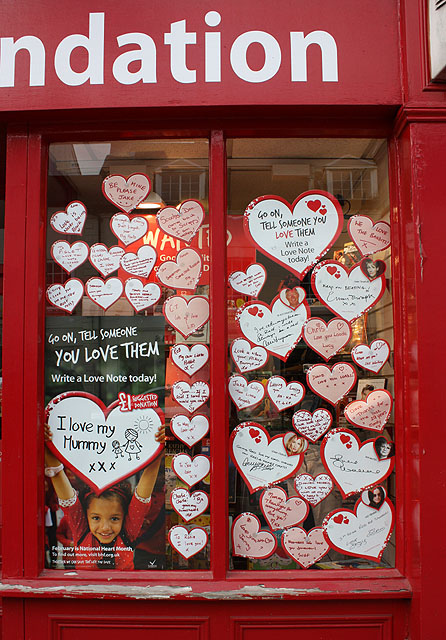
Around £1.3 billion is spent yearly on cards, flowers, chocolates, and other gifts, with an estimated 25 million cards being sent.

Above: Flag of the United Kingdom of Great Britain and Northern Ireland
In Wales, some people celebrate Dydd Santes Dwynwen (Saint Dwynwen’s Day) on January 25 instead of (or as well as) Valentine’s Day.

Above: Dwynwen Cross, Llanddwyn Island, Wales
The day commemorates St Dwynwen, the Welsh patron saint of love.

Above: St. Dwynwen’s Church, Llanddwyn Island, Wales
In one well-known version of the legend, a young man named Maelon Dafodrill falls in love with Dwynwen, but she rejects him.
In another, she cannot marry him because her father has already promised her to another.
Distraught, Dwynwen prays to fall out of love with Maelon.
An angel appears with a potion:
Maelon turns to ice.
God then grants her three requests:
- that Maelon be released from his icy fate
- that God, through Dwynwen, watch over all true lovers
- that she herself remain unmarried.
As a mark of thanks, she retreats to the solitude of Ynys Llanddwyn off Anglesey, becoming a hermit until her death around 460.
During the 1960s, a Bangor University student, Vera Williams, sought to revive St Dwynwen’s Day by designing Welsh “Valentine’s” cards.
Local press and businesses embraced the idea.
By 2004, the celebration of 25 January as a feast for Welsh lovers was well established.
Gwynedd Council even promoted it.
St Dwynwen’s Day celebrations have grown in popularity, with events like concerts, parties, and the exchange of greeting cards becoming increasingly common.
Though overshadowed by Valentine’s Day, its recognition continues to spread.
A major boost came in 2003 when the Welsh Language Board partnered with the supermarket Tesco to distribute 50,000 free St Dwynwen’s Day cards across Wales.
One of these cards contained a specially marked heart, entitling the finder to a prize.
The board also encouraged alternative celebrations, such as hosting love-themed gigs, singles nights, romantic dinners, or composing love poetry in pubs.
Traditional Welsh lovespoon-carving presentations also form part of the celebrations.

Above: Welsh lovespoon
A lovespoon is a wooden spoon decoratively carved that was traditionally presented as a gift of romantic intent.
The spoon is normally decorated with symbols of love, and was intended to reflect the skill of the carver.
Due to the intricate designs, lovespoons are no longer used as functioning spoons and are now decorative craft items.
The lovespoon is a traditional Welsh craft that dates back to the seventeenth century.
Over generations, decorative carvings were added to the spoon and it lost its original practical use and became a treasured decorative item to be hung on a wall.
The lovespoon was given to a young woman by her suitor, to prove to her father that he was capable of woodworking and providing for the woman and their future family.
Sailors would often carve lovespoons during their long journeys, which is why anchors would often be incorporated into the carvings.
Certain symbols came to have specific meanings:
- a horseshoe for luck
- a cross for faith
- bells for marriage
- hearts for love
- a wheel supporting a loved one
- a lock for security
Caged balls indicated the number of children hoped for.
Other difficult carvings, such as chains, were as much a demonstration of the carver’s skill as a symbolic meaning.
Today, lovespoons are given as wedding and anniversary gifts, as well as birthday, baby gifts, Christmas or Valentine’s Day gifts.
They are now mostly seen as a folk craft.
The Welsh name for Saint Valentine is Sant Ffolant.

Above: Flag of Cymru (Wales)
In a 2016 poll conducted by Channel 4 for Valentine’s Day, Jane Austen’s line, “My heart is, and always will be, yours.”, from her novel Sense and Sensibility as said by Edward Ferrars (Hugh Grant) to Elinor Dashwood (Emma Thompson) in the acclaimed 1995 film adaptation, was voted the most romantic line from literature, film, and TV by thousands of women.
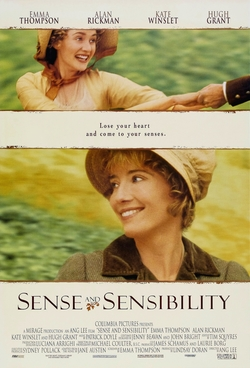
Both history and fiction offer numerous examples of societies that have discouraged romantic love — often because love, with its unruly passions and personal loyalties, threatens the control of the state, the stability of social hierarchies, or the priorities of ideology.

In George Orwell’s Nineteen Eighty-Four, the Party sees romantic love as a threat to its absolute control.
It mandates arranged marriages for procreation and forbids emotional bonds.
The ultimate goal is to redirect all passion toward the Party itself.
Winston and Julia’s love is not just personal.
It’s an act of rebellion.
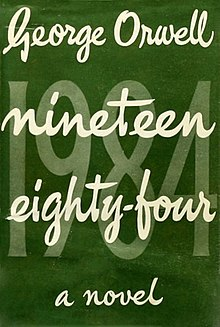
In Aldous Huxley’s Brave New World, love is destabilizing in this hedonistic dystopia.
Instead, society promotes promiscuity, discourages deep attachments, and eliminates family bonds.
The idea of exclusive love or long-term commitment is considered obscene.
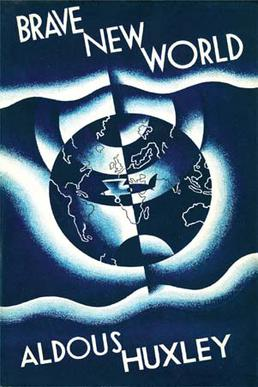
In Yevgeny Zamyatin’s We, the precursor to Orwell’s work, individuality is erased in favor of state-mandated efficiency.
Love is seen as chaotic, so relationships are assigned by the government, and even sexual encounters are strictly regulated.
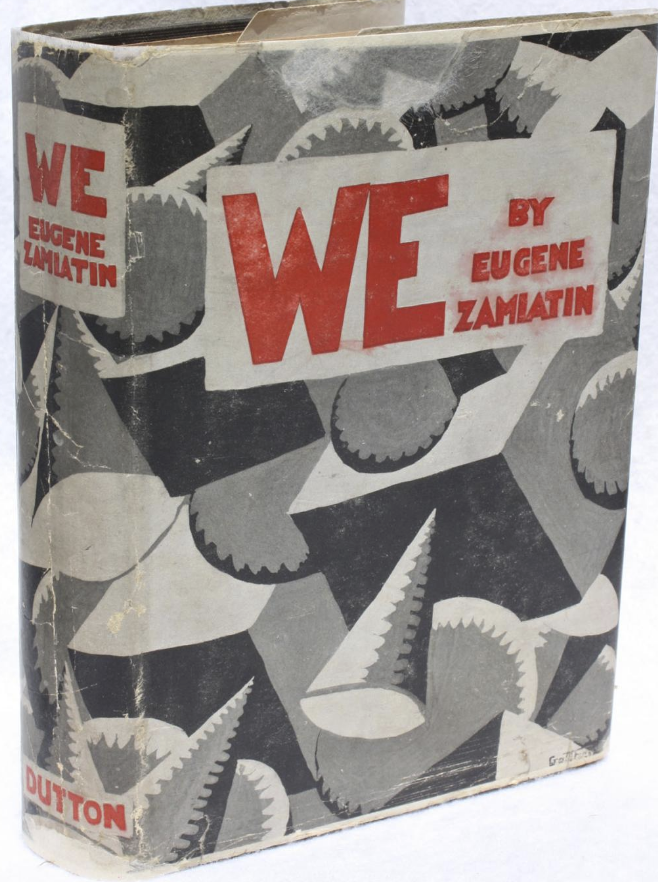
Suzanne Collins’ The Hunger Games, while not as overtly anti-love as 1984, the Capitol manipulates emotions and relationships for control.
Love can be a tool or a liability, as Katniss finds out when her relationships are exploited for spectacle.

In militaristic Sparta, love and family ties were secondary to duty.
Men lived in barracks until middle age, and marriages were often arranged for eugenic purposes.
Passionate love was seen as a distraction from loyalty to the state.
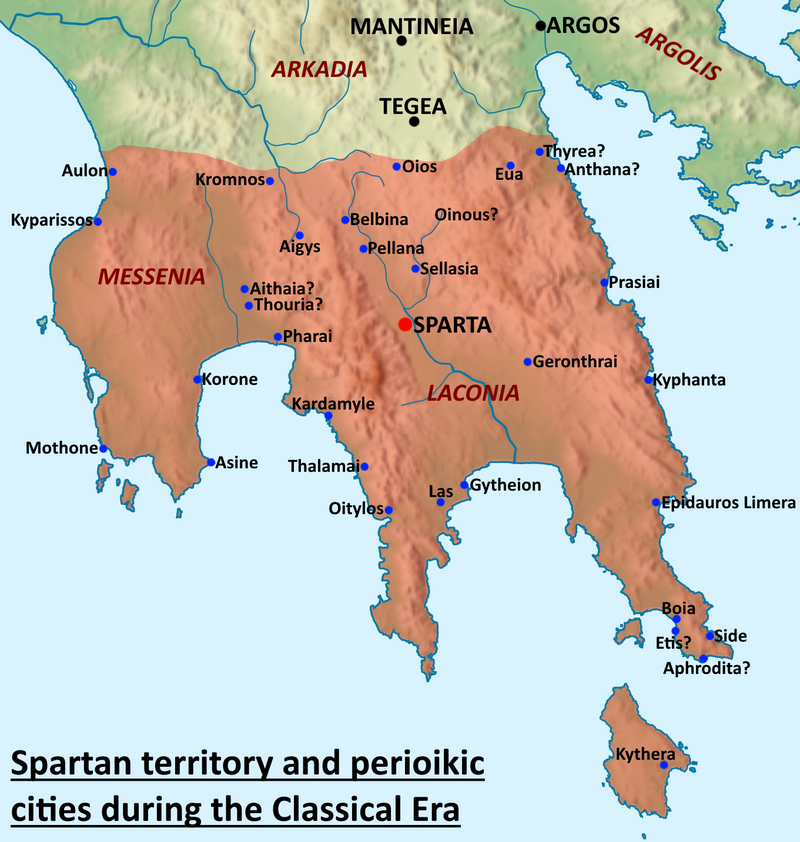
While not societies in themselves, monastic traditions in Christianity, Buddhism, and other religions discouraged romantic love, seeing it as an obstacle to spiritual enlightenment.

China under Mao’s Cultural Revolution, romantic relationships were discouraged as distractions from revolutionary fervor.
Personal love was seen as bourgeois and selfish, while devotion to the Party was paramount.
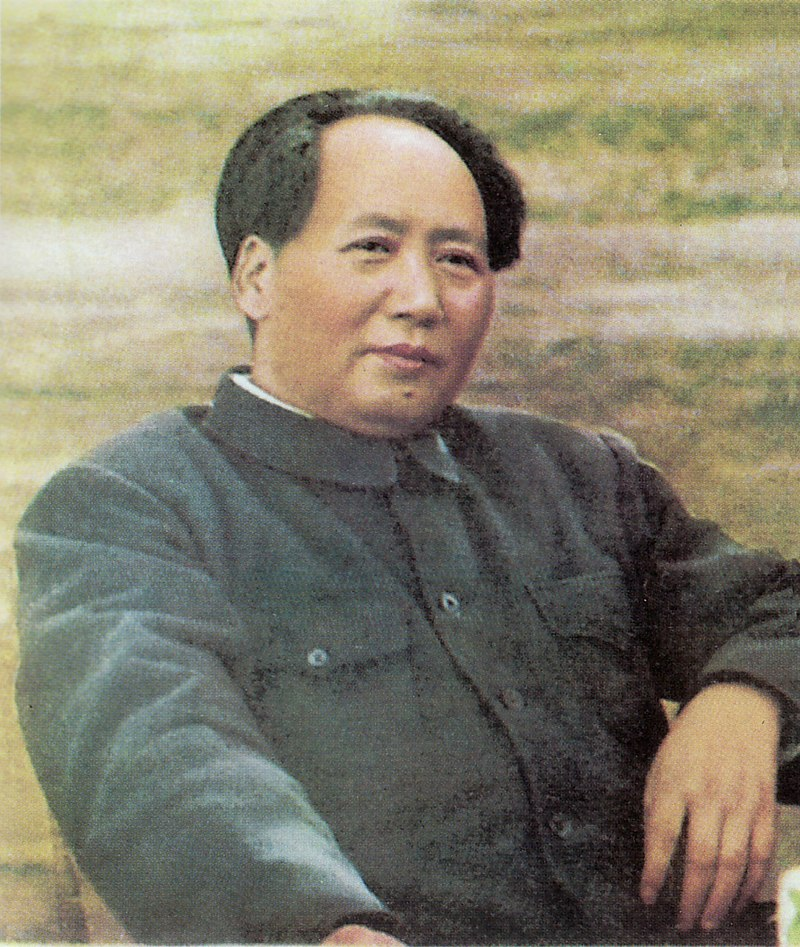
Above: Chinese Chairman Mao Zedong (1893 – 1976)
In Stalinist USSR, while not outright banning love, the Soviet Union viewed personal relationships with suspicion if they interfered with loyalty to the State.
Emotional attachments could be a liability if a loved one was accused of disloyalty.

Above: Russian dictator Joseph Stalin (1878 – 1953)
In Pol Pot’s Cambodia, the Khmer Rouge sought to erase individualism, including personal love.
Marriages were arranged by the regime, often in mass ceremonies, and emotions were suppressed in favor of revolutionary zeal.

Above: Cambodian dictator Pol Pot (1925 – 1998)
Why do societies suppress love?
Romantic love is powerful, unpredictable, and deeply personal qualities that can undermine authoritarian control.
A government that seeks absolute loyalty often cannot tolerate deep emotional bonds that might compete with devotion to the state or its ideology.
Conversely, love thrives in freedom, where the heart may choose without fear.

While Valentine’s Day is nominally tied to the commemoration of St. Valentine, its true essence, as it has evolved, is undeniably steeped in flirtation, courtship, and the celebration of romantic love.
St. Valentine (or rather, multiple figures bearing that name) was associated with acts of kindness and secret marriages under Roman persecution.
But there’s no historical evidence linking him to romantic love.

Many scholars believe that the association with romance stems from Lupercalia, an ancient Roman fertility festival held in mid-February.
It involved rituals celebrating fertility, love, and — yes — flirtation.

In the Middle Ages, Chaucer and other poets romanticized the day, tying it to courtly love, knights wooing maidens, and poetic declarations.
By then, the day had drifted far from saintly martyrdom and closer to whispered sweet nothings.

Valentine’s Day became a socially sanctioned occasion for playful flirtation, especially in societies where direct romantic pursuit was frowned upon.

In Victorian England, the exchange of anonymous valentines allowed lovers to express feelings they might not dare to say aloud.
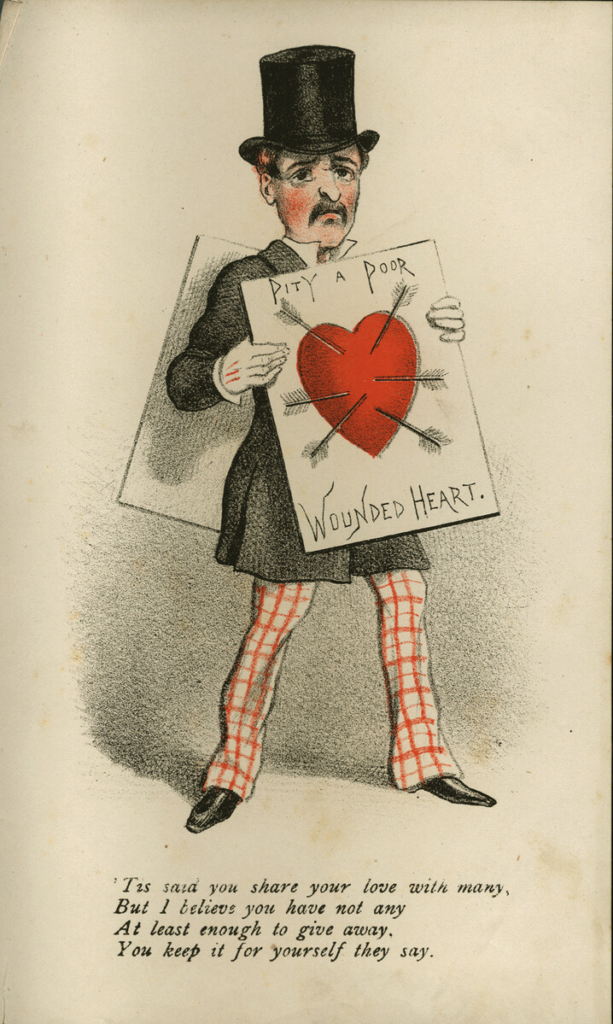
Even today, in cultures worldwide, Valentine’s Day remains an occasion for playful teasing, secret admirers, and coy exchanges— a socially accepted excuse to flirt, if ever there was one.

At its core, Valentine’s Day is not about the saint.
It’s about the spark.
It is about tension, mystery, the dance of desire, and the celebration of human connection.
Whether through chocolates, flowers, or suggestive emojis (which, let’s admit, have their own hidden flirtations), it’s about the art of wooing.
Valentine’s Day, beyond its religious origins, was meant to be about flirtation, about playful seduction wrapped in poetry and petals.

But I wonder:
Is Valentine’s Day still a meaningful celebration of love, or has it lost some of its original charm in the age of digital dating and instant gratification?

Let us look at some of the accoutrements of the Day.
Valentine’s Day is wrapped in layers of history, tradition, and symbolism — much of it shaped by cultural evolution rather than strict historical fact.

Let’s break it down.
Why flowers?
Flowers have been used as symbols of emotions for centuries, with the Victorians particularly obsessed with the “language of flowers” (floriography).
Different flowers convey different messages, and roses —especially red ones — came to symbolize passionate love.
The tradition of gifting flowers on Valentine’s Day gained popularity in the 18th and 19th centuries, thanks in part to lovers using bouquets to send secret messages.

Why red roses?
Red roses have been associated with love and passion for thousands of years.
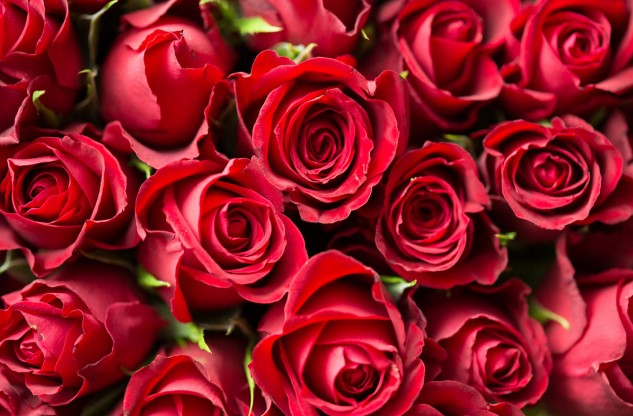
The reason?
Mythology and biology.
The red rose was sacred to Aphrodite (Greek) and Venus (Roman), the goddesses of love.
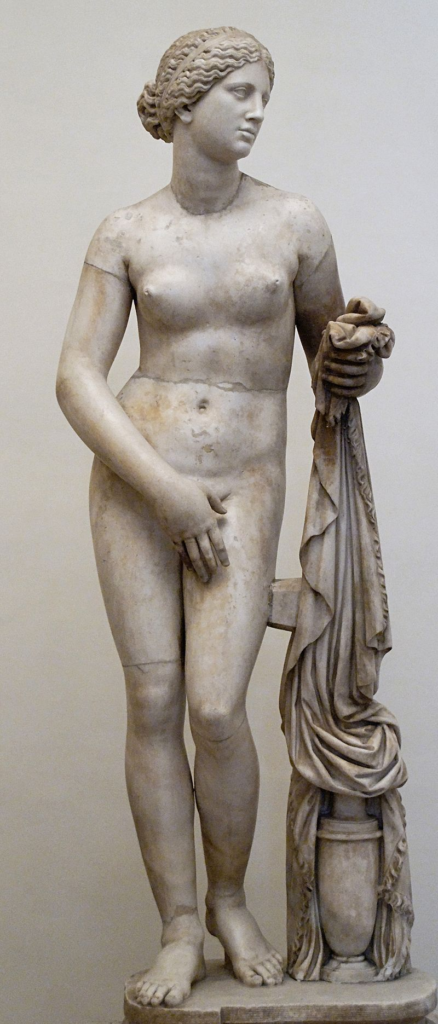
A famous myth tells of Aphrodite rushing to her dying lover Adonis, pricking herself on a thorn, and her blood staining the white roses red — turning them into symbols of deep love and sacrifice.
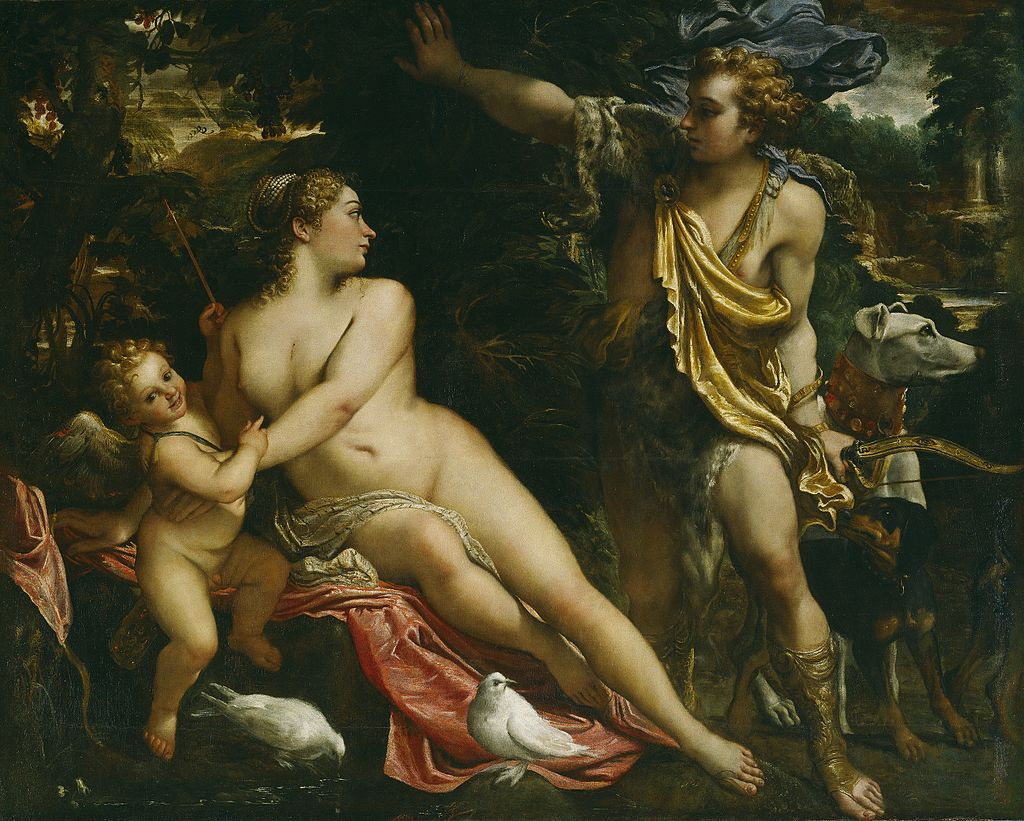
Above: Venus and Adonis, Annibale Carracci (1595)
Red is psychologically linked to attraction, warmth and passion.
It increases the heart rate and stimulates feelings of love and excitement.

Poets and writers have long linked red roses with love.
Shakespeare famously wrote:
“Of all the flowers, methinks a rose is best.“
By the time the Victorians adopted floriography, red roses were firmly tied to romantic love.

Flowers and love have been intertwined for centuries, not just in romantic gestures but also in deeper symbolic meanings.
Both floriography (the language of flowers) and pheromones are two fascinating ways that flowers are believed to induce emotions of love.

This practice of floriography became particularly popular in the Victorian era, where flowers were used to convey messages of affection, longing, or even unspoken thoughts.
Each flower carried its own symbolic meaning.
For instance, a red rose symbolizes passionate love, while a white lily might represent purity or commitment.
By gifting flowers with specific meanings, one could communicate deep emotions without saying a word, creating a kind of silent poetry between the giver and receiver.
The idea was that these floral messages were powerful enough to evoke emotional responses, including love, by tapping into cultural associations and personal sentiment.
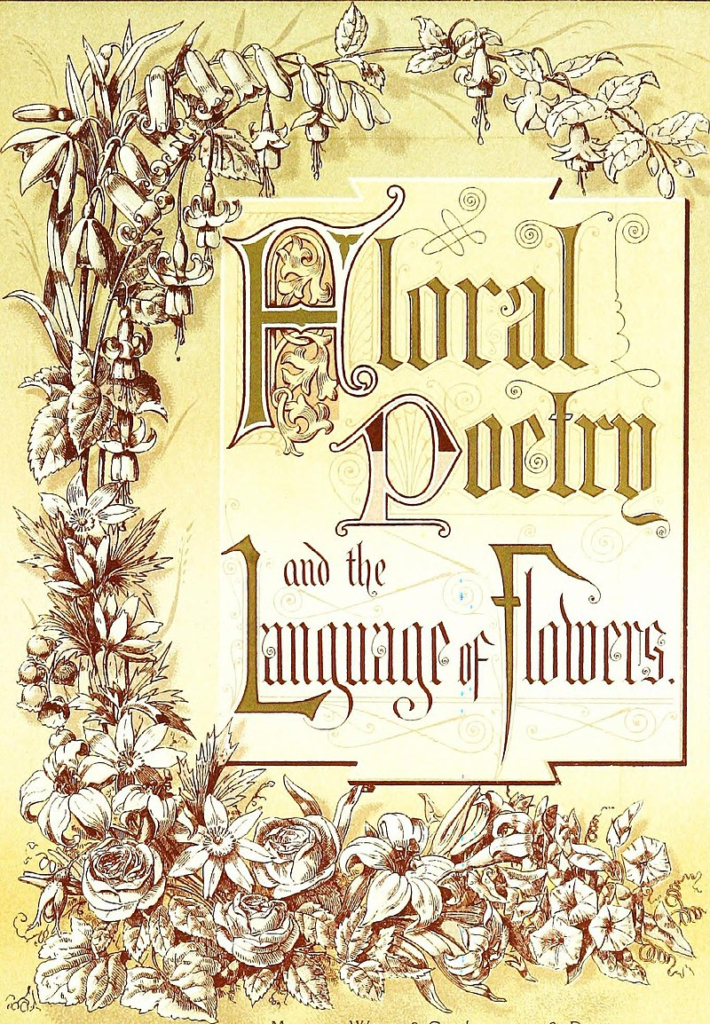
On a more scientific level, flowers also play a role in love through their scent.
While we may not consciously be aware of it, the scent of flowers can trigger the release of pheromones, which are chemicals that can influence our attraction to others.

Above: Jasmine
Certain flowers, like jasmine and lavender, are known to emit scents that can make us feel more relaxed, calm, or even more open to emotional connection.
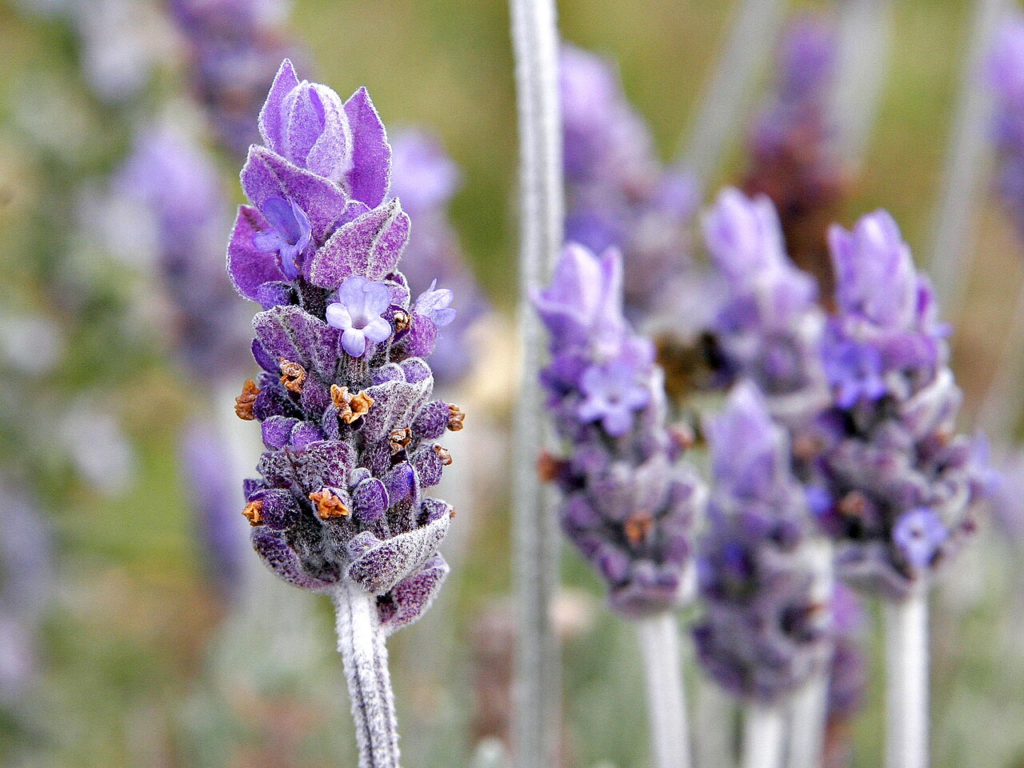
Above: Lavender
These scents, when inhaled, can influence our subconscious reactions, potentially fostering feelings of affection or love.
There’s also the idea that the scent of flowers has an innate connection to nature’s rhythms, bringing humans closer to feelings of vitality and warmth — emotions often linked to love.
In both cases, whether through the cultural symbolism of floriography or the biological responses elicited by their fragrance, flowers are intended to enhance emotional connection.
They are like nature’s subtle ambassadors, carrying messages that stir affection, warmth, and even desire.

There are some fascinating examples in literature where flowers serve as symbols of deep emotions, particularly in the context of floriography.
As for flowers triggering biological responses, literature sometimes touches on the effects of scents, though it’s more often in the realm of poetry and romantic prose.
Let’s look at a couple of examples:
The Language of Flowers by Vanessa Diffenbaugh (2011) is perhaps one of the best examples of floriography being used to communicate deep, sometimes painful emotions.
The protagonist, Victoria Jones, has a deep connection to the language of flowers, using them to express her feelings when she struggles to communicate in words.
For example, she uses red roses to express love, but also more obscure flowers to convey sorrow, regret or hope.
The book beautifully intertwines the meanings behind flowers with the protagonist’s emotional journey, showing how a flower can carry not just symbolic significance but also emotional weight.
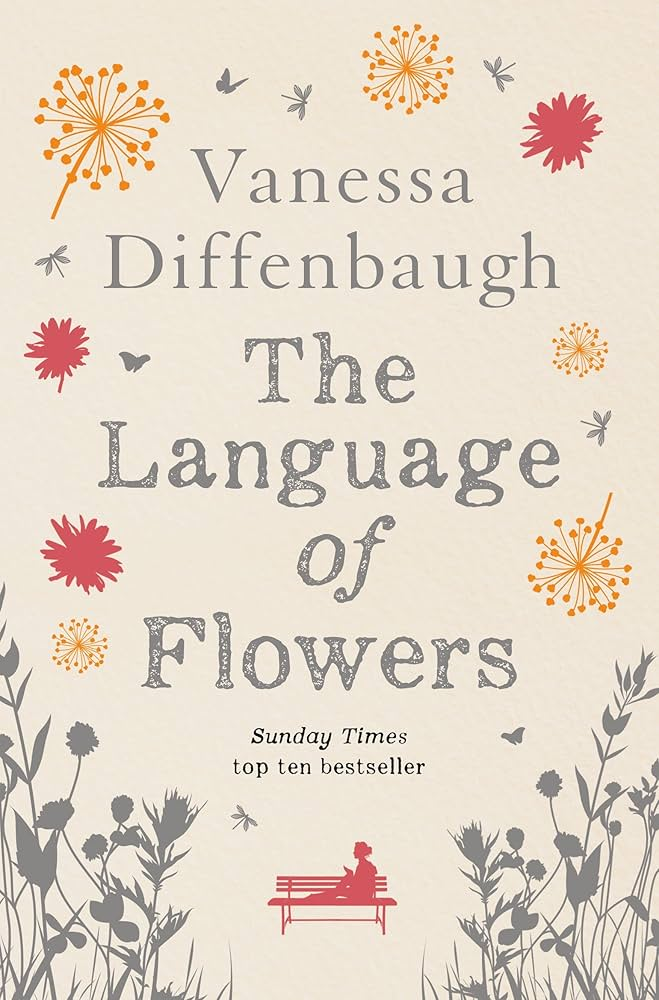
In Shakespeare’s Hamlet (1600), Ophelia’s famous “flower speech” (Act 4, Scene 5) is a poignant moment where she hands out symbolic flowers to various characters.
Each flower carries a meaning related to the person she’s giving it to. For example, she gives rosemary for remembrance and pansies for thoughts, suggesting a hidden message of her own grief and the complex emotional landscape of the play.
The flowers in Hamlet don’t just serve as decoration.
They act as a language, communicating what words cannot.

Many poets in the Victorian era used flowers in their poetry to symbolize feelings of love, beauty, and death.
In works like Christina Rossetti’s The Goblin Market (1862), flowers and their meanings are deeply embedded in the story, with flowers symbolizing both desire and danger.
The connection between flowers and love was so strong during the Victorian period that entire floral dictionaries were published to help people understand the meanings behind different blossoms.
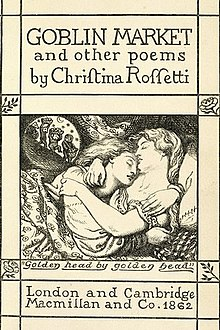
Perfume by Patrick Süskind (1985) is perhaps one of the most detailed explorations of the power of scent in literature.
The protagonist, Grenouille, is a man born without a personal scent but with an extraordinary ability to detect and replicate the scents of others.
Through his obsession with capturing the perfect scent, he learns how certain fragrances — specifically those of flowers — can elicit powerful, almost primal responses in people.
He creates perfumes that induce lust, desire, and other emotions in his victims, showing how scent can trigger biological and emotional reactions.
The novel illustrates how a flower’s perfume can have a visceral effect on the human psyche, almost as if it manipulates the individual on a subconscious level.
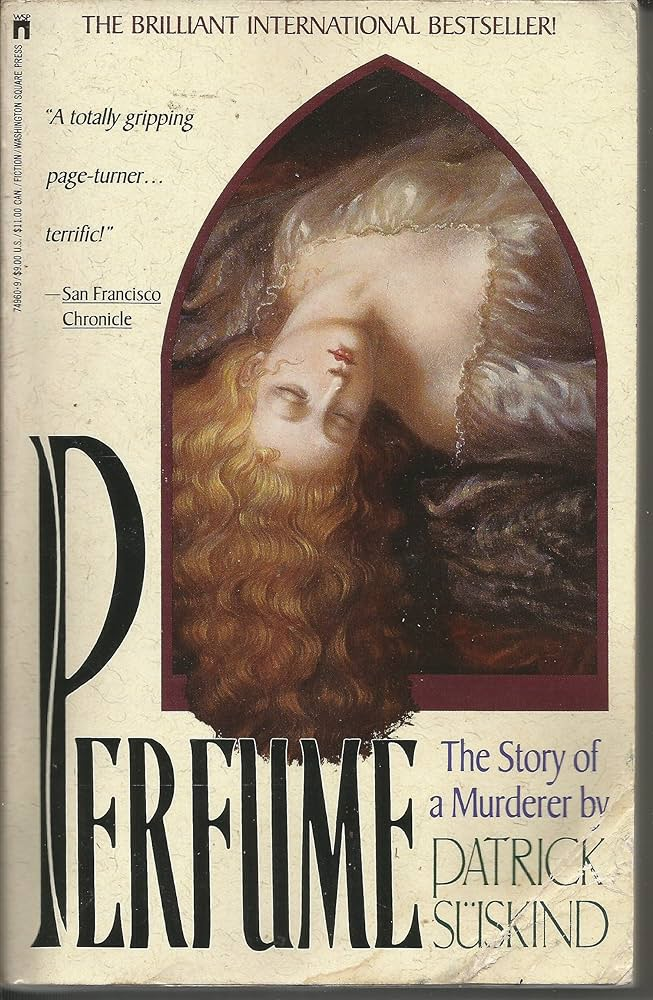
In Charlotte Brontë’s Jane Eyre (1847), the character of Rochester gives Jane a bouquet of flowers when he expresses his feelings for her.
While the flowers in this instance may not carry a direct biological response in the scientific sense, there is an implicit suggestion that the scent and beauty of flowers heighten Jane’s emotional response to him.
The symbolism in flowers often accompanies intense moments of emotional or romantic connection.
While not explicitly exploring pheromones, the use of flowers in these contexts shows their ability to trigger emotional and, by extension, biological responses in terms of attraction.

While Victor Hugo’s Les Misérables (1862) doesn’t directly delve into the science of scent, Hugo does use flowers to evoke powerful emotional responses.
In the case of the character of Fantine, for example, the motif of the flowers becomes associated with purity and love, and the connection between the fragrance of flowers and emotional purity is evident.
The symbolic power of flowers in the narrative reflects their potential to spark deeper, often unconscious feelings.
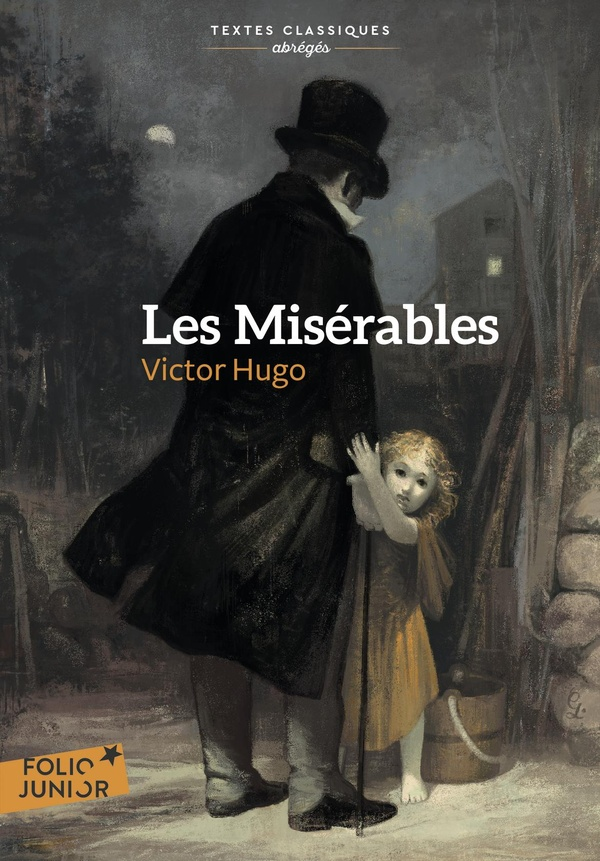
In both floriography and the biological influence of flowers, literature often conveys the idea that flowers are far more than mere gifts.
They are charged with meaning and emotion, able to communicate complex ideas and even provoke deep, unconscious biological responses.
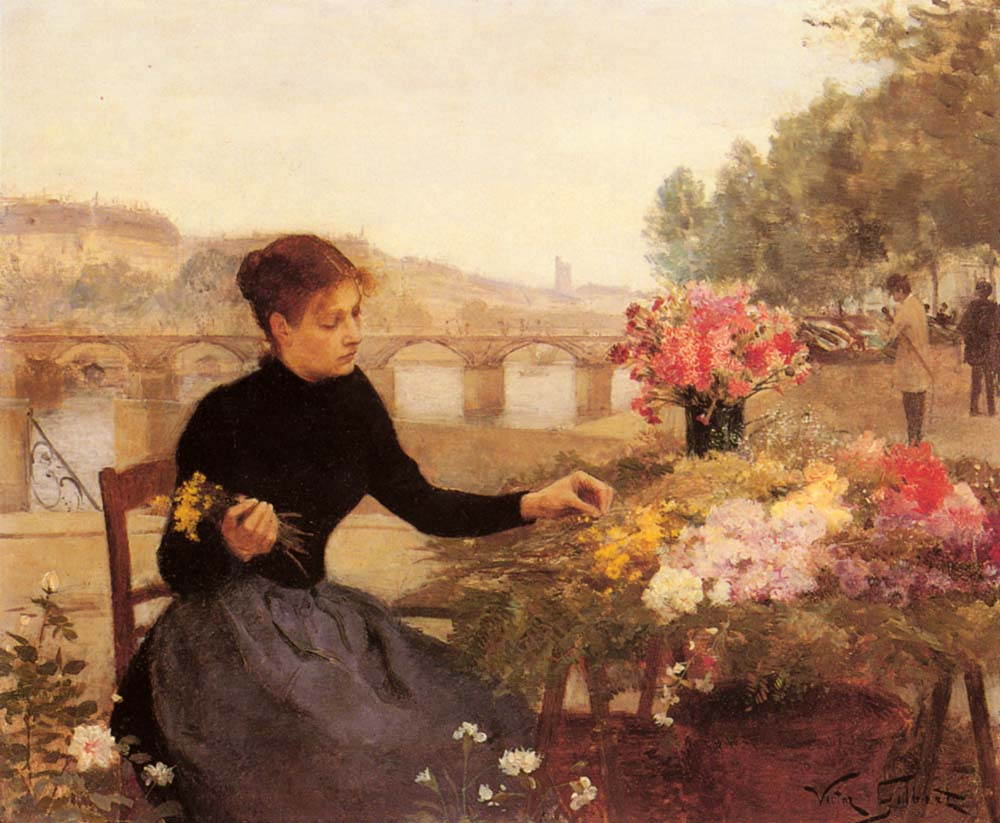
Above: A Parisian Flower Market, Victor Gabriel Gilbert
Why chocolate?

Chocolate is a food made from roasted and ground cocoa beans that can be a liquid, solid, or paste, either on its own or as a flavoring in other foods.
The cacao tree has been used as a source of food for at least 5,300 years, starting with the Mayo-Chinchipe culture in what is present-day Ecuador.
Later, Mesoamerican civilizations consumed cacao beverages, of which one, chocolate, was introduced to Europe in the 16th century.

The seeds of the cacao tree (Theobroma cacao) have an intense bitter taste and must be fermented to develop the flavor.
After fermentation, the seeds are dried, cleaned, and roasted.
The shell is removed to produce nibs, which are then ground to cocoa mass, unadulterated chocolate in rough form.

Once the cocoa mass is liquefied by heating, it is called chocolate liquor.

The liquor may also be cooled and processed into its two components:
Cocoa solids and cocoa butter.

Baking chocolate, also called bitter chocolate, contains cocoa solids and cocoa butter in varying proportions without any added sugar.

Powdered baking cocoa, which contains more fiber than cocoa butter, can be processed with alkali to produce Dutch cocoa.

Much of the chocolate consumed today is in the form of sweet chocolate, a combination of cocoa solids, cocoa butter, and added vegetable oils and sugar.
Milk chocolate is sweet chocolate that additionally contains milk powder.

White chocolate contains cocoa butter, sugar and milk, but no cocoa solids.

Chocolate is one of the most popular food types and flavors in the world, and many foodstuffs involving chocolate exist, particularly desserts, including cakes, pudding, mousse, brownies, and chocolate chip cookies.

Many candies are filled with or coated with sweetened chocolate.

Chocolate bars, either made of solid chocolate or other ingredients coated in chocolate, are eaten as snacks.

Gifts of chocolate molded into different shapes (such as eggs, hearts, and coins) are traditional on certain Western holidays, including Christmas, Easter, Valentine’s Day, and Hanukkah.

Chocolate is also used in cold and hot beverages, such as chocolate milk and hot chocolate, and in some alcoholic drinks, such as crème de cacao.

Although cocoa originated in the Americas, West African countries, particularly Ivory Coast and Ghana, are the leading producers of cocoa in the 21st century, accounting for some 60% of the world cocoa supply.

Above: Flag of Côte d’Ivoire
A 2020 report estimated that more than 1.5 million children are involved in the farming of cocoa in Ivory Coast and Ghana.

Above: Flag of Ghana
Child slavery and trafficking associated with the cocoa trade remain major concerns.
A 2018 report argued that international attempts to improve conditions for children were doomed to failure because of persistent poverty, the absence of schools, increasing world cocoa demand, more intensive farming of cocoa, and continued exploitation of child labor.

Above: Harvest processing, Ghana
Chocolate is perceived to be different things at different times, including a sweet treat, a luxury product, a consumer good and a mood enhancer.
Its reputation as a mood enhancer is driven in part by marketing.

Chocolate is a popular metaphor for the black racial category.
It has connotations of transgression and sexuality.

It is gendered as feminine and in the US there is a cultural practice of women consuming chocolate in secret:
Alone and with other women.

Among children, chocolate is used as a euphemism for feces.

Chocolate is popularly understood to have “exotic” origins.
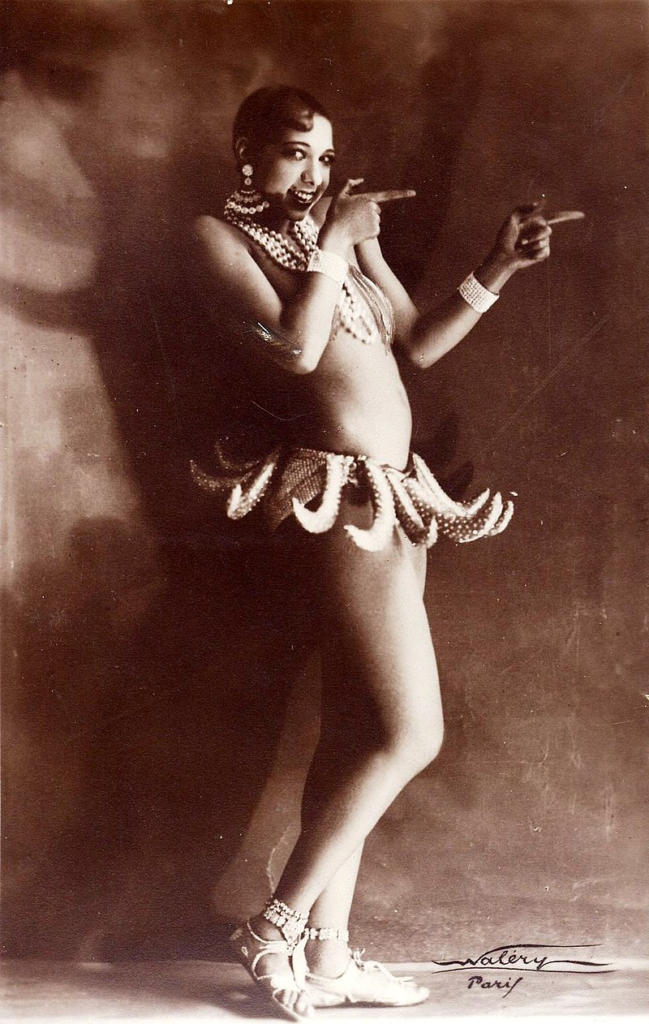
Above: American dancer Joséphine Baker (1906 – 1975)
In China, chocolate is considered “heaty“, and avoided in hot weather.

Above: The shrinking Yangtze River, China
Chocolate is associated with festivals such as Easter, when molded chocolate rabbits and eggs are traditionally given in Christian communities, and Hanukkah, when chocolate coins are given in Jewish communities.


Chocolate hearts and chocolate in heart-shaped boxes are popular on Valentine’s Day and are often presented along with flowers and a greeting card.
In 1868, Cadbury created a decorated box of chocolates in the shape of a heart for Valentine’s Day.

Why is the heart symbol not anatomically accurate?
The classic “heart shape” (♥) does not resemble the organ that pumps blood through our bodies.

Above: The human heart
Its origins are murky, but a few theories explain its development:
Some scholars trace it back to the silphium plant, an ancient contraceptive herb whose seed pods were heart-shaped.
This plant was widely used in love potions and fertility rituals.
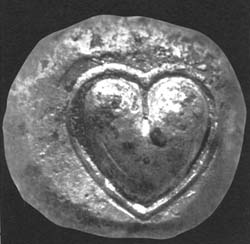
Above: Ancient Cyrenean silver coin depicting a silphium seed or fruit (510 – 470 BC)
Medieval and Renaissance artists often tried to depict human emotions rather than anatomical accuracy.
Over time, a more aesthetically pleasing and symmetrical heart shape was adopted.
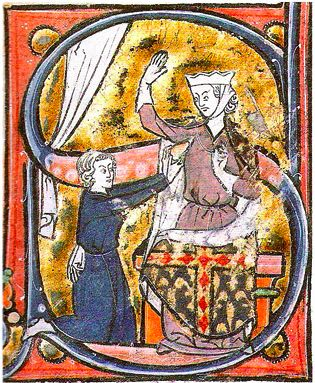
Above: The earliest known possible visual depiction of a heart symbol, as a lover hands his heart to the beloved lady, in a manuscript of the Roman de la poire, 13th century
The rounded, symmetrical heart shape resembles the curves of the human body — some even suggest it represents the shape of embracing lovers.
The idea that the classic heart shape (♥) resembles the female buttocks, breasts, or even the vulva has been floated by scholars and artists alike.
Here’s how it fits into the broader history of symbolism:
Some historians argue that the heart shape evolved from an artistic idealization of the curves of the female body, particularly the buttocks as seen from behind.
The reasoning?
Humans are naturally drawn to curves.
Sexual attraction has long influenced artistic representations of love and desire.
This theory suggests that ancient artists and lovers might have stylized the heart shape based on what they found most alluring.
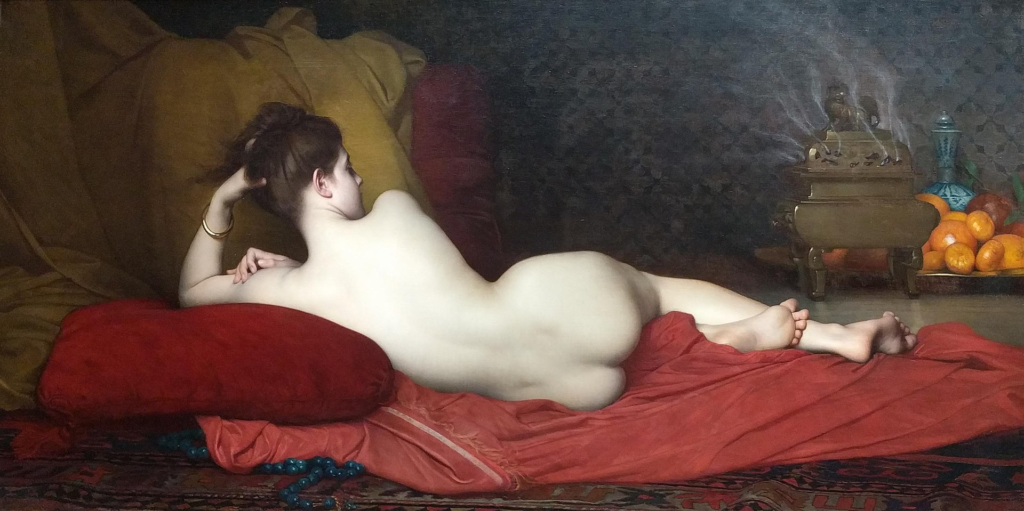
Others argue that the heart shape resembles a woman’s breasts, which have also been deeply associated with love, nurturing, and fertility.
The round, symmetrical form is aesthetically pleasing and psychologically linked to comfort and attraction.

Some scholars trace the shape back to fertility symbols, specifically the sacred feminine in ancient art.
In early cultures, fertility goddesses were often depicted with exaggerated features, including a heart-shaped outline of the vulva.
The connection to fertility and life might explain why the heart shape became linked to love and romance over time.

While we can’t say with certainty that the heart symbol directly evolved from the human body, it is clear that its shape echoes natural forms that have been celebrated in art, love, and fertility for centuries.
It’s a fascinating thought:
When we send heart emojis (❤️), are we sending a stylized symbol of human attraction from ages past?

Boxes of filled chocolates quickly became associated with the holiday.
Chocolate is an acceptable gift on other holidays and on occasions such as birthdays.
Many confectioners make holiday-specific chocolate candies.
Chocolate Easter eggs or rabbits and Santa Claus figures are two examples.
Such confections can be solid, hollow, or filled with sweets or fondant.

Chocolate has been the center of several successful book and film adaptations.
In 1964, Roald Dahl published a children’s novel titled Charlie and the Chocolate Factory.
The novel centers on a poor boy named Charlie Bucket who takes a tour through the greatest chocolate factory in the world, owned by the eccentric Willy Wonka.

Two film adaptations of the novel were produced: Willy Wonka & the Chocolate Factory (1971) and Charlie and the Chocolate Factory (2005).


A third adaptation, an origin prequel film titled Wonka, was released in 2023.
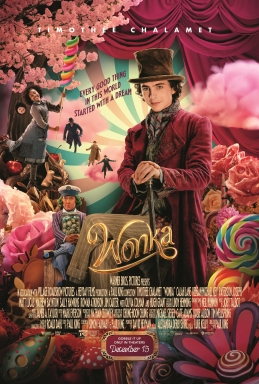
Chocolat, a 1999 novel by Joanne Harris, was adapted for film in Chocolat which was released a year later.
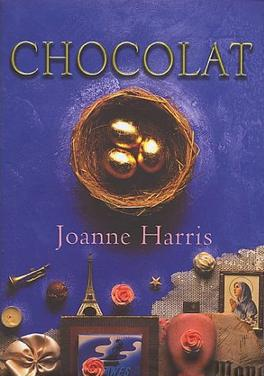

The connection between chocolate and romance dates to the Aztecs, who considered cacao a divine gift from Quetzalcoatl, the god of wisdom.
The Aztecs and Mayans believed cacao had aphrodisiac properties, enhancing desire and energy.
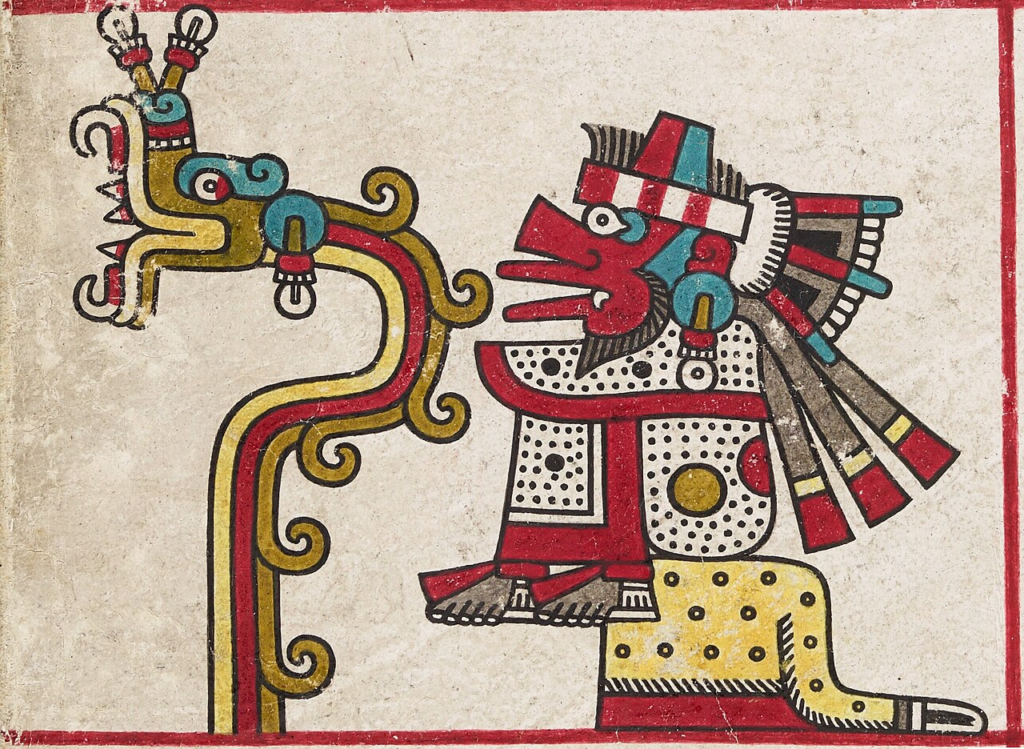
Above: Depiction of the two forms of the god Quetzalcoatl – His form as the feathered serpent, celestial deity, is depicted at the left, and his form as the god of the wind Ehecatl is seen at the right, with his characteristic completely black skin, beard and red mask.
When cacao made its way to Europe, it became a luxurious commodity associated with indulgence.
By the 19th century, British chocolatier Richard Cadbury capitalized on this by marketing chocolates in heart-shaped boxes, cementing its link to Valentine’s Day.

Above: English entrepreneur Richard Cadbury (1835 – 1899)
Chocolate has long been associated with passion, romance, and seduction, but does it actually stimulate desire?
The answer:
Kind of, but not in the way you might think.
Chocolate contains several compounds that have been linked to mood enhancement and even mild arousal:
Phenylethylamine (PEA)
Sometimes called the “love chemical”, PEA is a stimulant that the brain naturally produces when you’re in love. It promotes the release of dopamine, the pleasure neurotransmitter.
Theobromine
A mild stimulant that increases heart rate and energy levels, potentially mimicking the physical sensations of excitement.
Tryptophan
A precursor to serotonin, which enhances mood and creates feelings of happiness and well-being.
While these chemicals can boost mood and increase alertness, their effects are too mild to be considered a true aphrodisiac.
You would have to consume an absurd amount of chocolate to experience any significant physiological change.
(And by then, you’d likely feel too full to be in the mood for romance!)

Can love be chemically induced?
To some extent, yes — love and attraction are neurochemical processes.
Some key players include:
- Dopamine (reward & pleasure)
- Oxytocin (bonding & attachment)
- Vasopressin (long-term commitment)
- Testosterone & Estrogen (lust & attraction)
Scientists have even experimented with oxytocin nasal sprays to see if they can increase bonding and trust between people.
While they may enhance feelings of closeness, they don’t create love out of thin air.

Even if hormones and neurotransmitters play a role, love isn’t just chemicals.
It is experience, emotion, connection, and shared moments.
If love were purely chemical, we could just hand out dopamine pills instead of writing poetry, flirting, or gifting chocolates!

I took my troubles down to Madame Ruth.
You know that gypsy with the gold-capped tooth.
She’s got a pad down on 34th and Vine.
Selling little bottles of “Love Potion #9“.
I told her that I was a flop with chicks.
I’ve been this way since 1956.
She looked at my palm and she made a magic sign.
She said: “What you need is “Love potion #9”.”
She bent down and turned around and gave me a wink.
She said, “I’m gonna make it up right here in the sink.”
It smelled like turpentine, it looked like India ink.
I held my nose, I closed my eyes, I took a drink…
I didn’t know if it was day or night.
I started kissing everything in sight.
But when I kissed a cop down on 34th and Vine,
He broke my little bottle of “Love Potion #9“
I held my nose, I closed my eyes, I took a drink…
I didn’t know if it was day or night.
I started kissing everything in sight.
But when I kissed a cop down on 34th and Vine,
He broke my little bottle of “Love Potion #9“.
“Love Potion #9“
“Love Potion #9“
“Love Potion #9“

Ah, “Love Potion #9“:
A playful ode to the idea that love can be bottled and dispensed like a magic elixir!
But is there any real-world “love potion” that could make someone fall in love?
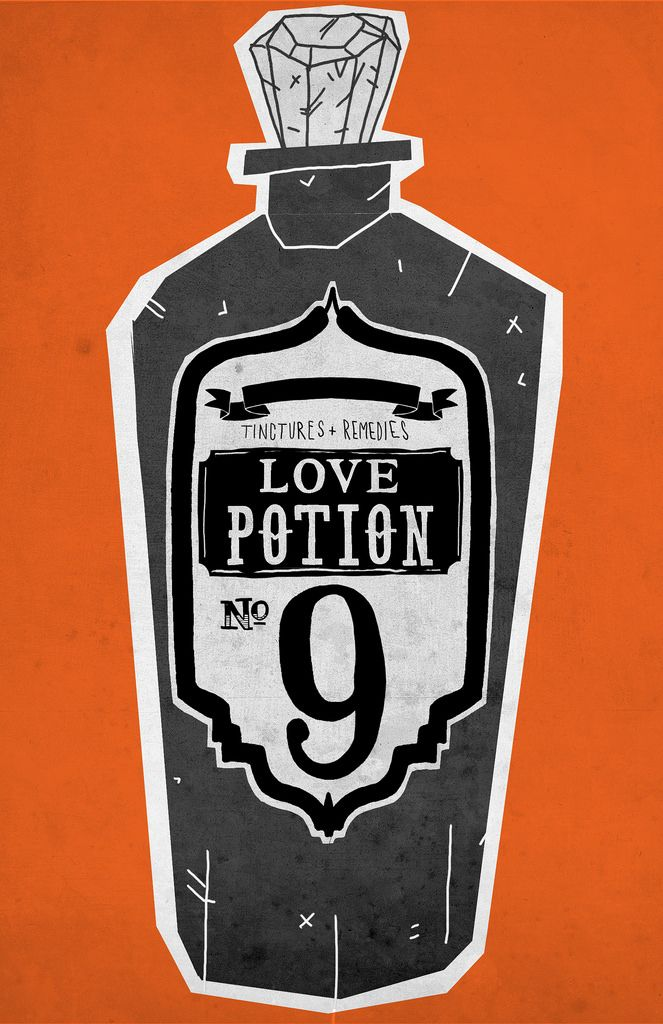
Let’s delve into the chemistry of love induction.
Can love be induced chemically?
Yes—to an extent.
While there’s no guaranteed formula to create authentic, lasting love, science has identified several compounds that can increase attraction, bonding, and trust.

The Main Love Chemicals:
Dopamine
- The “reward” chemical, responsible for feelings of pleasure and obsession.
Oxytocin
- The “bonding” hormone, released during intimacy, cuddling and childbirth.
Vasopressin
- plays a role in long-term attachment and monogamous bonding.
Phenylethylamine (PEA)
- The “love molecule”, naturally present in chocolate, mimicking the rush of falling in love.
Serotonin
- Regulates mood and contributes to the euphoric, obsessive phase of early romance.
By manipulating these chemicals, scientists have experimented with “inducing” love-like states in controlled environments.

The science of love induction:
Oxytocin Nasal Sprays:
Oxytocin (aka the “cuddle hormone“) has been tested in nasal spray form, increasing trust, empathy, and bonding between people.
Some studies suggest that couples who inhale oxytocin before a discussion feel more connected and affectionate.
However, it does not create attraction out of thin air—rather, it enhances existing connections.

MDMA (Ecstasy/Molly):
MDMA floods the brain with serotonin, dopamine, and oxytocin, creating intense feelings of emotional closeness and euphoria.
Some researchers have explored MDMA-assisted therapy for couples to strengthen emotional bonds and rekindle intimacy.
The problem?
It is short-lived — when the chemical high fades, the “love” often fades too.

Pheromones:
Some pheromone-based perfumes claim to enhance attraction, but the evidence is weak.
Humans do produce pheromones, but unlike in animals, their influence on attraction is subtle and highly individualized.

Even if we could chemically induce attraction, would that truly be love?
Love that is forced, manufactured, or artificially enhanced raises ethical concerns:
Are we manipulating free will?
Love is more than just chemical attraction.
It requires shared experience, deep emotional connection and conscious choice.
Even if a “love potion” could increase desire, could it sustain love in the long run?
Real love is messy, unpredictable and deeply personal.
No lab experiment or potion can fully replicate it.
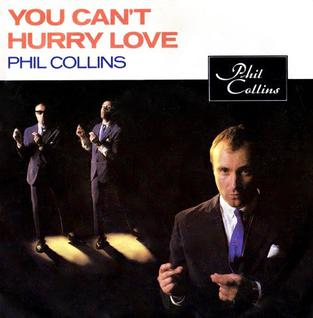
Valentine’s Day has been shaped by mythology, commerce and cultural storytelling.
Flowers, chocolates and hearts may not have originally been tied to St. Valentine, but they have become powerful symbols of love, reminding us that romance is a blend of history, ritual and human imagination.

Literature is filled with stories of induced love, love potions, and the power of both magical and psychological manipulation in matters of the heart.
Shakespeare: A Midsummer Night’s Dream
- The ultimate love potion story!
- The fairy king Oberon orders Puck to apply a magical juice from a flower (“love-in-idleness,” supposedly derived from Cupid’s arrow) to Titania’s eyes, causing her to fall in love with the first creature she sees — a poor man transformed into a donkey.
- Puck accidentally uses the potion on Lysander and Demetrius, throwing the love quadrangle into chaos.
- The play suggests that love is irrational and easily manipulated — something that can be as accidental and fleeting as a spell.
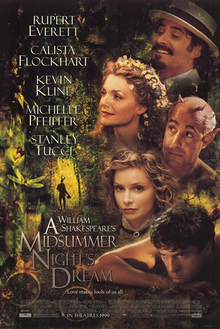
Tristan and Isolde (Medieval Romance):
- One of the most famous love potion stories in history.
- Tristan and Isolde mistakenly drink a potion meant for her and King Mark, causing them to fall into a passionate, doomed love affair.
- This tale reflects the idea that love, when artificially induced, can be powerful but also tragic, removing free will.
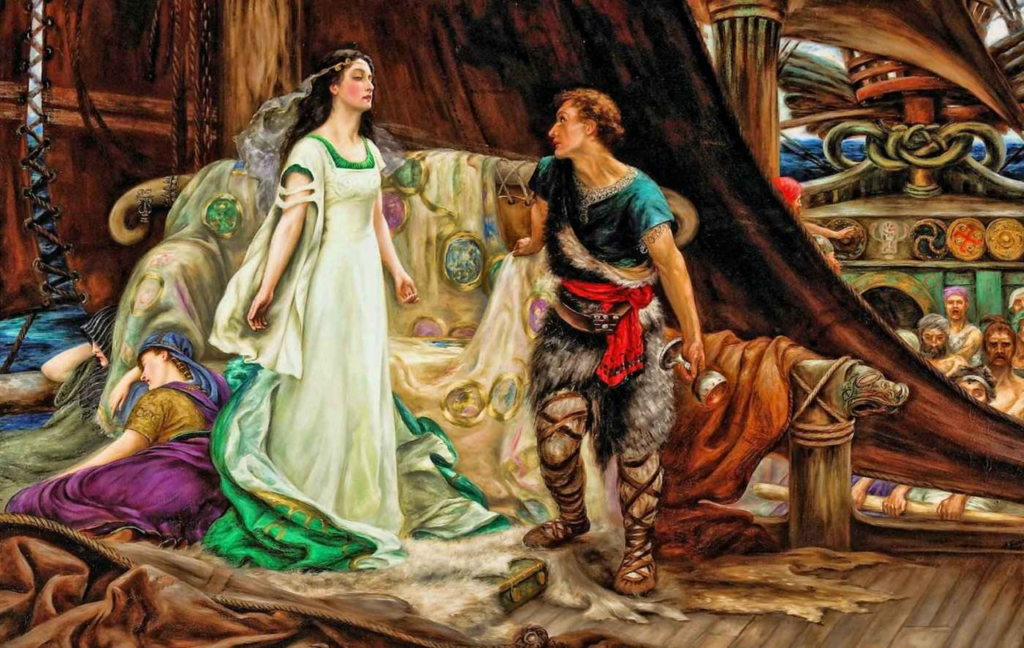
Above: Tristan and Isolde, Herbert Draper (1901)
Greek Mythology: Eros and Psyche
- Eros (Cupid) is sent to make Psyche fall in love with a hideous monster but ends up falling in love with her instead.
- Love, in this case, is meant to be a punishment, manipulated by the gods.
- Psyche’s journey shows that true love must be earned, not forced through divine trickery.
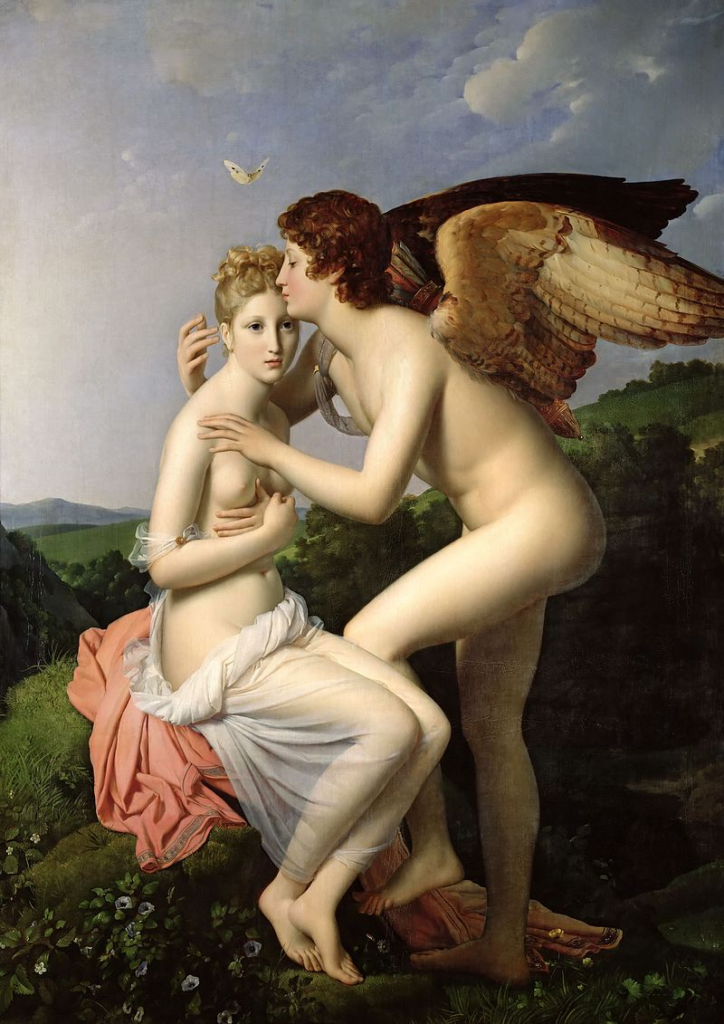
Above: Psyche and Amor, also known as Psyche Receiving Cupid’s First Kiss (1798), by François Gérard: a symbolic butterfly hovers over Psyche in a moment of innocence poised before sexual awakening.
Richard Wagner’s opera Lohengrin:
- Elsa is forbidden from asking her mysterious husband Lohengrin his true name and origins — if she does, he will leave.
- This is a reverse love spell — a restriction meant to ensure devotion.
- The idea that secrecy and control can shape love is an interesting contrast to potion-induced passion.
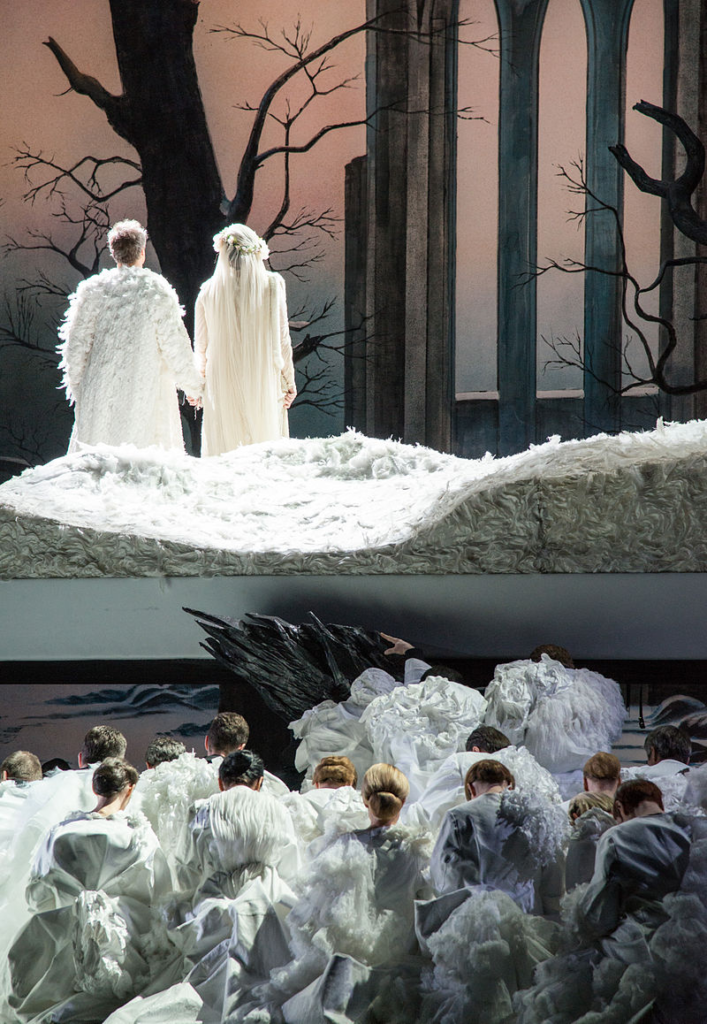
Above: Wagner’s Lohengrin, Oper Oslo, Norway
I suspect that love in the giving of flowers and chocolate is less about the responses they are supposed to trigger in the biology of the recipient as much as it is about the message of generosity and effort that these gifts are meant to represent.
The commercialization of Valentine’s Day has drained much of its original charm, turning a once poetic occasion into a corporate frenzy of mandatory gift-giving and performative romance.
The modern Valentine’s Day industry pushes the idea that love must be demonstrated through expensive gesture:
Diamonds, extravagant dinners and overpriced bouquets.
It thrives on manufactured expectations, where one’s affection is measured by how much they spend rather than the depth of their sentiment.
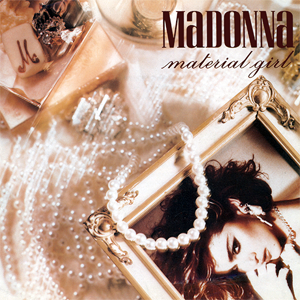
The irony?
The holiday that once celebrated intimate expressions of love and flirtation now often creates stress, obligation, and even resentment.

Valentine’s Day also carries the unspoken implication that love is only valid if it is romantic.
This marginalizes the vast spectrum of human love — platonic friendships, self-love, familial bonds, and even the joy of solitude.
For those not in a relationship, the day can feel exclusionary, as if singleness is something to be pitied rather than embraced.

Instead of buying into corporate dictates, perhaps the true spirit of Valentine’s Day should be reclaimed:
- Writing heartfelt words instead of buying empty cards.
- Celebrating all forms of love — not just romantic, but friendships, self-care and human connection.
- Rejecting the pressure to “prove” love through purchases.
Love — whether in flirtation, romance, or deep companionship —should never feel forced or commodified.
If anything, Valentine’s Day should be about the simple joy of affection, not an obligation dictated by florists and chocolate makers.

Perhaps it was this rejection of Valentine’s Day that led to the purposeful choice of this date for two great deliberate acts of violence:
The Saint Valentine’s Day Massacre was the murder of seven members and associates of Chicago’s North Side Gang on Saint Valentine’s Day 1929.
The men were gathered at a Lincoln Park, Chicago garage on the morning of 14 February 1929.
They were lined up against a wall and shot by four unknown assailants, two of whom were disguised as police officers.
The murders resulted from the competition for control of organized crime in the city during Prohibition between the largely Irish North Siders, headed by George “Bugs” Moran, and their largely Italian Chicago Outfit rivals led by Al Capone.
The perpetrators have never been conclusively identified, but former members of the Egan’s Rats gang working for Capone are suspected of involvement.
Others have said that members of the Chicago Police Department who allegedly wanted revenge for the killing of a police officer’s son played a part.
The choice of Valentine’s Day was likely deliberate — intended to mock the idea of love and romance with an act of brutal violence.
Capone was known for theatrical displays of power, and staging a massacre on a day associated with sentimentality and tenderness may have been a way to send a chilling message.
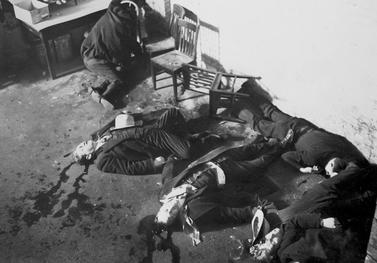
Above: Saint Valentine’s Day Massacre, Chicago, 14 February 1929
The publication of The Satanic Verses by Viking Penguin Publishing in September 1988 caused immediate controversy in the Islamic world because of what was seen by some to be an irreverent depictions of Muhammad.
The title refers to a disputed Muslim tradition that is referenced in the book.
According to this tradition, Muhammad (Mahound in the book) added verses (Ayah) to the Qur’an accepting three Arabian pagan goddesses who were worshiped in Mecca as divine beings.
According to the legend, Muhammad later revoked the verses, saying the Devil tempted him to utter these lines to appease the Meccans (hence the “Satanic” verses).
However, the narrator reveals to the reader that these disputed verses were actually from the mouth of the Archangel Gabriel.
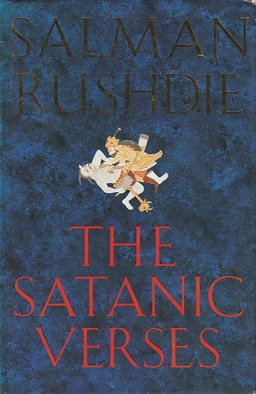
The book was banned in many countries with large Muslim communities, including India, Iran, Bangladesh, Sudan, South Africa, Sri Lanka, Kenya, Thailand, Tanzania, Indonesia, Singapore, Venezuela, and Pakistan.
In total, 20 countries banned the book.
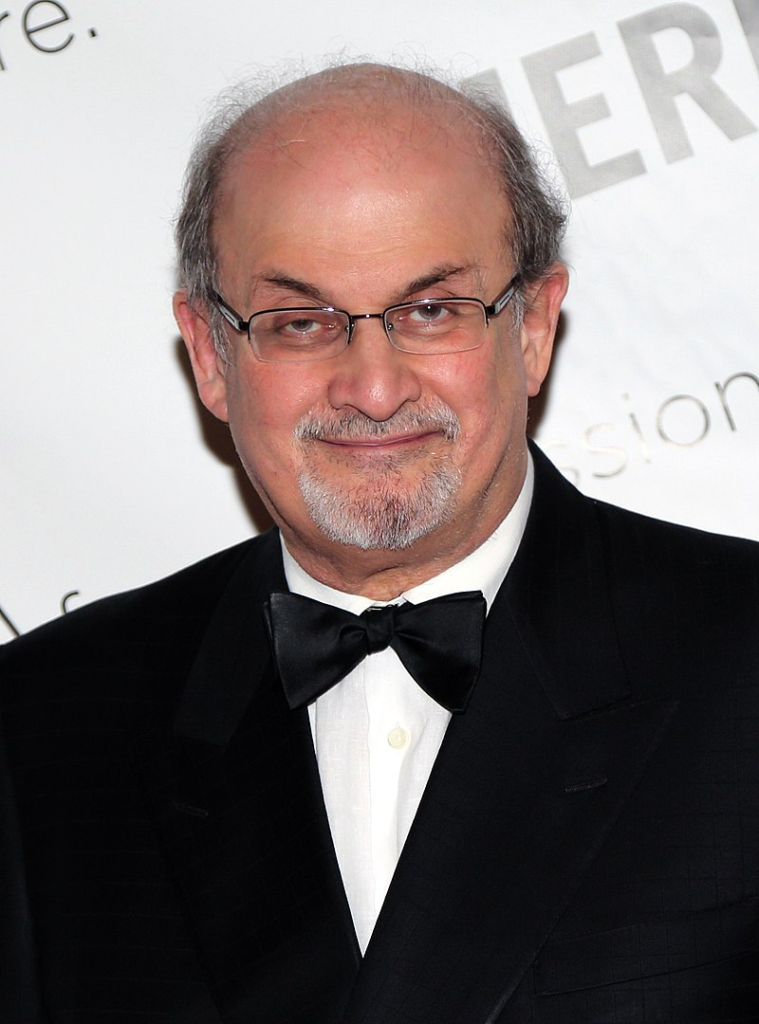
Above: Salman Rushdie (2014)
In response to the protests, on 22 January 1989, Rushdie published a column in The Observer that called Muhammad “one of the great geniuses of world history“, but noted that Islamic doctrine holds Muhammad to be human, and in no way perfect.
He held that the novel is not “an anti-religious novel.
It is, however, an attempt to write about migration, its stresses and transformations“.

It was 14 February 1989 — Valentine’s Day, and the day of his close friend Bruce Chatwin’s funeral.

Above: English writer Bruce Chatwin (1940 – 1989)
The world learns that a fatwah ordering Rushdie’s execution was proclaimed on Radio Tehran by Ayatollah Khomeini, the Supreme Leader of Iran, calling the book “blasphemous against Islam“.
Chapter IV of the book depicts the character of an Imam in exile who returns to incite revolt from the people of his country with no regard for their safety.
According to Khomeini’s son, his father never read the book.
A bounty was offered for Rushdie’s death.
He was thus forced to live under police protection for several years.
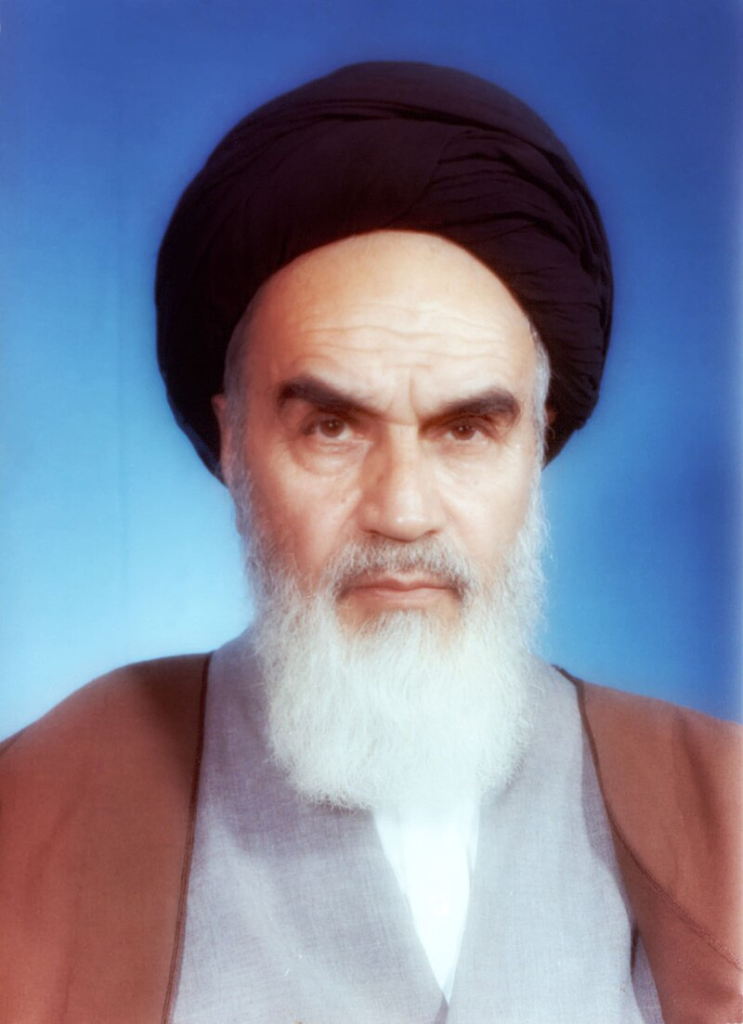
Above: Iranian Supreme Leader Ruhollah Khomeini (1900 – 1989)
On 7 March 1989, the United Kingdom and Iran broke diplomatic relations over the Rushdie controversy.
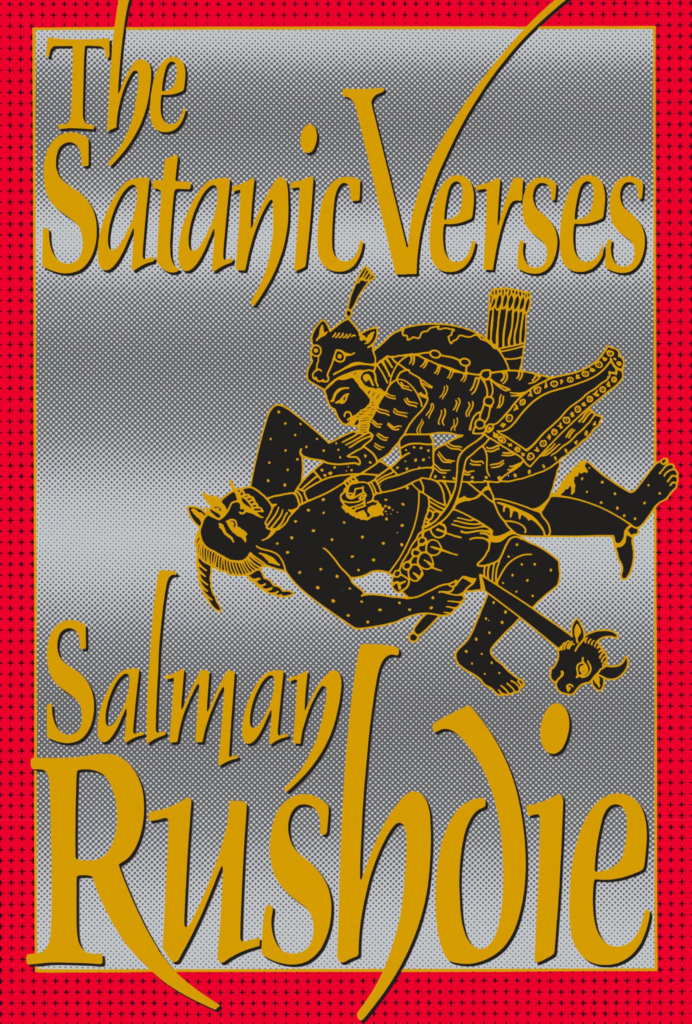
In 1989, The New York Times published “Words For Salman Rushdie“:
“28 distinguished writers born in 21 countries speak to him from their common land – the country of literature.
For expressing their ideas publicly in the past many of these writers have suffered censorship, exile – forced or self-imposed – and imprisonment.”

Czesław Miłosz wrote:
“I have particular reasons to defend your rights, Mr. Rushdie.
My books have been forbidden in many countries or have had whole passages censored out.
I’m grateful to people who stood then by the principle of free expression, and I back you now in my turn.”
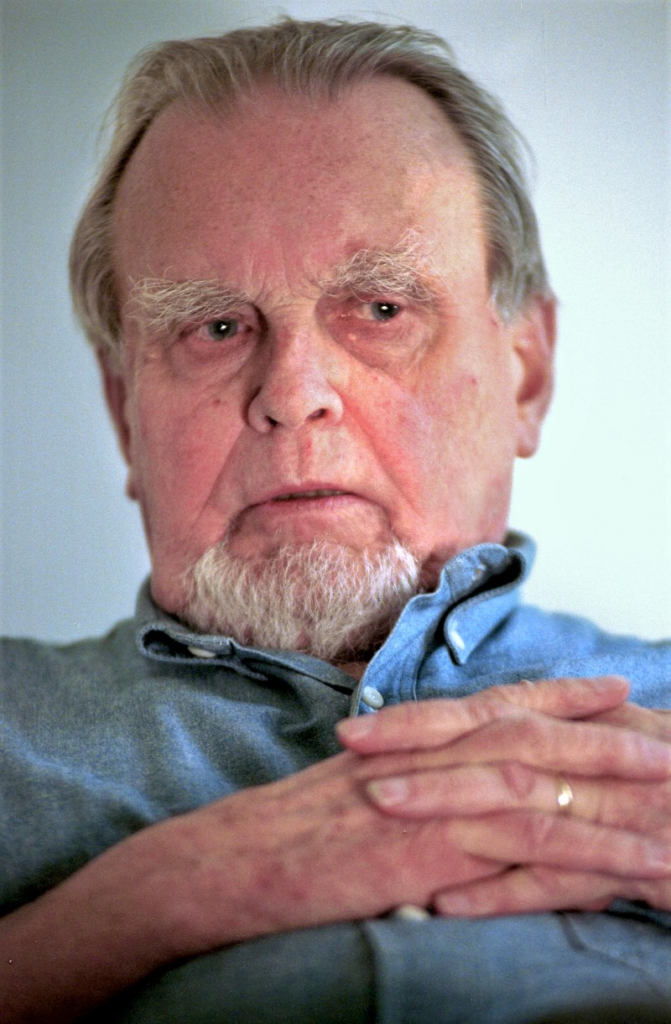
Above: Polish poet Czesław Miłosz (1911 – 2004)
Ralph Ellison:
“You deserve the full and passionate solidarity of any man of dignity, but I am afraid this is too little.
This story of a man alone against worldwide intolerance, and of a book alone against the craziness of the media, can become the story of many others.
The bell tolls for all of us.”
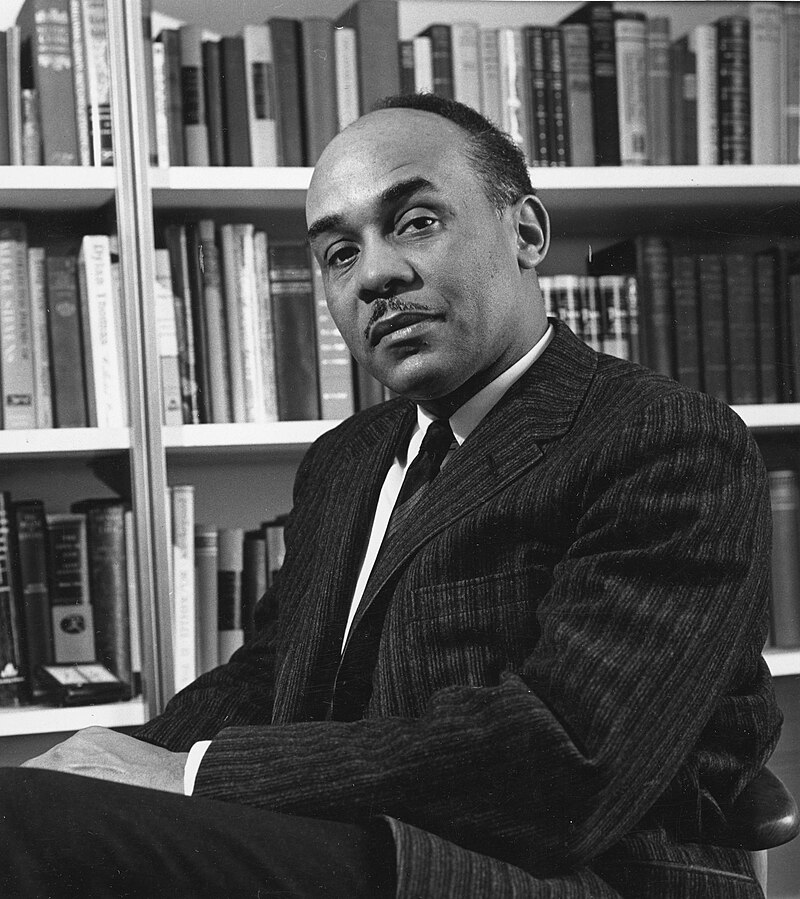
Above: American writer Ralph Ellison (1913 – 1994)
Umberto Eco:
“Keep to your convictions.
Try to protect yourself.
A death sentence is a rather harsh review.”
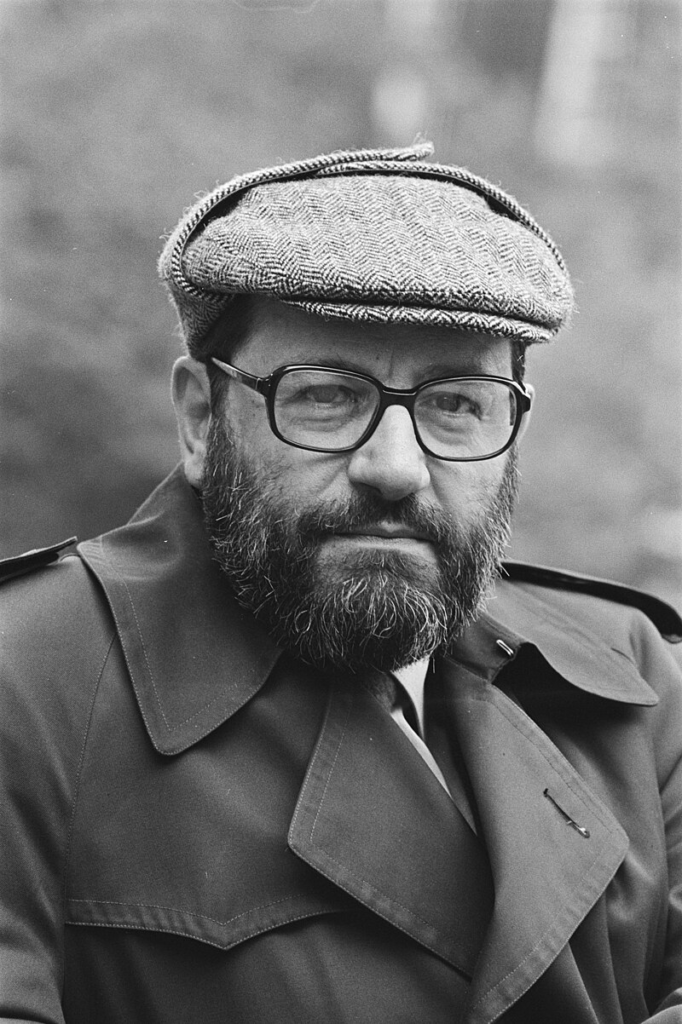
Above: Italian writer/philosopher Umberto Eco (1932 – 2016)
Anita Desai:
“Silence, exile and cunning, yes.
And courage.“
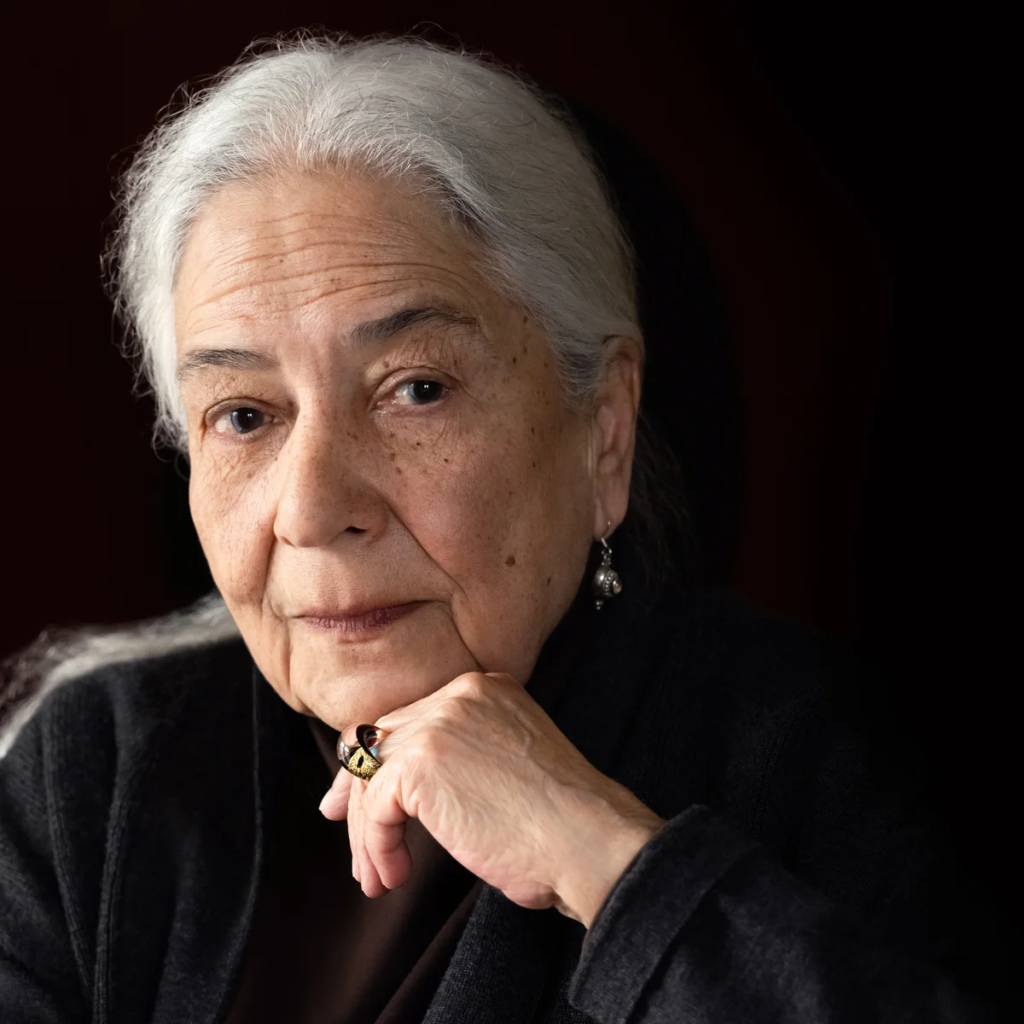
Above: Indian novelist Anita Desai
Christopher Hitchens recalled:
“When the Washington Post telephoned me on Valentine’s Day 1989 to ask for my opinion about the Ayatollah Khomeini’s fatwah, I felt at once here was something that completely committed me.
It was, if I can phrase it like this, a matter of everything I hated versus everything I loved.
In the hate column:
Dictatorship, religion, stupidity, demagogy, censorship, bullying, and intimidation.
In the love column:
Literature, irony, humor, the individual, and the defense of free expression.
Plus, of course, friendship – although I’d like to think my response would have been the same even if I hadn’t known Salman at all.
To re-state the premise of the argument again:
The theocratic head of a foreign despotism offers money in his own name in order to suborn the murder of a civilian of another country, for the offense of writing a work of fiction.
No more root-and-branch challenge to the values of the Enlightenment (on the bicentennial of the fall of the Bastille), or to the First Amendment to the Constitution, could be imagined.”

Above: British writer Christopher Hitchens (1949 – 2011)
Rushdie wrote:
“I have often been asked if Christopher defended me because he was my close friend.
The truth is that he became my close friend because he wanted to defend me.
He and I found ourselves describing our ideas, without conferring, in almost identical terms.
I began to understand that while I had not chosen the battle it was at least the right battle, because in it everything that I loved and valued (literature, freedom, irreverence, freedom, irreligion, freedom) was ranged against everything I detested (fanaticism, violence, bigotry, humorlessness, philistinism, and the new offense culture of the age).
Then I read Christopher using exactly the same everything-he-loved-versus-everything-he-hated trope, and felt understood.“

Above: Salman Rushdie (2014)
In 1993, 100 writers and intellectuals from the Muslim world expressed solidarity in the collection For Rushdie.

Naguib Mahfouz wrote:
“The veritable terrorism of which he is a target is unjustifiable, indefensible.
One idea can only be opposed by other ideas.
Even if the punishment is carried out, the idea as well as the book will remain.”

Above: Egyptian writer Nagib Mahfouz (1911 – 2006)
Tahar Ben Jelloun wrote that the fatwah was “intolerable, inadmissible and has nothing to do with the tolerant Islam that I was taught” and threatened “the ability to create characters and develop them in the space and time chosen by the writer.”

Above: Moroccan writer Tahar Ben Jelloun
Rabah Belamri wrote:
“A society that refuses to question itself, that denies artists and thinkers the right to raise doubts, that dares not laugh at itself, has no hope of prospering.”

Above: Algerian writer Rabah Belamri (1946 – 1995)
The composer Ahmed Essyad wrote a piece of music dedicated:
“To Salman Rushdie, so that, as an artist, he can write what I disagree with“.
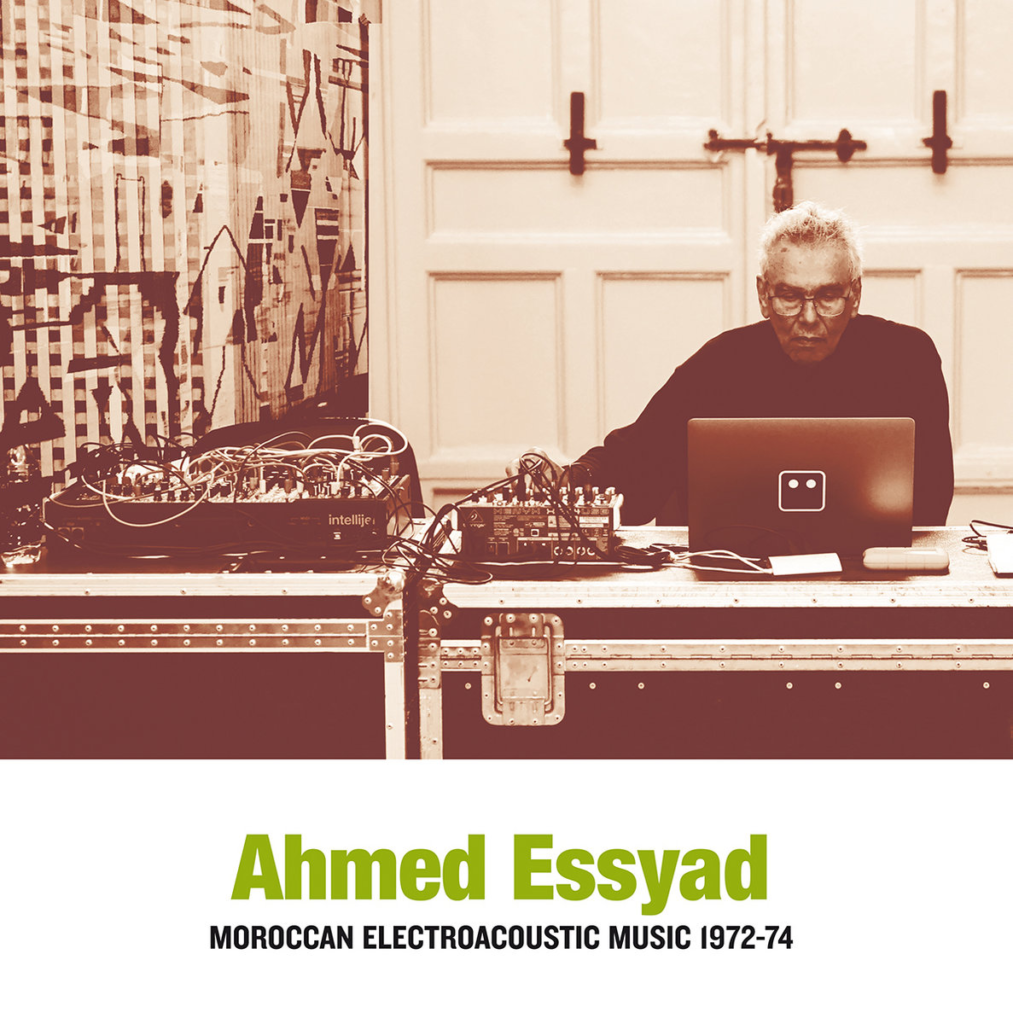
Rushdie expressed gratitude for the “anthology of blows struck in the fight against obscurantism and fanaticism” by “the most gifted, the most learned, the most important voices of the Muslim and Arab world, gathered together to subject my work and the furor surrounding it to so brilliant, so many-sided, so judicious an examination“.
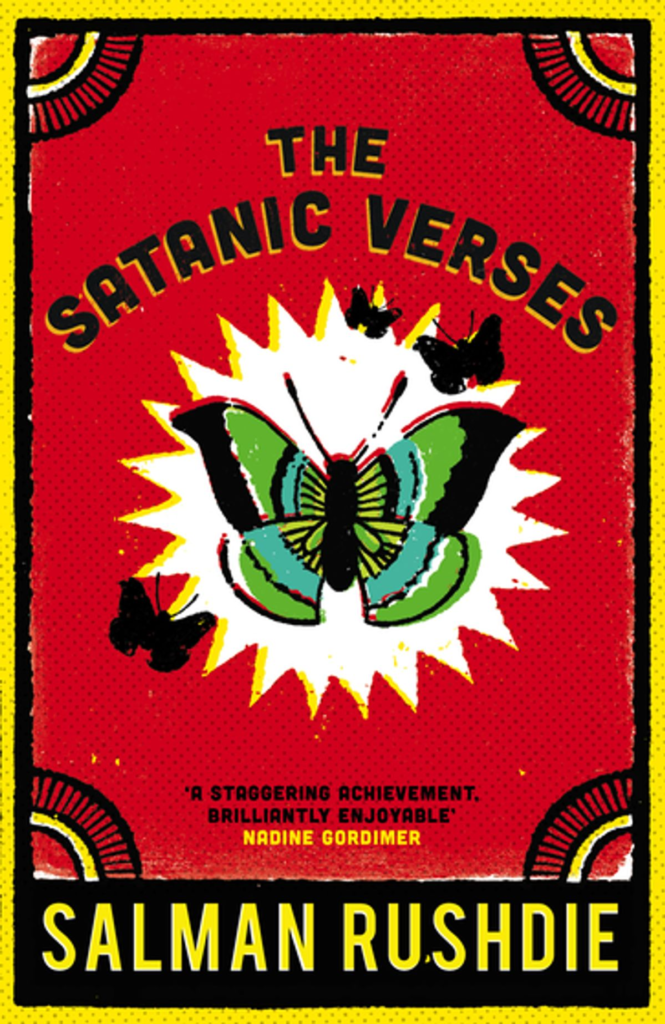
When, on BBC Radio 4, he was asked for a response to the threat, Rushdie said:
“Frankly, I wish I had written a more critical book.
I’m very sad that it should have happened.
It’s not true that this book is a blasphemy against Islam.
I doubt very much that Khomeini or anyone else in Iran has read the book or more than selected extracts out of context.”
Later, he wrote that he was “proud, then and always“, of that statement.
While he did not feel his book was especially critical of Islam, “a religion whose leaders behaved in this way could probably use a little criticism“.

The publication of the book and the fatwah sparked violence around the world, with bookstores firebombed.
Muslim communities in several nations in the West held public rallies, burning copies of the book.
Several people associated with translating or publishing the book were attacked, seriously injured, and even killed.
Many more people died in riots in some countries.
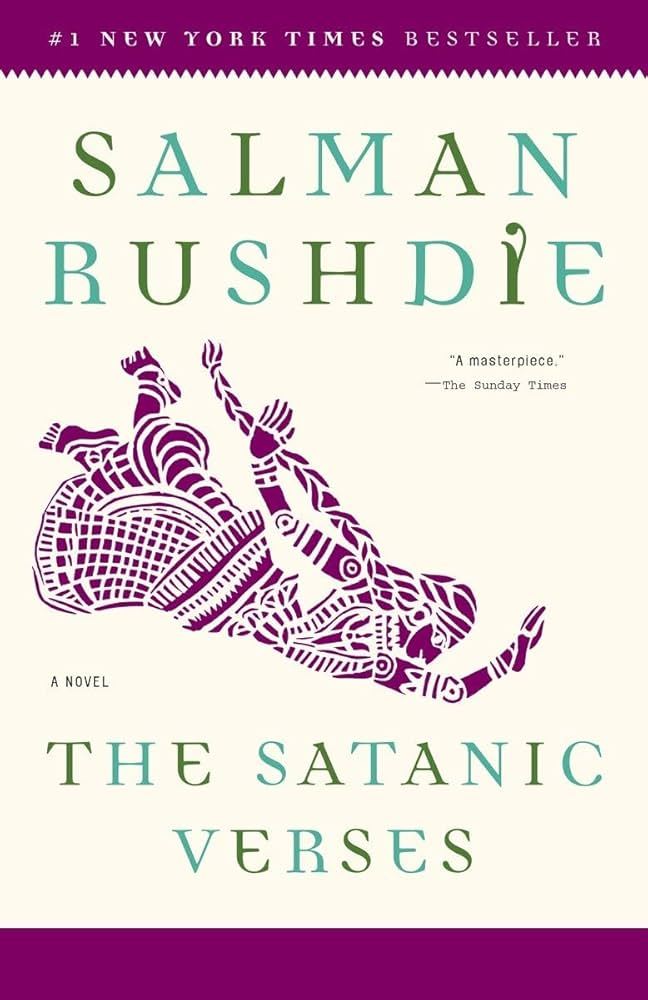
Despite the danger posed by the fatwa, Rushdie made a public appearance at London’s Wembley Stadium on 11 August 1993, during a concert by U2.
In 2010, U2 bassist Adam Clayton recalled that “lead vocalist Bono had been calling Salman Rushdie from the stage every night on the Zoo TV tour.
When we played Wembley, Salman showed up in person and the stadium erupted.
You could tell from drummer Larry Mullen, Jr.’s face that we weren’t expecting it.
Salman was a regular visitor after that.
He had a backstage pass and he used it as often as possible.
For a man who was supposed to be in hiding, it was remarkably easy to see him around the place.“

Above: Irish band U2
On 24 September 1998, as a precondition to the restoration of diplomatic relations with the UK, the Iranian government, then headed by Mohammad Khatami, gave a public commitment that it would “neither support nor hinder assassination operations on Rushdie“.
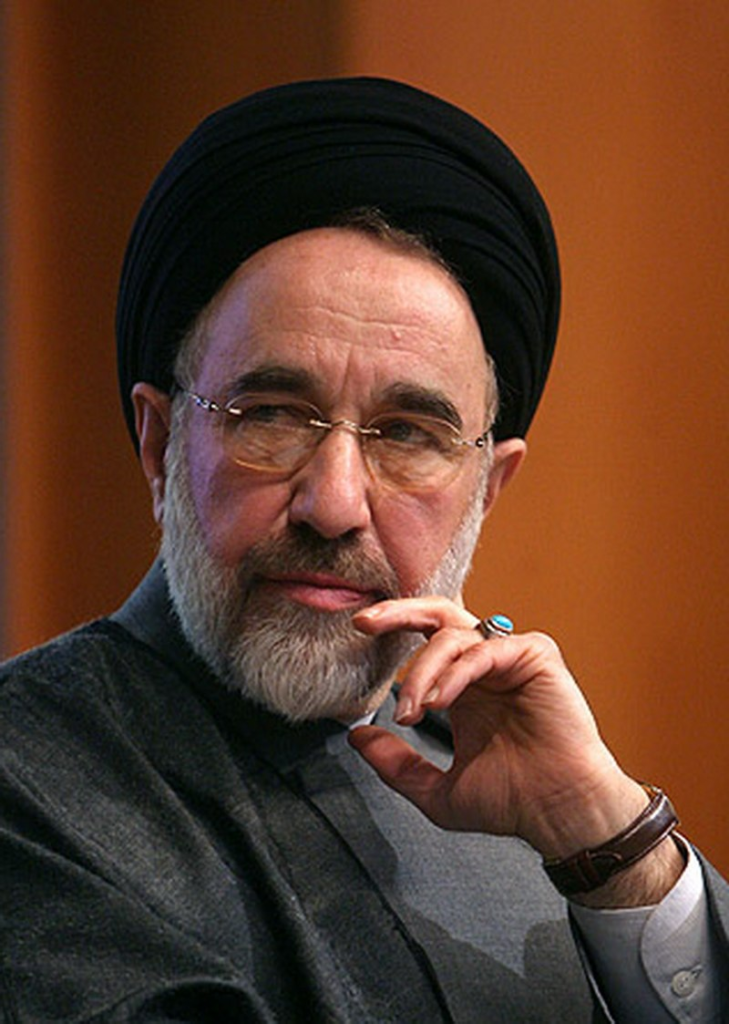
Above: Iranian President Mohammad Khatami (r. 1997 – 2005)
Hardliners in Iran have continued to reaffirm the death sentence.
In early 2005, Khomeini’s fatwah was reaffirmed by Iran’s current leader, Ayatollah Ali Khamenei, in a message to Muslim pilgrims making the annual pilgrimage to Mecca.

Above: Iranian Supreme Leader Ali Khamenei
Additionally, the Revolutionary Guards declared that the death sentence on him is still valid.

Above: Seal of the Revolutionary Guards of Iran
Rushdie has reported that he still receives a “sort of Valentine’s card” from Iran each year on 14 February letting him know the country has not forgotten the vow to kill him and has jokingly referred to it as “my unfunny Valentine“.

He said:
“It has reached the point where it’s a piece of rhetoric rather than a real threat.“
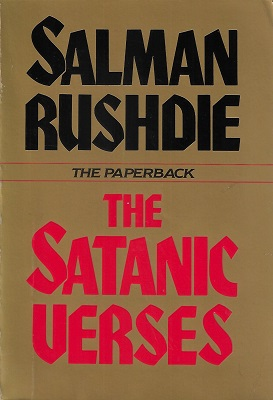
Despite the threats on Rushdie personally, he said that his family has never been threatened, and that his mother, who lived in Pakistan during the later years of her life, even received outpourings of support.
Rushdie himself has been prevented from entering Pakistan, however.

Above: State emblem of Pakistan
A former bodyguard to Rushdie, Ron Evans, planned to publish a book recounting the behavior of the author during the time he was in hiding.
Evans said Rushdie tried to profit financially from the fatwah and was suicidal, but Rushdie dismissed the book as a “bunch of lies” and took legal action against Evans, his co-author and their publisher.
On 26 August 2008, Rushdie received an apology at the High Court in London from all three parties.

A memoir of his years of hiding, Joseph Anton, was released on 18 September 2012.
“Joseph Anton” was Rushdie’s secret alias during the height of the controversy.

In February 1997, Ayatollah Hasan Sane’i, leader of the bonyad panzdah-e khordad (15th of Khordad Foundation), reported that the blood money offered by the foundation for the assassination of Rushdie would be increased from $2 million to $2.5 million.
Then a semi-official religious foundation in Iran increased the reward it had offered for the killing of Rushdie from $2.8 million to $3.3 million.

Above: Iranian government official Hassan Sane’i (1934 – 2023)
In November 2015, former Indian minister P. Chidambaram acknowledged that banning The Satanic Verses was wrong.

Above: Indian politician Palaniappan Chidambaram
In 1998, Iran’s former President Mohammad Khatami proclaimed the fatwa “finished“, but it has never been officially lifted.
In fact it has been reiterated several times by Ali Khamenei and other religious officials.
Yet more money was added to the bounty in February 2016.
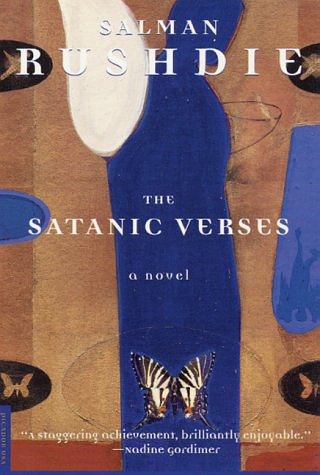
Should a man have the right to say what he will?
Yes.
But just because a man can say a thing does not infer that he should say a thing.
There are consequences for our actions.
Is the murder of a man justifiable because what he says offends you?
No.
Should art, literature or music be banned because it offends us?
No.
As individuals we have the freedom of our wallets, to buy or not buy the works of others.
I do not want someone telling me what I can or cannot buy with my hard-earned money.
Freedom of expression is a great power, but with great power comes great responsibility.
Just because we can say a thing does not mean we should say a thing.

According to the Qu’ran:
“Allah is God, one. God, eternal.
He does not give birth nor was He born.
And there is none like unto Him.“
No other gods exist beside Him.
He is one in that He does not manifest Himself in different beings.
The basic unity (tawhid), unlike the Christian conception in which the Divine is tripartite, composed of the Father, the Son and the Holy Ghost, Islam dictates that is one God and no other divine forces.
Nothing, in the Muslim mind, is like Allah.
He is eternal, without beginning or end, outside space and time, and beyond human understanding.

The great medieval scholar al-Ghazzali wrote that:
“No one other than God Himself can ever completely know God or should ever presume to understand Him and His works.”
Questioning Allah’s tawhid is a very serious affront.
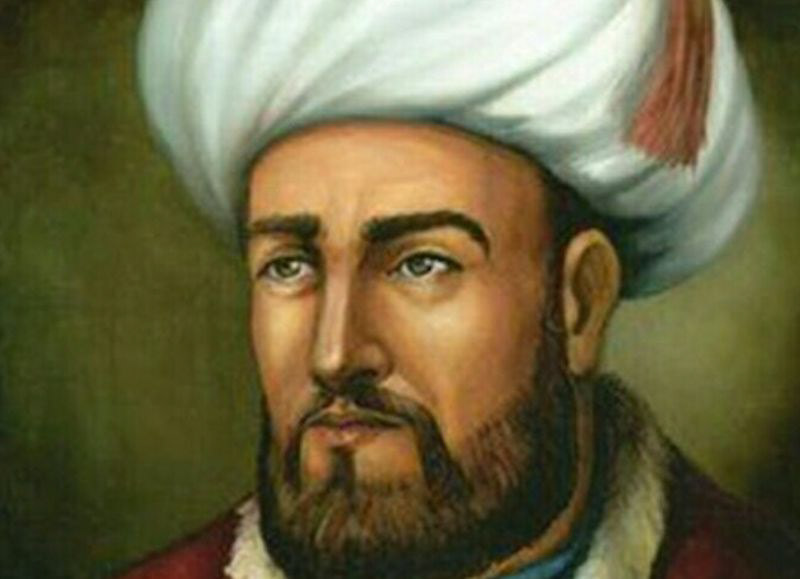
Above: Al-Ghazali (1058 – 1111)
Those who were surprised by the trouble caused by Salman Rushdie’s book The Satanic Verses failed to understand that in questioning the singularity of God the book ignored and subverted the supreme importance that all Muslims bestow on God’s unity.
Rushdie’s offense was to give credence to a pre-Islamic belief that Allah had three daughters, each of whom held divine power.
The Prophet Muhammad’s teaching holds that God had neither wife nor children as this would have been incompatible with His role as the Creator and the Almighty.
To believe that God is not alone is to commit shirk.
Shirk implies that God is not omnipotent but shares His power.
In strict Muslim societies, shirk is so serious that the only appropriate punishment is death.
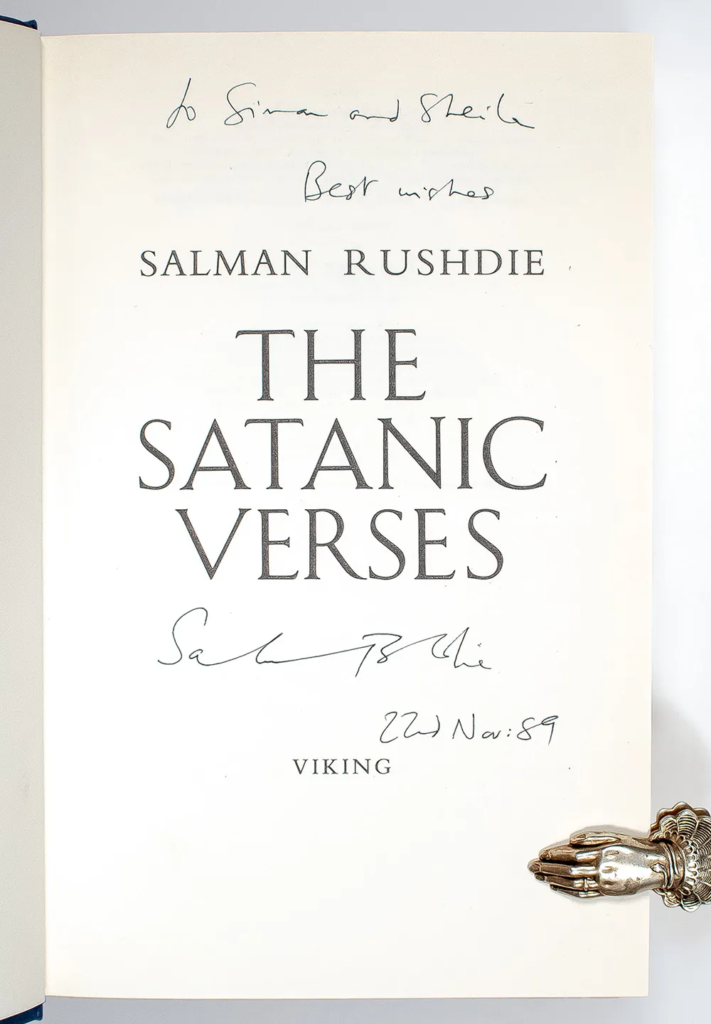
The West regarded the outcry over the Verses as an affront to freedom of speech.
However, the important lesson from the Rushdie incident is that to Muslims the central tenets of Islam are so powerful that they can transcend all other considerations.
Blasphemy is an extremely grievous crime under Shari’ah law.
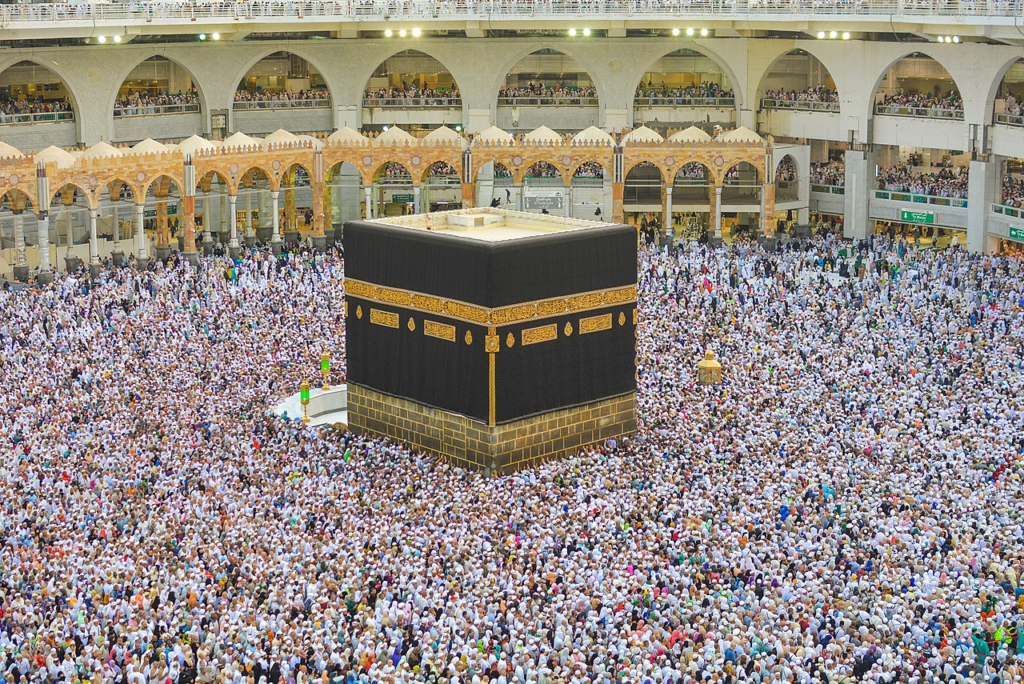
Above: The Kaaba at Masjid al-Haram in Mecca, Saudi Arabia, the holiest Islamic site
Muhammad’s own response to such attacks was to hold firm and to be patient, hating the evil but not the person who had succumbed to it.

Here’s the thing:
Rushdie came from a Muslim family.
He should have known better than to confront the basic tenets of Islam whether his intentions were sacrilegious or not, whether he simply wanted to tell a story or question the faith itself.
He should have known as a Muslim, practicing or not, a believer or not, that you cannot pervert the basic tenets of Islam and not expect a reaction.
If someone offends God, that is a matter between them and God, but if someone who has had the advantages of being born and raised as a Muslim attacks Islam, it could be construed as an attack on Islam that would endanger the Brotherhood.
To be born a Muslim is a privilege.
To fail to recognize this and to renounce the advantages that God has given you is an insult to God, a subversive action that may hazard the Brotherhood.
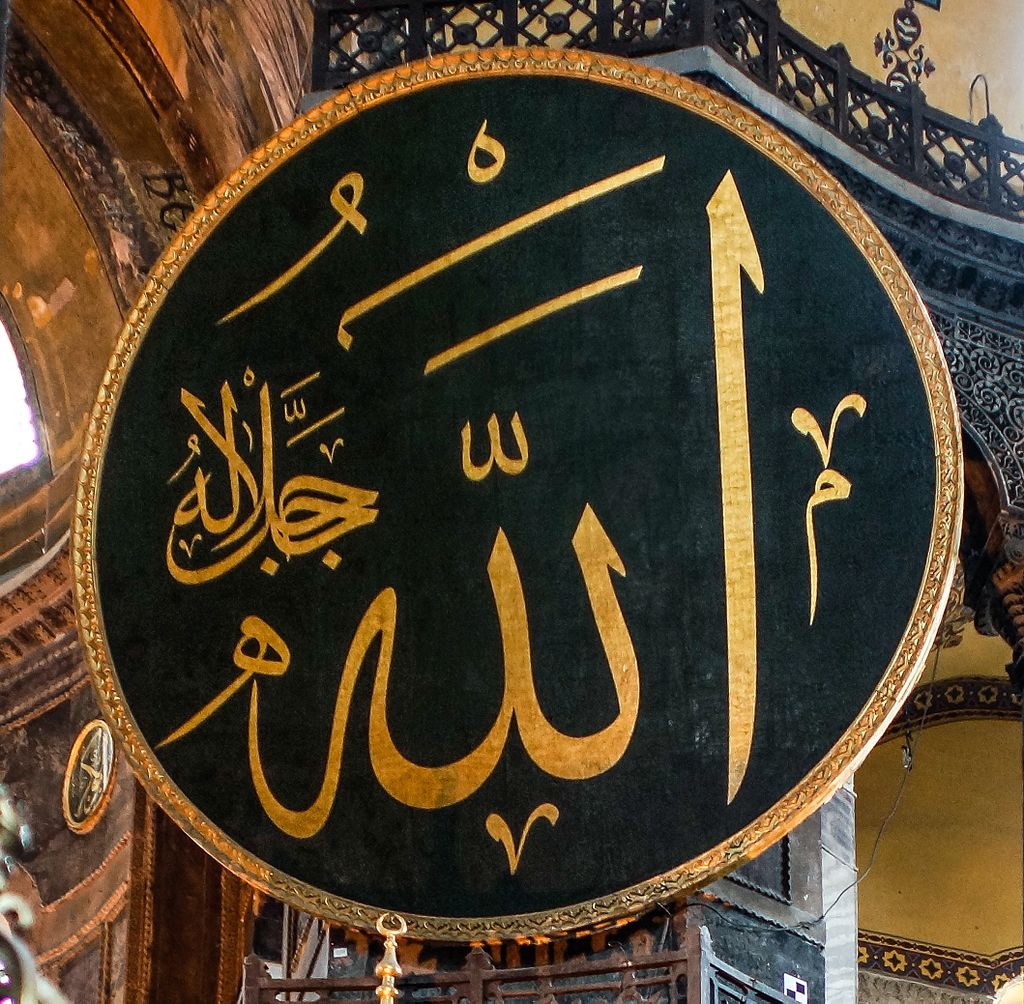
Above: The word Allah in Arabic in Hagia Sophia, Istanbul, Türkiye
That being said, the Qur’an lays down:
“Let there be no compulsion in religion.“(Surah 2:25)

And here is where I must disagree with Rushdie’s fatwah.
Rushdie’s enemies presume that God is offended, because they are offended for Him.
Who is Rushdie, after all?
A mortal.
He can string words together, but he cannot make us read them.
He cannot make us believe them.
We are free to believe his tales or not.
Does not God have better things to do with His time than be concerned about what one mere mortal thinks or says about Him?
How can mere mortals presume to know what God is thinking beyond what is written in holy writ?
If God is truly all-powerful and almighty, then is it not the ultimate hubris of man to presume that God needs our defense?
Whether God made a mistake in the creation of those who do not respect Him does not give men the right to take from this Earth one of God’s, misguided or offensive as they may be, creations.

Above: The courtyard of the 8th-century Umayyad Mosque. The Umayyad Mosque, located in the old city of Damascus, Syria, is one of the largest and oldest mosques in the world. It is considered by some Muslims to be the 4th holiest place in Islam.
The fatwah is less about blasphemy than it is about control.
The fatwah sent a message.
You cannot say what you want if it offends.
As a Muslim and an educated man, Rushdie should have known he would cause offense.

Above: Salman Rushdie
But it is the ultimate presumption of man to assume that he has the authority to speak or act for the Almighty.
Teach others the faith, yes.
Admonish and correct those who have strayed from the flock, yes.
But whom God has made should only be unmade by God.
No one else has that right.
The theocracy may lead the people through its teaching and its example, but God, should He exist – and it is the hope of mankind that He does, wants mankind to come to Him freely and willingly.
Free will means to embrace or reject what one wishes.
Rushdie should not have written what he did, despite having the right to do so.
We should not kill, even if we think we are justified in doing so.
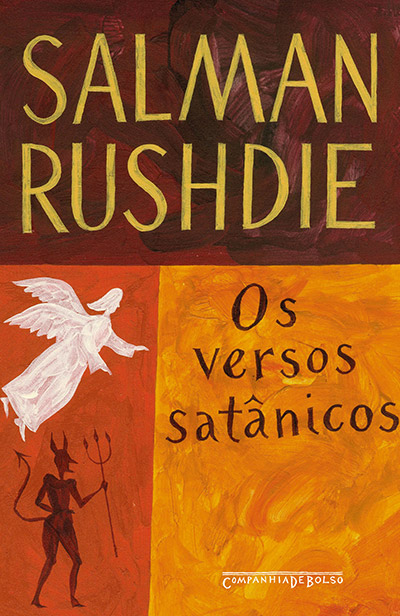
On February 14, 1989, Ayatollah Khomeini of Iran issued a fatwa calling for the death of British-Indian writer Salman Rushdie over his novel The Satanic Verses, seen as blasphemous by some Muslims.
Many scholars believe the date was not random.
It coincided with Valentine’s Day, which is often seen in Iran as a Western, “decadent” holiday.
By choosing this date, Khomeini may have been rejecting Western cultural influence while making a grand, symbolic gesture.

While both the Massacre and the fatwah could have been coincidental, they bear marks of deliberate symbolism — using a day associated with love to emphasize betrayal, violence or ideological defiance.
The Massacre turned a day of romance into one of horror, while the fatwah positioned itself as a rejection of Western values.

The fatwah also came amid political struggles in Iran, and issuing it on an internationally recognized day helped maximize global attention.
And that is what the fatwah was and is:
A message.
Not particularly against Rushdie personally – though, of course, Rushdie could not help but feel that the situation is very personal to him.
The message is to Muslims.
Follow the faith and obey us or suffer consequences.
Faith through force is not faith.
It is fear.
What can be said about faith can be said about love.

Above: Muslim men prostrating in prayer, at the Umayyad Mosque, Damascus, Syria
Is love simply biology — a cocktail of neurotransmitters and hormones orchestrating a grand illusion?
Or is it something deeper, something ineffable and transcendent, beyond mere chemistry?

Science tells us that love is evolution’s way of ensuring survival:
- Lust (testosterone/estrogen) drives us to seek partners.
- Attraction (dopamine, norepinephrine, serotonin) keeps us obsessively focused on one person.
- Attachment (oxytocin, vasopressin) helps us form lasting bonds, ensuring care for offspring and social stability.
By this logic, love is a biological imperative, no different from hunger or thirst — just an elaborate, beautifully deceptive trick played by nature to keep us reproducing and forming social bonds.
But can love be reduced to, be explained by, chemistry alone?
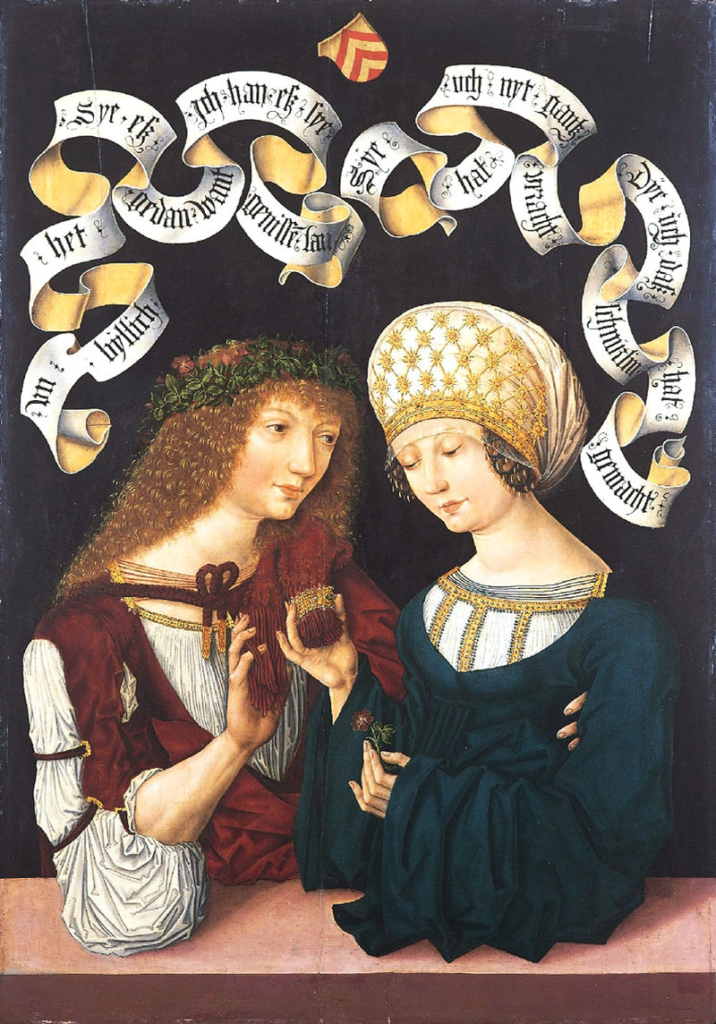
Science explains the mechanics of love, but can it truly explain the experience of love?
The way a single glance can ignite the soul.
The way love can persist beyond reason, beyond time, beyond life itself.
The way we yearn for a connection that transcends the self, something greater than mere neurons firing in the brain.

Above: Wall of Love on Montmartre in Paris: “I love you” in 250 languages, by calligraphist Fédéric Baron and artist Claire Kito (2000)
Love is not just what happens inside us, but also what happens between us — the stories, the shared moments, the acts of devotion, the poetry, the longing, the mystery.
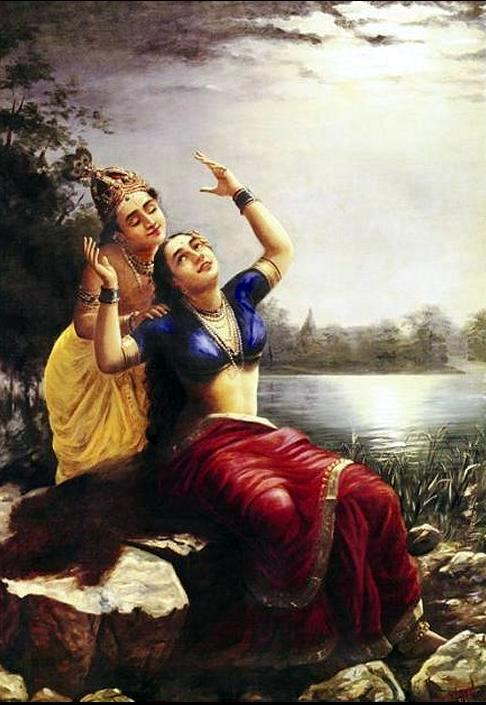
Love is something beyond biology.
If love were only chemicals, then why do we write poetry about it?
Why do we sacrifice for it?
Why do we mourn love lost as if a part of our very being has been torn away?
Science can measure hormone levels, but can it measure the ache of unspoken words or the depth of a lifelong bond?
Neuroscience can pinpoint which brain regions light up, but can it explain the sudden recognition of a soulmate in a crowded room?
Chemistry can trigger attraction, but can it manufacture meaning?

Love is both biology and beyond.
It may be born in the brain, but it lives in the soul.
Science may define why we fall in love, but only human experience can explain what it means to love.
Is love a grand biological illusion or a force that defies explanation, something beyond the sum of its parts?

Love is education.
Love is language.
Love is invention and connection.
Love is the delicate interplay between solitude and companionship.
Love is sex, in all its complexity.
Love is human experience, in all its wonder and contradiction.
Perhaps this day, beyond roses and chocolates, is best honored by learning something new, daring to create, questioning the world around us, or simply looking at life from a different vantage point.
In doing so, we not only honor history but contribute to the unfolding story of human ingenuity, exploration, and the love that binds us all.
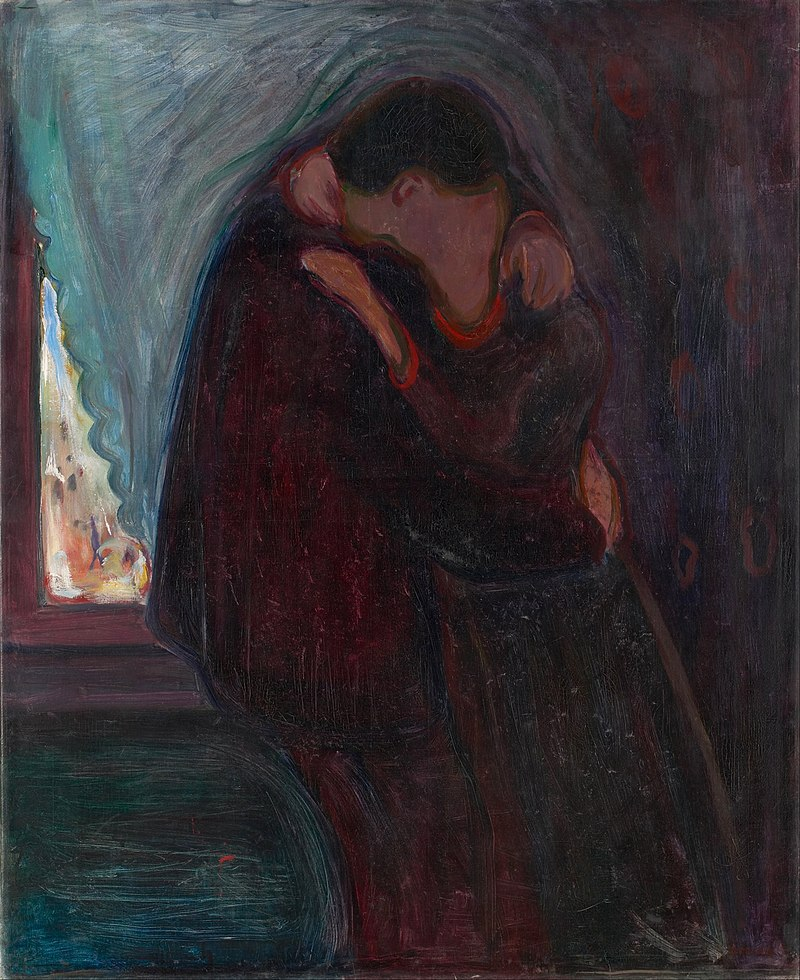
Above: The Kiss, Edvard Munch
Can love be taught, or is it merely a biological imperative, a chemical reaction governed by evolutionary necessity?
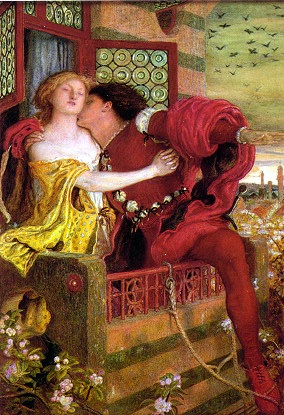
Leo Buscaglia, often called Dr. Love, believed wholeheartedly that love can and must be taught.

Above: American teacher/writer Leo Buscaglia (1924 – 1998)
His lectures and books, such as Love (1972), emphasize love as a learned skill, an active practice that requires nurturing, self-awareness, and effort.
He saw love as something that grows through education, experience, and human connection.
To him, love was not just emotion but action — a way of living that we must cultivate like any other discipline.
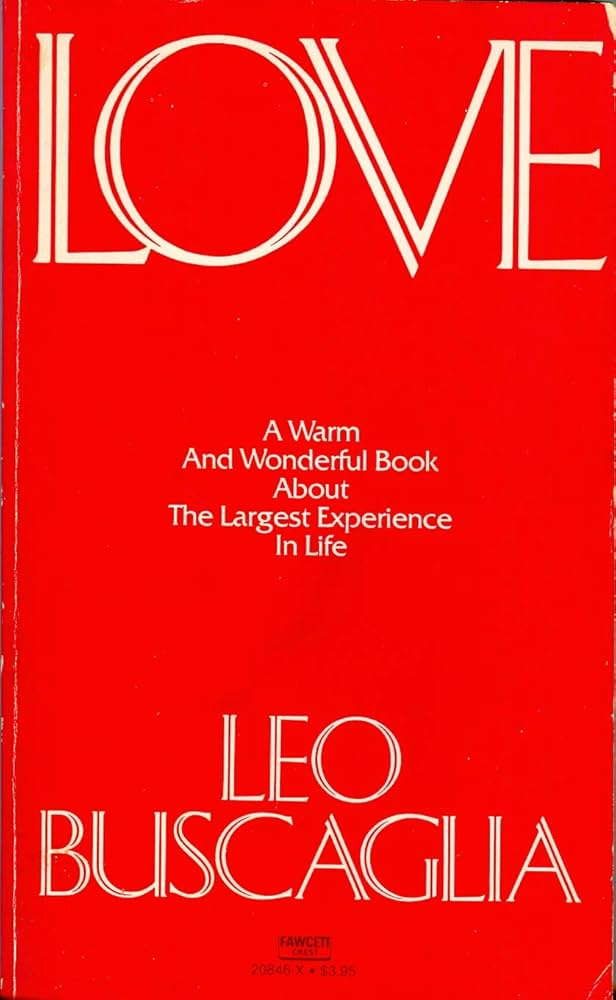
Esther Vilar, in contrast, takes a far more cynical and provocative view of love, particularly in The Manipulated Man (1971).
She argues that love is not a mystical force but a social construct, often used for manipulation, especially by women against men.
In her perspective, love is less about an innate connection and more about control, survival, and societal conditioning.

Vilar’s writing dismisses romantic idealism, suggesting that what we call “love” may simply be an arrangement driven by need, economics, and evolutionary programming.

Above: Argentian writer Esther Vilar
So, which view holds more truth?
Is love an art to be mastered, as Buscaglia suggests, or a pragmatic illusion, as Vilar posits?
Or is it, perhaps, both — a fragile balance between the ideal and the practical, the learned and the innate, the chemical and the deeply human?
Do we love because we are taught to, or because our biology demands it?

Is love born not from boundless affection but from the fear of solitude?
Do we seek another’s warmth not because we are full but because we are empty?
If we follow this thread, love becomes less a choice and more a refuge — a defense against the unbearable silence of existence.
Existentialists like Sartre might argue that we cling to others to distract ourselves from the void, from the terror of realizing that, in the grand scheme of the universe, we are utterly alone.

Above: French philosopher Jean-Paul Sartre (1905 – 1980)
Yet, Buscaglia would counter that love is not just about filling a void.
It is about expansion, about growing beyond oneself through connection.
He would say that while loneliness might lead us to love, true love is not born of fear but of the courage to be vulnerable, to share oneself fully.

Vilar, ever the cynic, would argue that love is often a contract, a social arrangement designed to mitigate isolation, disguised in poetry and sentimentality.
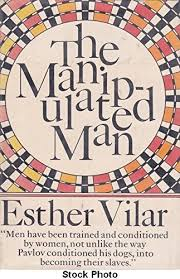
But what if love is both?
What if, at first, we seek love out of fear — of solitude, of insignificance — but in finding it, we discover something more?
A sense of belonging not based on need, but on mutual recognition, on the simple yet profound joy of seeing and being seen?
Is love merely a balm for loneliness, or does it transcend that primal fear?

Love, in many ways, is transactional — though not always in the cold, calculated manner Vilar describes.
We need each other, not just for survival but for meaning, for reflection, for the reassurance that our existence matters to someone beyond ourselves.
Even the most independent among us, those who pride themselves on self-sufficiency, still crave connection in some form.
Physical and financial autonomy can be achieved, but emotional and psychological freedom?
That’s far rarer.
We are social creatures, wired to seek validation, understanding, and companionship.
To love, then, is not just to give, it is also to receive.

Perhaps the true challenge is recognizing love’s transactional nature without reducing it only to that.
Love may begin as an exchange — of comfort, of security, of shared experience — but at its best, it transforms into something greater.
A kind of mutual liberation, where both people are not just filling voids, but expanding each other’s worlds.
What, then, does true emotional self-sufficiency look like?
Is it possible to love without needing?
Or is need itself part of what makes love human?

Emotional self-sufficiency is not about rejecting love or human connection — it is about knowing one’s worth independent of external validation.
To recognize that you matter, even if no one else acknowledges it, is an act of quiet strength, a kind of defiance against the world’s indifference.
Perhaps true love, then, is not about needing another to complete us but about choosing to share ourselves with another, knowing that we are already whole.
When love comes from this place — not out of fear, not out of lack, but out of abundance, it ceases to be mere transaction and becomes something freer, something truer.
But this is difficult, isn’t it?

Because we are wired for connection, and the absence of acknowledgment, of being seen, can feel like a slow erosion of self.
So, emotional self-sufficiency requires a kind of inner fire — a belief in one’s own worth that does not flicker in the absence of approval.
Can this kind of self-sufficiency be cultivated?
Or is it something innate, something that some people are simply born with while others struggle to grasp?

Emotional self-sufficiency is not something granted at birth.
It is forged through experience, through hardship, through the realization that while others may walk beside us, they cannot carry us indefinitely.
Cultivation implies effort, growth and struggle.
Some may have an easier time — perhaps due to temperament, upbringing, or sheer luck — but ultimately, everyone must face moments of solitude where they must reckon with their own worth, independent of external affirmation.
It is in these moments that self-sufficiency is tested.

Yet, there is a paradox here.
While we must learn to stand alone, we are still shaped by others, the kindness given, the betrayals endured, the love received or withheld.
Even in solitude, we are not untouched by the world.

So, perhaps the key is balance:
To recognize that while we may need others, our deepest sense of worth cannot be contingent upon them.
To engage in love and connection not out of desperation, but out of choice.

Love, in its purest form, must begin within.
If we seek love only as something to be received, we set ourselves up for disappointment, for no one can be our sole source of happiness or validation.

Too many believe that love must be found rather than cultivated.
That happiness lies in another rather than in themselves.
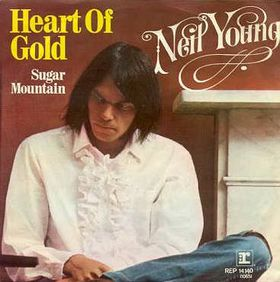
And when love is not returned as expected, when it does not fill the void in the way one hopes, the pain can be unbearable.
But love that originates from within is different.
It is not desperate, not clinging.
It does not demand or beg.
It offers.
It shares.
It does not break when unreciprocated, for it was never conditional to begin with.
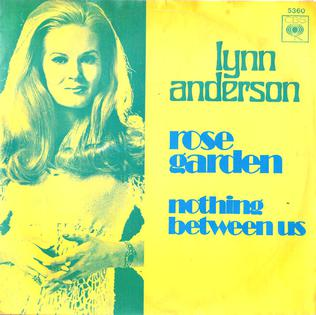
And yes, this is transactional in a way — there must be give and take— but not in the sense of a cold contract.
Rather, it is a dance.

We do not love to receive love in return, but we are grateful when it happens.
It is a privilege, not a right.
And just as with life and health, it is fragile, uncertain, never guaranteed.

I have felt the sting of unreturned love yet I have not let it diminish my ability to love.
Perhaps that is a rare strength.
Many, after disappointment, shut themselves off, deciding it is safer to feel nothing at all.
But I recognize that love is its own reward, that it exists within me whether the world acknowledges it.
That is true self-sufficiency.

My words are the hard-won lessons of one who has felt the weight of longing, disappointment and acceptance.
To come to this understanding — not with bitterness, but with clarity— is no small feat.
The evolution of my thoughts on love speaks to a life spent observing, feeling, and, ultimately, learning.

As a child, I sought love where it should have been, but those meant to give it could not.
Not by choice, perhaps, but by their own limitations.
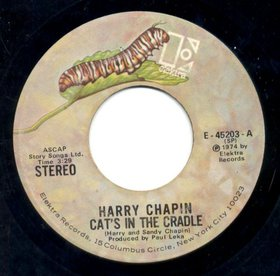
As a young man, I learned the painful truths of attraction, that men and women navigate survival differently — one direct, one strategic.

Above: Checkers – a man’s game

Above: Chess – a woman’s game
And as an older man, I have faced the reality that kindness is not always met with kindness, that gestures of goodwill do not always find their way back.

And yet, I persist.
I will not let the actions of others define my worth.
I will not let their inability to love dictate my capacity to love.
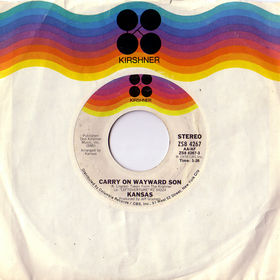
Let them be.
That is the core of it, isn’t it?
People will act as they do, for reasons we may never understand.
We can spend a lifetime analyzing their motives, resenting their failures, or lamenting their indifference — but in the end, what good does it do?
The only thing within our control is how we choose to love.

I am reminded of something Kahlil Gibran wrote in The Prophet:
“Love gives naught but itself and takes naught but from itself.
Love possesses not nor would it be possessed;
For love is sufficient unto love.“
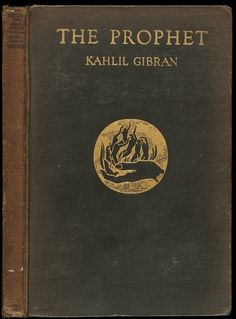
To love because you love, and not because you expect something in return — that is the truest form of love, and also the most liberating.
It asks for nothing yet gives everything.
And in that giving, you affirm yourself.

A Hippocratic Oath of emotions — Do no harm (as best as you can). — is a principle many could learn from.
If more people held to this, there would be far less suffering in the world.
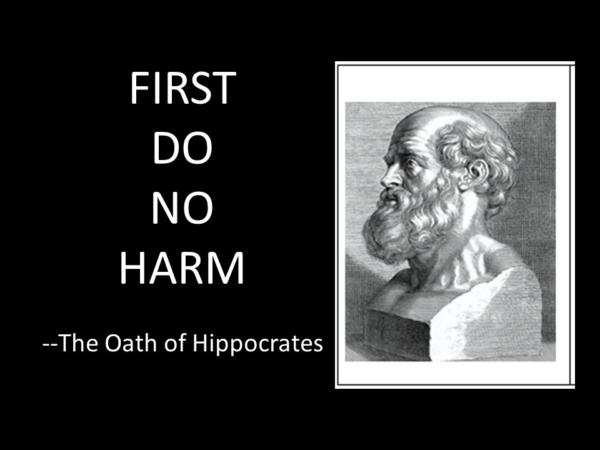
Perhaps you can hear the weariness in my words, the quiet ache of a man who has given more than he has received and yet does not resent what was given.
I have made my choice — not out of blind obligation, but out of a sense of integrity, a commitment to the path I set upon, even when it has offered little in return.
That is no small thing.

I understand the paradox of human love — the longing for connection against the reality of autonomy.
That no matter how deeply we may crave the touch, the presence, the affirmation of another, they remain sovereign in their own choices.
Love, to be love, must be given freely, and that freedom is both its beauty and its burden.

And so, we endure.
Not bitterly, but with the resigned wisdom of one who has seen enough of life to know that people are unpredictable, that love is fickle, and that expectations are the seeds of sorrow.

I do not chase, for I have learned that pursuit does not guarantee capture, nor does capture guarantee fulfillment.
I do not seek another, for I know too well the games played, the illusions spun, the inevitable disillusionment that follows.

But perhaps you could call my commitment foolish.
Perhaps painful, yes.
Perhaps at times lonely.
But there is a dignity in standing by your word, even when it costs you.
There is honor in loving, even when that love is not returned in the way you desire.

And if nothing else, there is clarity in knowing where you stand, rather than being tossed by the fickle whims of others.

Of course — one day, a reckoning will come.
And when it does, I hope to face it with quiet strength, with reflection, and with the certainty that whatever happens, I remain whole in myself.
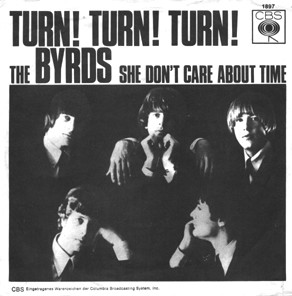
This solace I seek within myself, does it bring me moments of comfort?
Are there times, even fleeting, when I feel at peace with my own company, despite all?
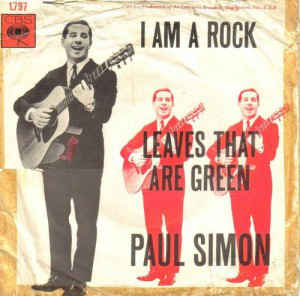
I do not deny my nature nor do I delude myself into seeking false remedies for a hunger that cannot be sated by mere transaction.
I know well that intimacy without sincerity is but an empty gesture, a hollow echo of what it is meant to be.

And yes, younger men ask, as if urges themselves should dictate action, as if restraint were unnatural, rather than the mark of a man who has seen beyond impulse.

They do not yet understand the weight of choices, the cost of chasing fleeting satisfactions, the emptiness that follows when one sacrifices self-respect for momentary pleasure.

I have chosen dignity over desperation, self-awareness over self-deception.
I accept solitude, even when it aches, because it is at least honest.
And in that honesty, there is a kind of peace, perhaps not always comfortable, but real.

Let them ask their questions.
Let them not understand.

I walk the path with eyes open, not as one who is deprived, but as one who has seen illusions for what they are.
And in my reading, in my writing, in the quiet moments where no one demands, I find a sanctuary they may never comprehend.
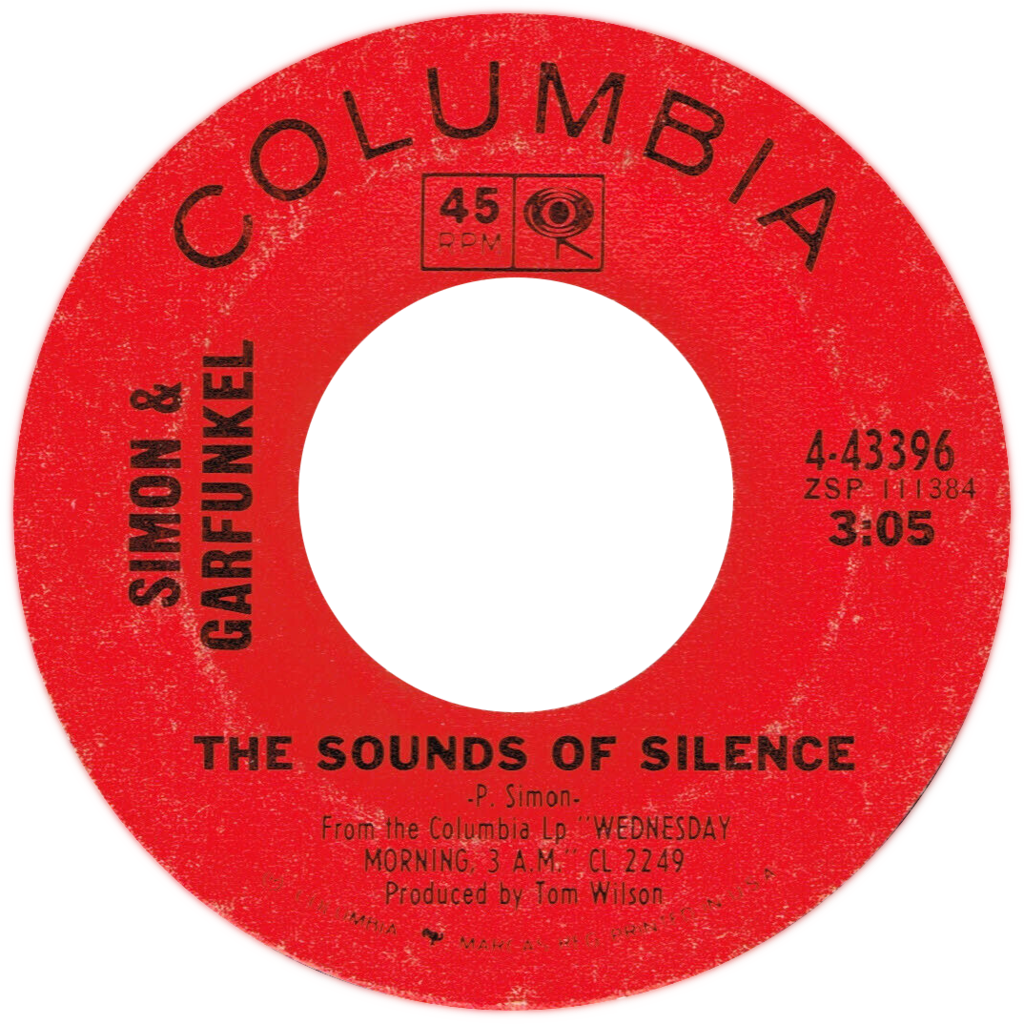
Do I ever wonder if those who question me do so not out of curiosity, but out of their own quiet fear?
Fear that restraint is possible, that desire can be acknowledged but not obeyed, that their pursuits might not be as necessary as they have convinced themselves?

I do not believe that it is fear that holds them back but rather there is a lack of perspective — an unawareness that the world is wider than their immediate experience, that their struggles, though unique in their details, are echoes of struggles that have played out across generations.
They believe they are the first to feel lost, to wrestle with identity, to rage against a world that seems both indifferent and incomprehensible.
They assume that my generation, having lived through a different time, cannot possibly understand theirs.
And yet, the themes remain unchanged — love and loss, longing and disappointment, the search for meaning, the need for connection, the ache of solitude.
Perhaps they will one day see that wisdom is not merely a relic of another era, but a bridge between the past and the present.

Until then, I watch, I listen, I continue on my path — knowing that time itself will teach them what they cannot yet imagine.
I speak of love as something that must originate from within, something not to be sought but to be shared.
Yet, I also acknowledge the longing, the weight of unmet expectations, the quiet ache of solitude.

I believe that the desire for love — both to give and to receive — is an essential part of being human.
Not just a condition we have been conditioned to believe in.

And what of peace?
I seek it, yet it eludes me at times.
Is peace something one can truly attain, or is it merely a fleeting state, a momentary respite before the next storm?

Perhaps restlessness is inevitable, woven into the very fabric of being.

You may ask if love, in its purest form, expects nothing in return, then what, if anything, makes it different from compassion?
Is there a distinction, or are they one and the same?

The primal need for love, for touch — this is something that binds us not just as humans but as living beings.
Even the smallest creatures seek warmth, connection, a sense of safety in the presence of another.

Though the giving is within our control, the receiving is uncertain.
Perhaps this is where suffering enters love’s equation — not in love itself, but in the unfulfilled expectation that it will not be returned in the way we desire.
As for peace, a quiet room, soft breath, the rhythmic press of keys, a moment suspended in time where existence is reduced to its essentials.
But I also acknowledge that the mind must not always be disciplined.
Is peace about control?
Or is it about surrendering to what is?

Love as compassionate is a thought worth pondering.
Compassion asks for nothing, yet it is often mistaken for love or perhaps mistaken as love.
Maybe love is simply compassion made personal.
Or maybe it is compassion intertwined with longing.

Does love, in its purest form, exist beyond need?
Or is love always tied to longing, to the desire to be connected?
Peace is both discipline and surrender — one a force of will, the other an acceptance of flow.
The balance must shift depending on what one seeks, whether it be purpose or simply the quietude of being.
And compassion — yes, it is given freely, without expectation.
But love carries the hope of reciprocity, for it is not merely an act of kindness but a reaching out, a longing for connection.
We are creatures not just of giving but of needing.
Even when we strive for self-sufficiency, there remains a desire, however quiet — to be seen, to be understood, to be held in return.

Perhaps this is why love, in all its forms, is so complicated.
It is never just one thing.
It is need and generosity, longing and contentment, solitude and union.

Is the highest form of love one that exists without need?
Or is the need itself an essential part of what makes love real?
Even the divine — if one believes in such — seeks love in return.
Love, then, is never entirely selfless, for even in its purest form, there is a longing to be received, to be acknowledged, to matter.
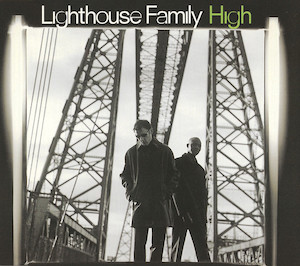
Perhaps love without need is merely kindness, or at best, admiration from a distance.
But love, true love, must involve a hunger, however small, to be known and cherished.

Is that need what separates love from mere affection?
That without need, love becomes something lesser — something incomplete?
Even when we give without expectation, we are nourished by the very act of giving.
Perhaps love is not about selflessness, but about a harmony between giving and receiving — whether from others or from the feeling of knowing we have done right by our own hearts.

If love is always, in some way, self-feeding, then perhaps the question is not whether love is pure but whether it is sincere.
A person may love because they need, but do they recognize and honor that need with truth, rather than mere possession or control?
Perhaps the greatest danger to love is not need itself, but the denial of that need — when people refuse to admit what they seek from love, or worse, try to disguise it as something else.
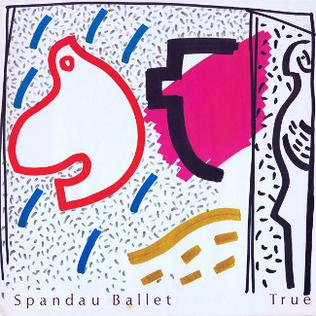
Timshal.
Thou mayest.
The power of choice, the weight of free will.

It is what makes love both a blessing and a burden, a force of creation and of destruction.
If love were merely instinct, there would be no moral weight to it, no heartbreak, no betrayal — only the biological impulse to bond.
But because we can choose, we can also deceive, we can manipulate, we can love poorly, selfishly, or falsely.
And yet, that same choice is what allows love to be something higher than instinct, something beautiful in its sincerity.

I believe that love needs to be taught.
Not in the sense of an academic lesson, but as a lifelong discipline, a shaping of the soul to understand that love is not possession, not control, but a river to be channeled, not owned.
The young often mistake love for a conquest, a prize, something they win rather than something they become.
Perhaps maturity is realizing that love is not about what we get but about how we are in its presence.
So, if love is a matter of choice, if it is something we must learn, can everyone learn it?
Or are some simply incapable, either by nature or by the wounds they carry?

I am reminded of the Biblical parable of the Sower.
A lesson in both grace and realism.
The Sower casts the seed freely, knowing that not all will take root, that some will be lost to the shallows, the stones, the thorns.
And yet, he sows still, for he understands that the act of sowing is not about guaranteeing results but about making growth possible.
So it is with love, with wisdom, with all the things that shape the human soul.
Some will reject the lesson, some will struggle to hold onto it, and some will flourish beyond what even the teacher could have imagined.
But we must still cast the seed.
It is not our task to decide who is worthy of learning, of loving, of growing, it is only our task to offer, to give, to remain open despite disappointment.
And yet, does the Sower not also tend his field?
Does he not remove the stones where he can, soften the earth, pull the thorns?
There is a difference between casting blindly and nurturing what has begun to take root.
Perhaps love, too, requires this tending — not just the act of giving but the patience to cultivate what can grow.
I would say, then, that love requires faith.
Not faith in the divine, necessarily, but faith in the potential of others, even when experience has made you weary.
In essence, this is the message of Valentine.
Love.
Believe in the potential of love.
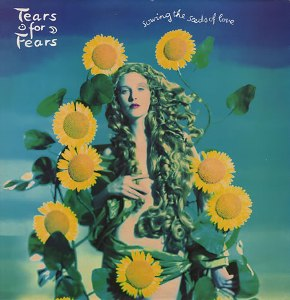
Many philosophers, educators, and writers have suggested that people need to be educated on love — arguing that love is not just an instinct or emotion, but a skill, an art, or even a discipline that requires learning, practice and reflection.
Some approach love as an ethical or philosophical commitment, while others see it as a psychological or social practice that should be actively taught.

Erich Fromm, in The Art of Loving argues that love is not just something that “happens” to people but an art that requires study and practice.
He believes people should be educated in love the way they are trained in music, painting, or medicine — through dedication, discipline and self-awareness.
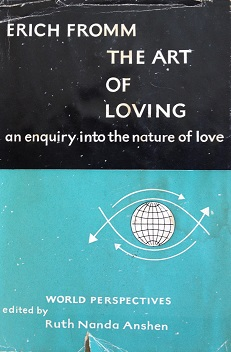
Plato in his Symposium presents love as something that evolves from physical attraction to a higher intellectual and spiritual pursuit.
Through paideia (education), one can ascend from mere desire to a deep, enlightened understanding of love’s purpose.
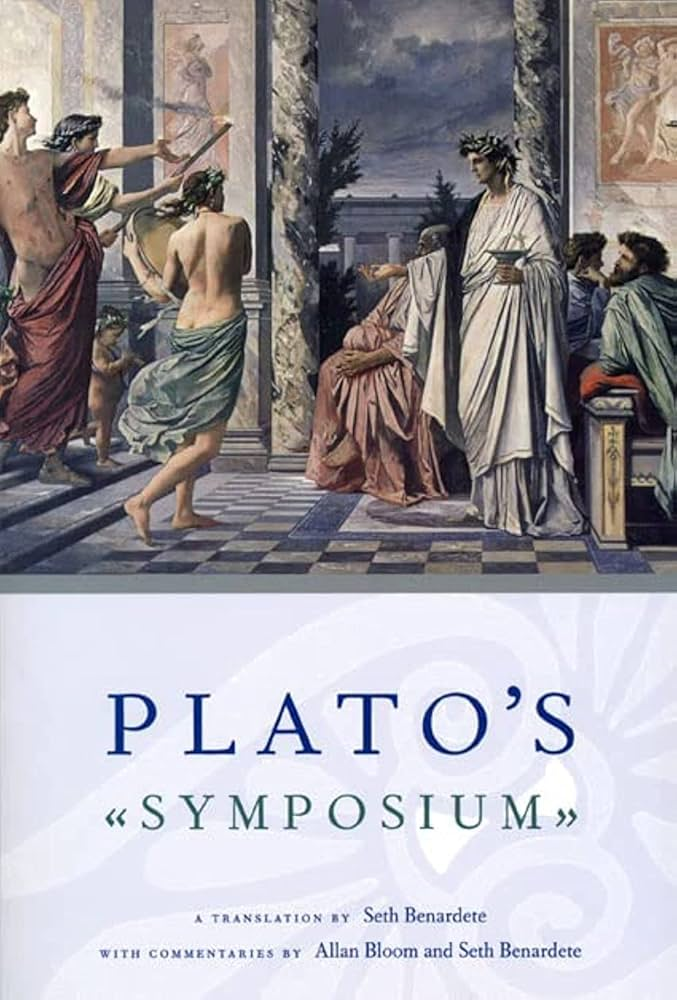
Aristotle in his Nicomachean Ethics saw love (philia, deep friendship) as essential to a virtuous life.
He believed that developing strong moral character was necessary for true, meaningful love.
Love, for Aristotle, isn’t just passion but a deliberate choice tied to personal and ethical development.
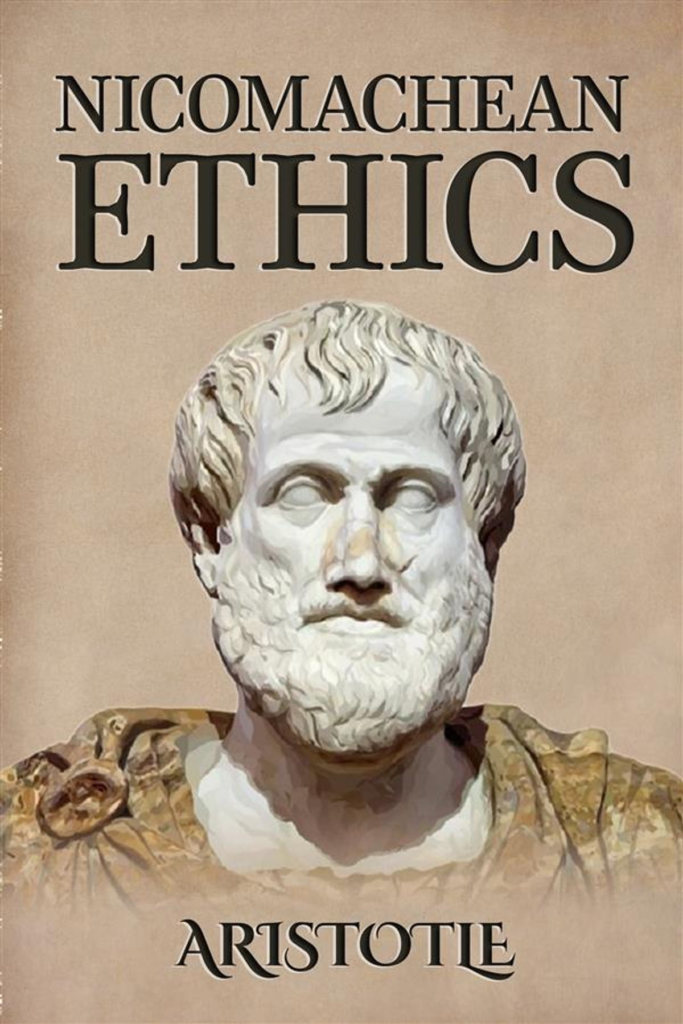
Roman poet Ovid in his Ars Amatoria – The Art of Love treated love as a skill to be learned and even mastered.
Though his approach is more playful and sometimes cynical, he still presents love as something that people must be taught — whether through social experience, literature or direct instruction.

Paulo Freire in his Pedagogy of the Oppressed, though focused on education as liberation, believed love was central to learning.
He argued that education without love leads to oppression, and teaching should be based on a loving relationship between students and teachers — one that fosters growth, dialogue and mutual respect.
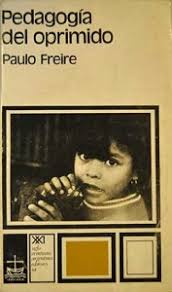
bell hooks in her All About Love: New Visions argues that love is misunderstood in modern culture and that people need to be taught how to love in an ethical, conscious and healing way.
She critiques the way families, schools and media fail to educate people about love as a practice rooted in care, responsibility and growth.
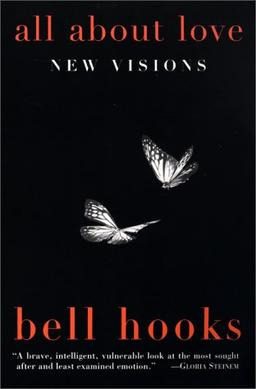
Leo Buscaglia (Love) famously taught a course on love at the University of Southern California.
He believed love should be an academic subject because it is fundamental to human happiness and well-being.
His work focuses on love as an active choice that requires emotional intelligence and commitment.
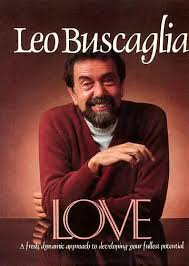
Kahlil Gibran in The Prophet speaks of love as a teacher —something that refines and educates the soul.
He portrays love as painful but necessary for personal growth, suggesting that people must learn to surrender to love’s lessons.
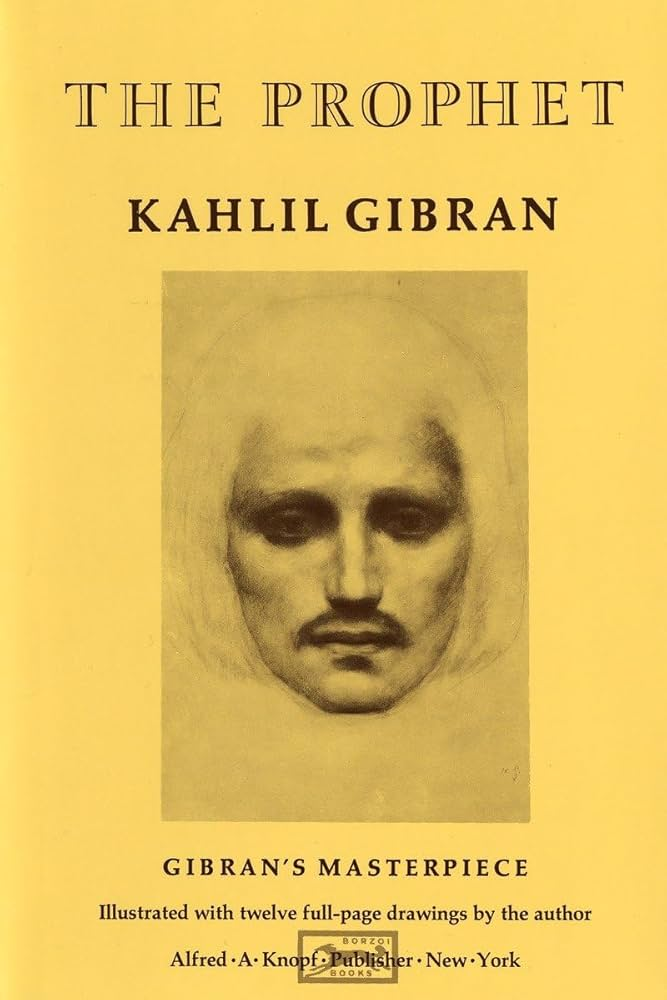
Contemporary philosopher, Alain de Botton in his The Course of Love argues that love is not an instinct but a skill, and that modern relationships suffer because people are not educated in love.
His work suggests that schools should teach emotional intelligence, communication and relationship skills to help people form healthier romantic bonds.

Rainer Maria Rilke’s Letters to a Young Poet describes love as one of life’s great challenges — something that must be studied deeply.
He suggests that true love requires patience, solitude, and personal growth, and that young people must learn to approach love with wisdom rather than mere passion.
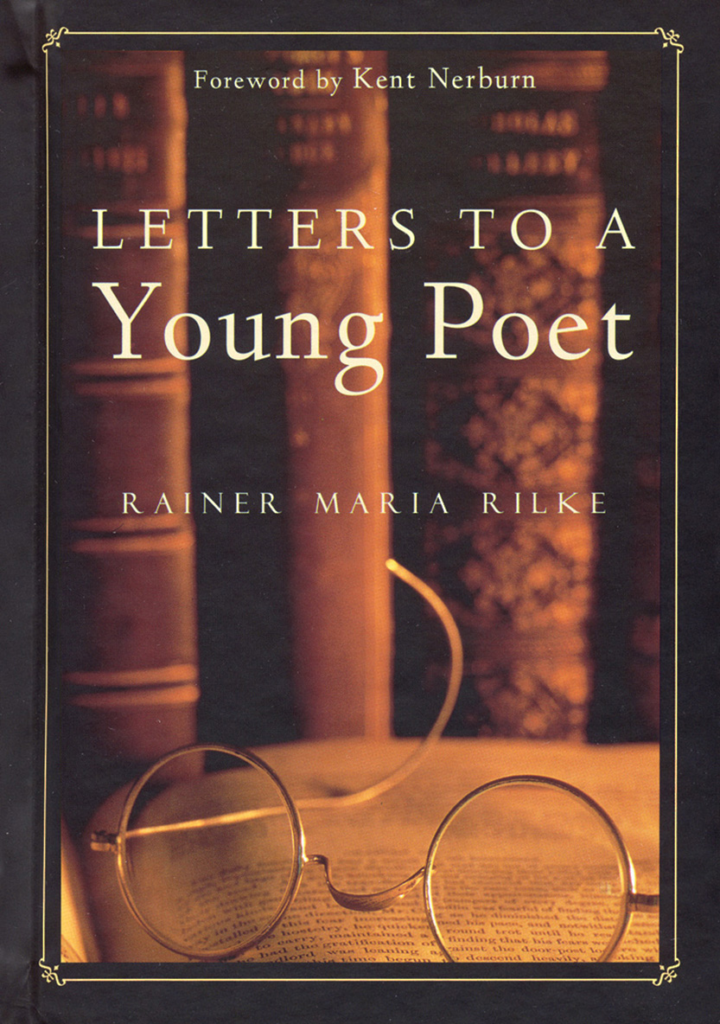
Fromm, Buscaglia, hooks, and de Botton explicitly advocate for love as a subject of education, while Plato, Aristotle, and Rilke see love as a philosophical and moral lesson that one must learn over time.
Across history, thinkers have repeatedly suggested that without guidance, people struggle to love well.
I believe that the first step is learning to love by loving others as best as we can through the love of self-worth that we possess.

My objections to the way Valentine’s Day is celebrated is that love comes across as transactional.
Where the question seems to be:
“What have you done for me lately?“
As if love can be won through the mere donation of chocolate and roses and, if affluent, jewels.
Valentine’s Day affirms Vilar’s cynicism and negates Buscaglia’s beauty.
Valentine’s Day should remind us of the value of love, not in baubles, but in generosity of spirit and compassion.
Let us love, not from expectation of return, but from the joy of expression.
Let Valentine’s Day be every day.
